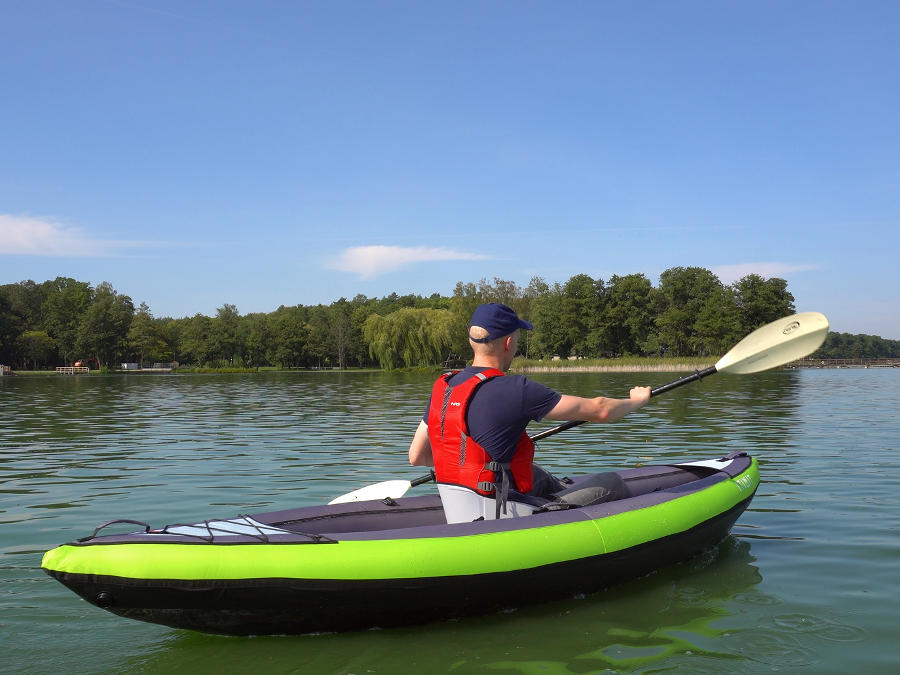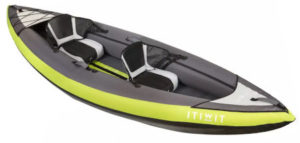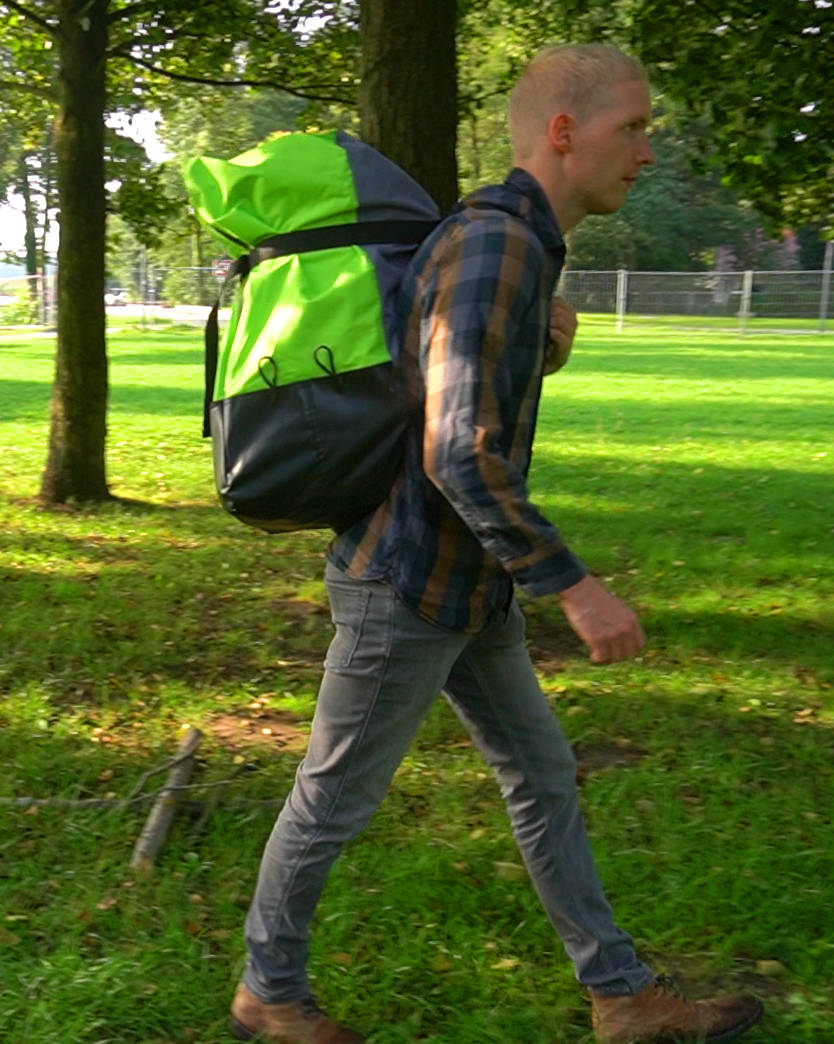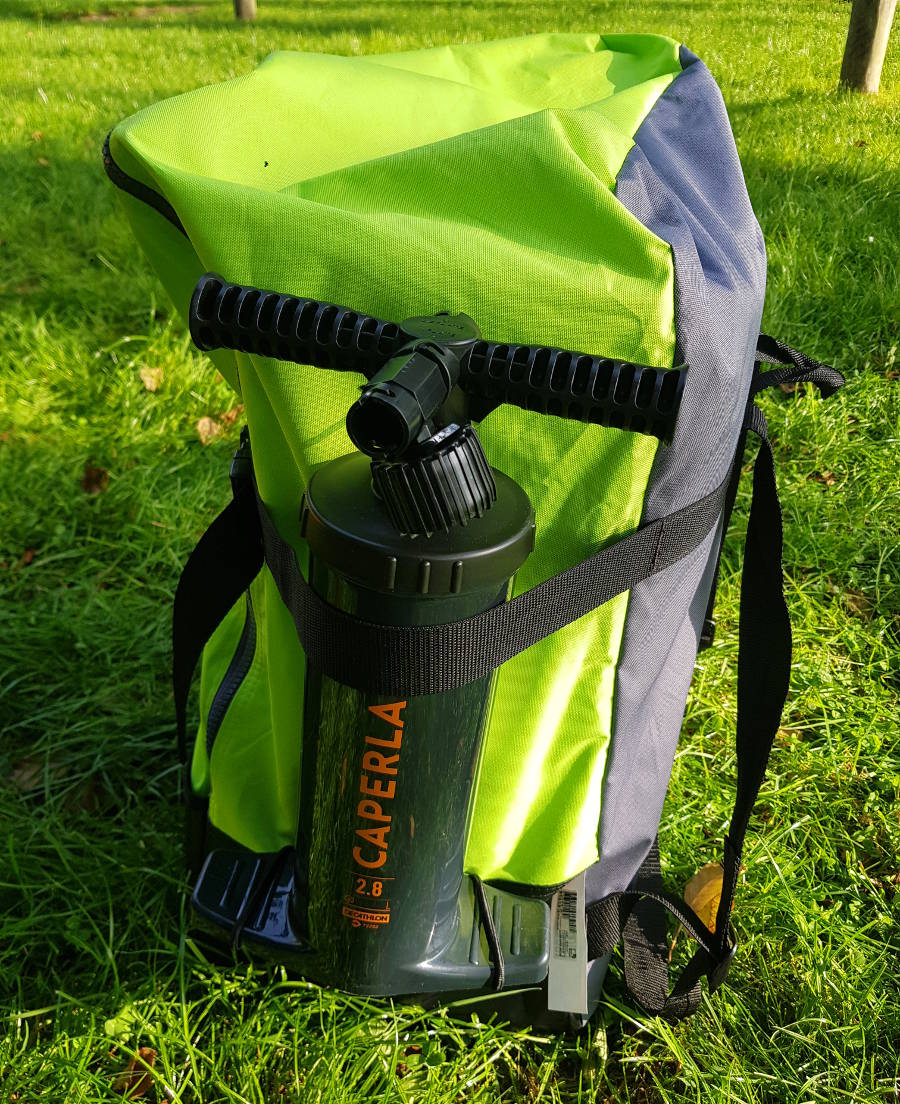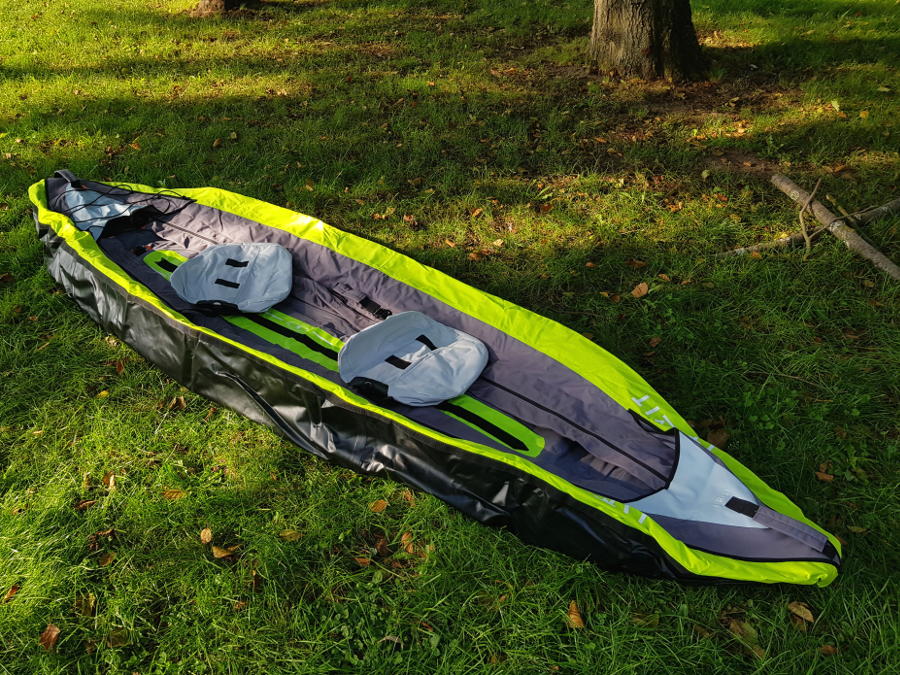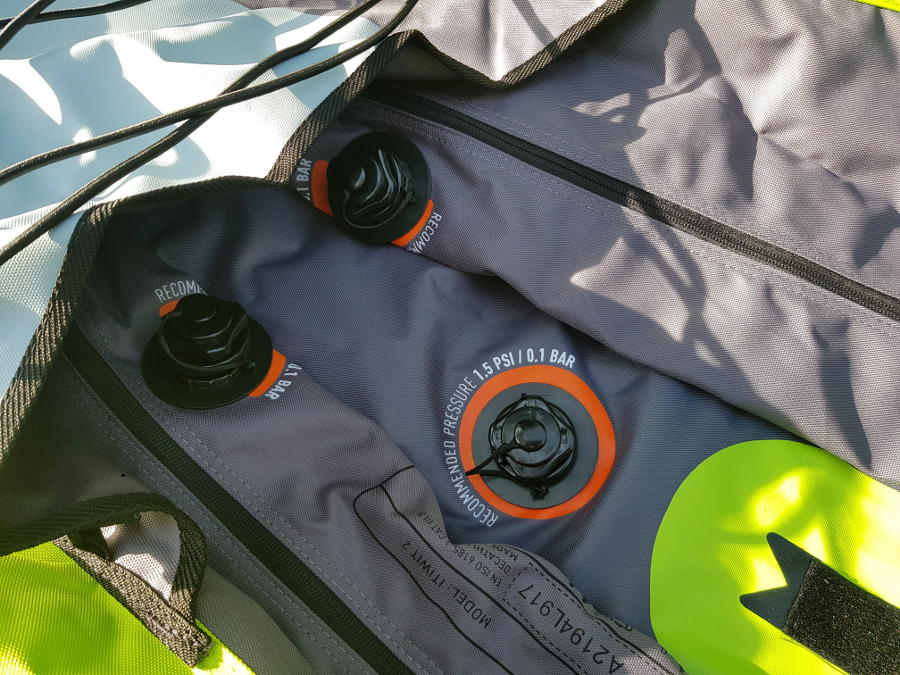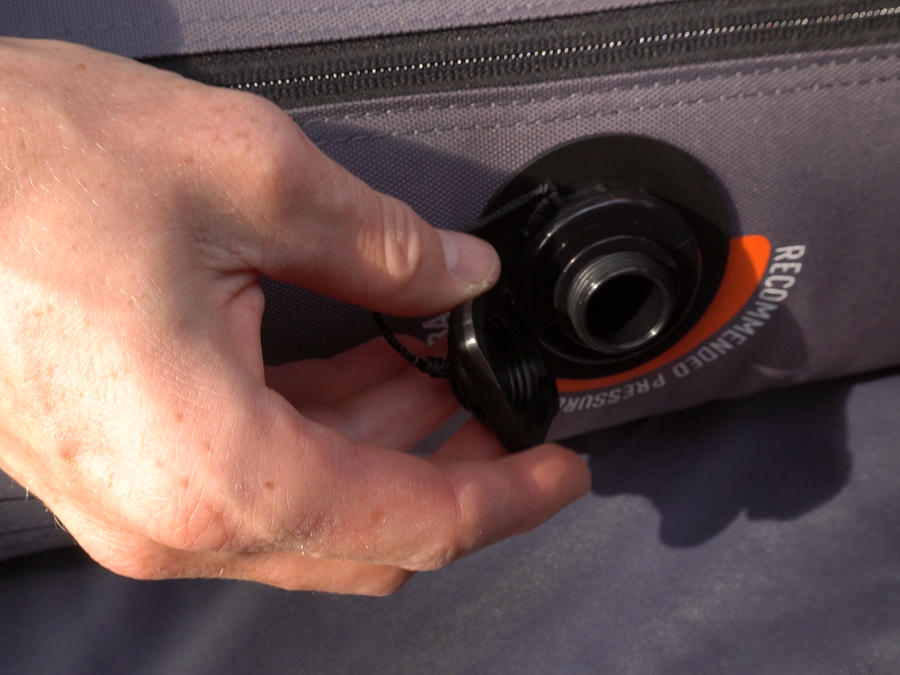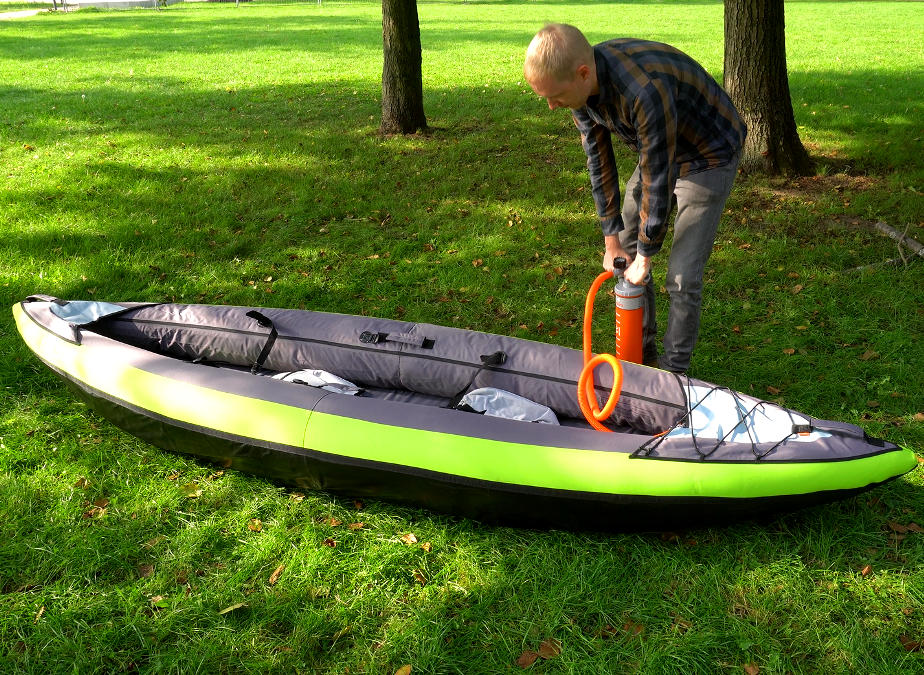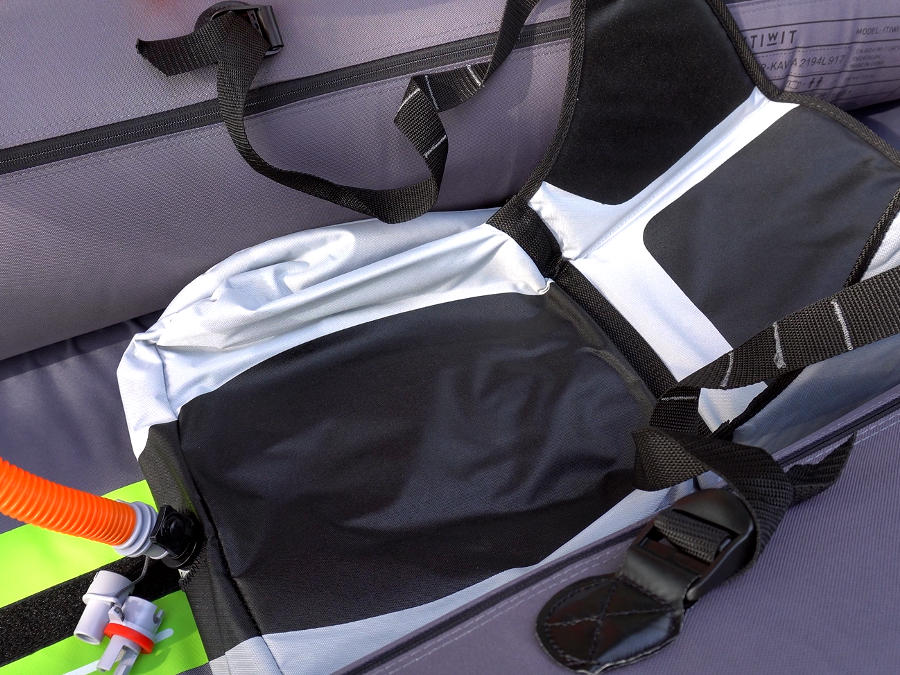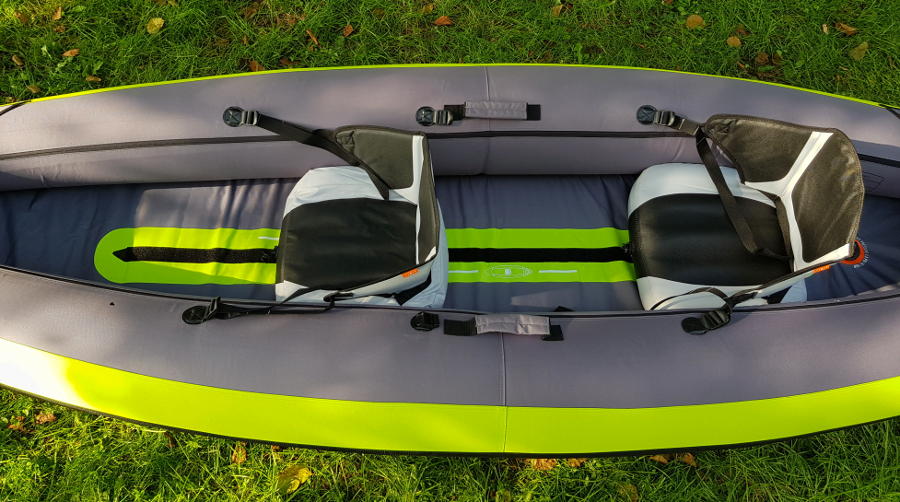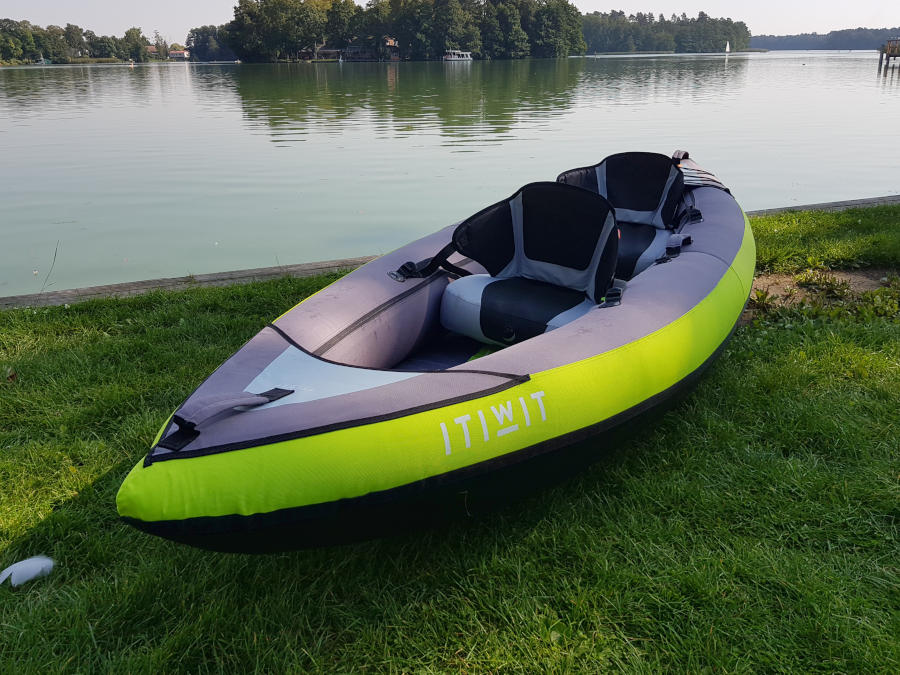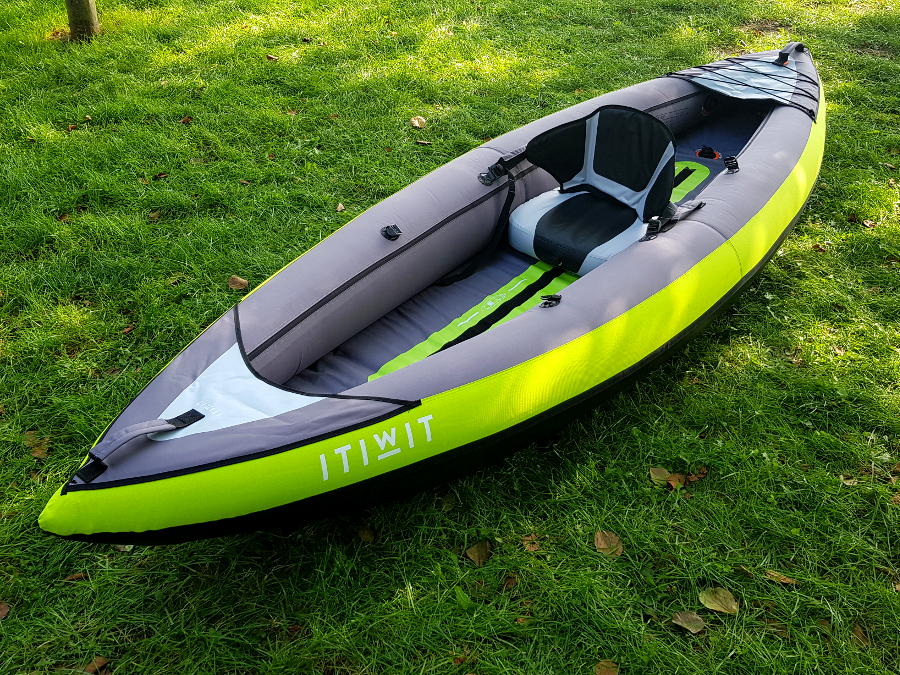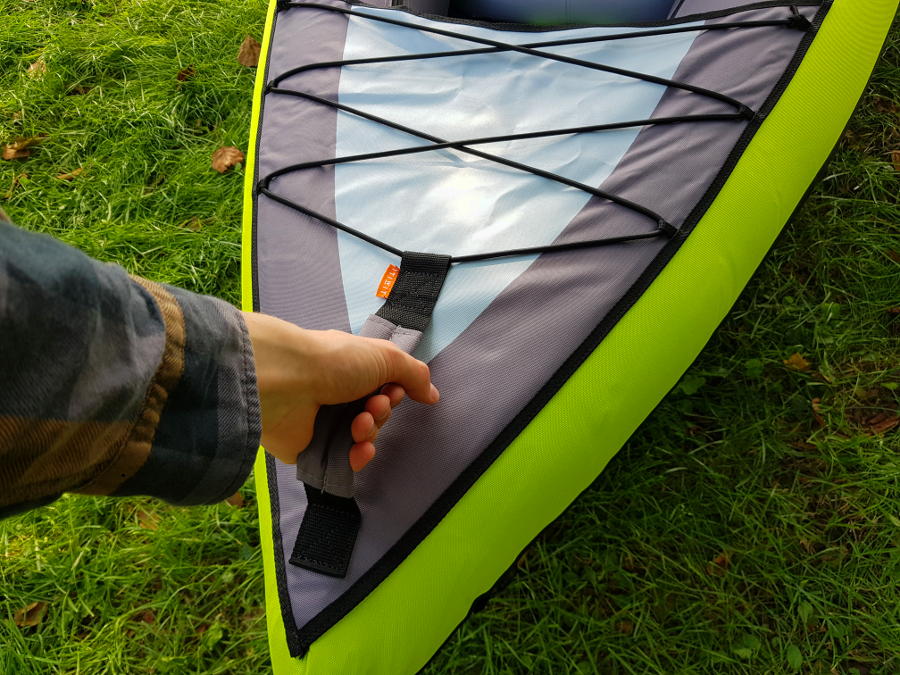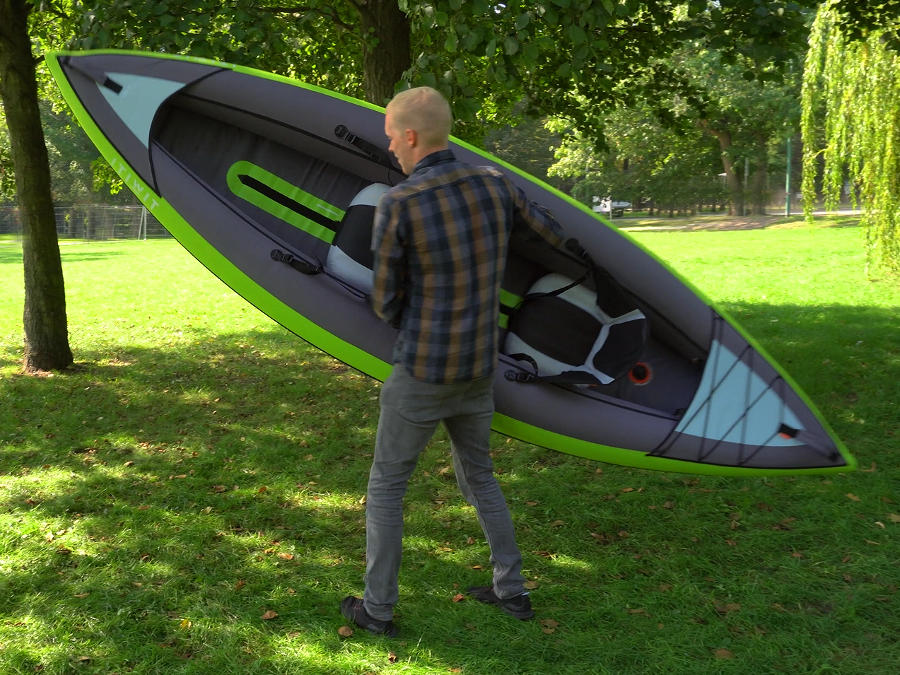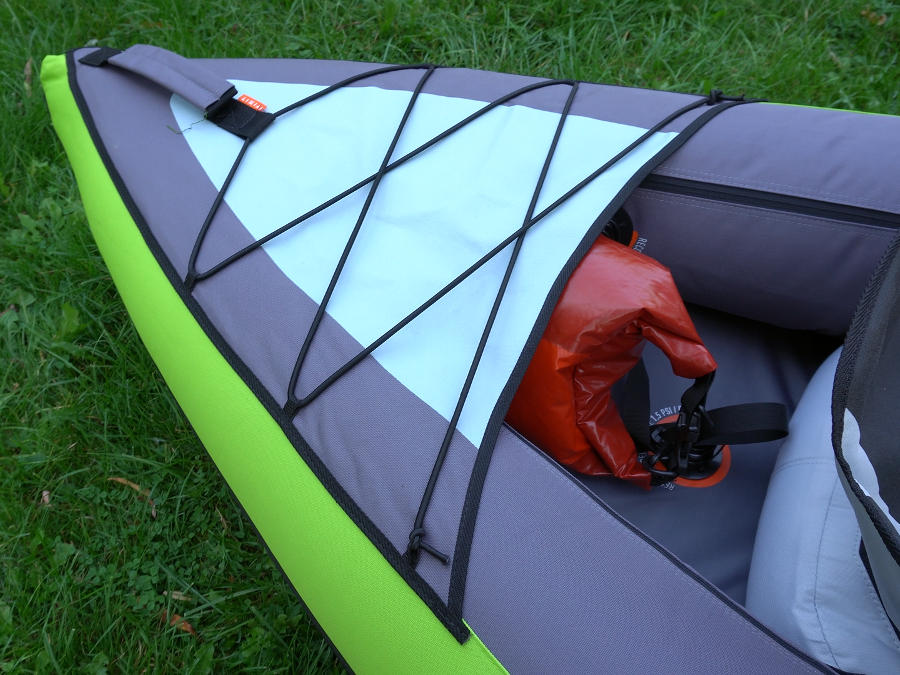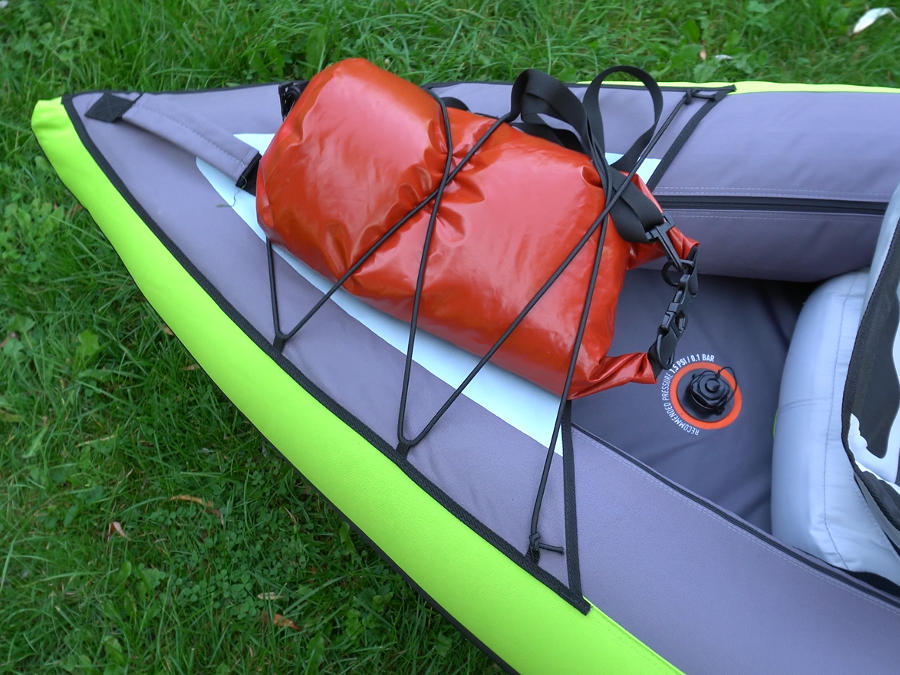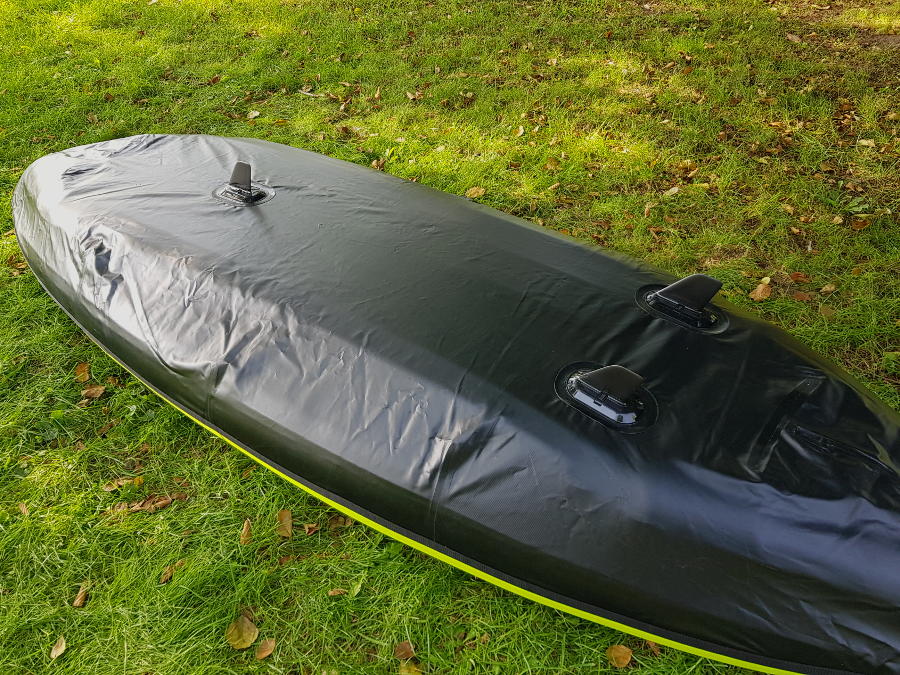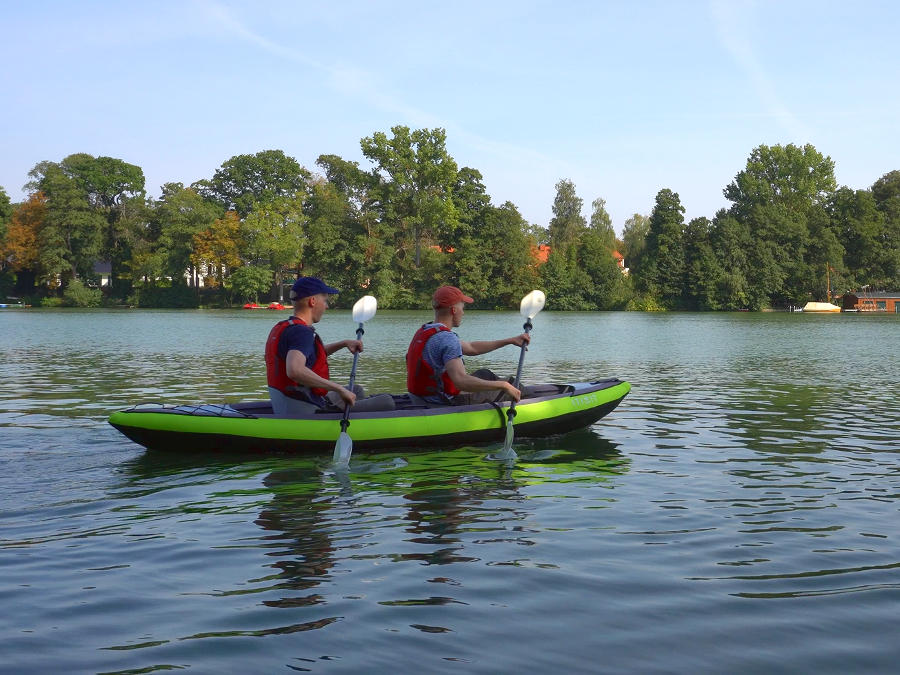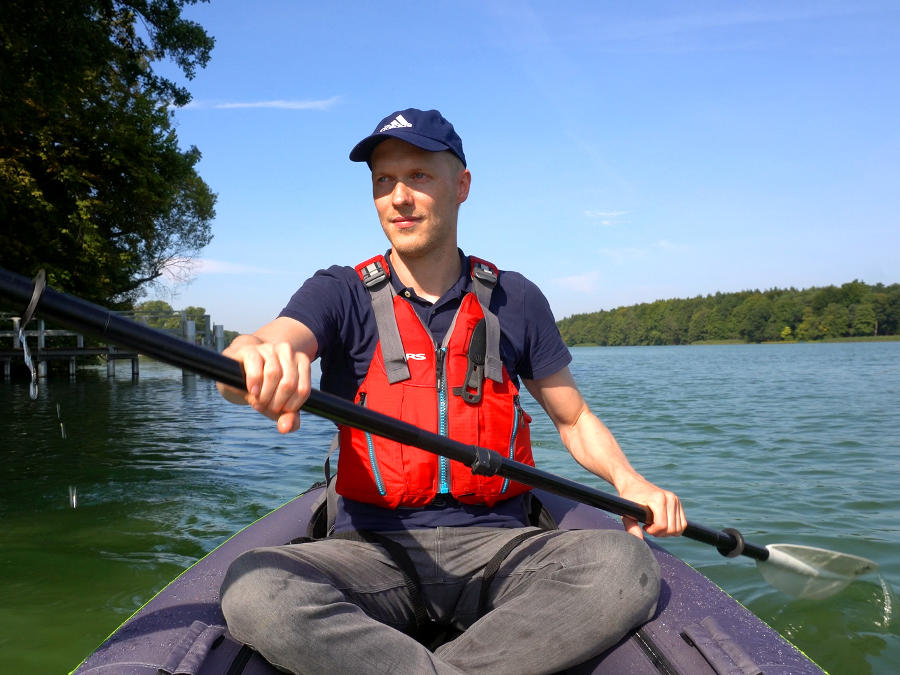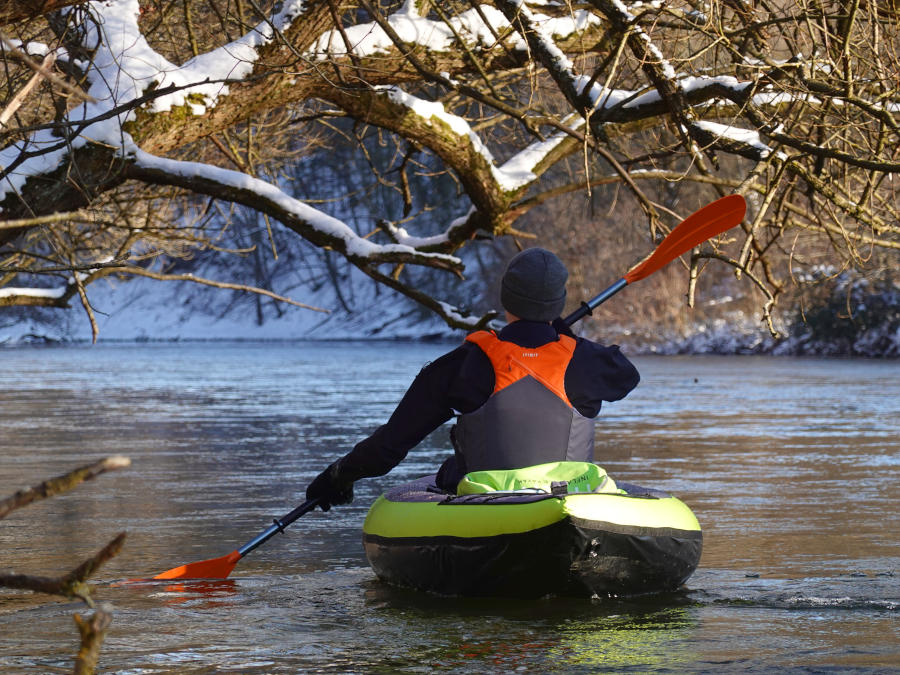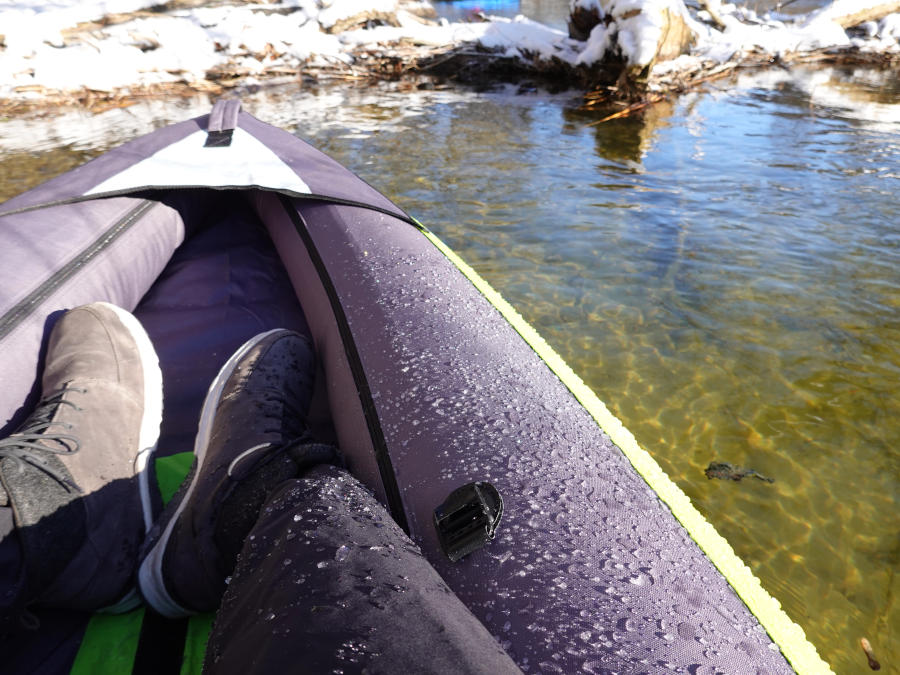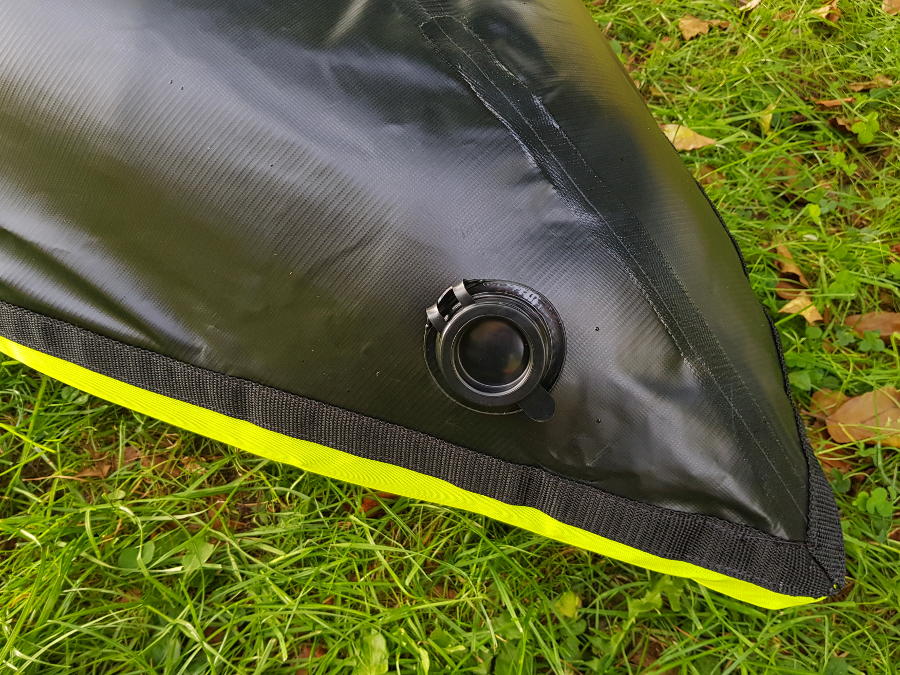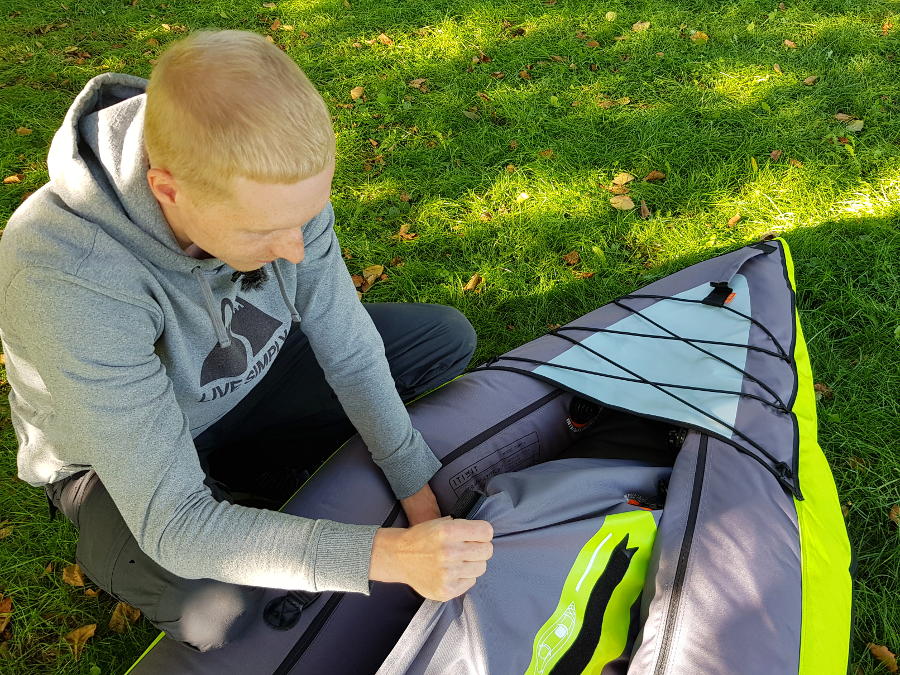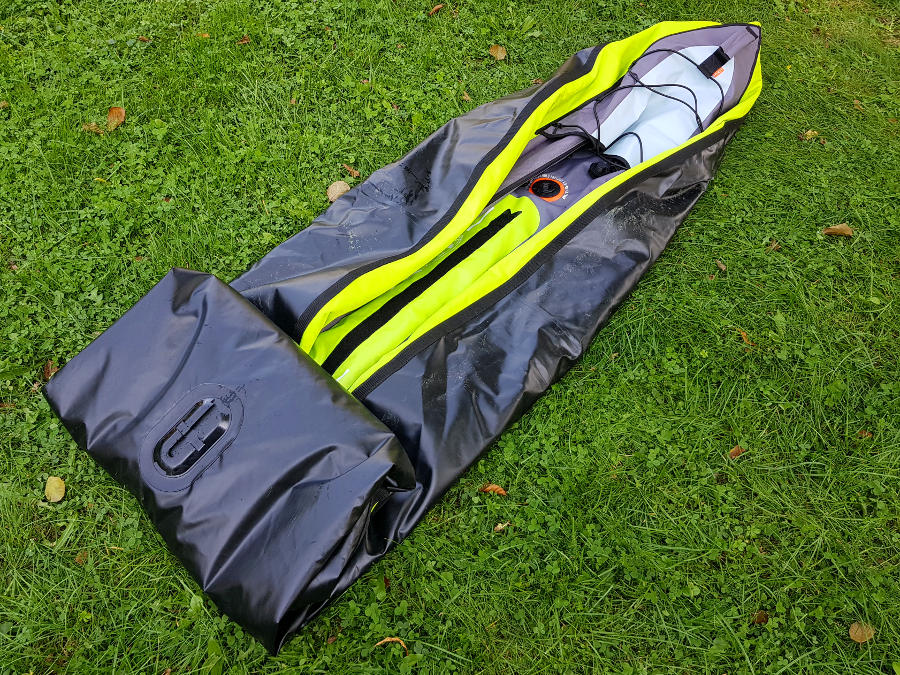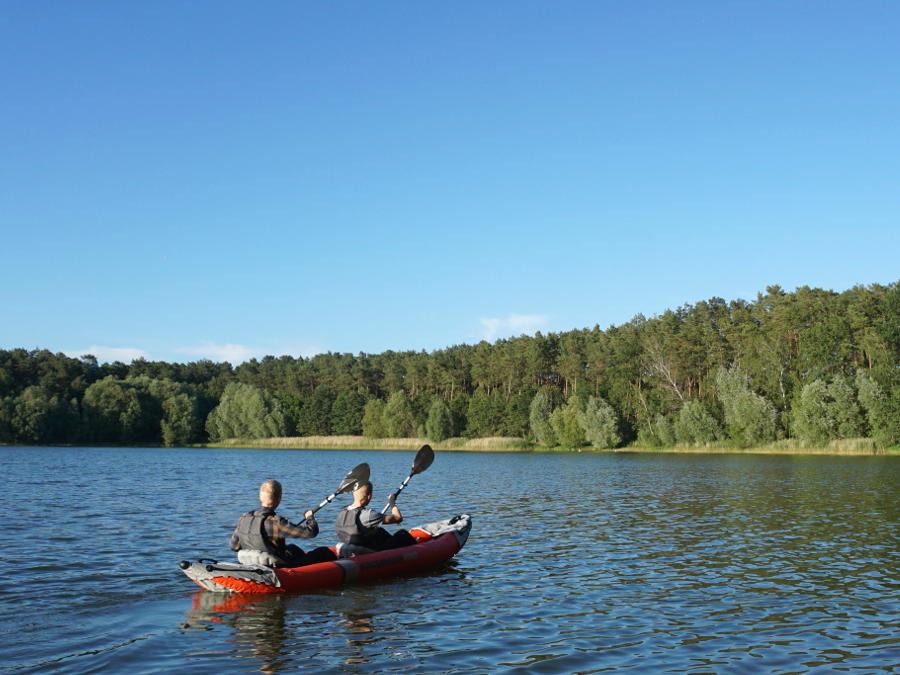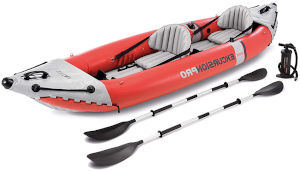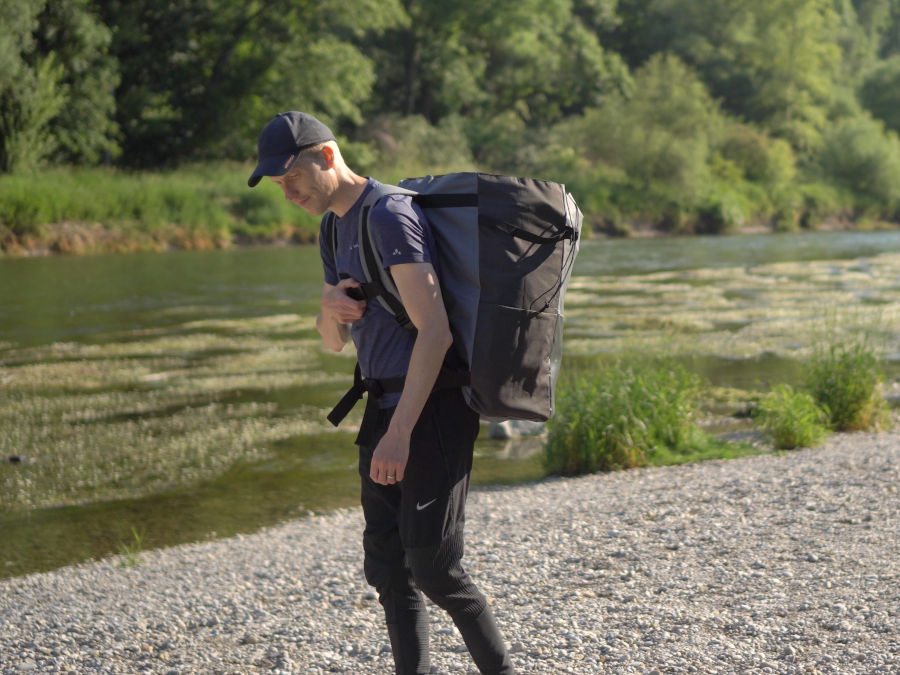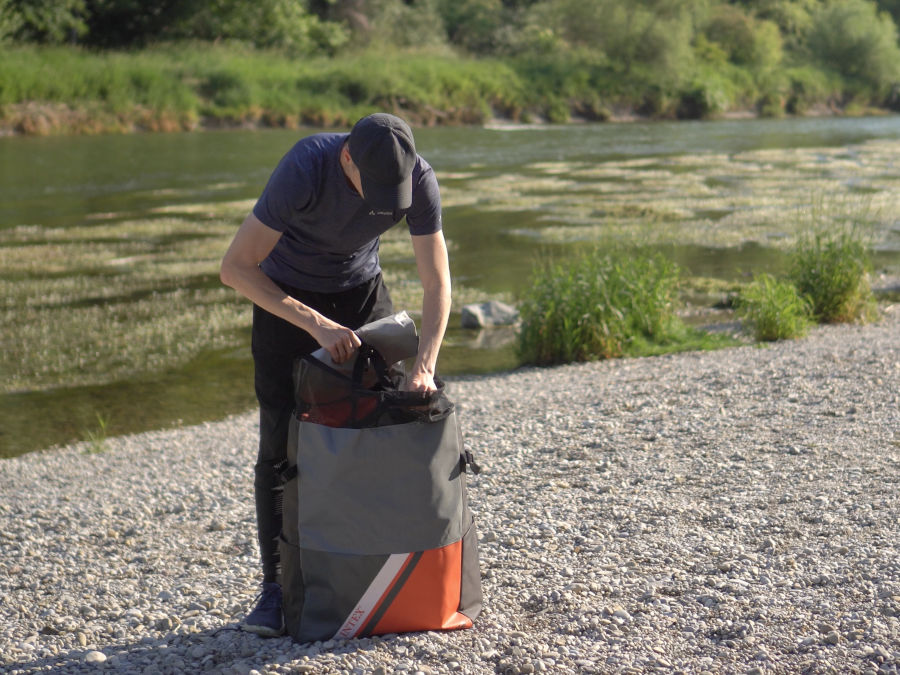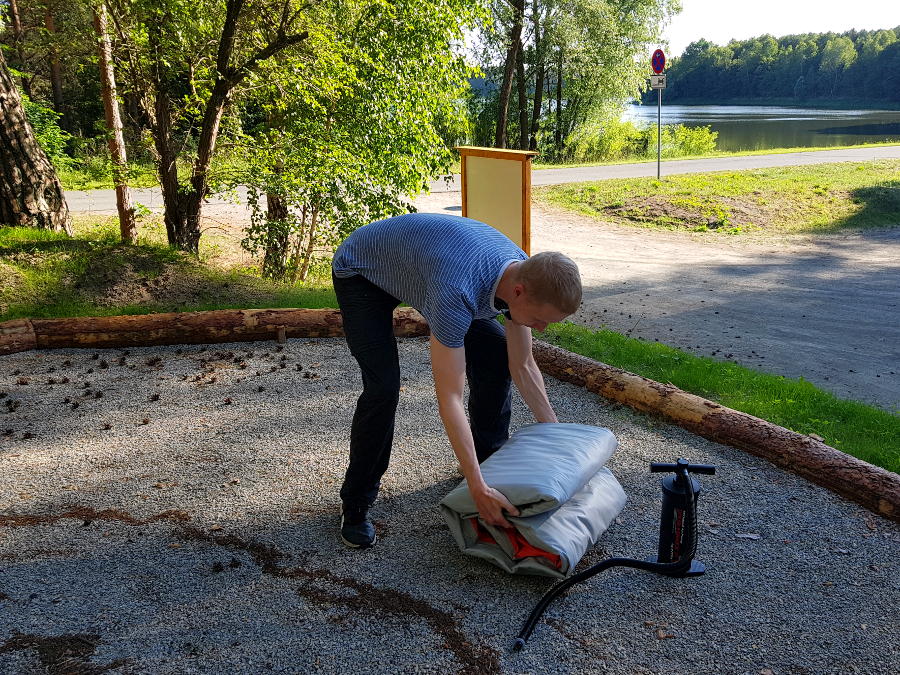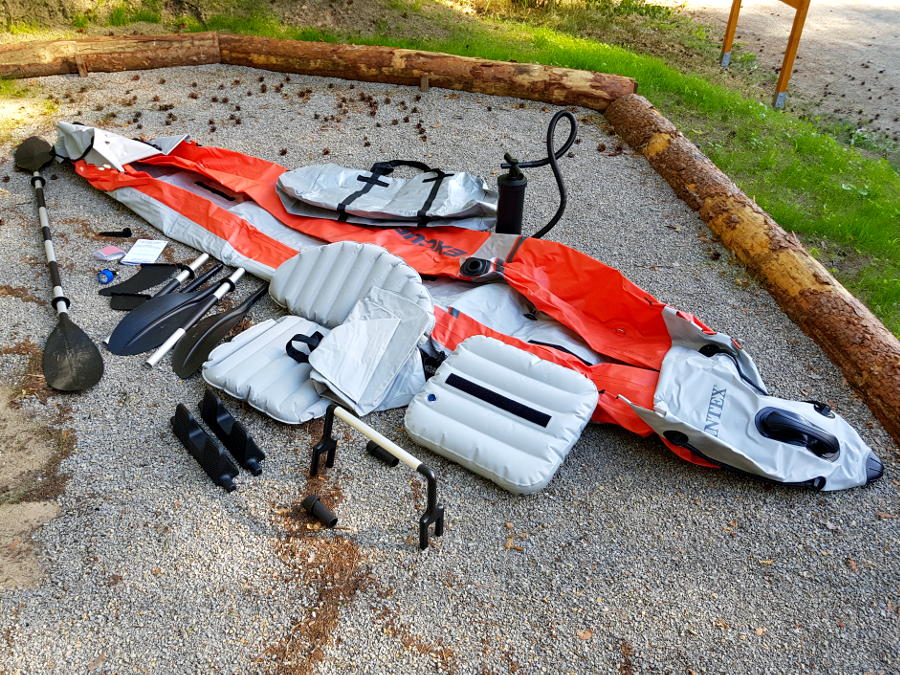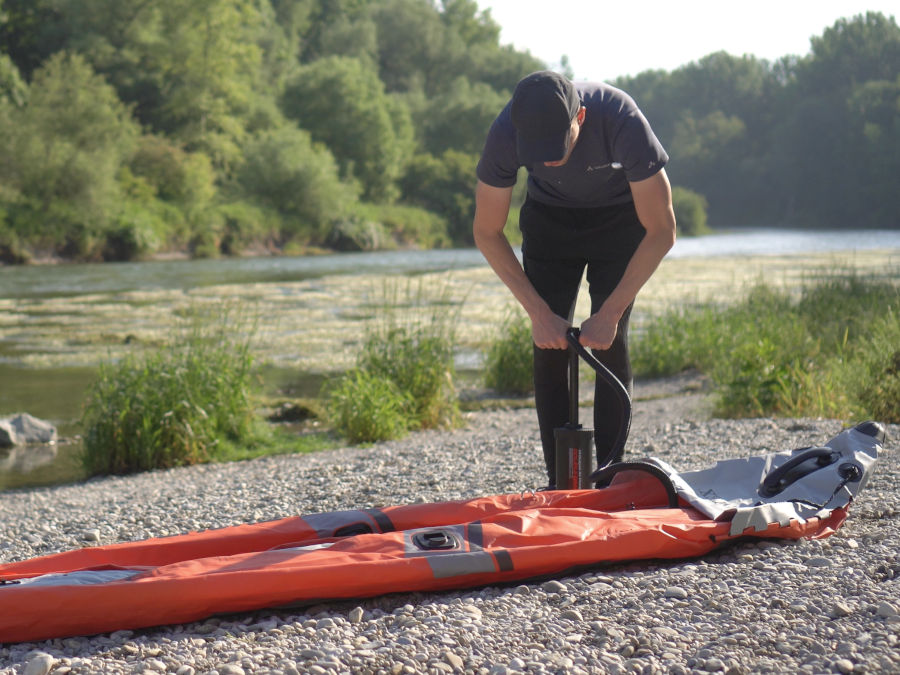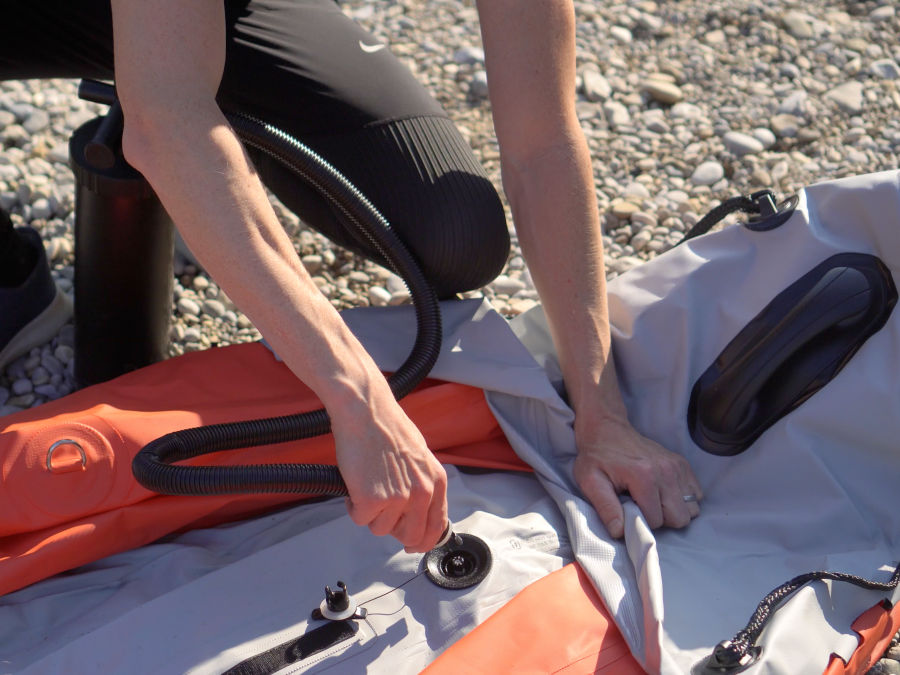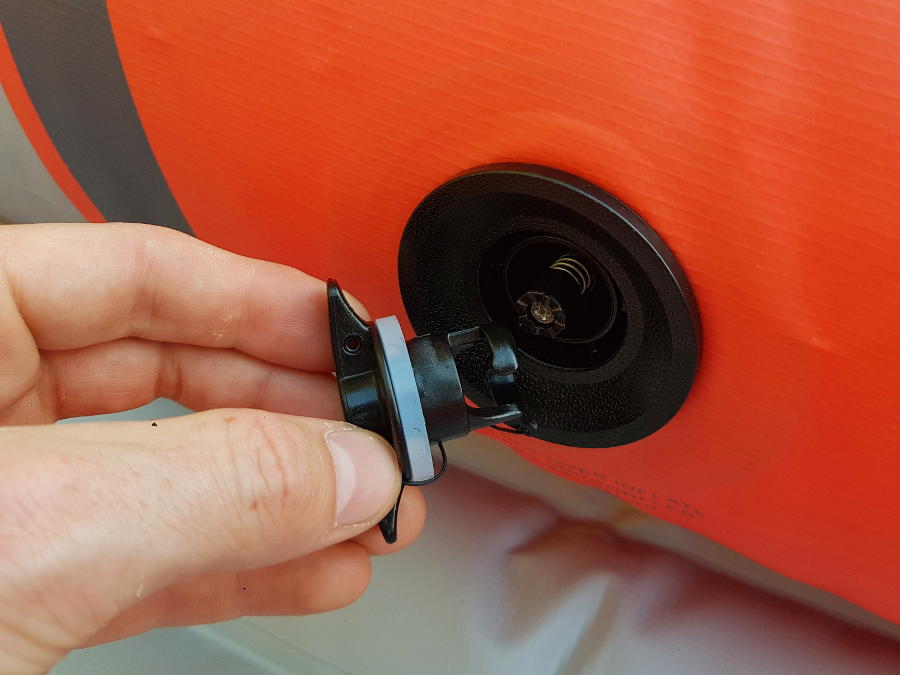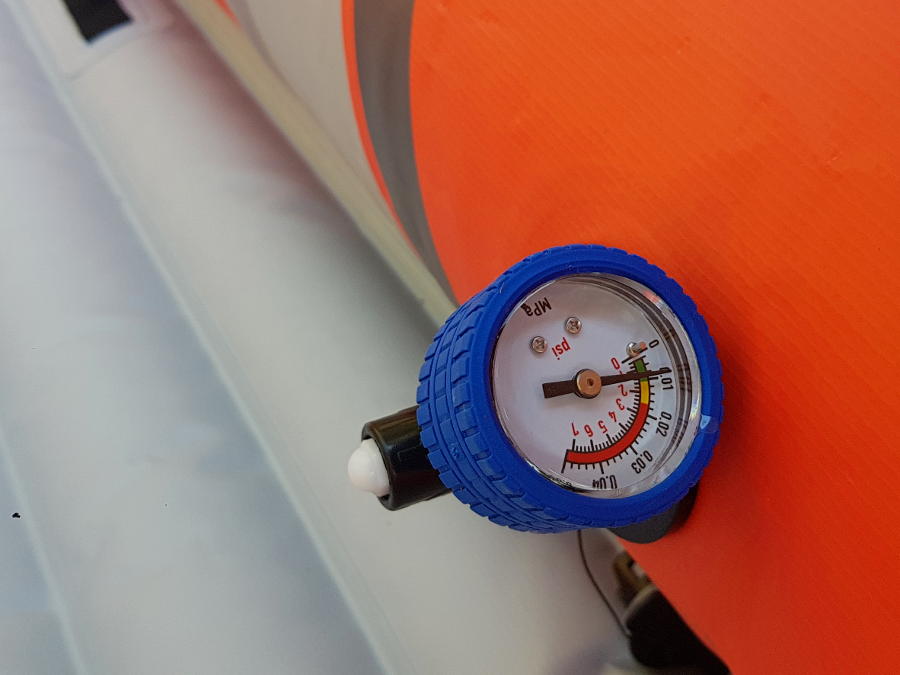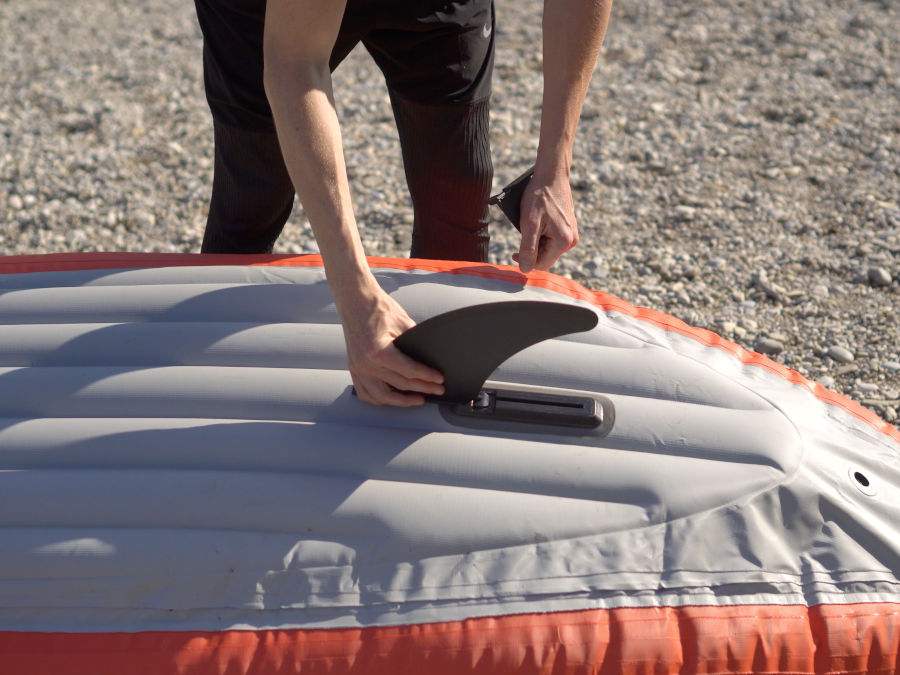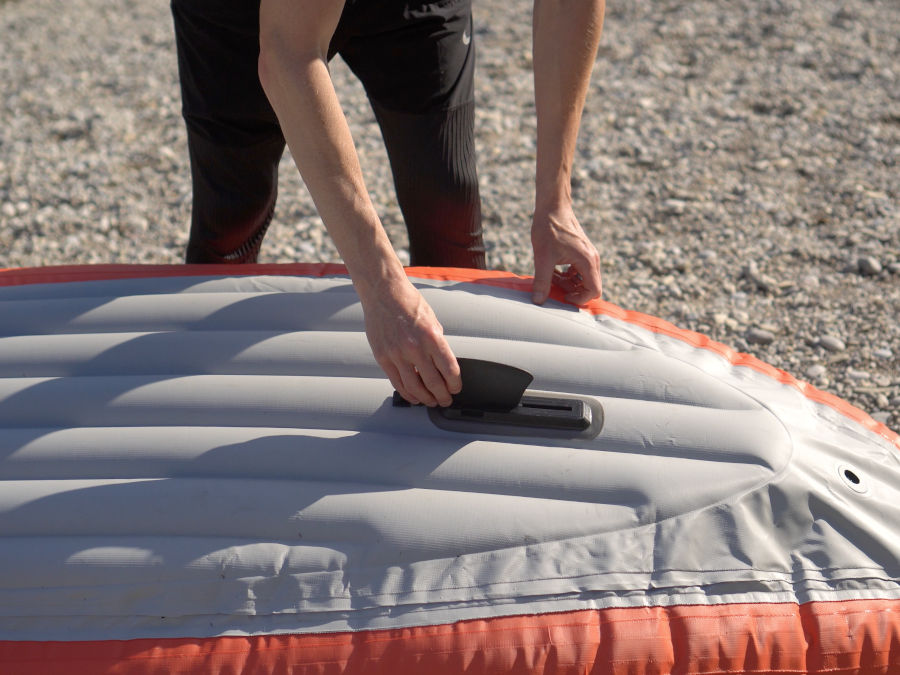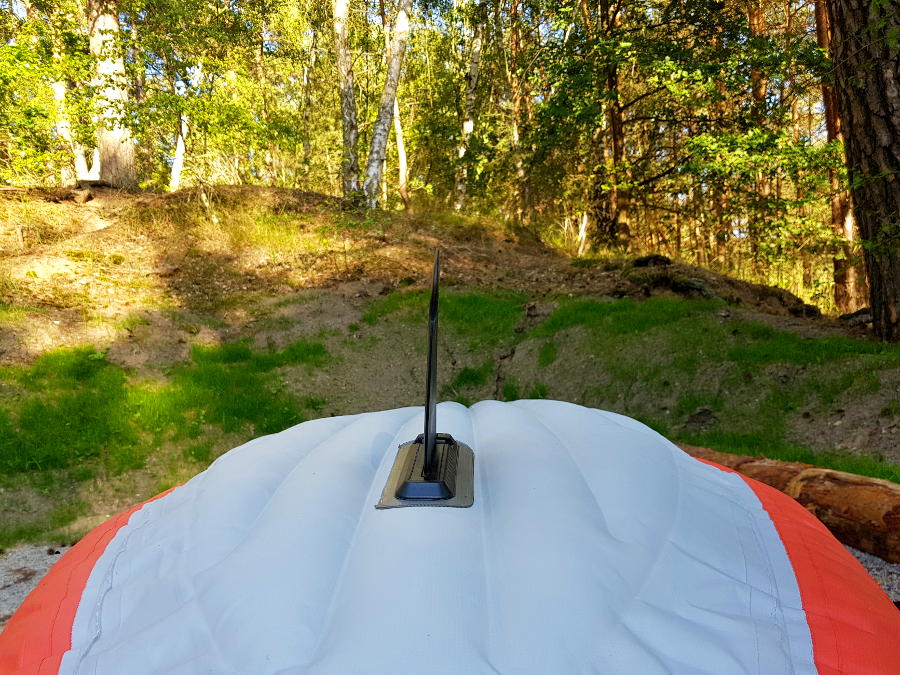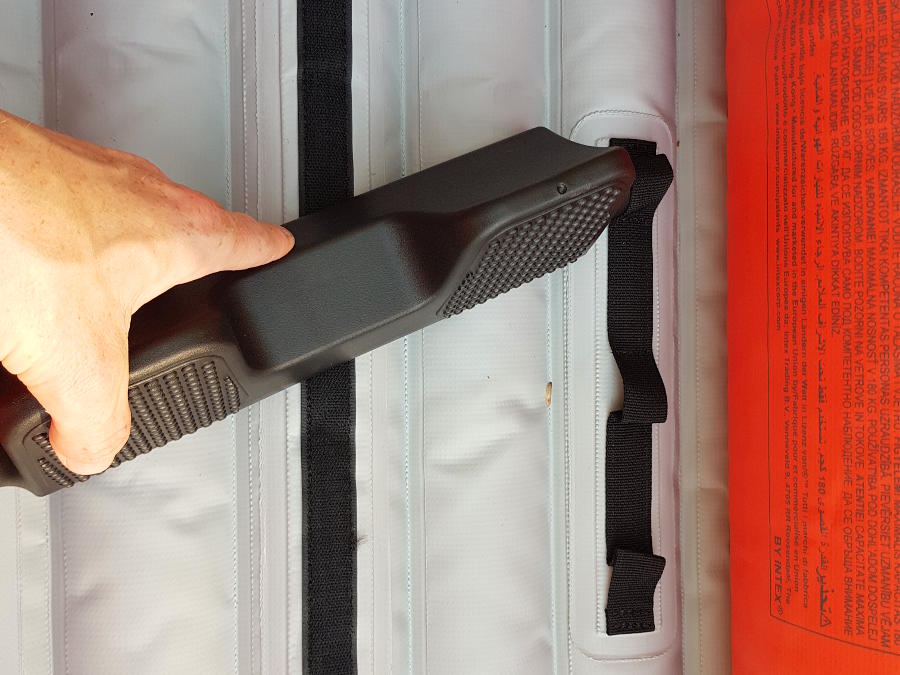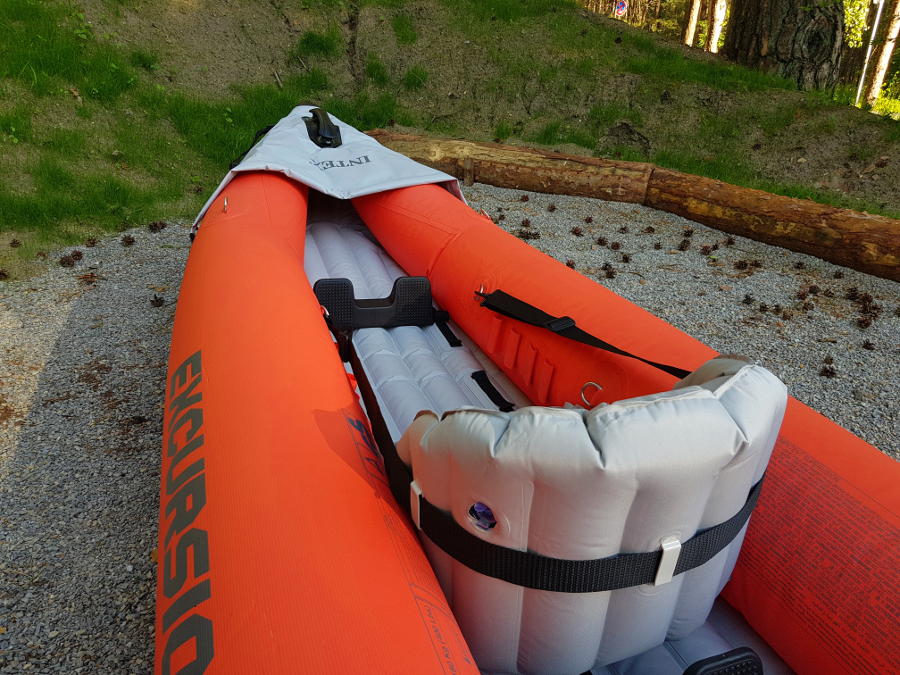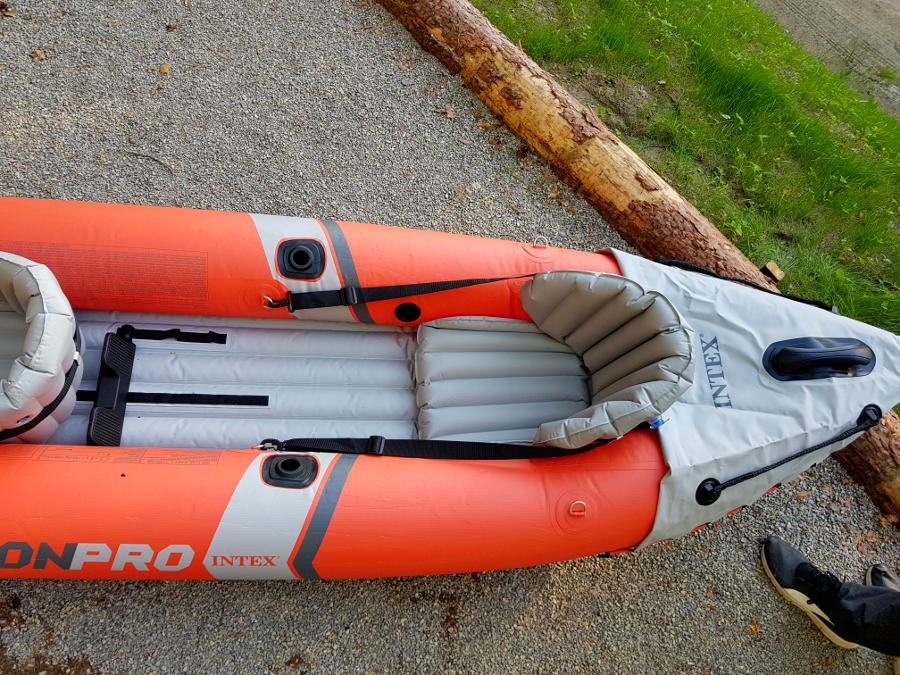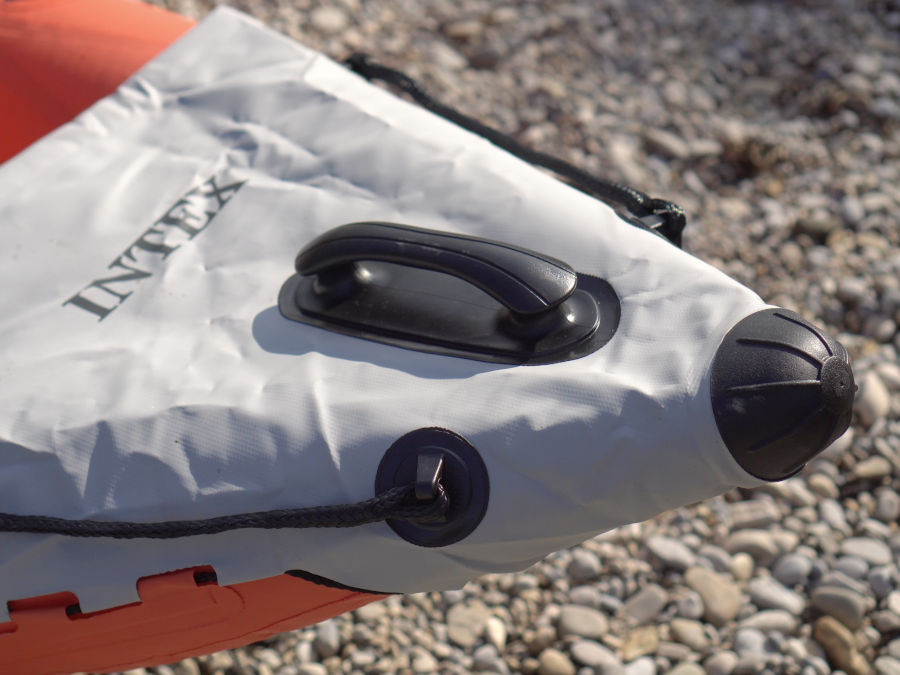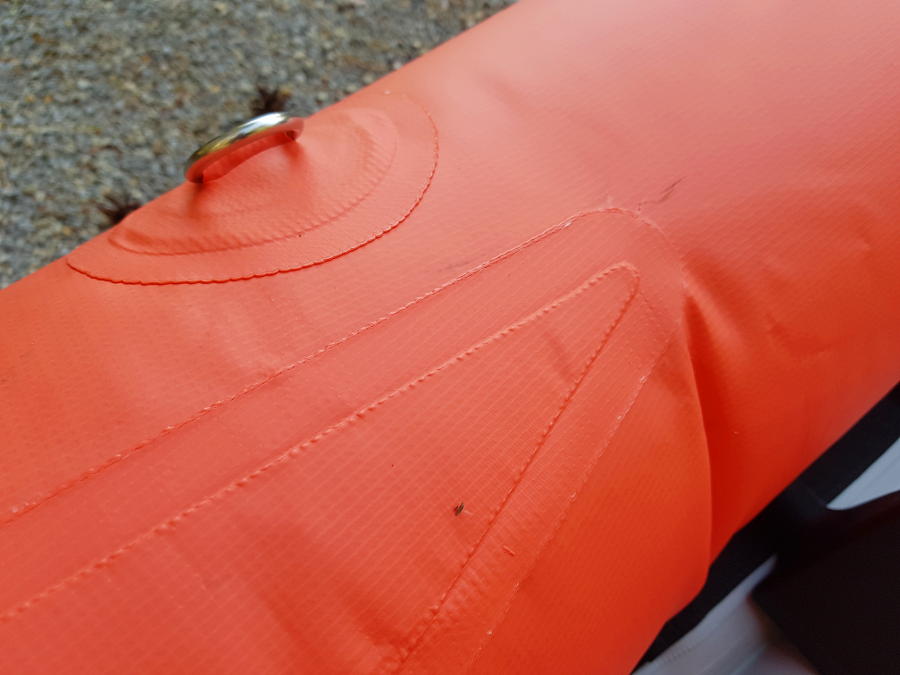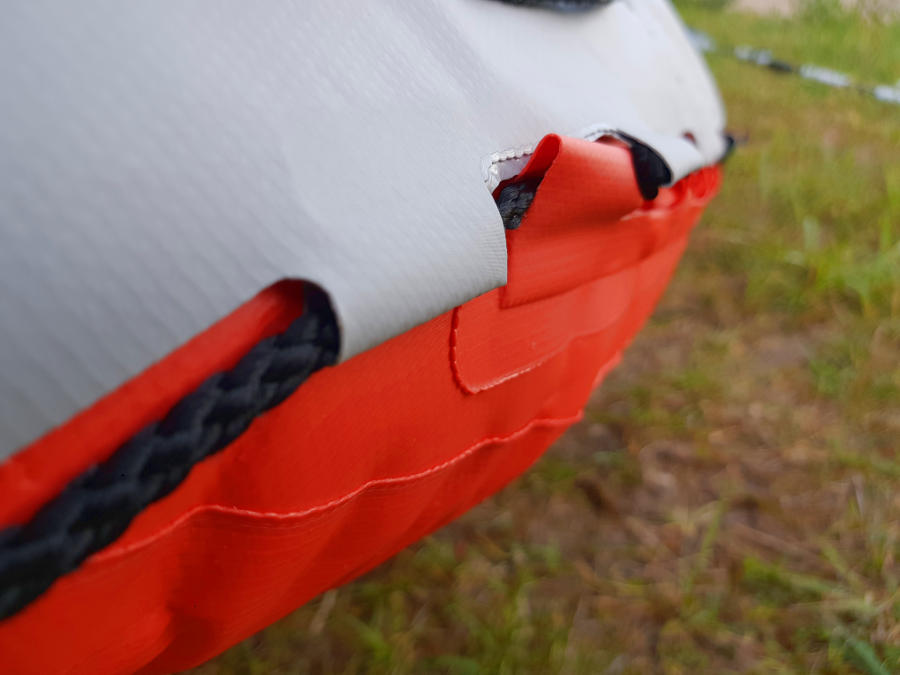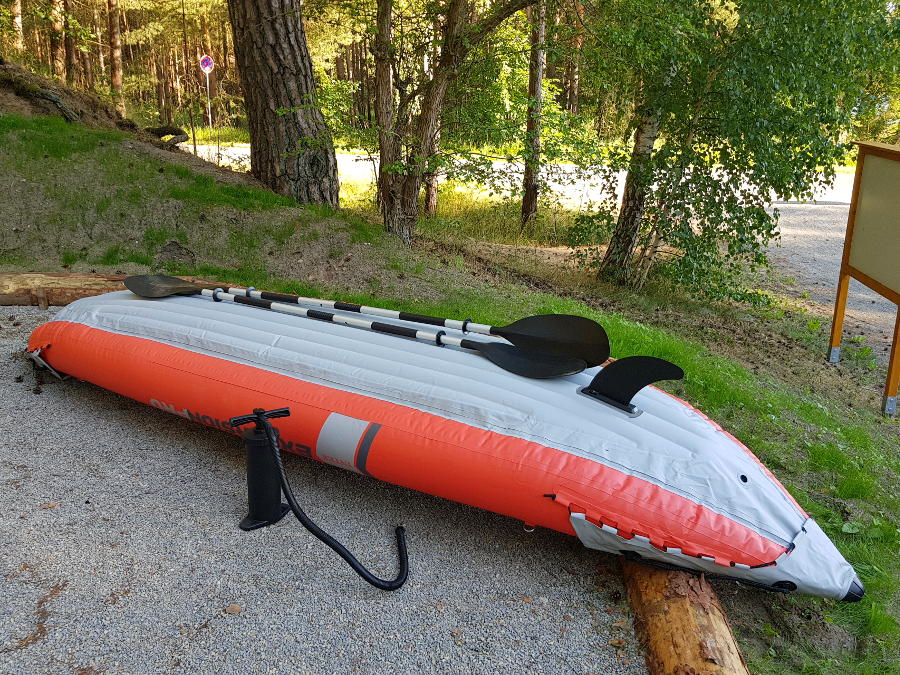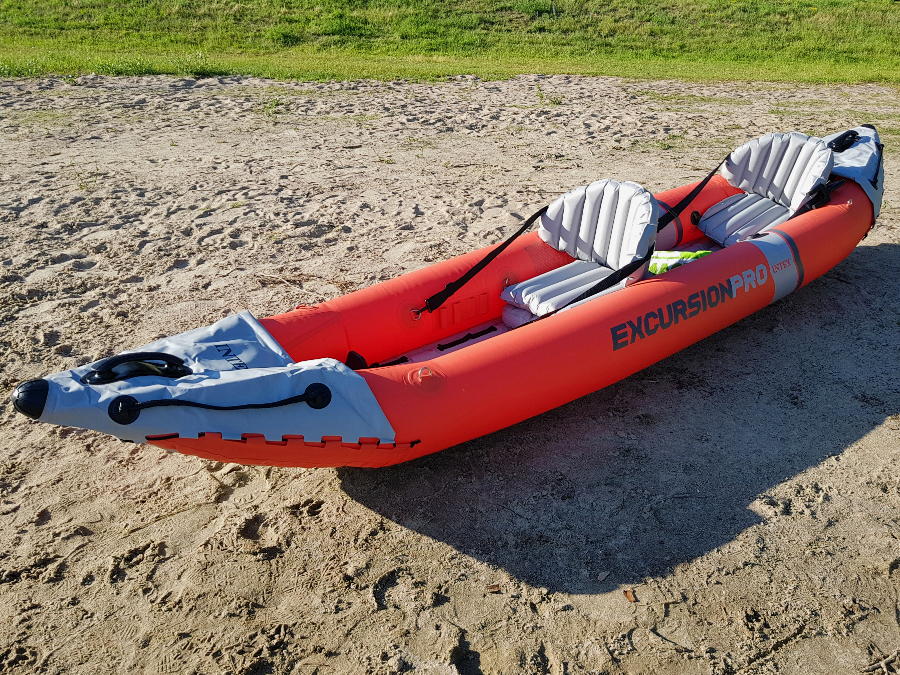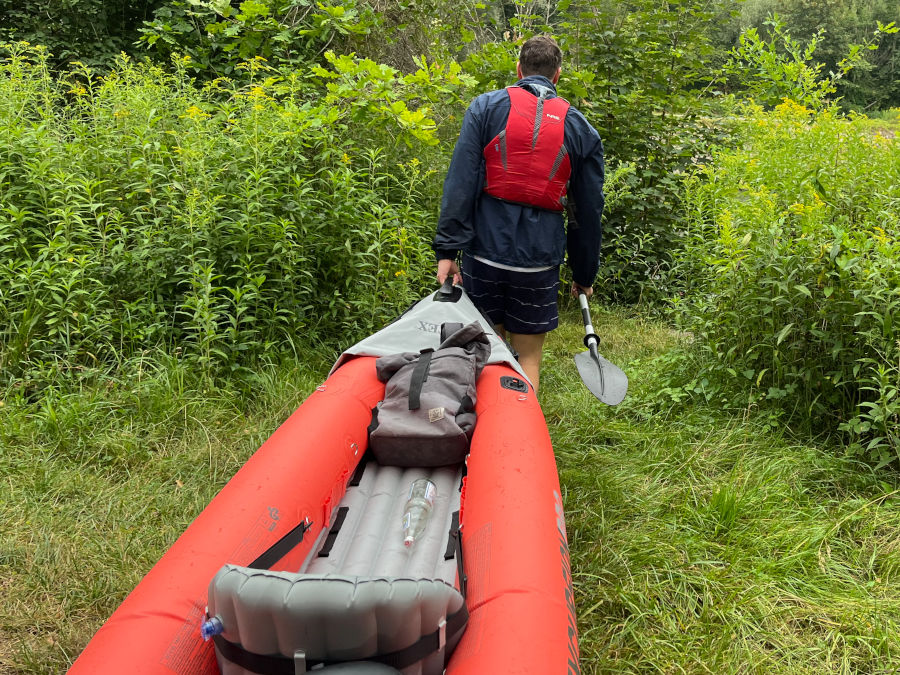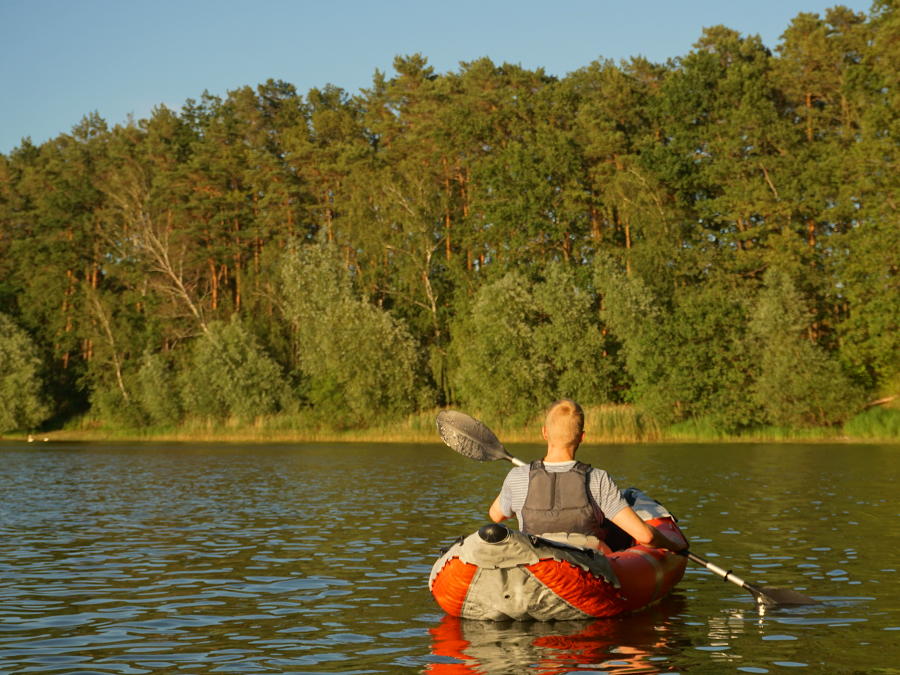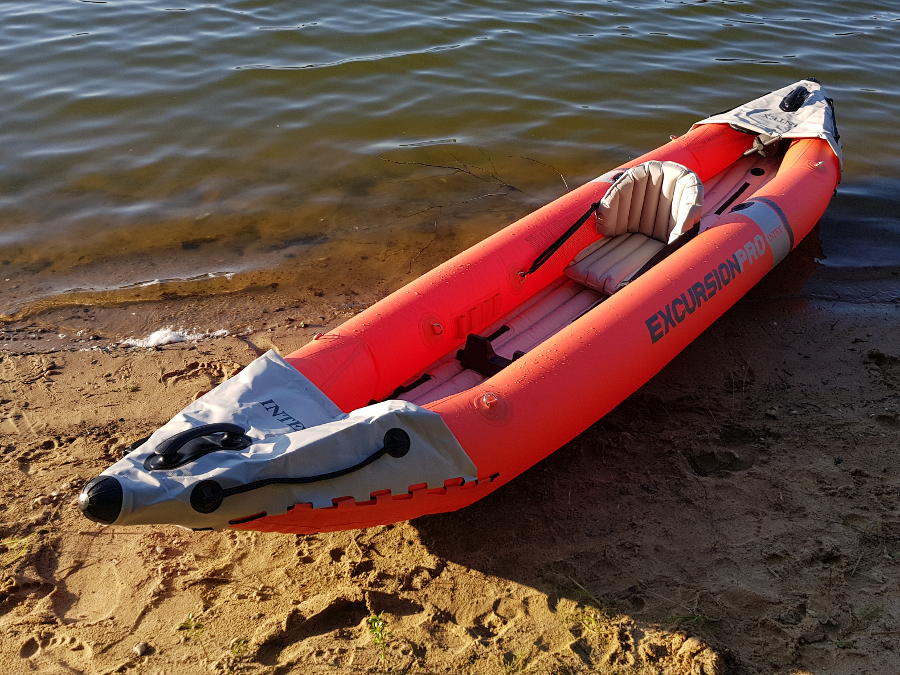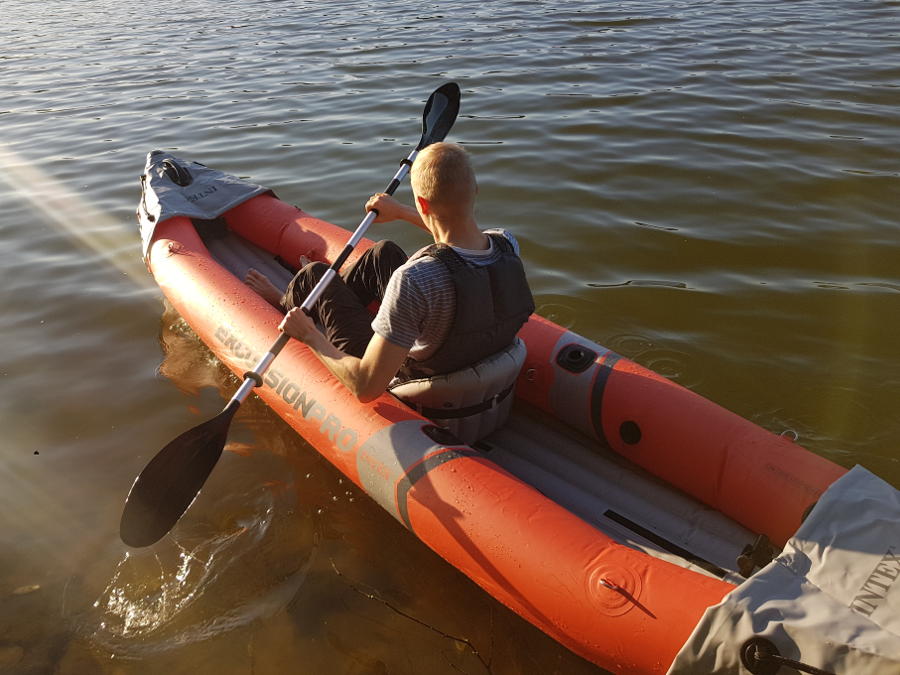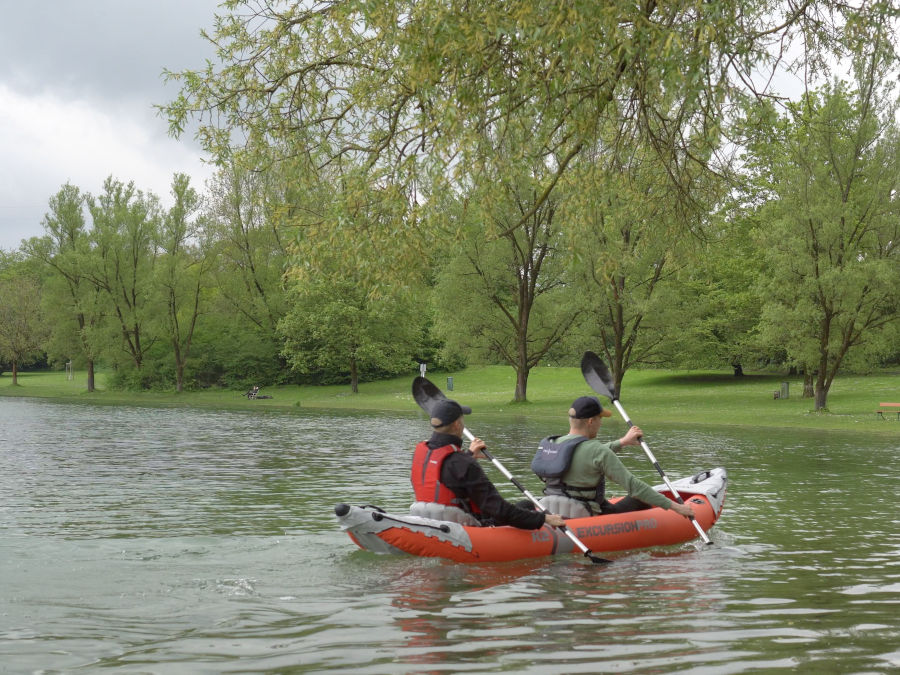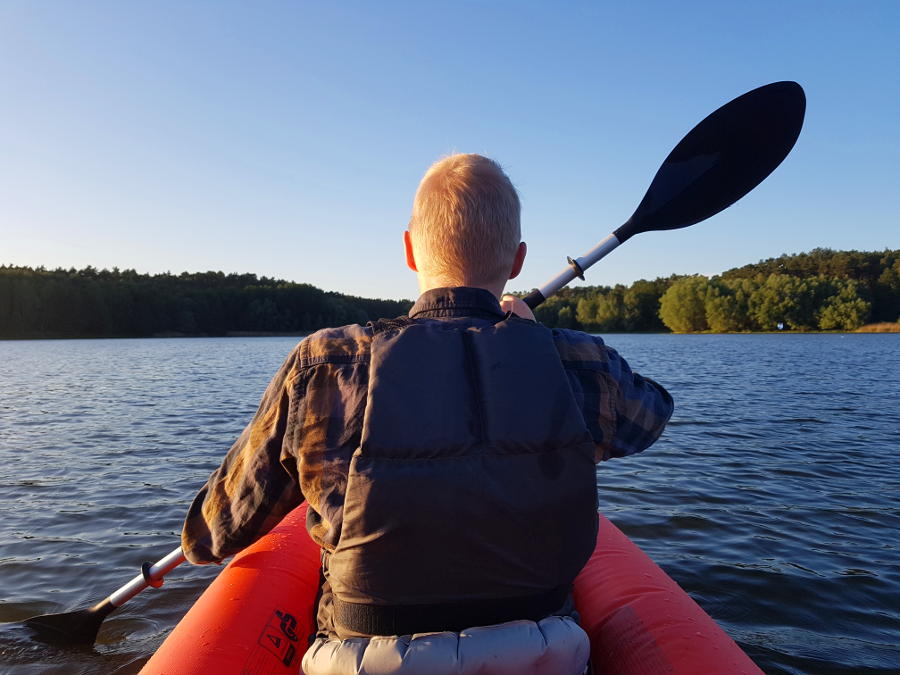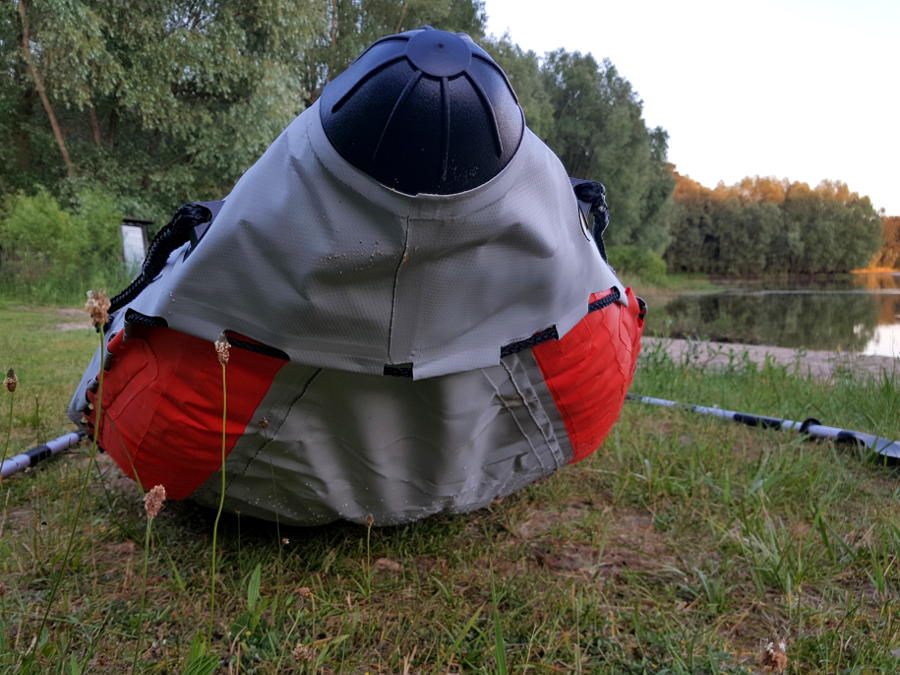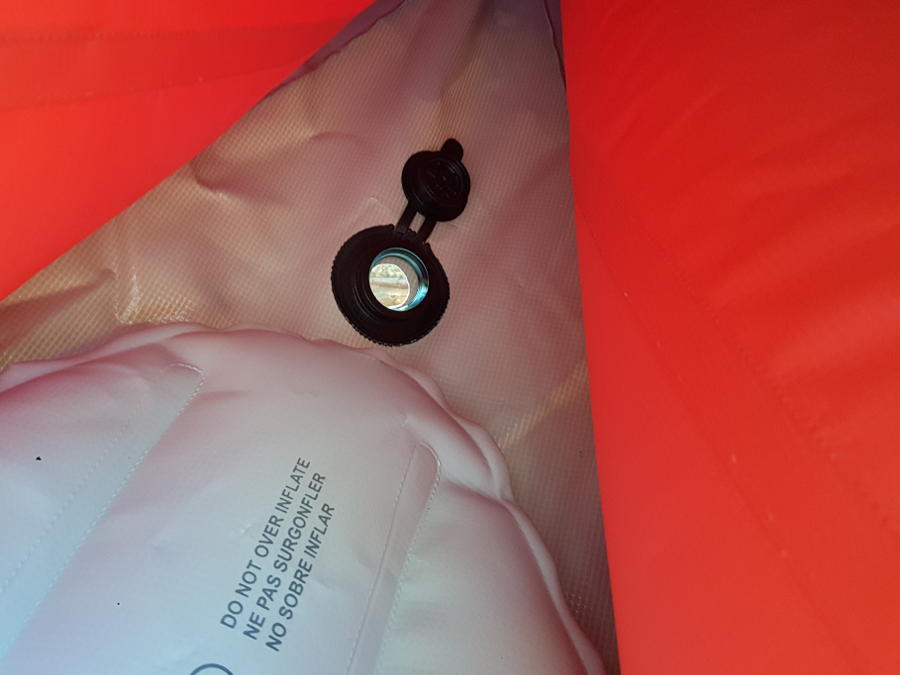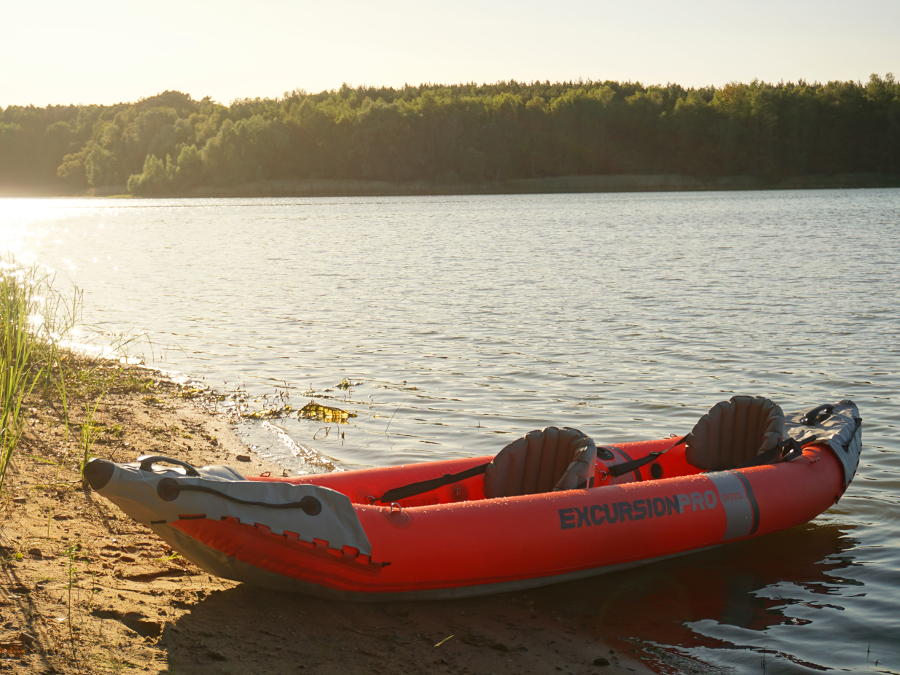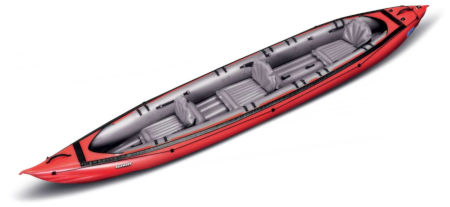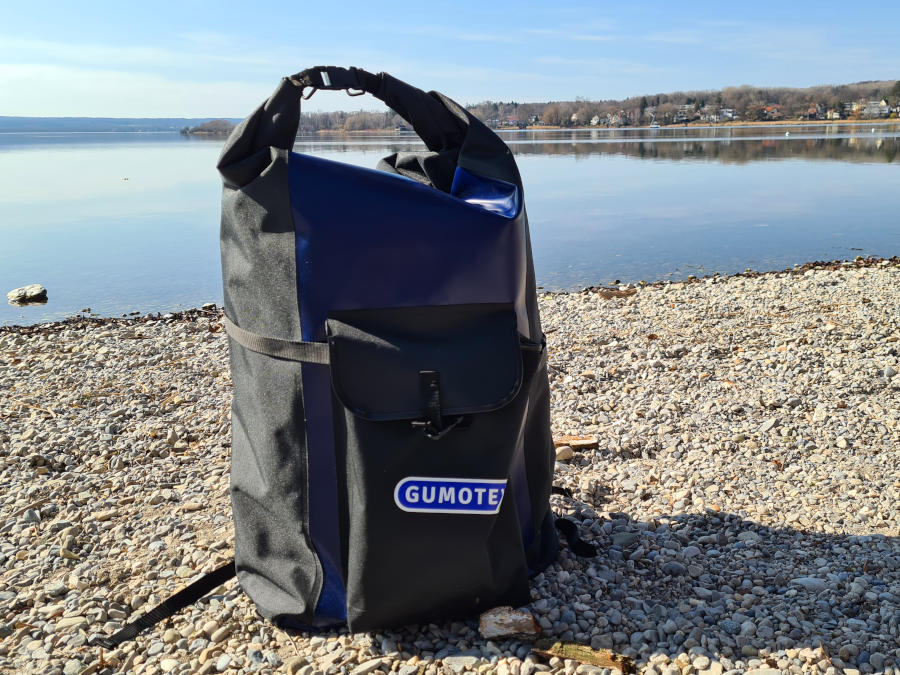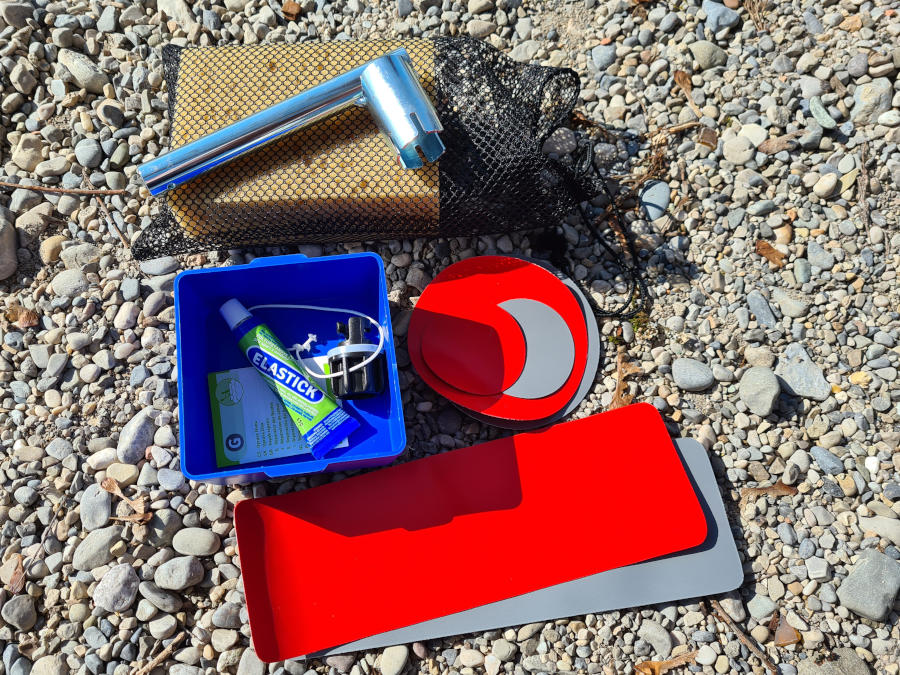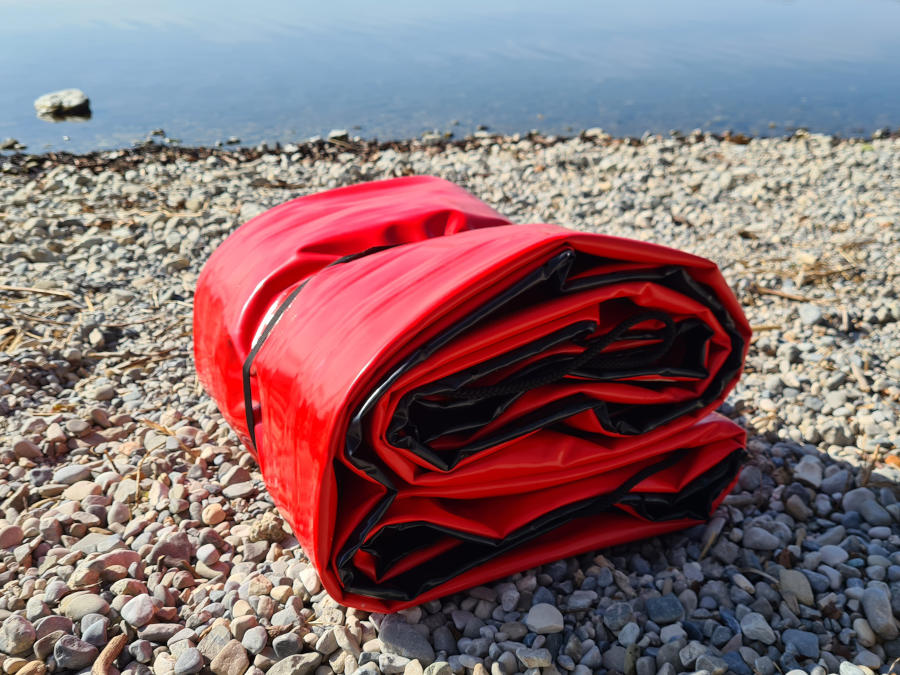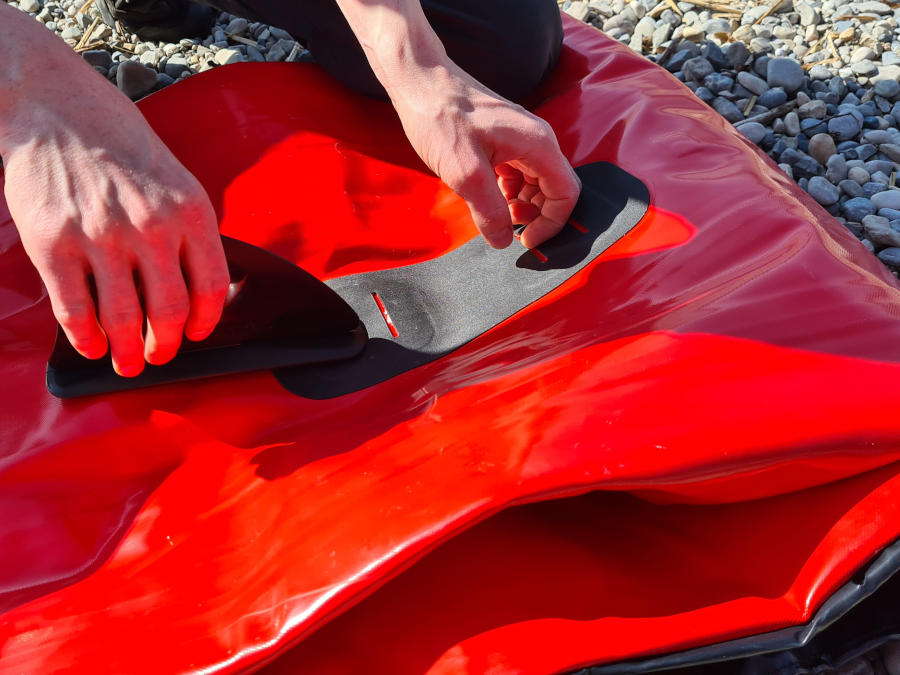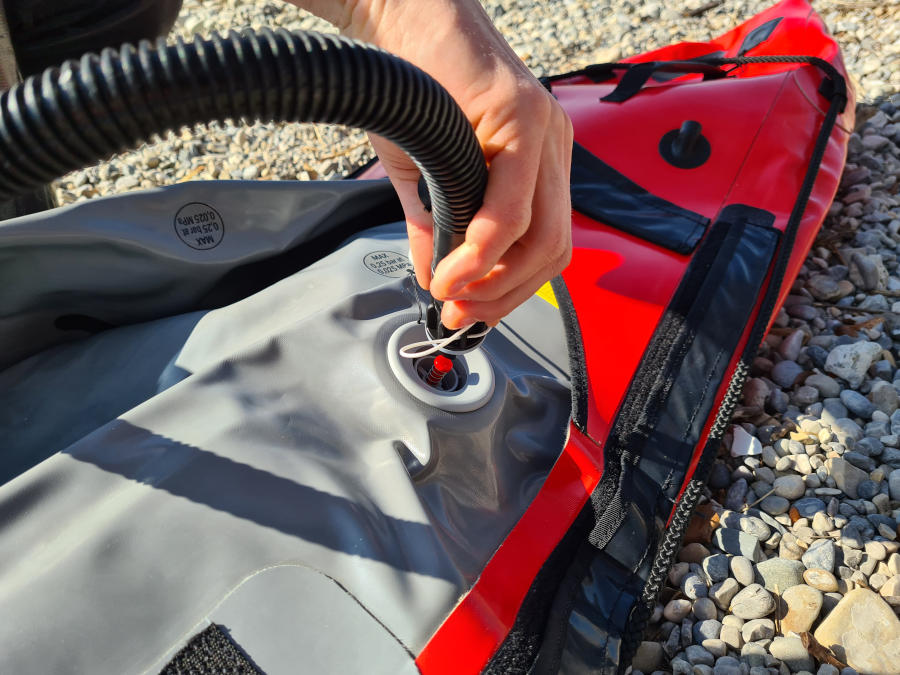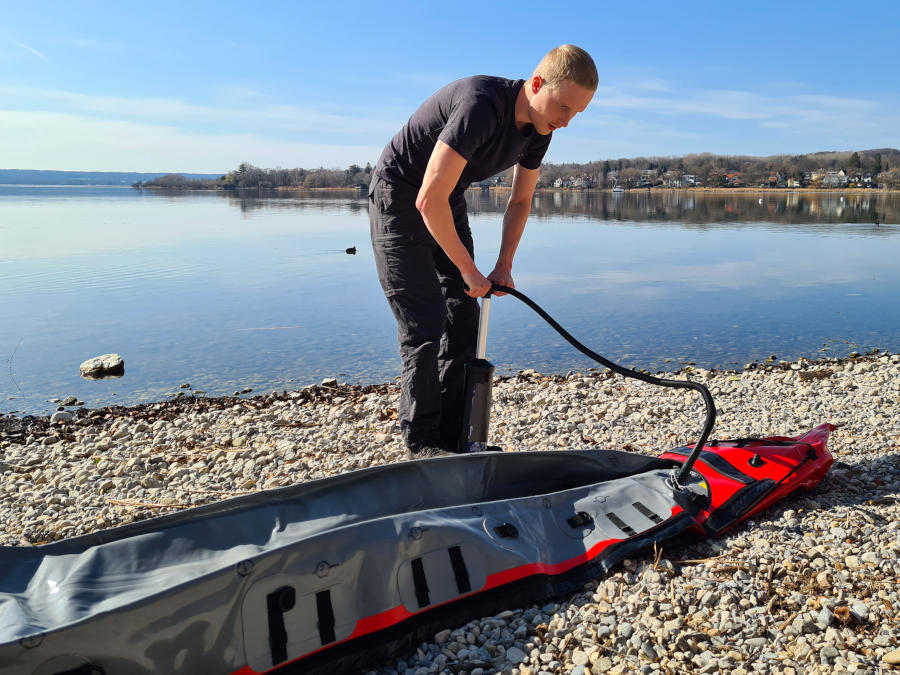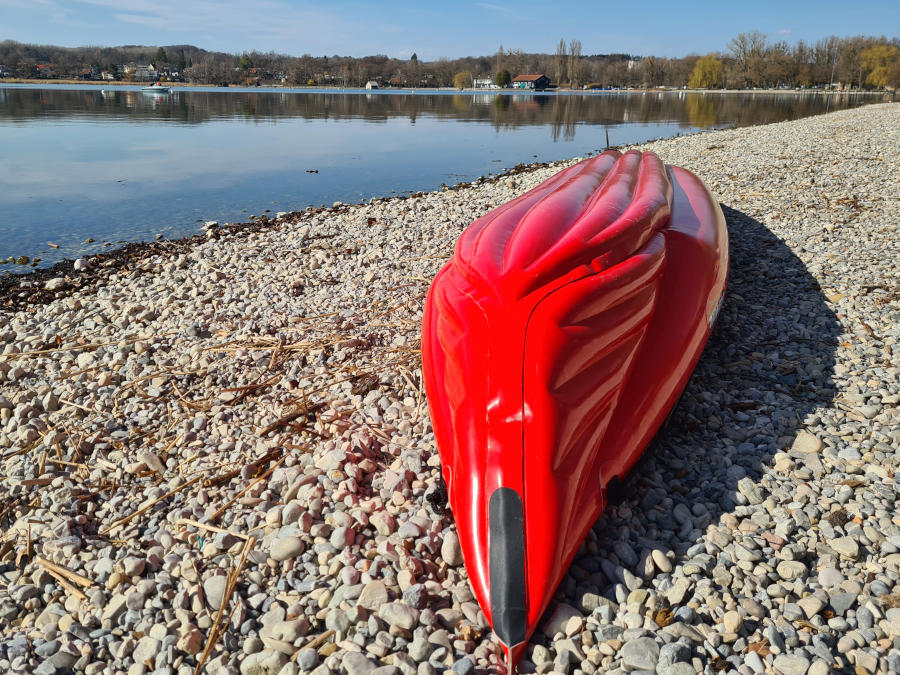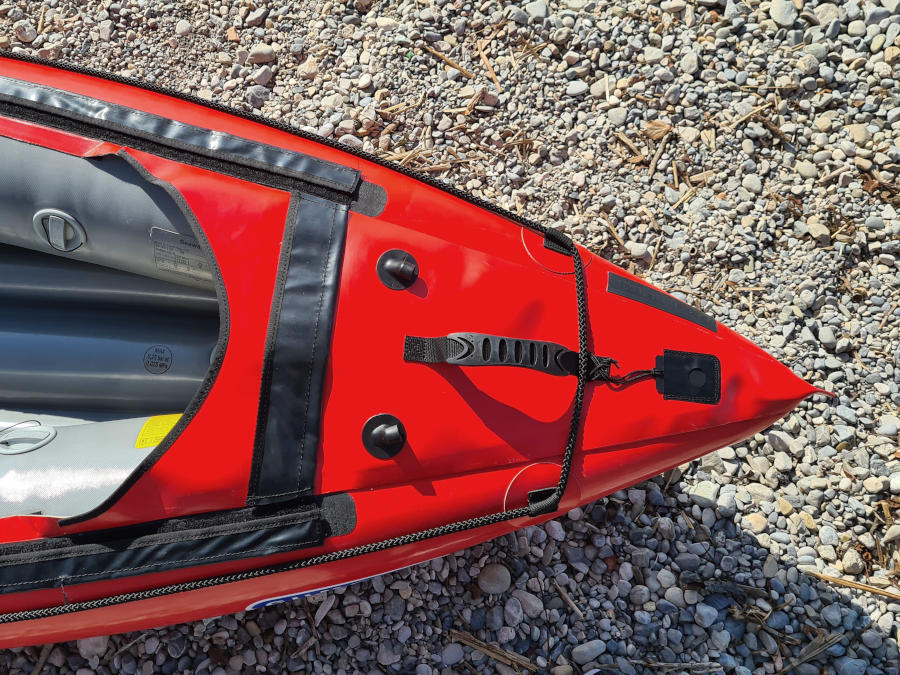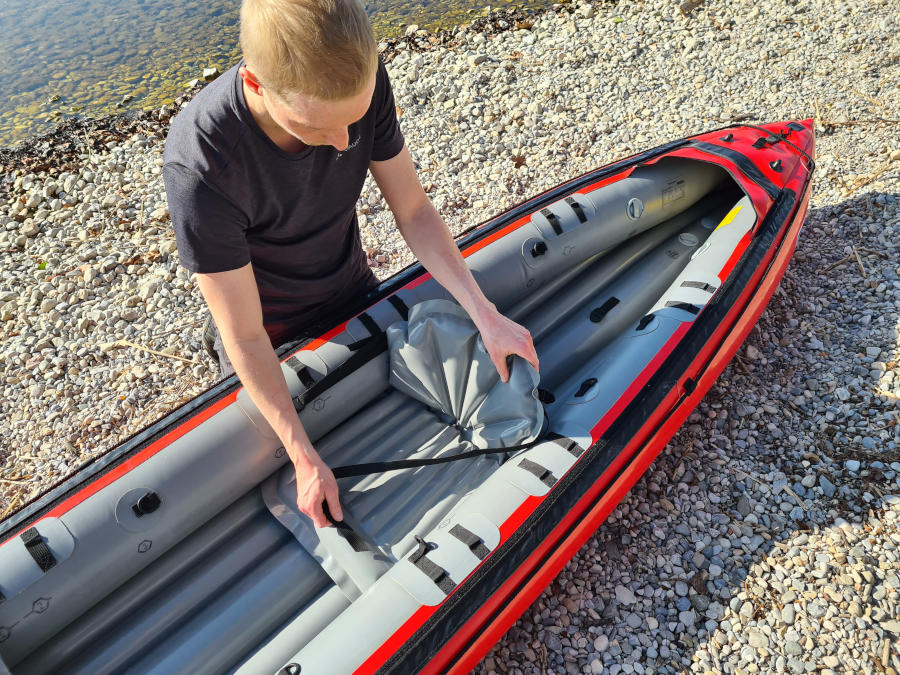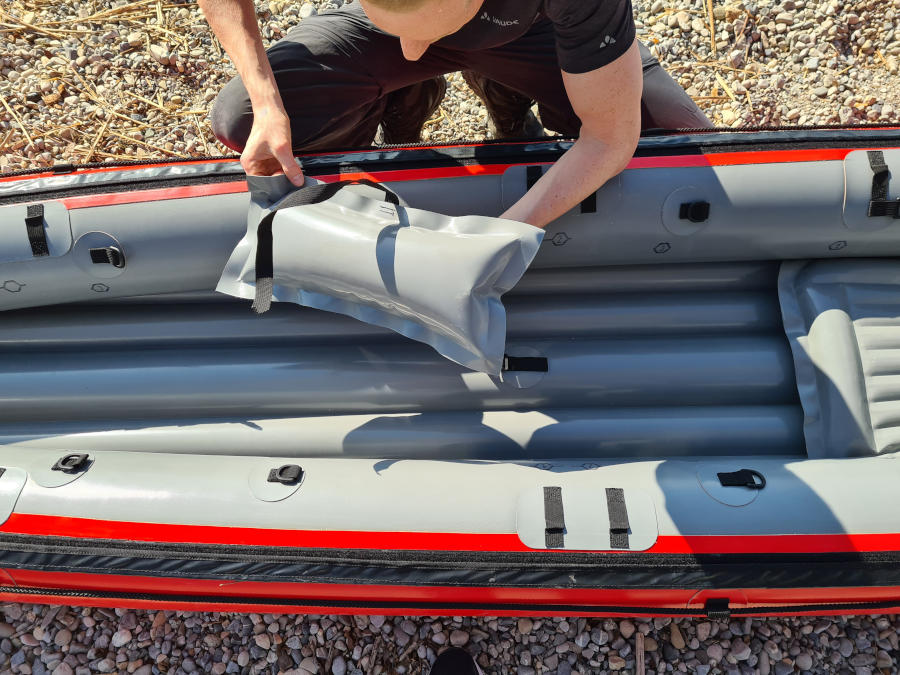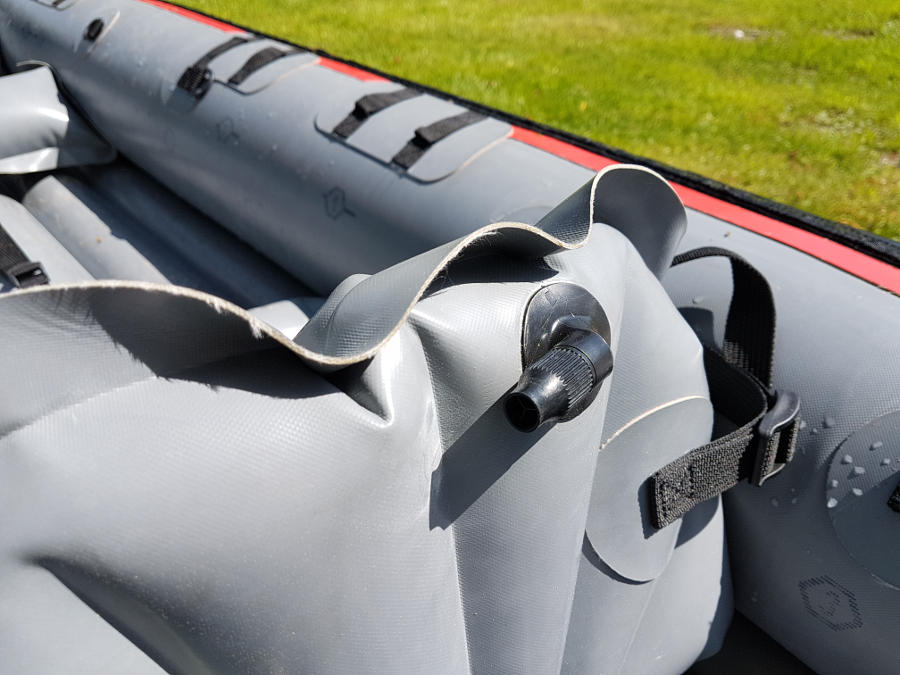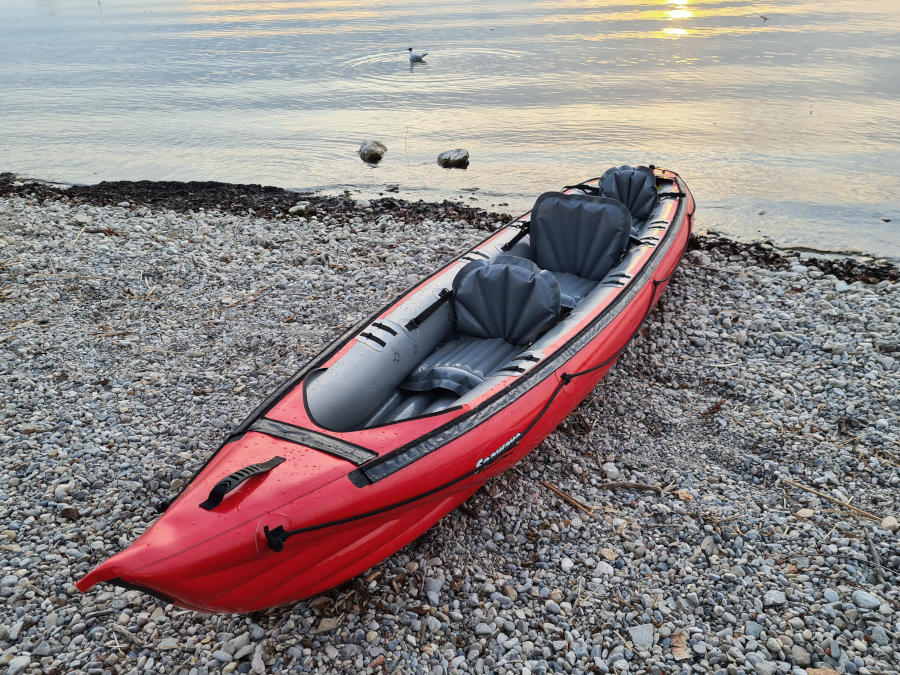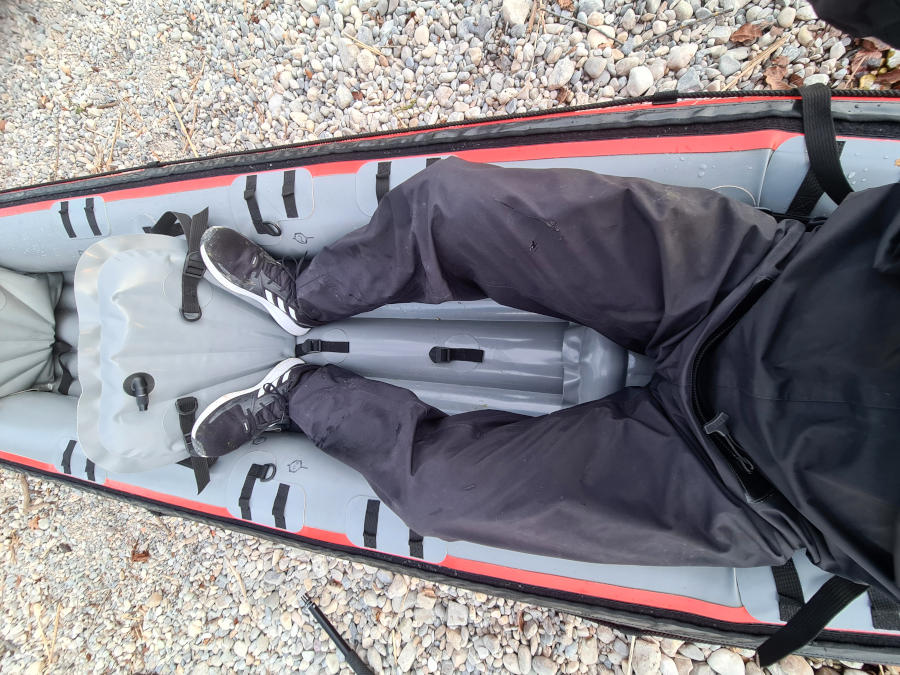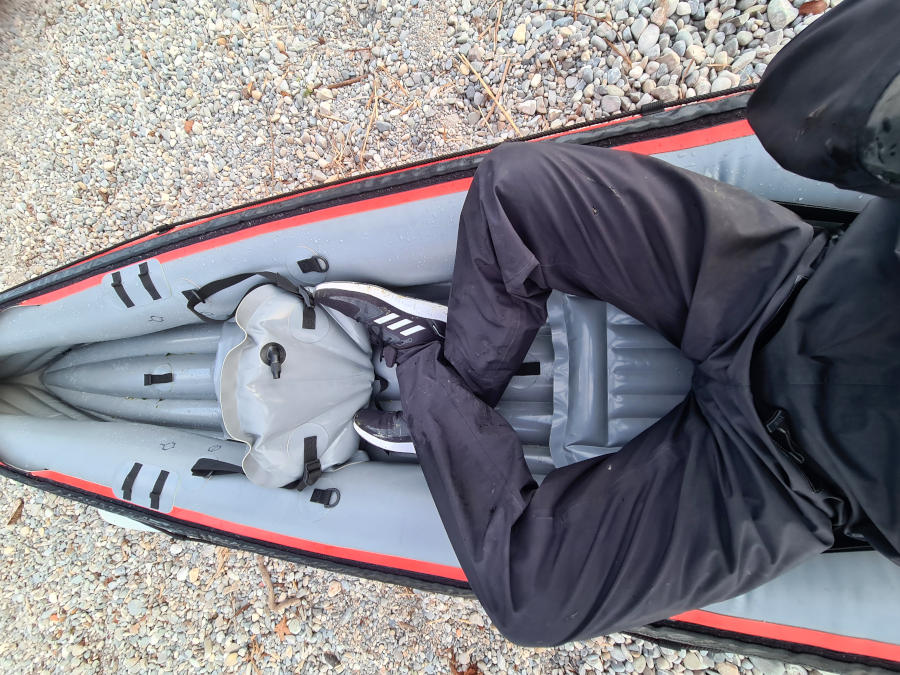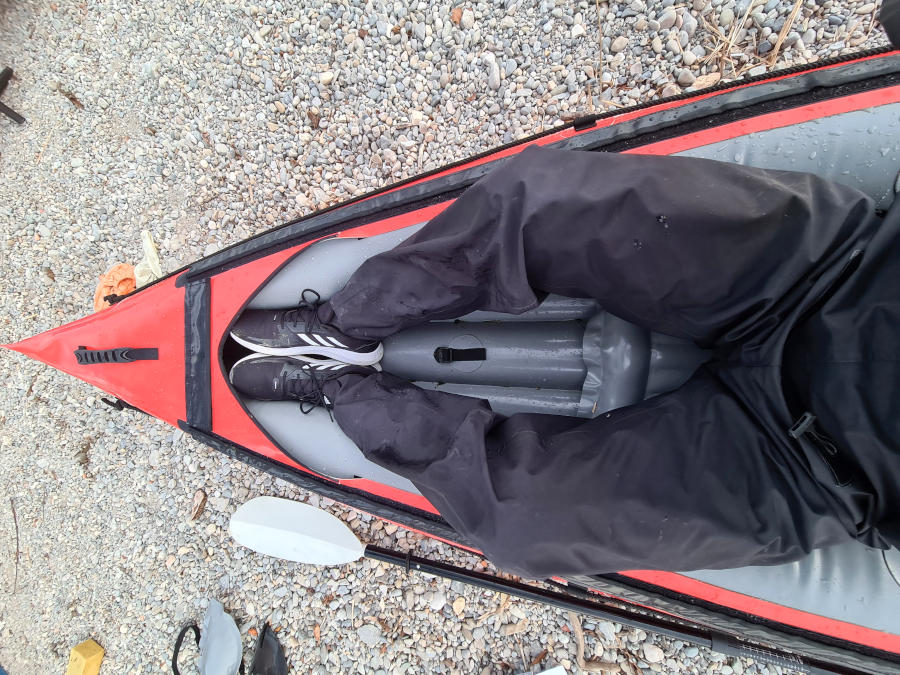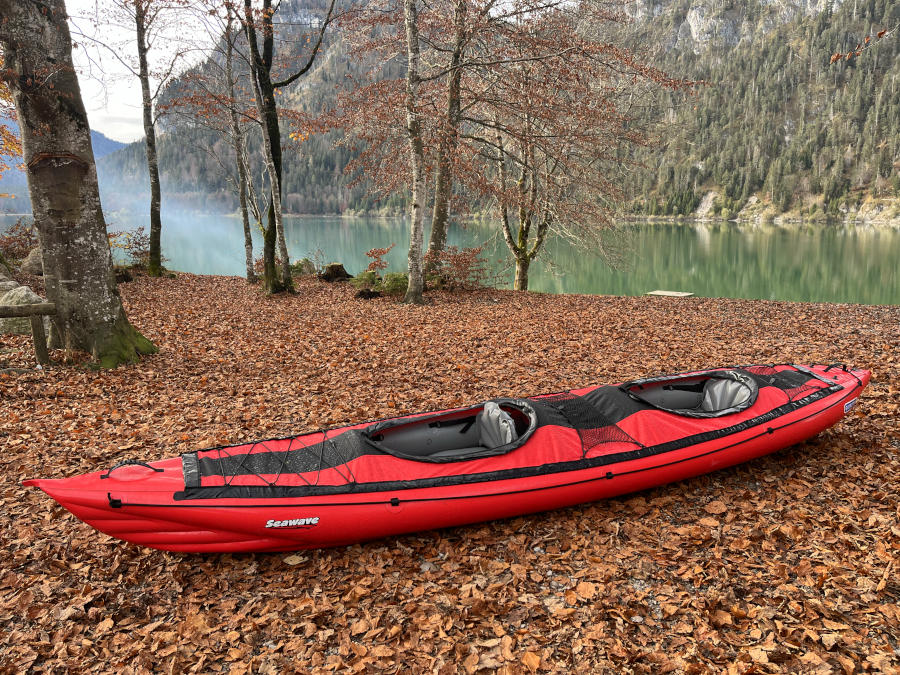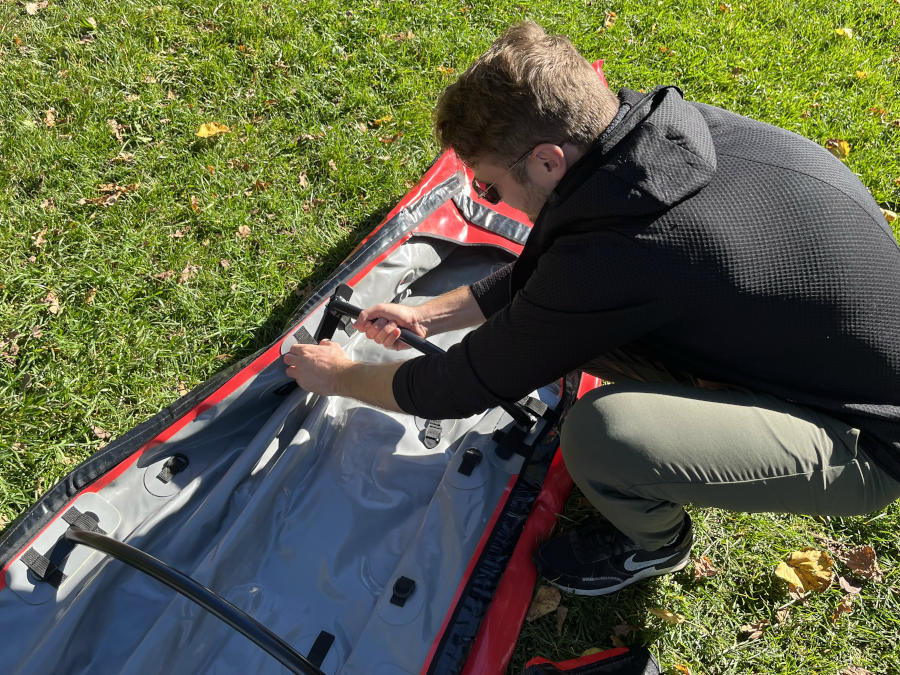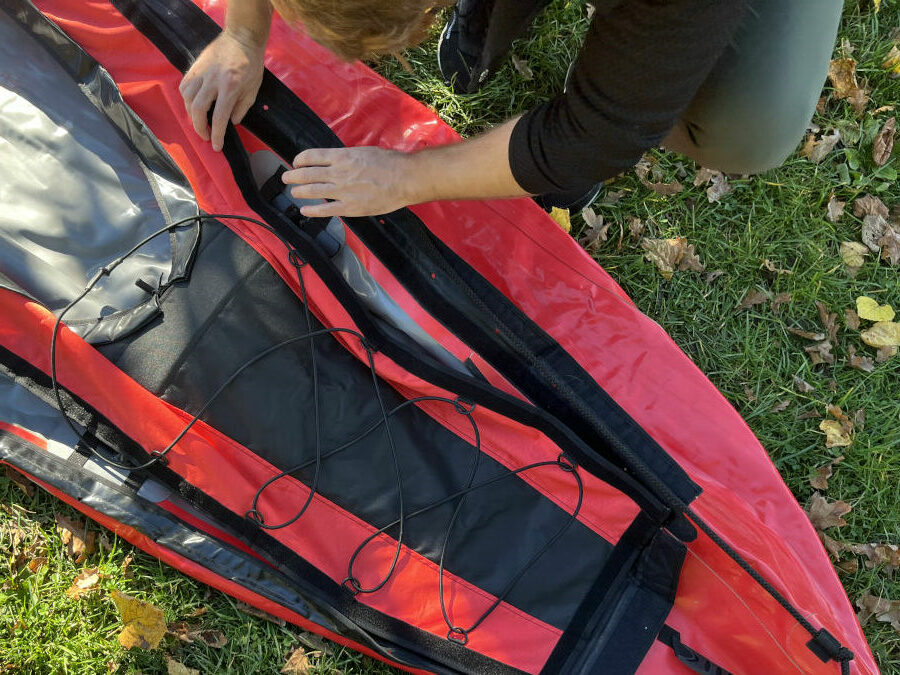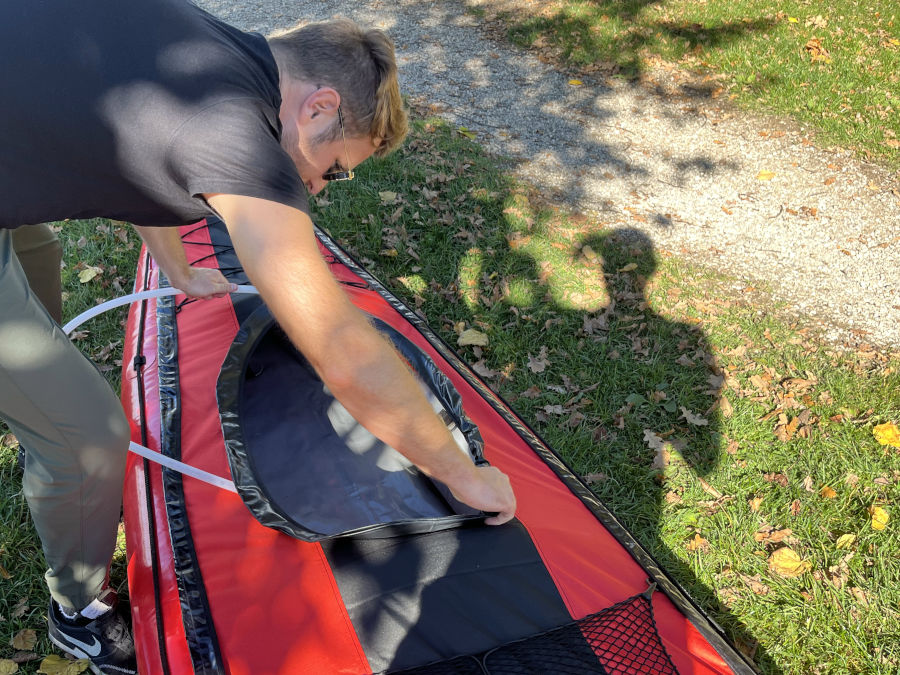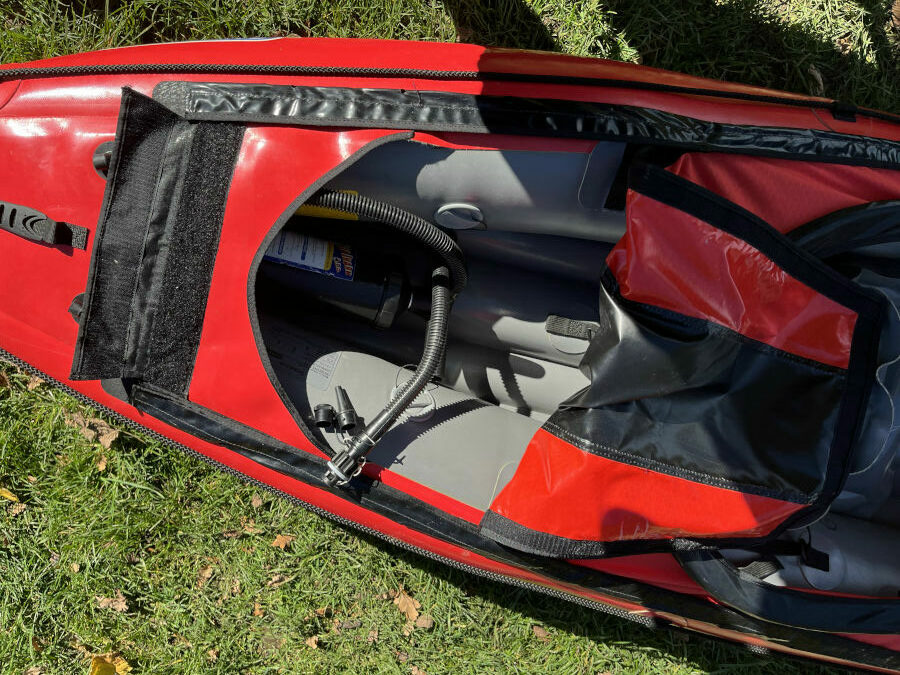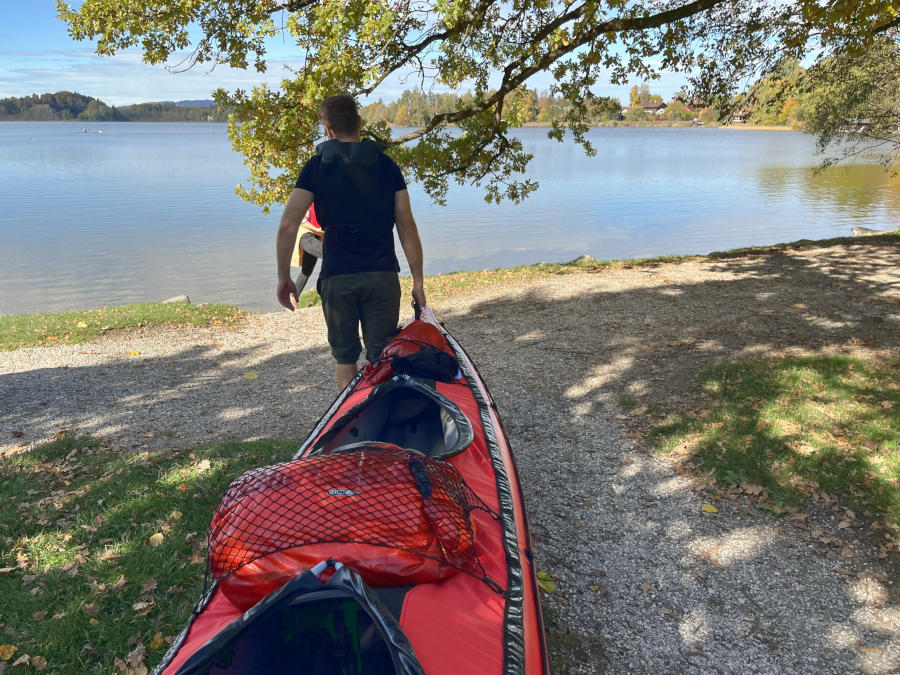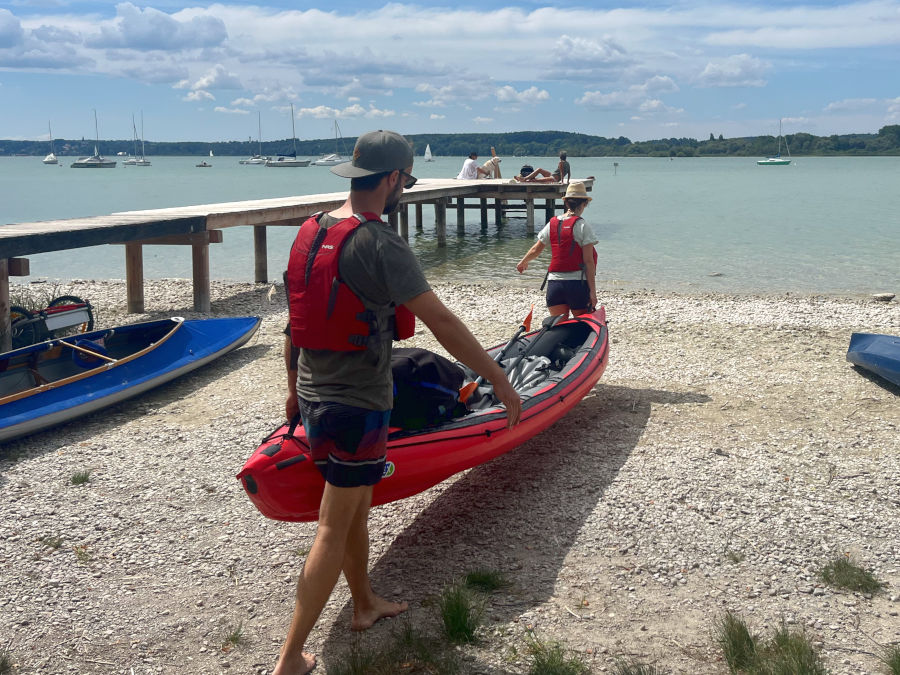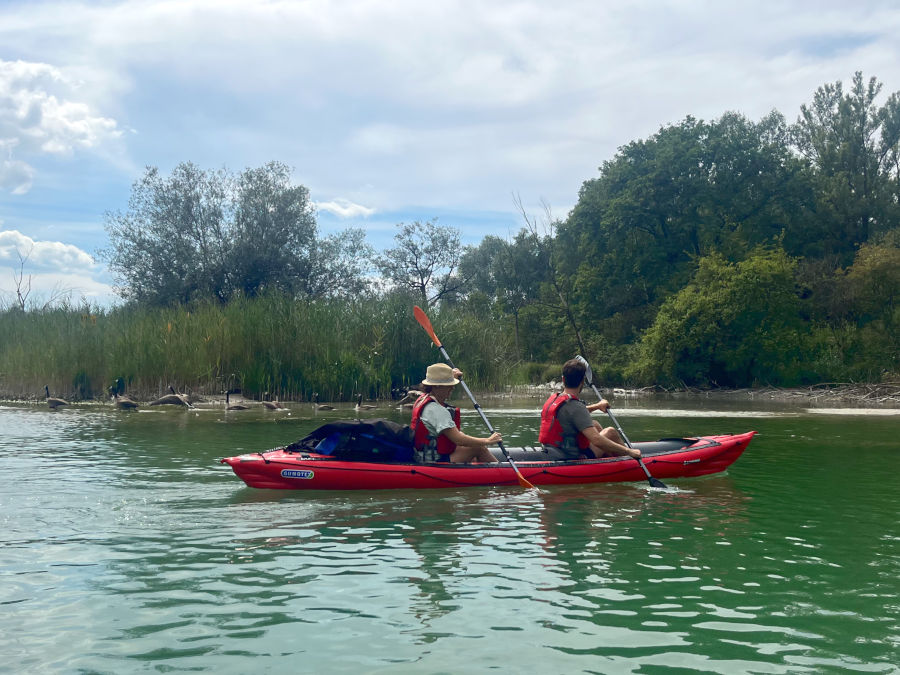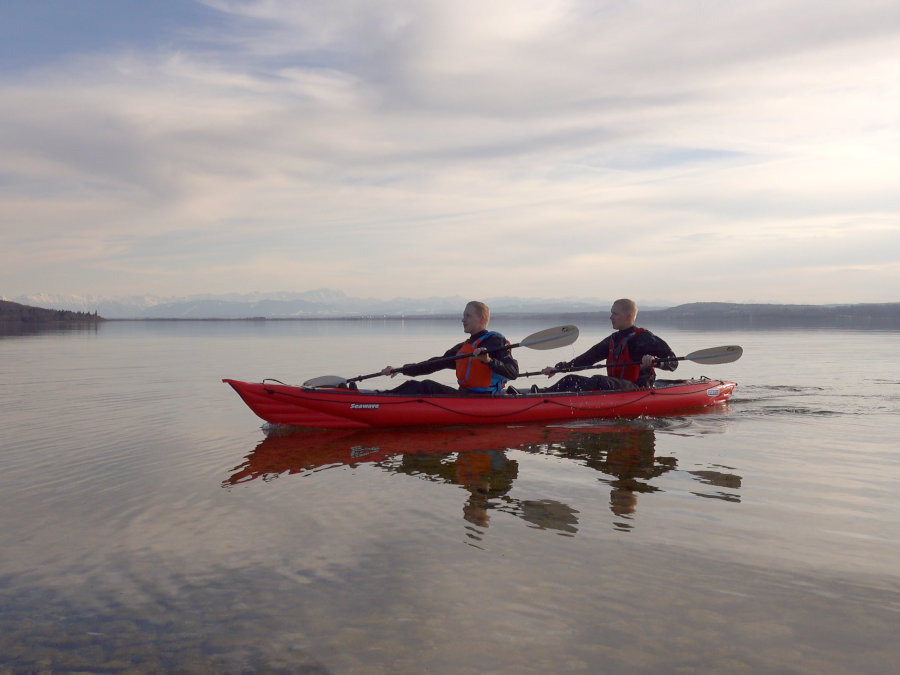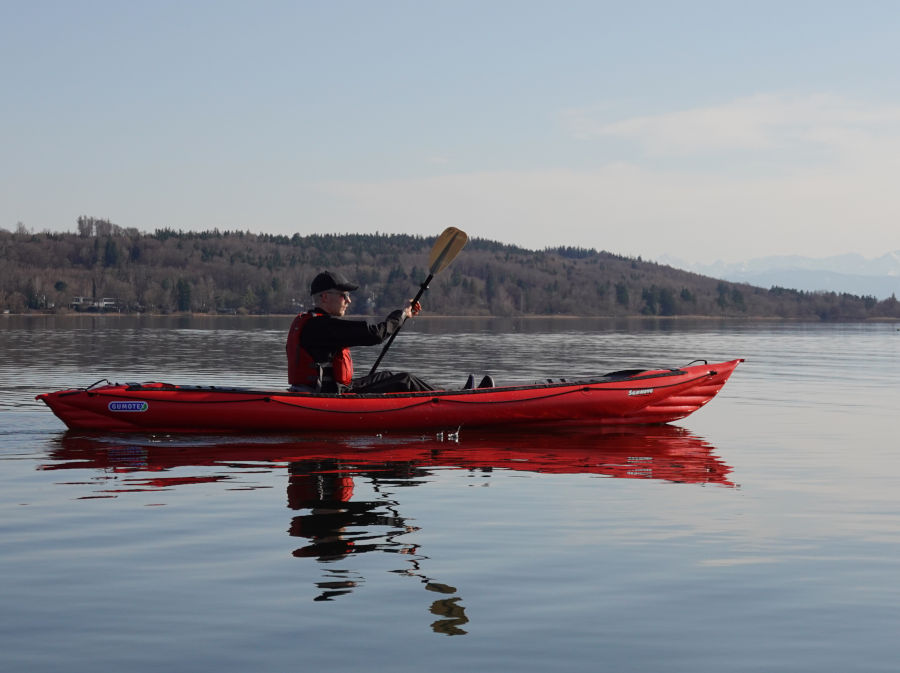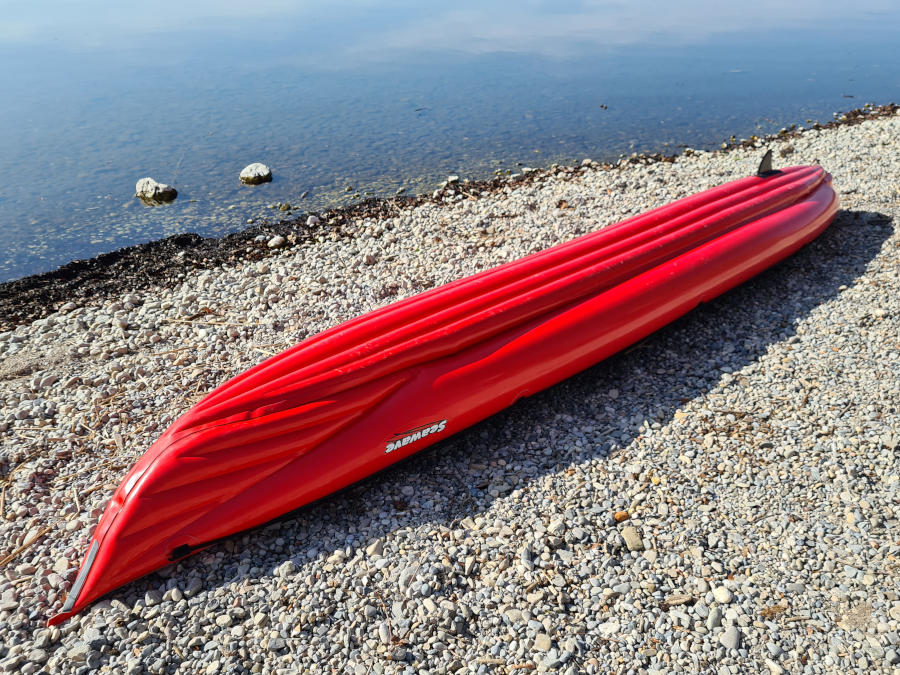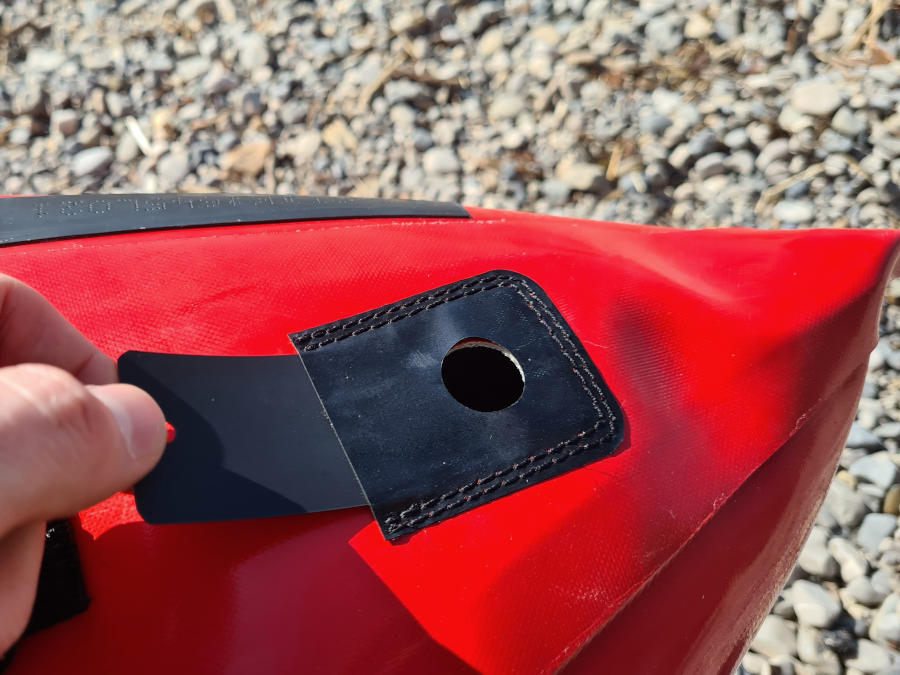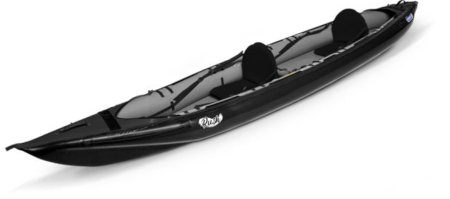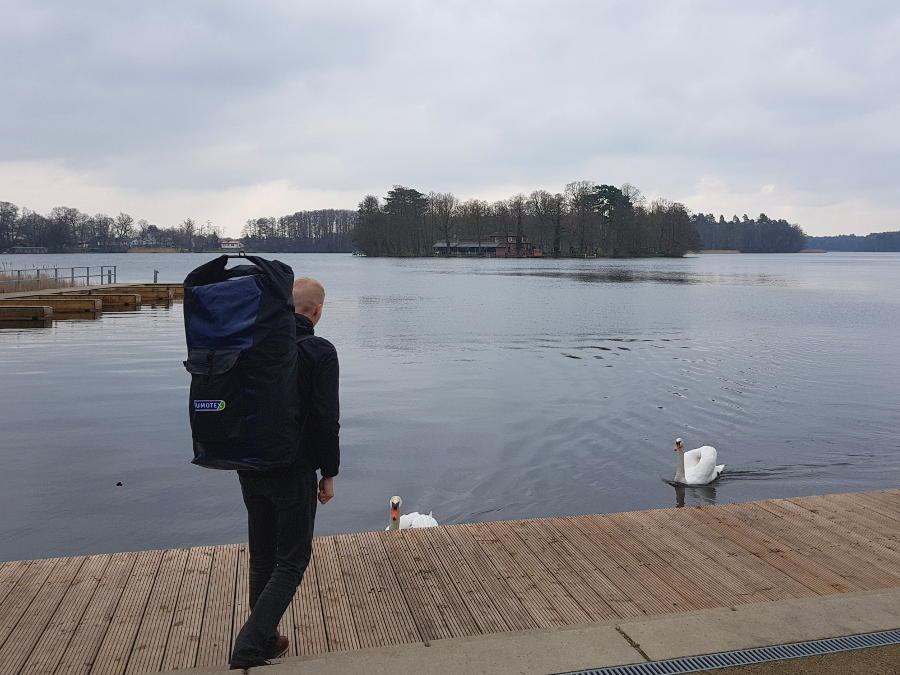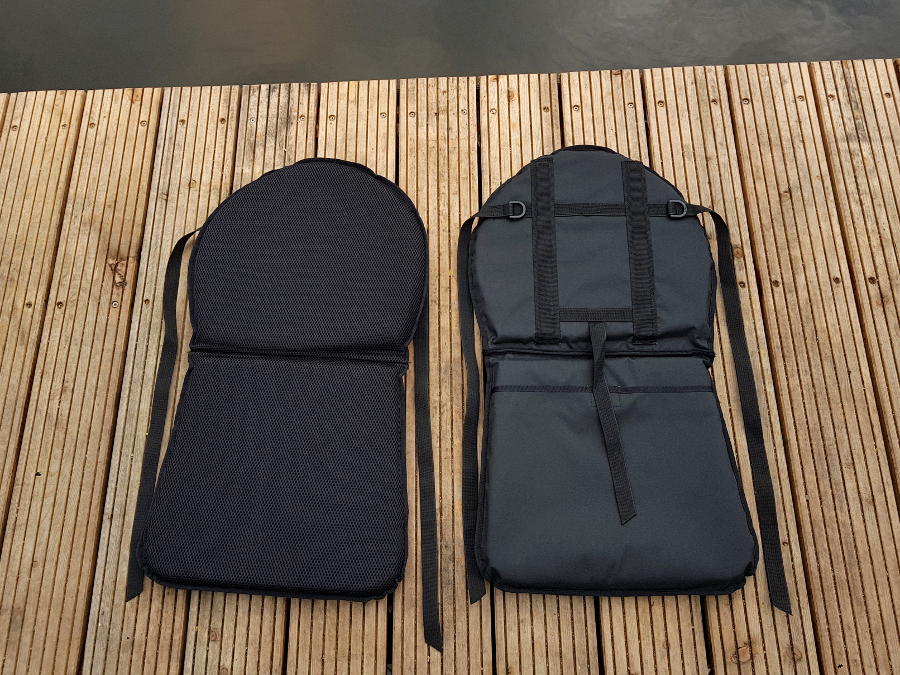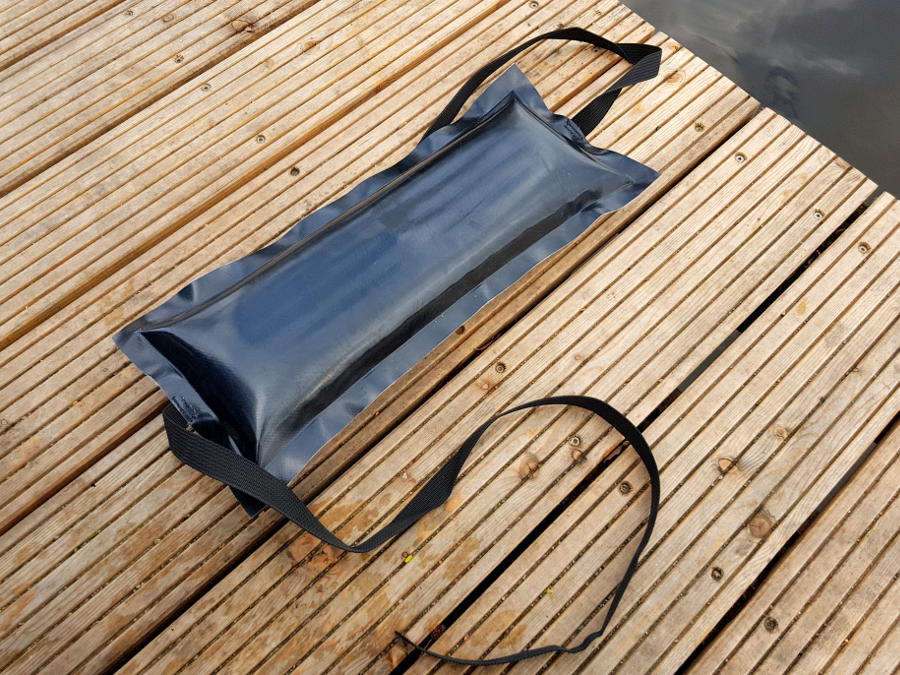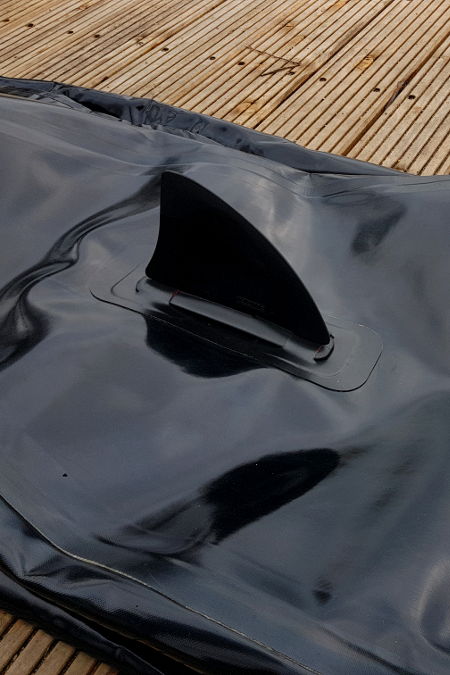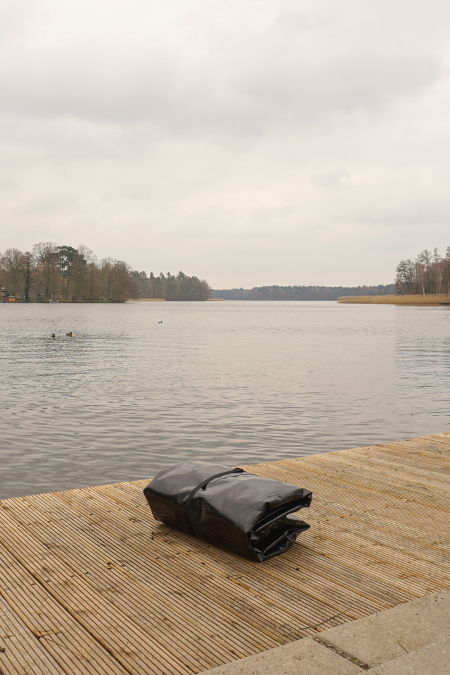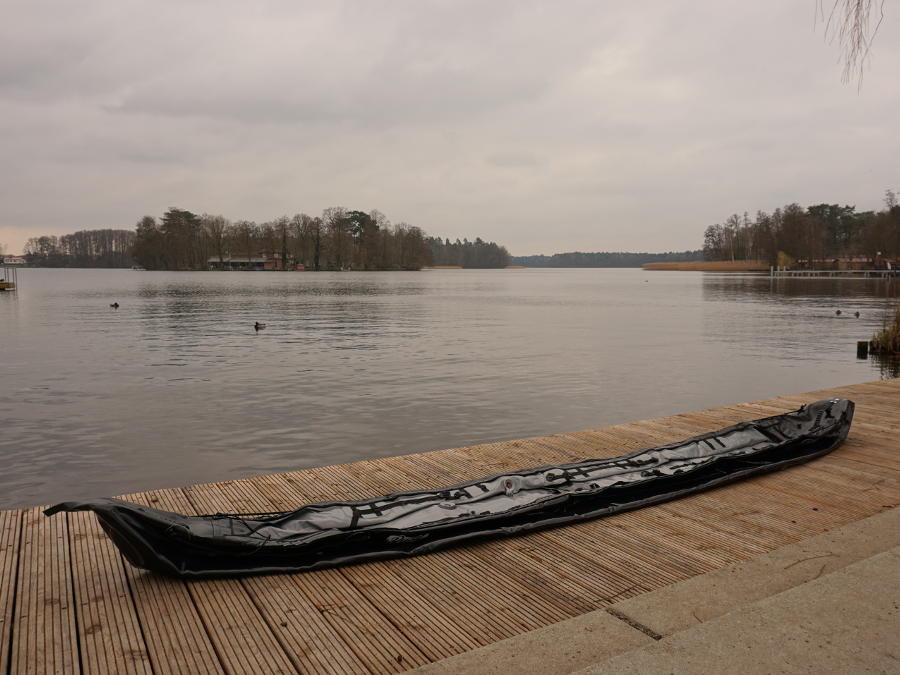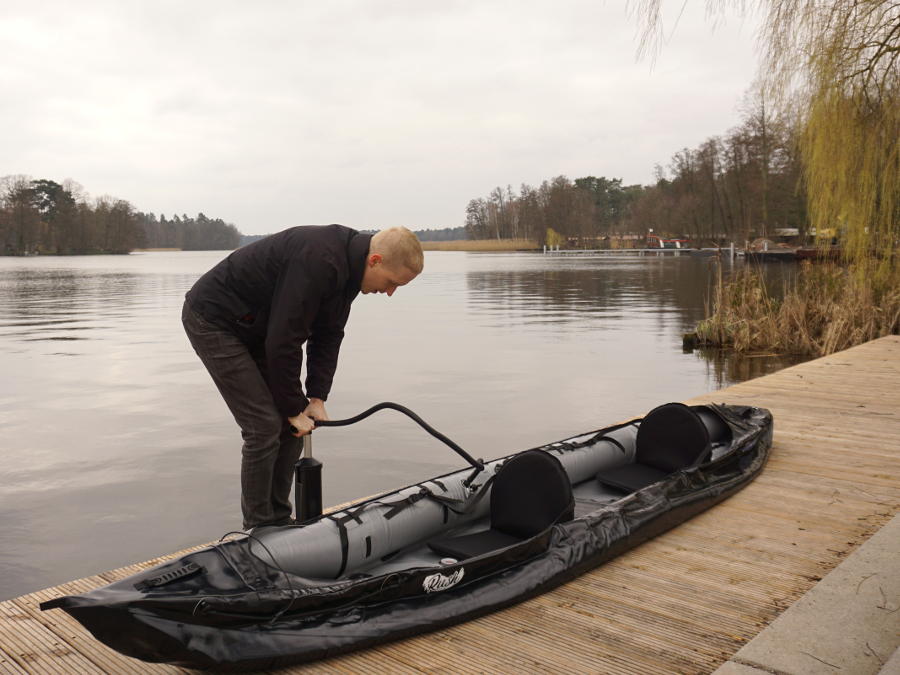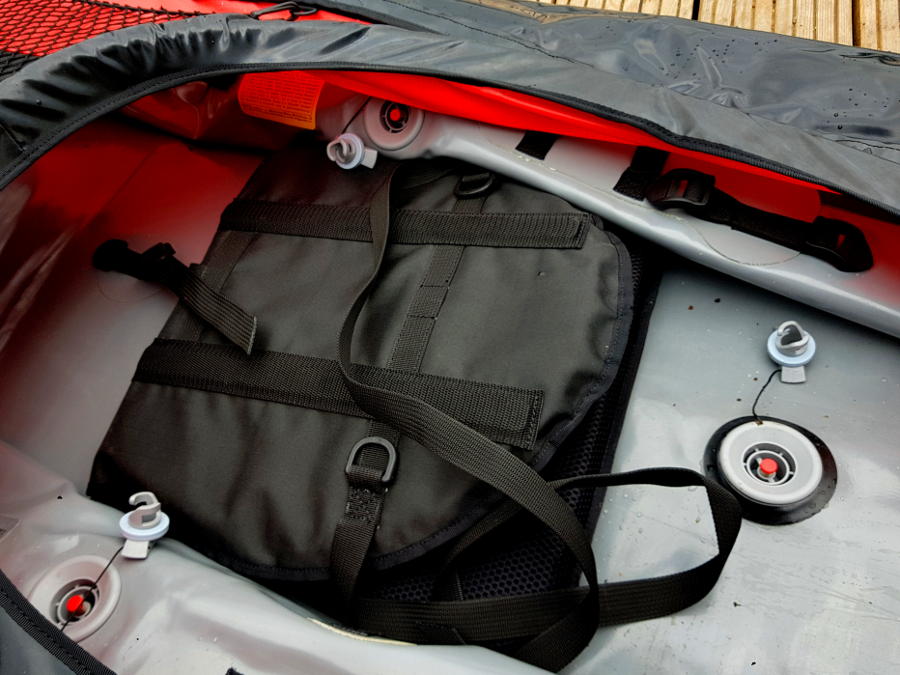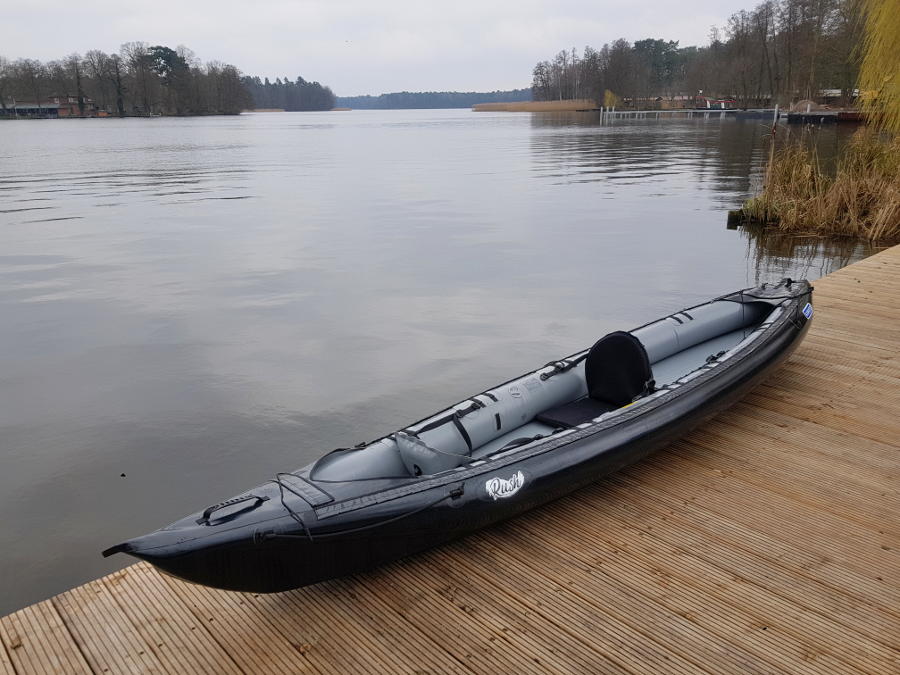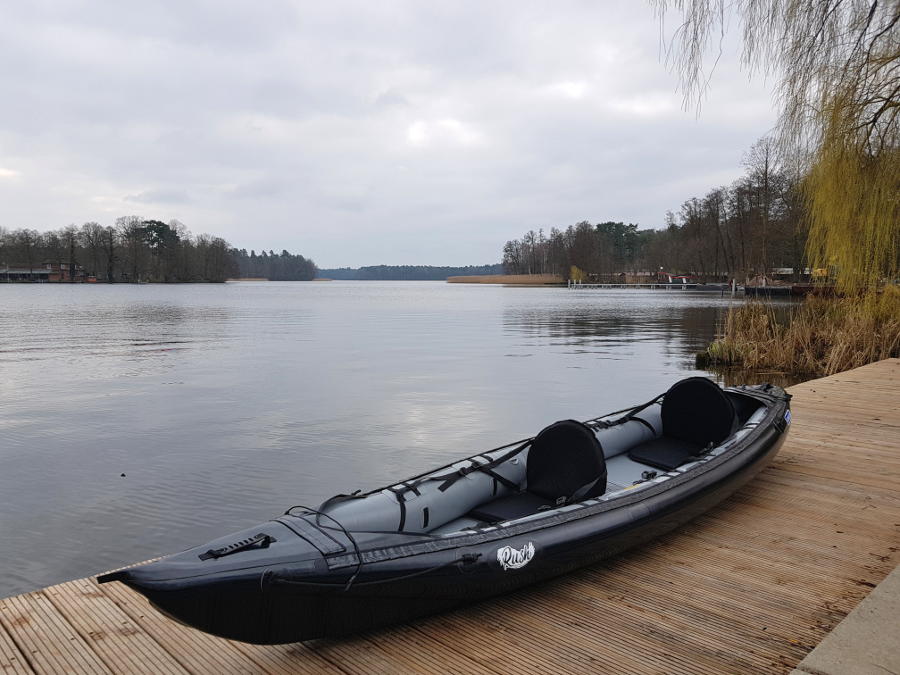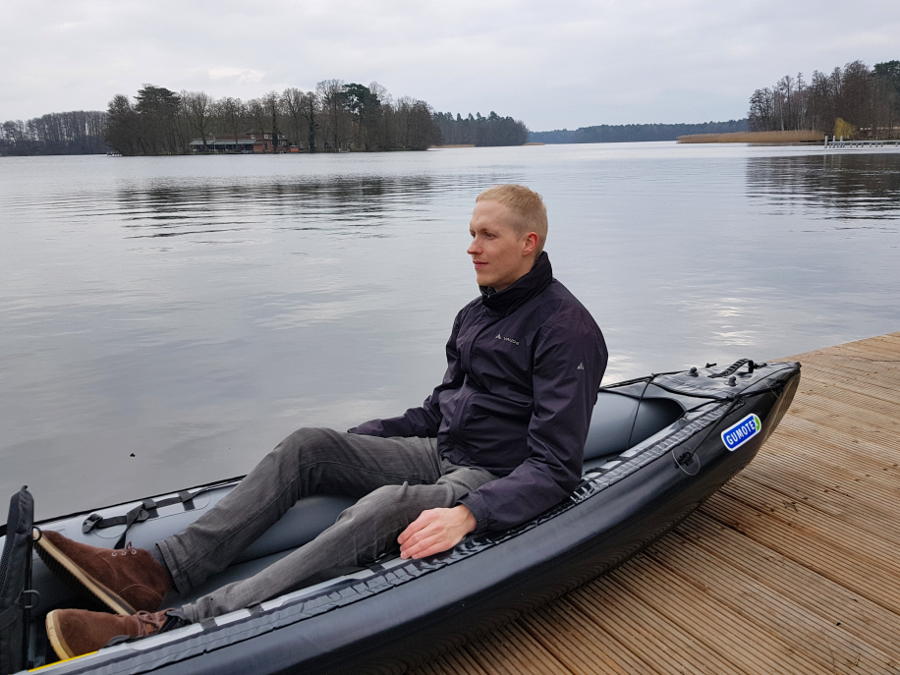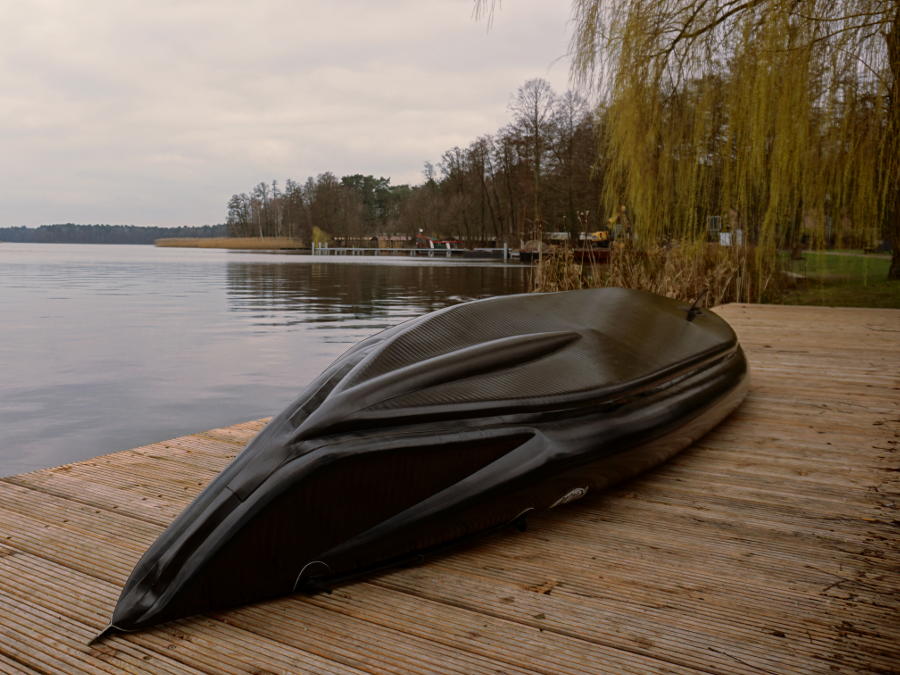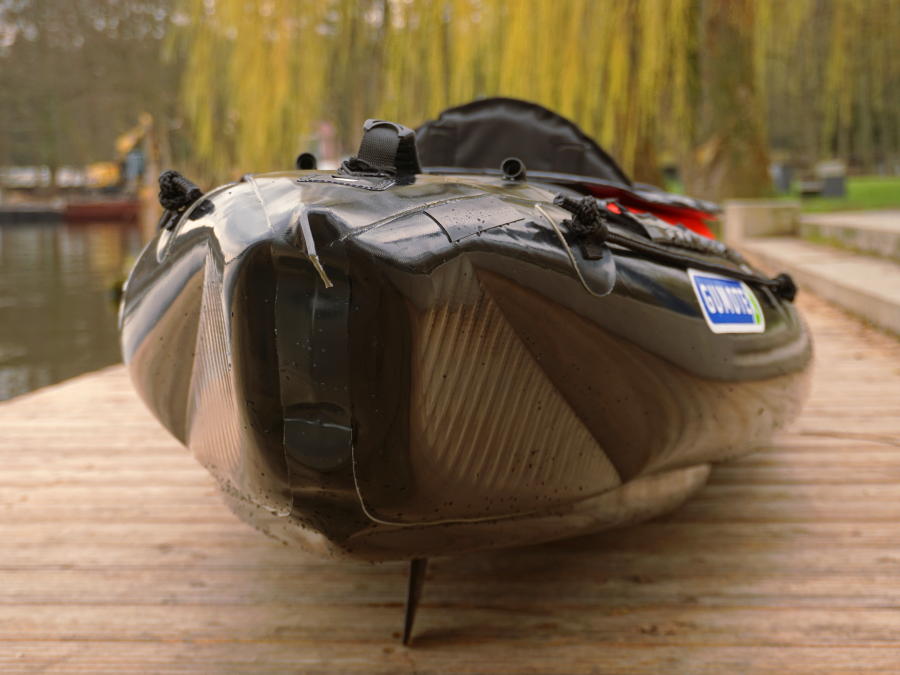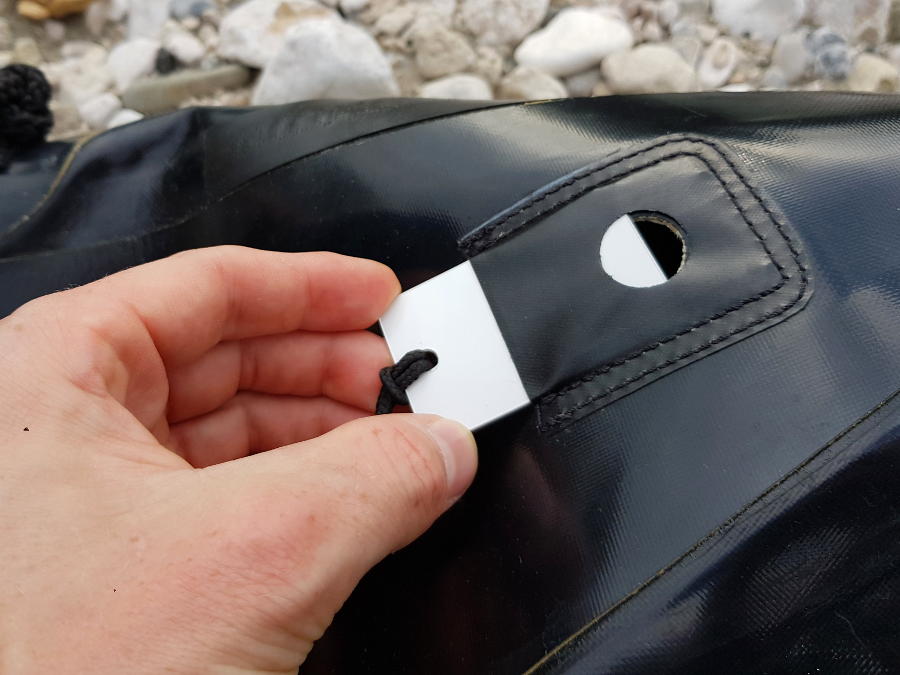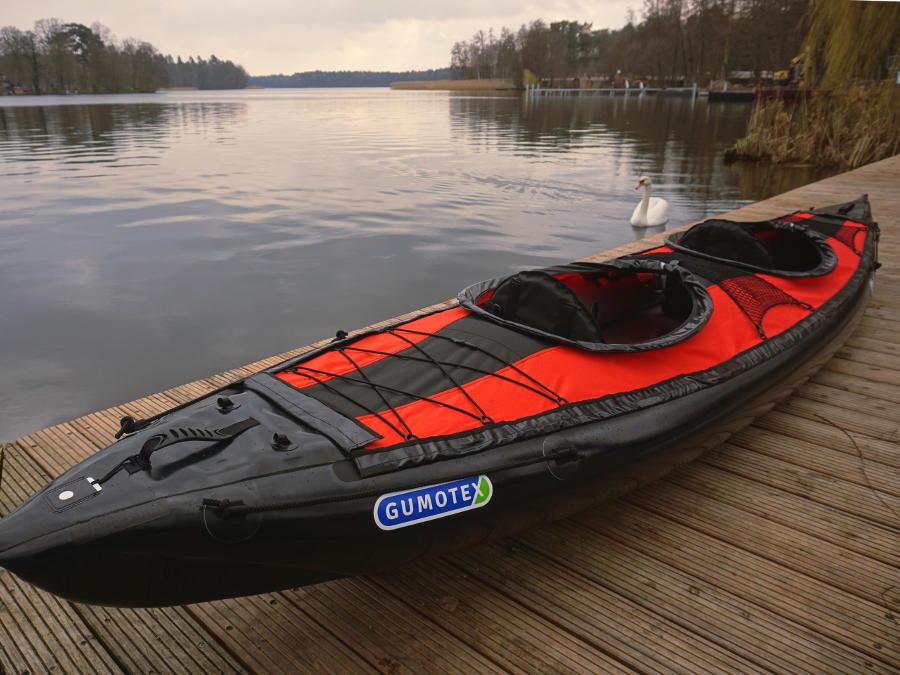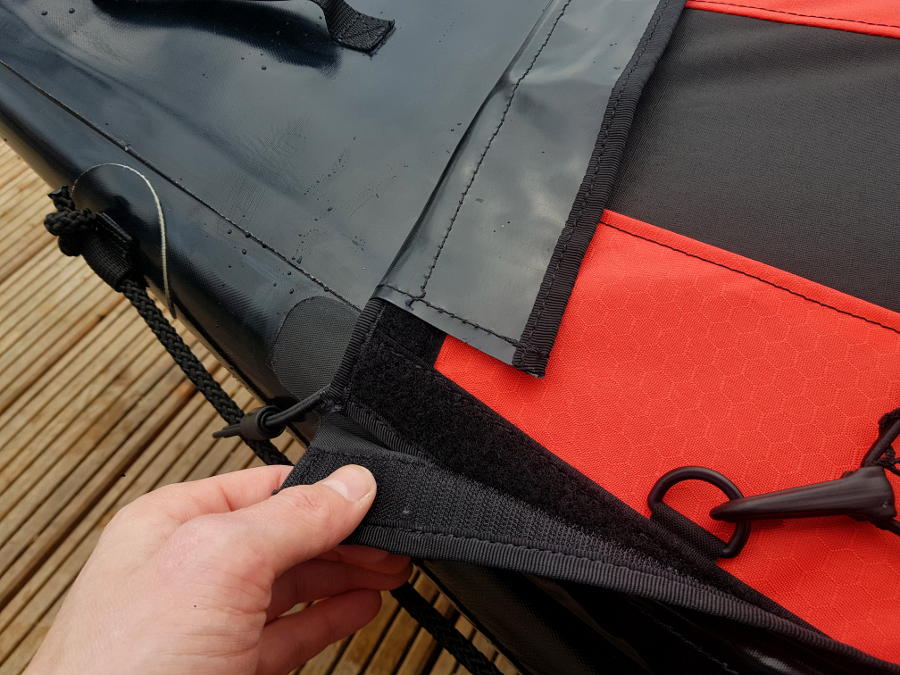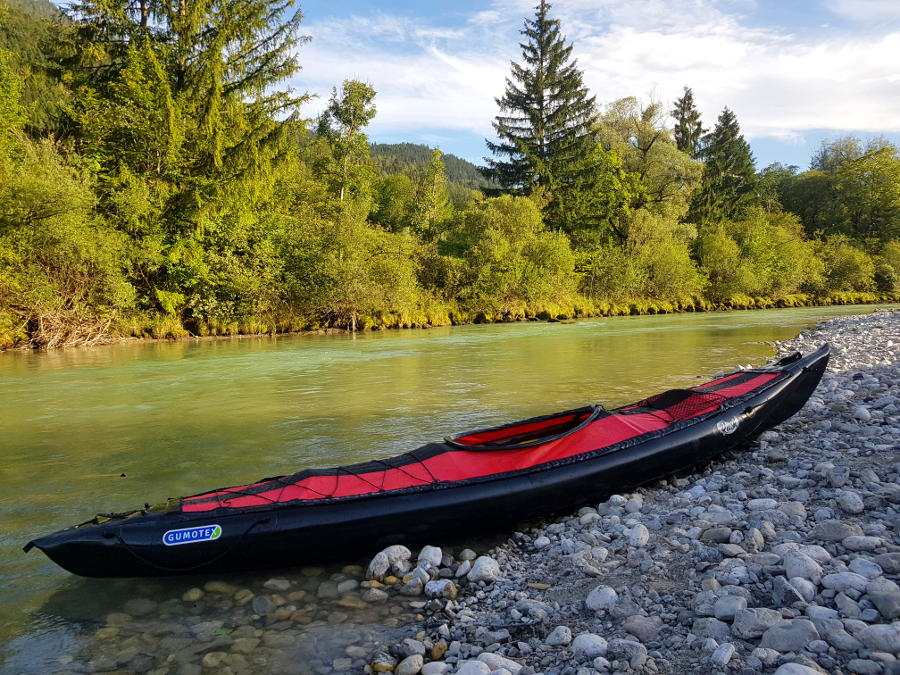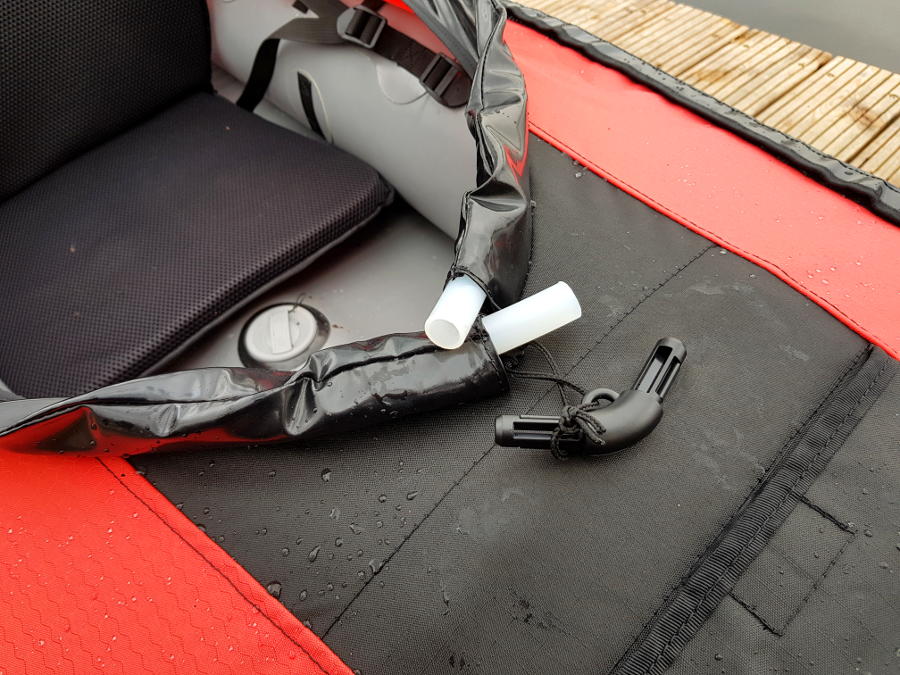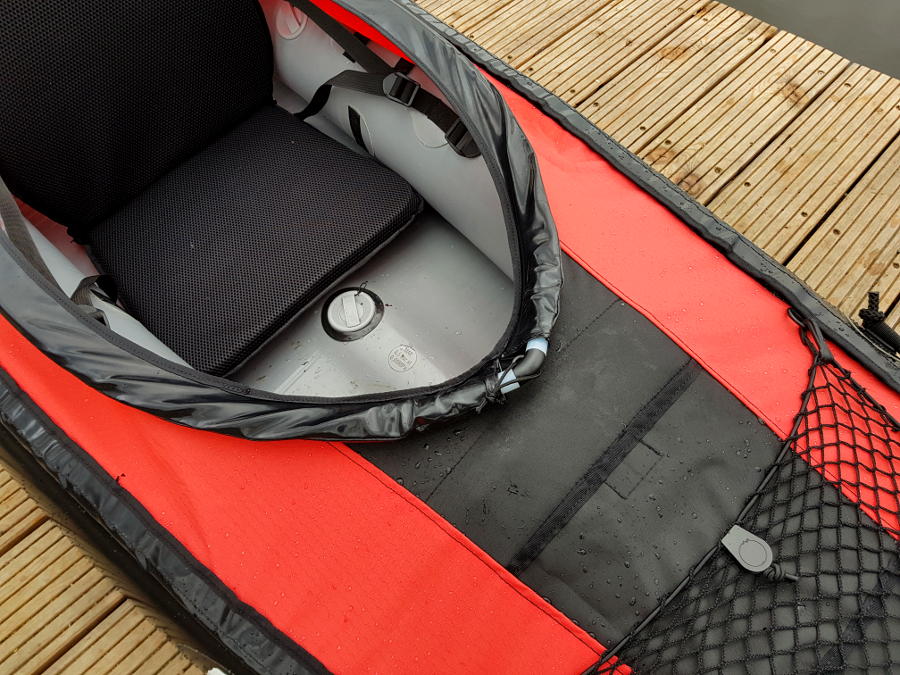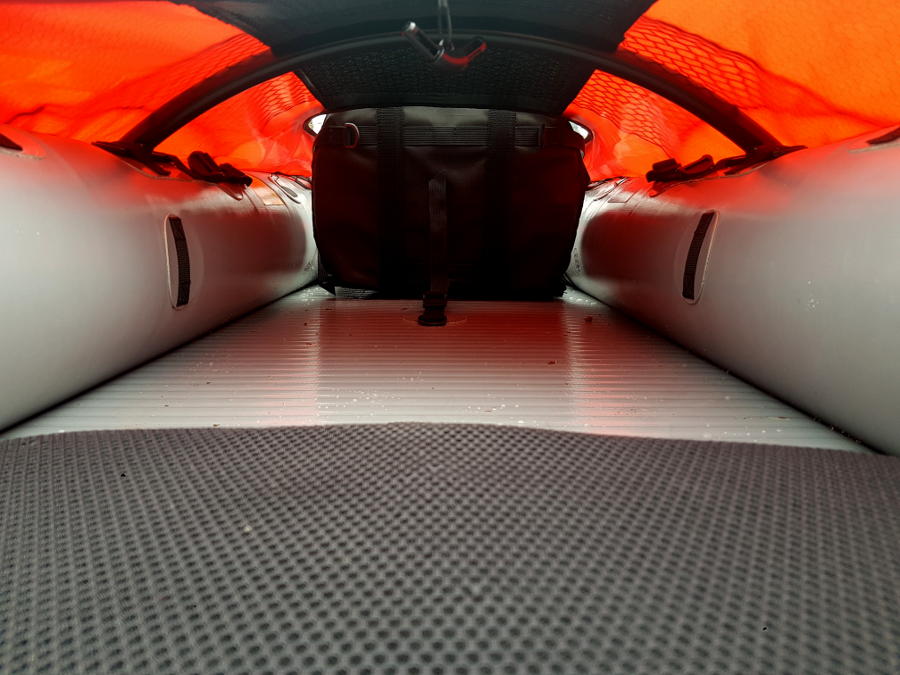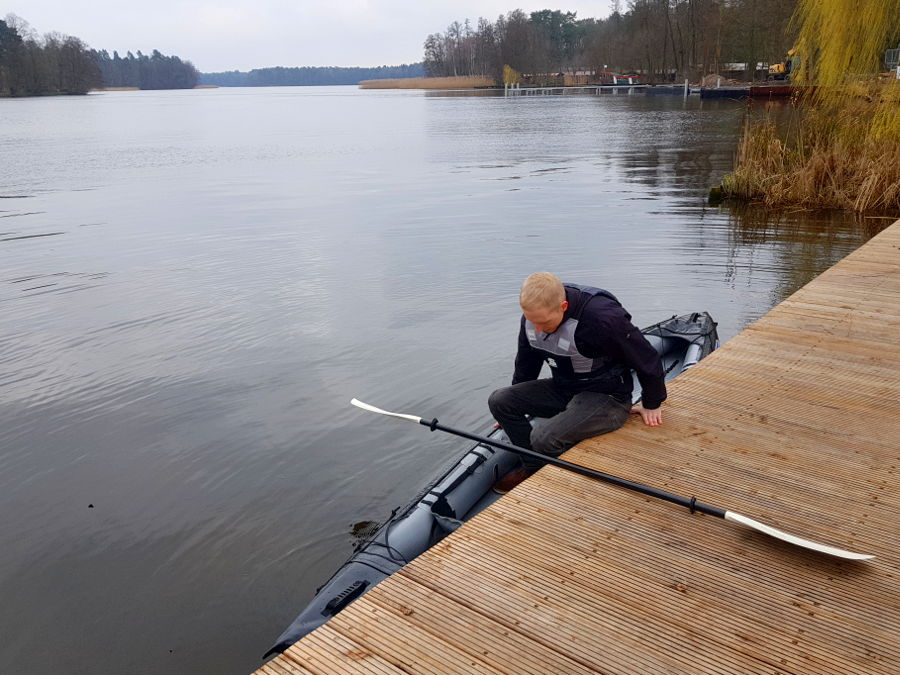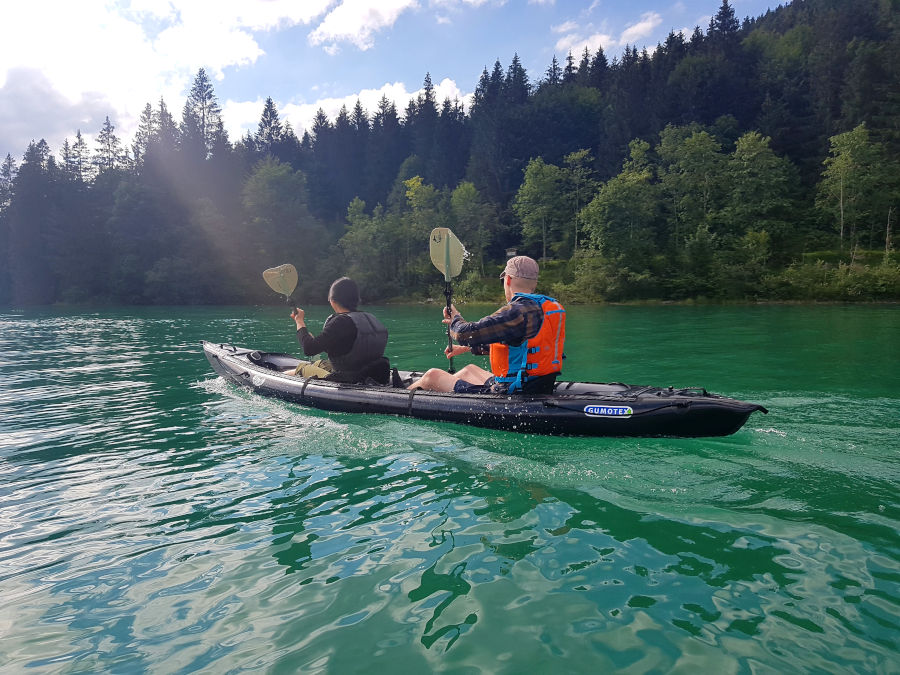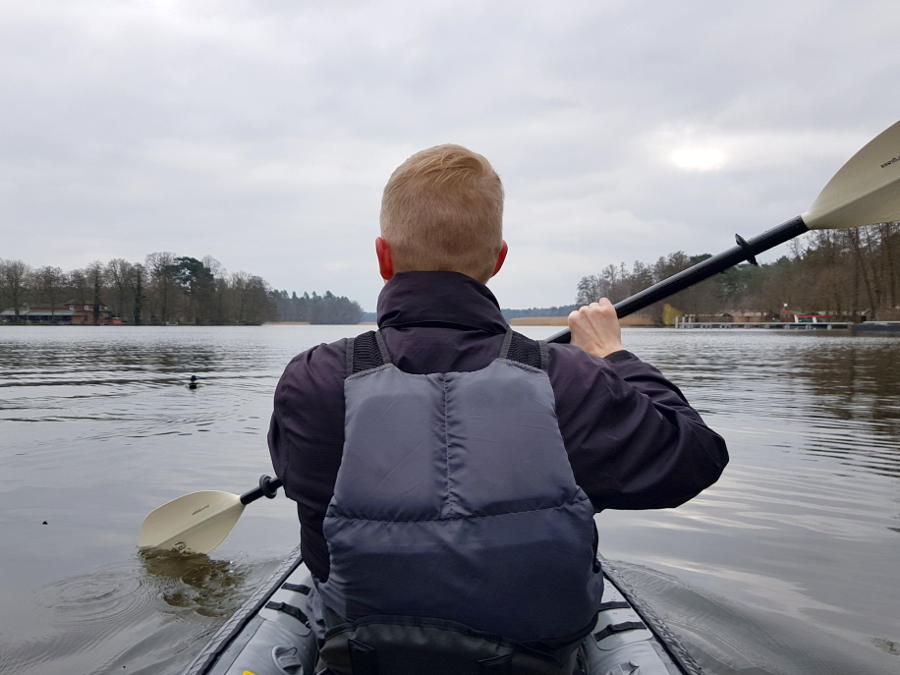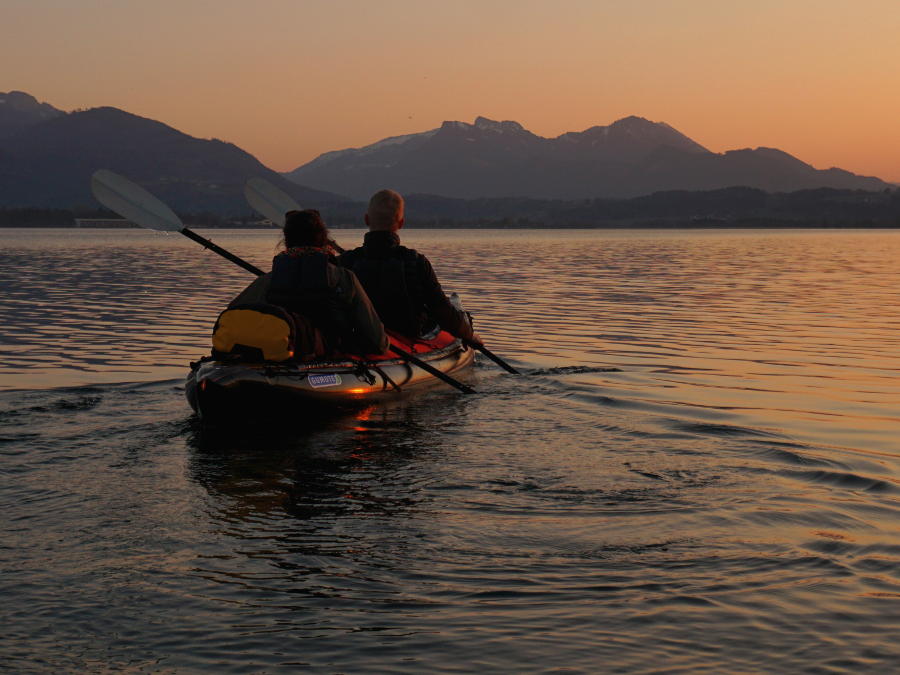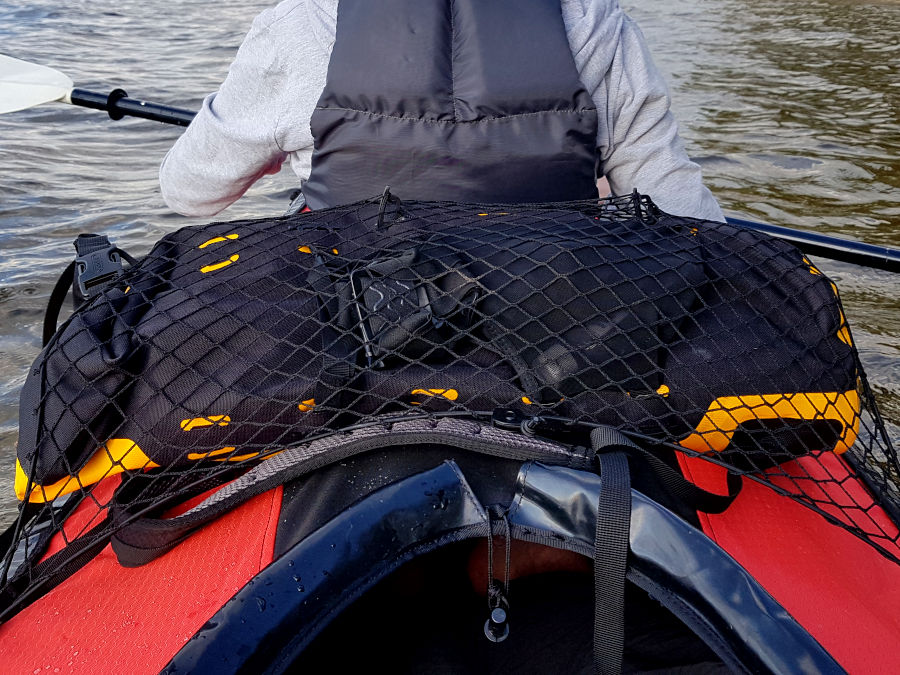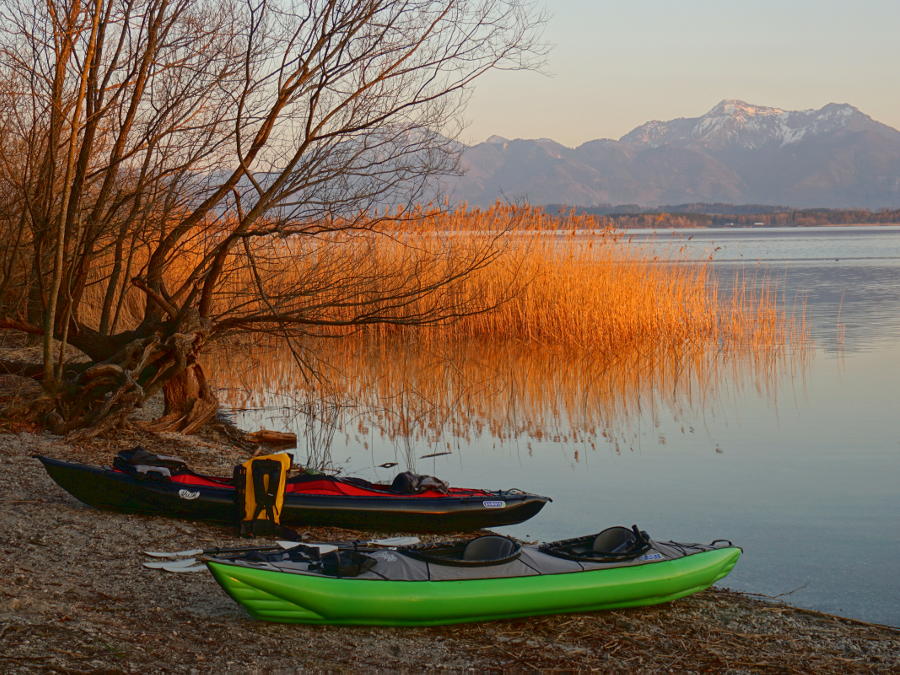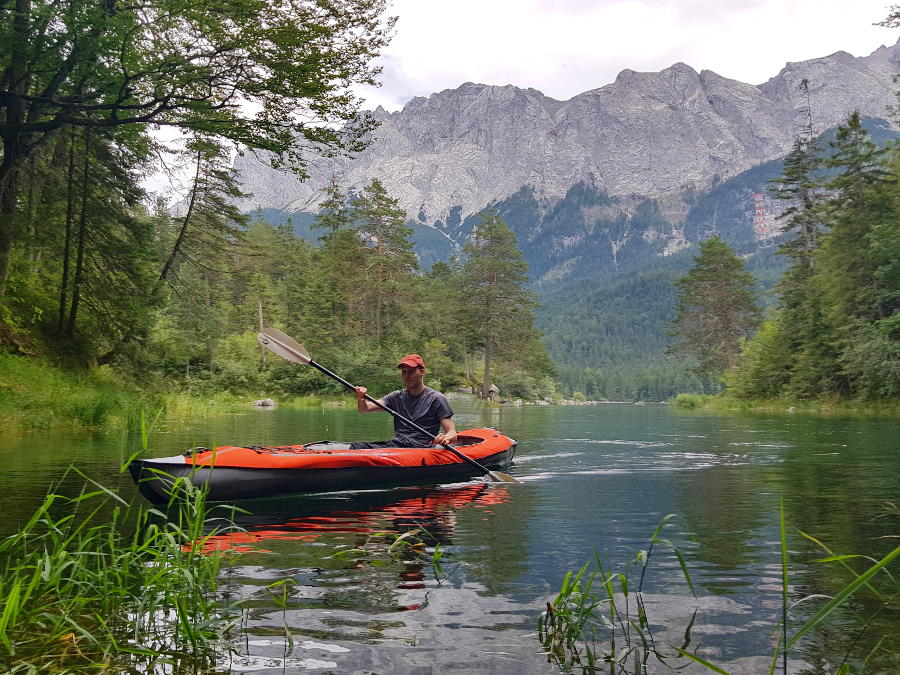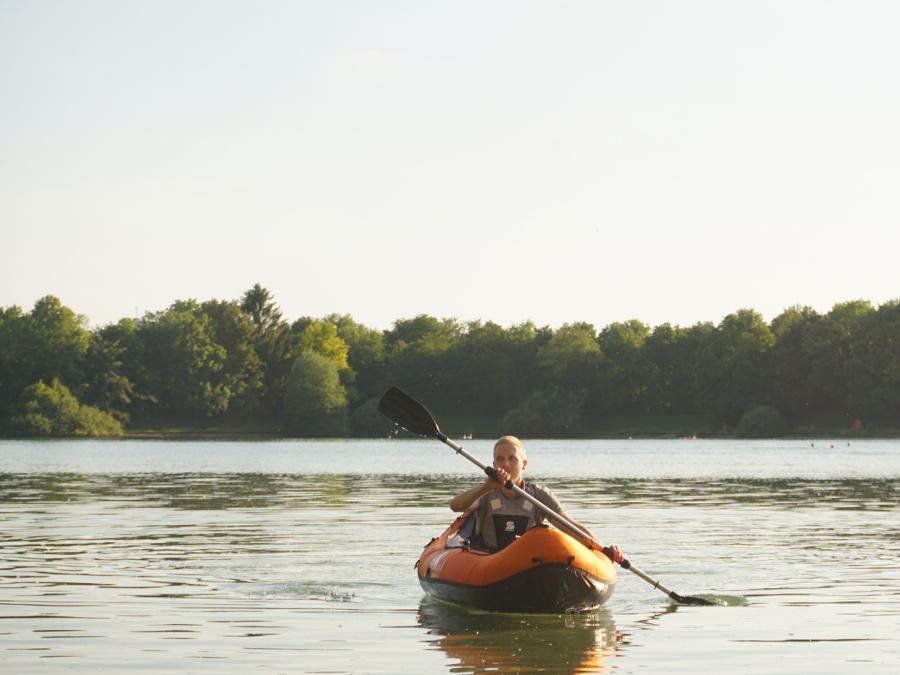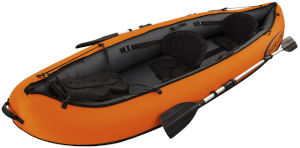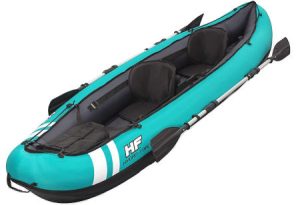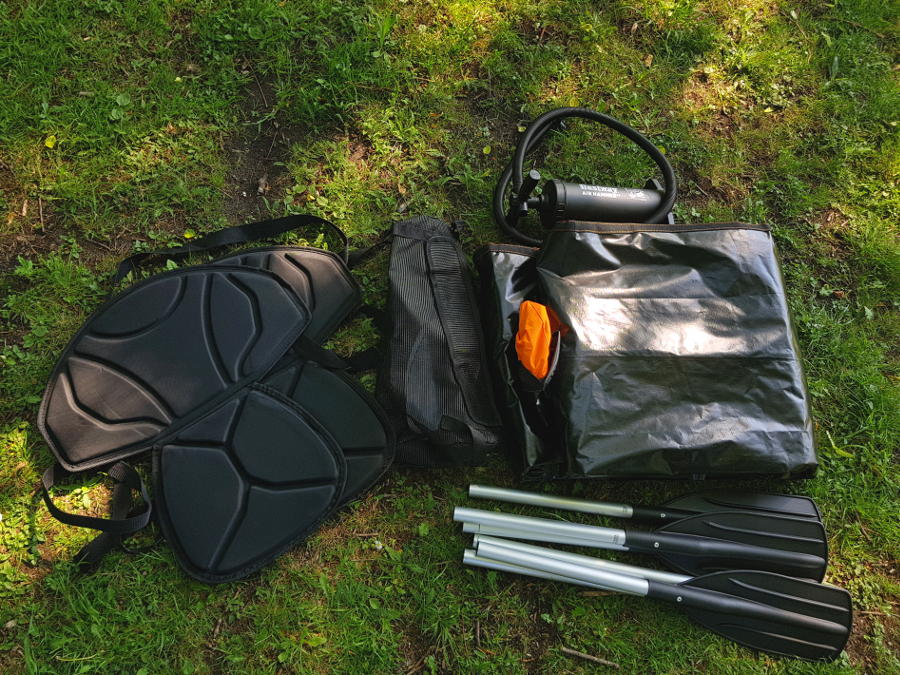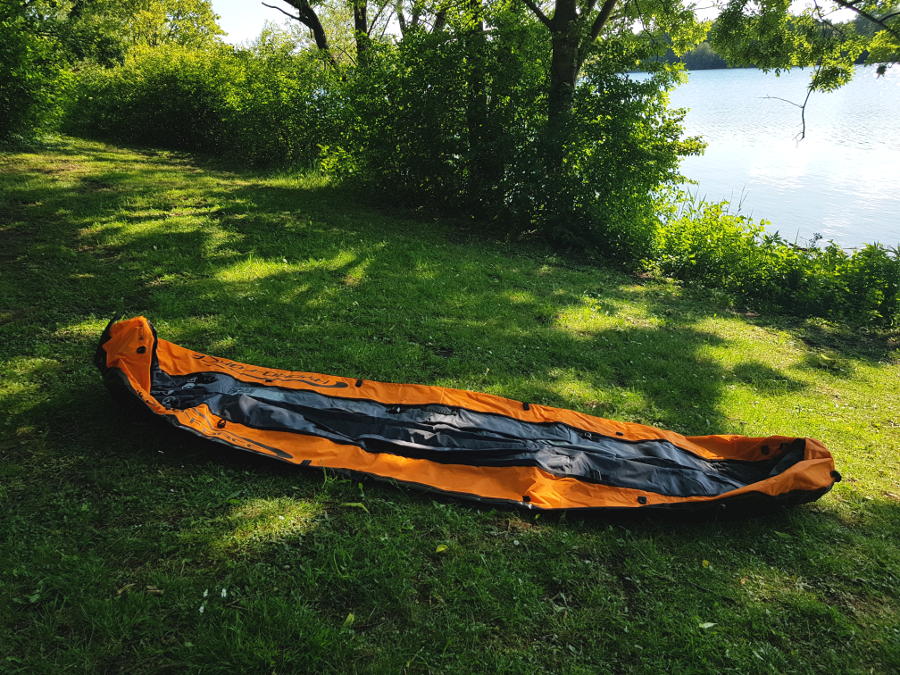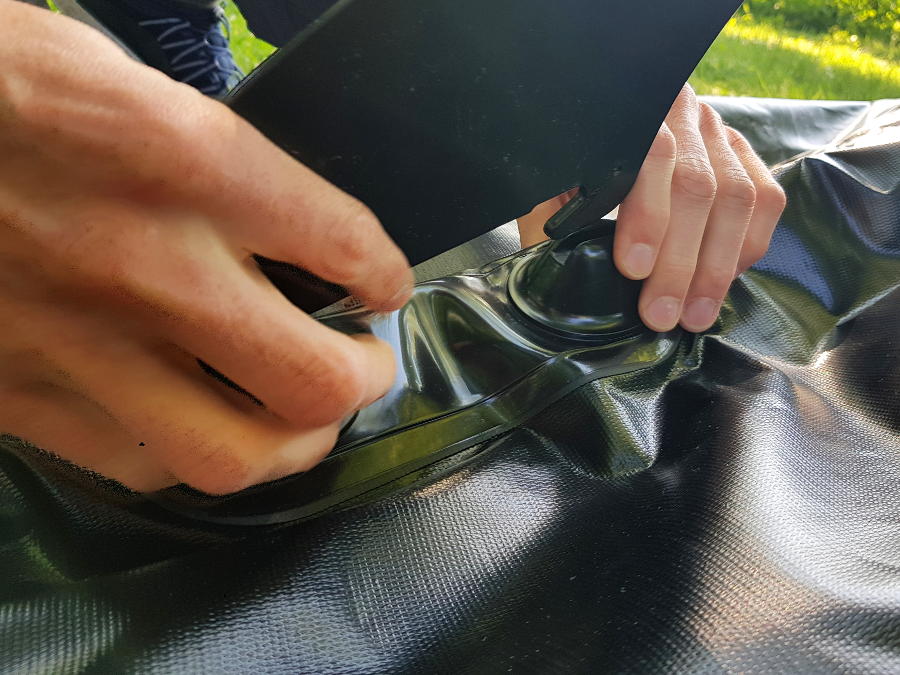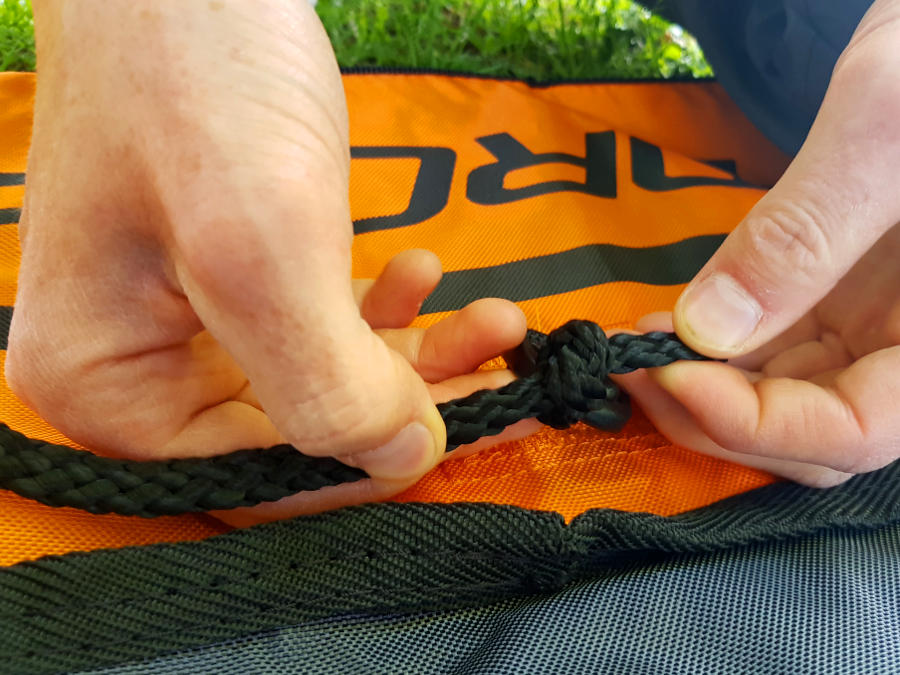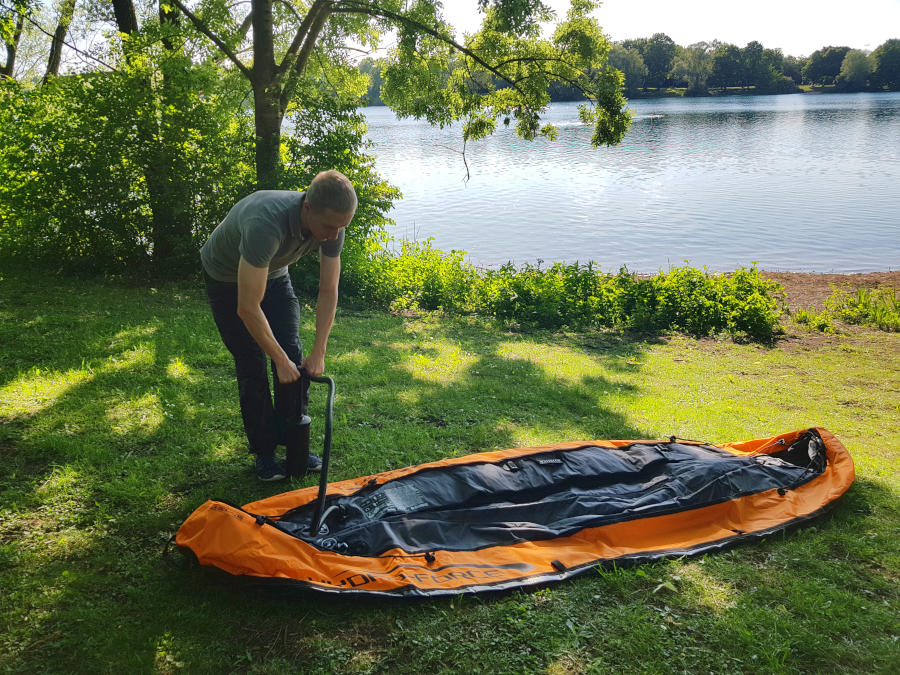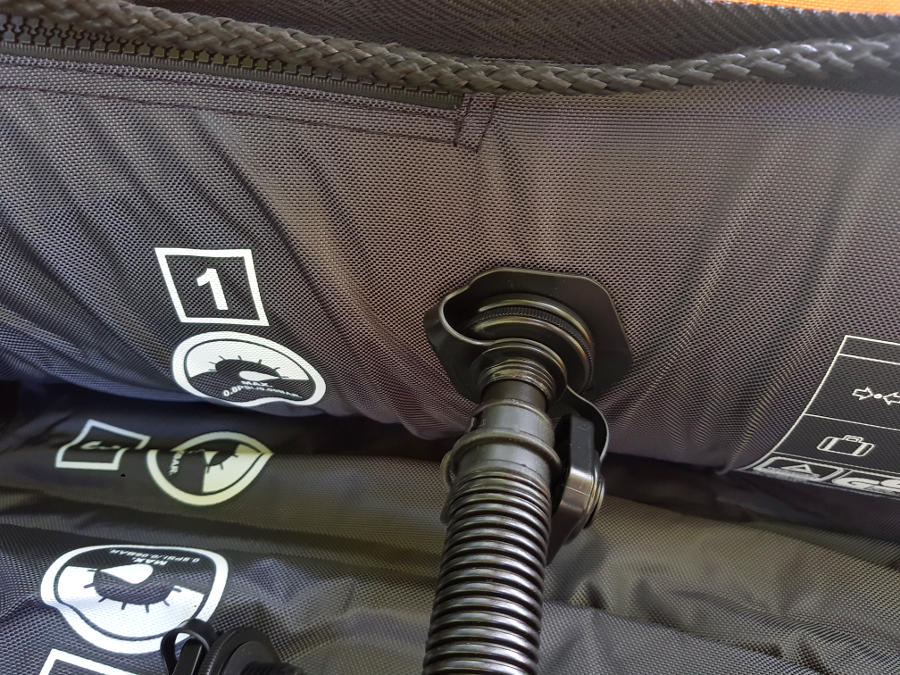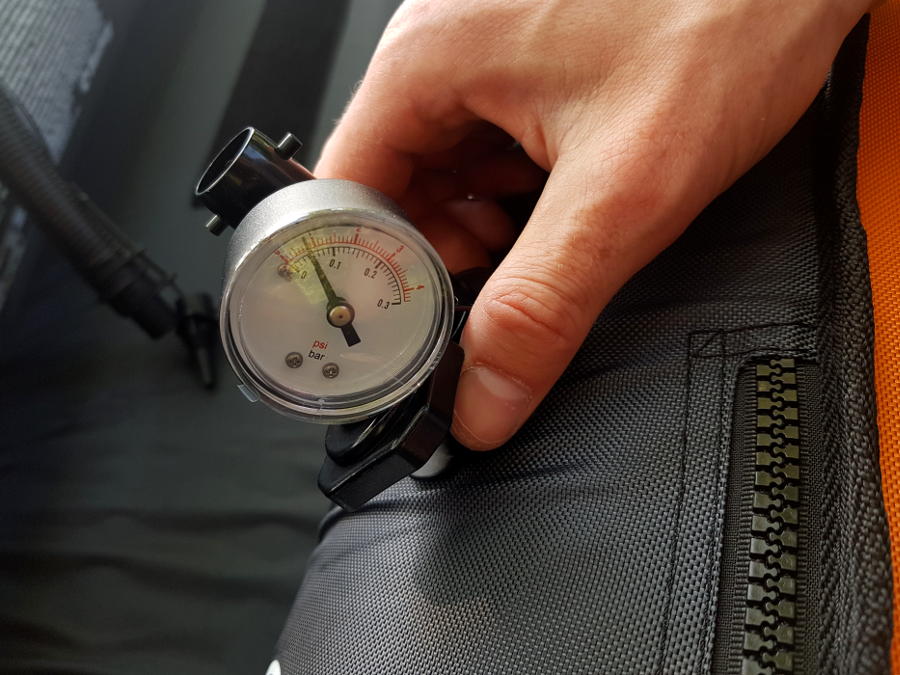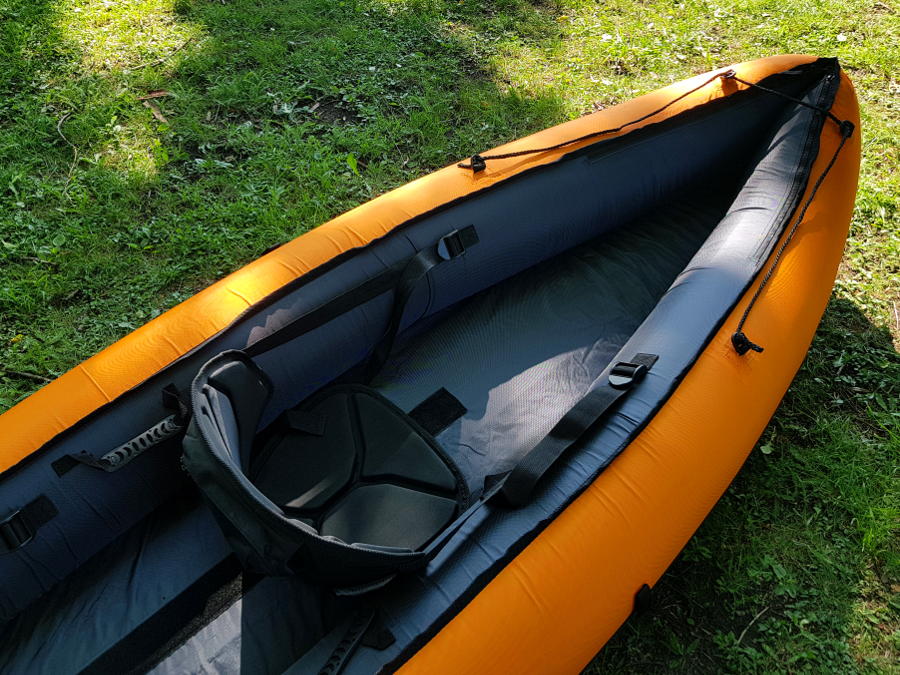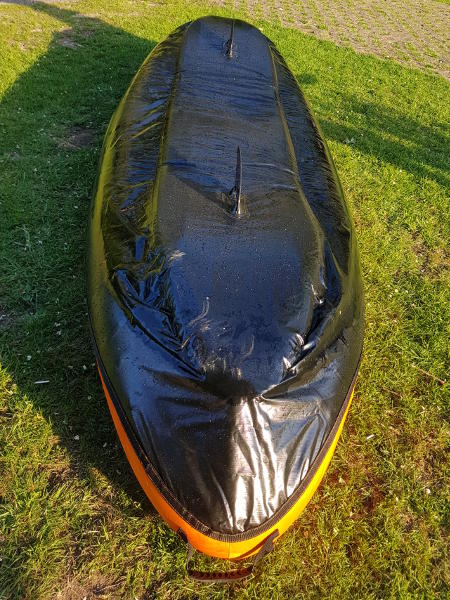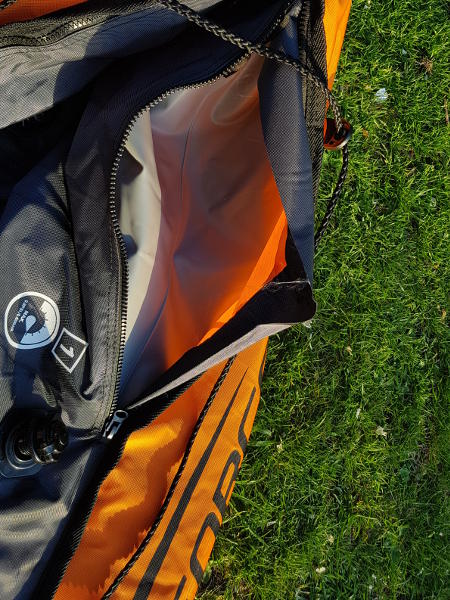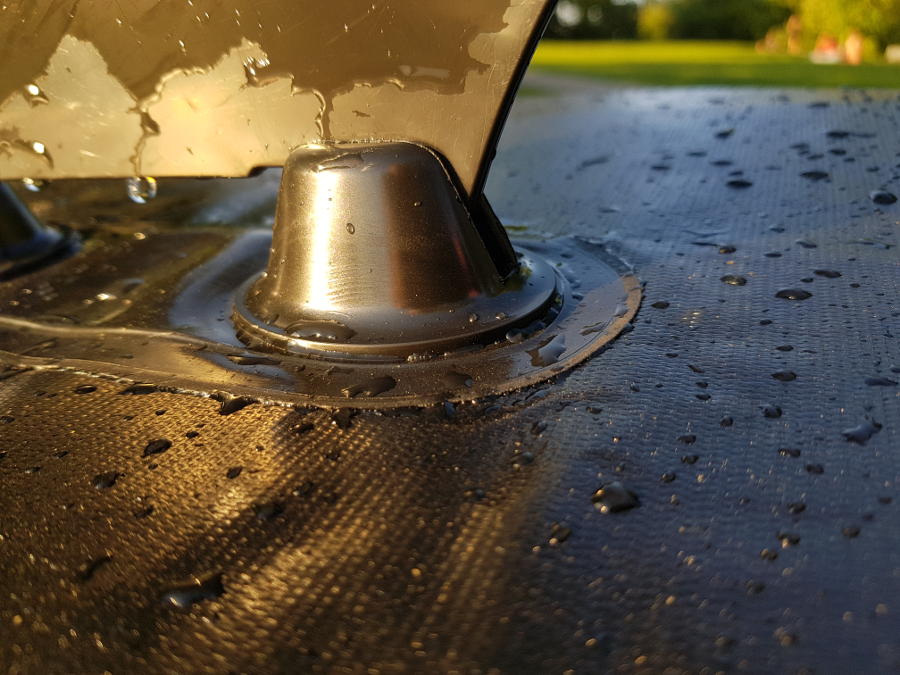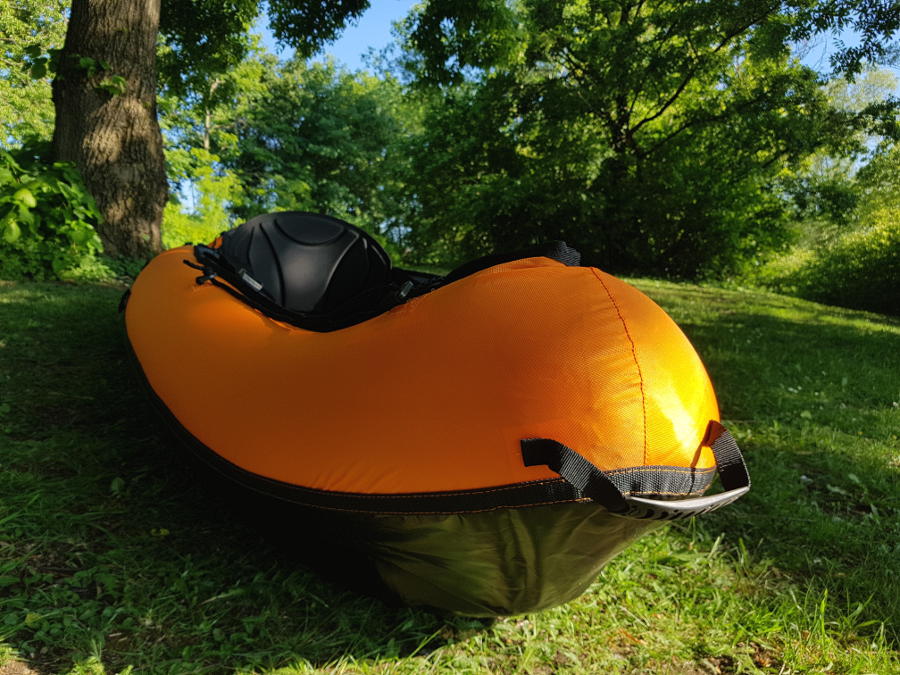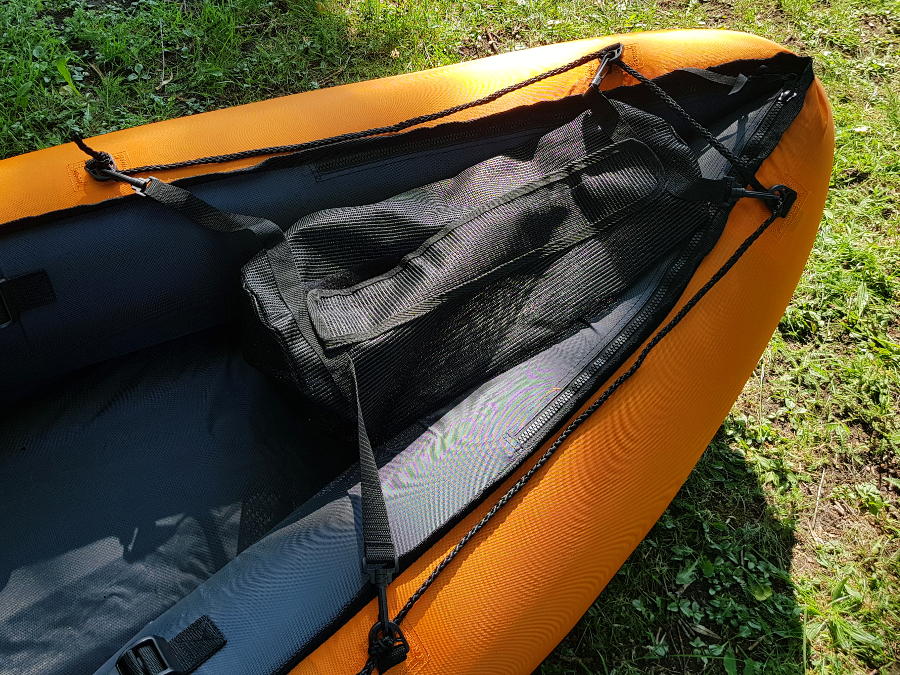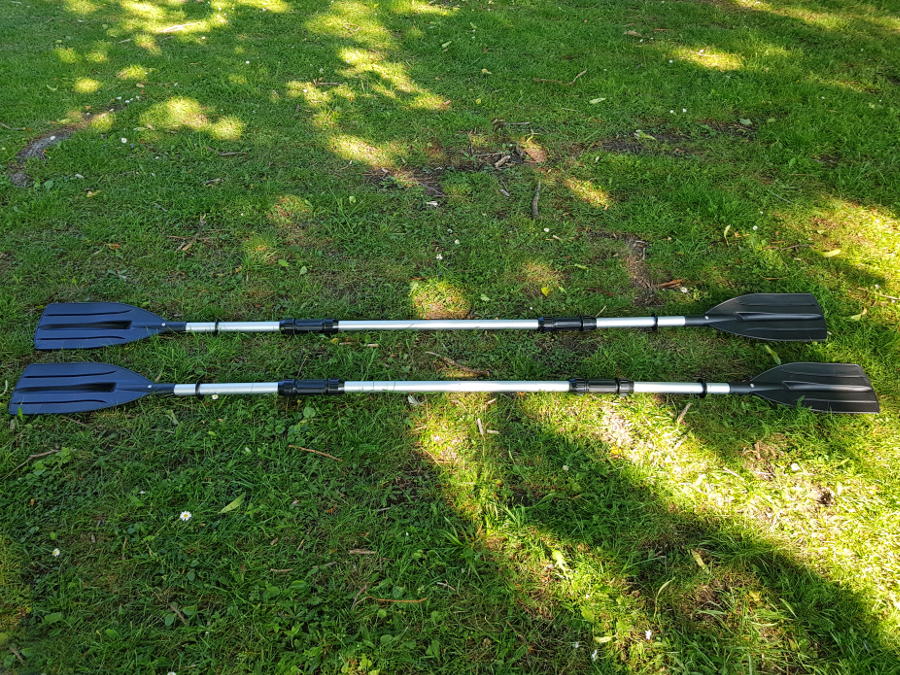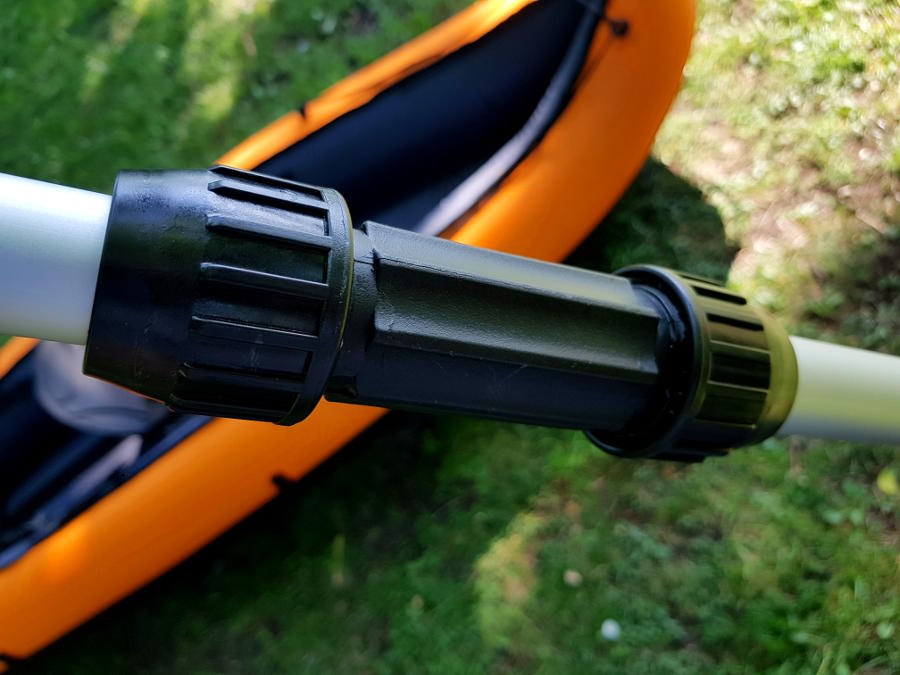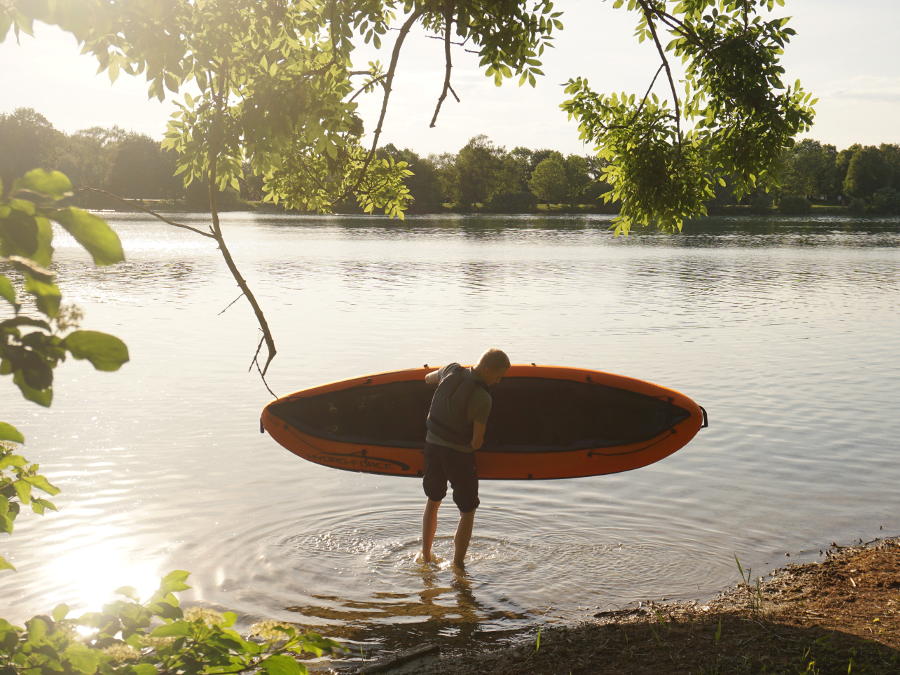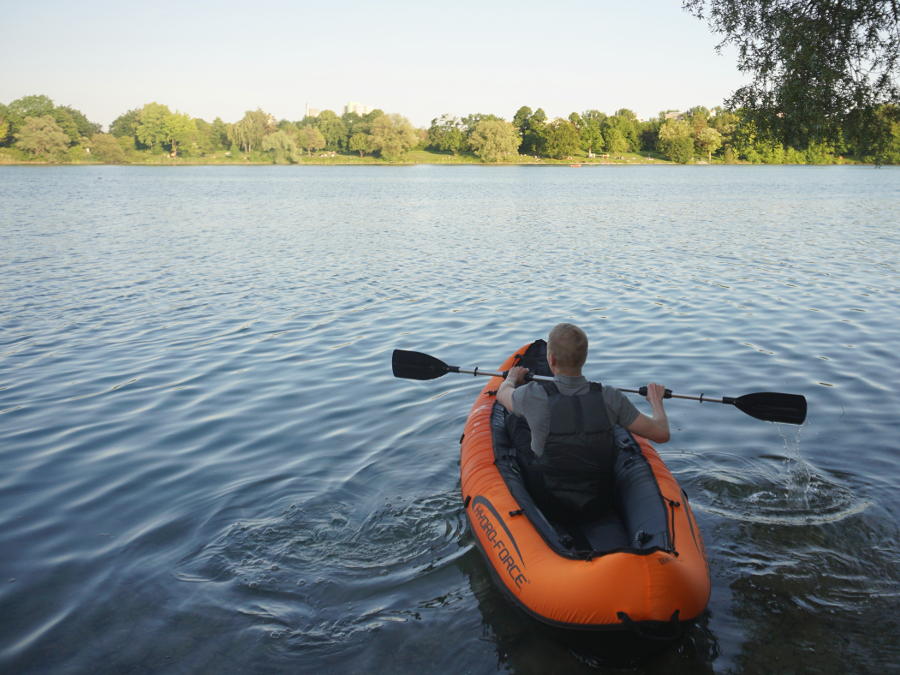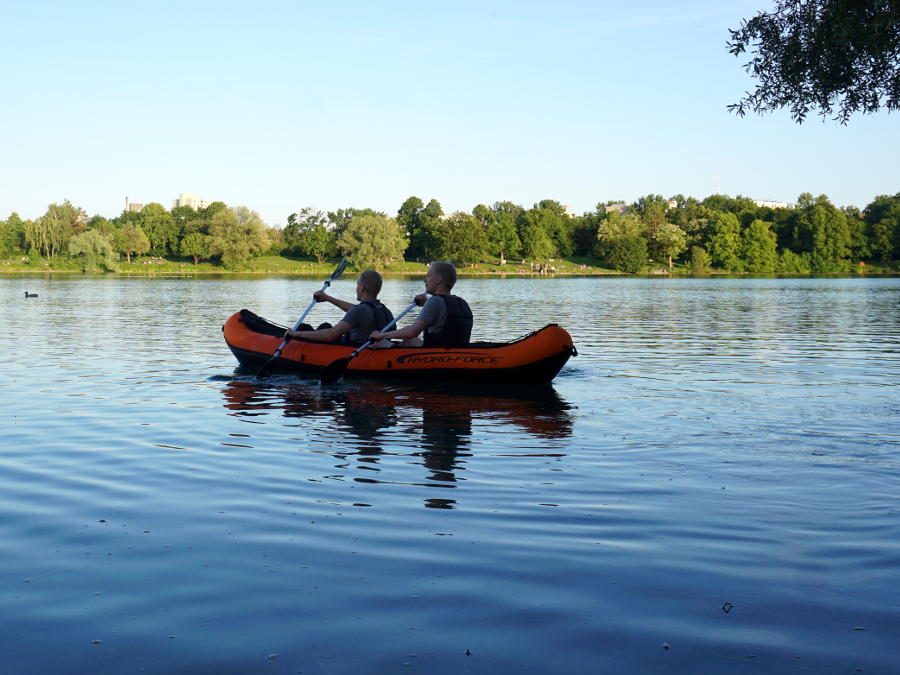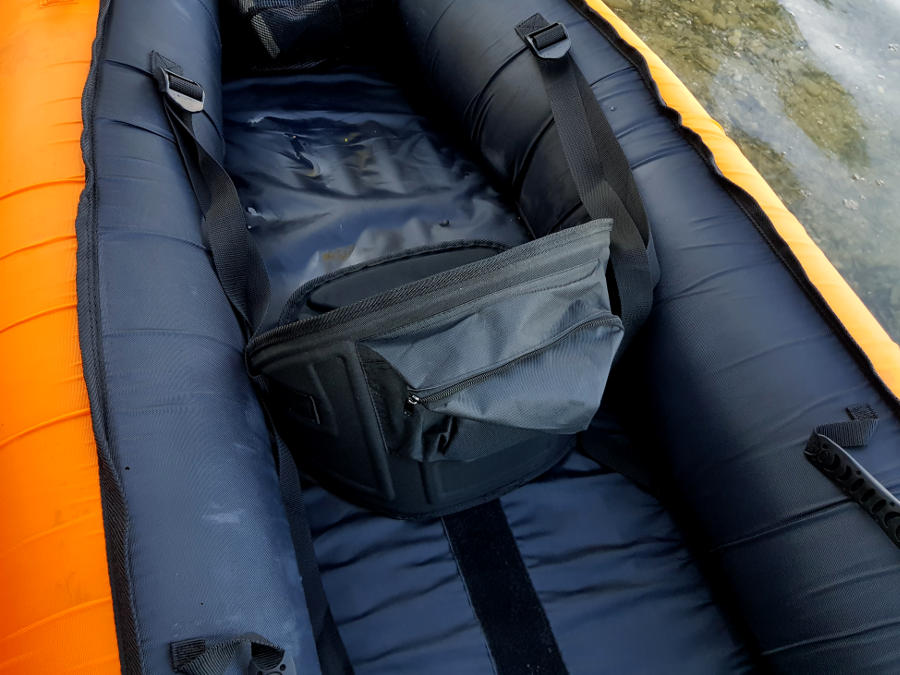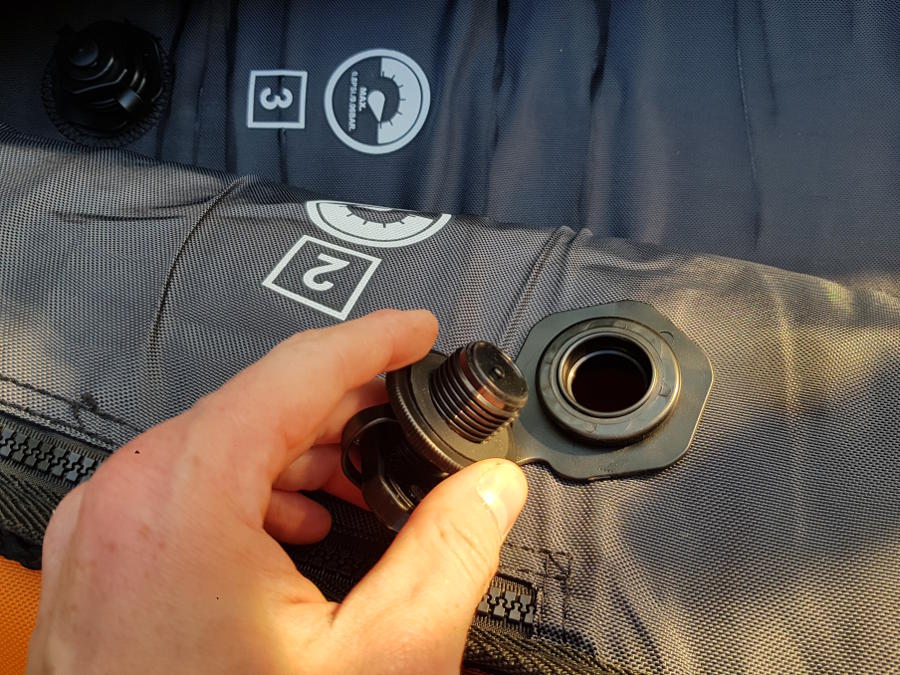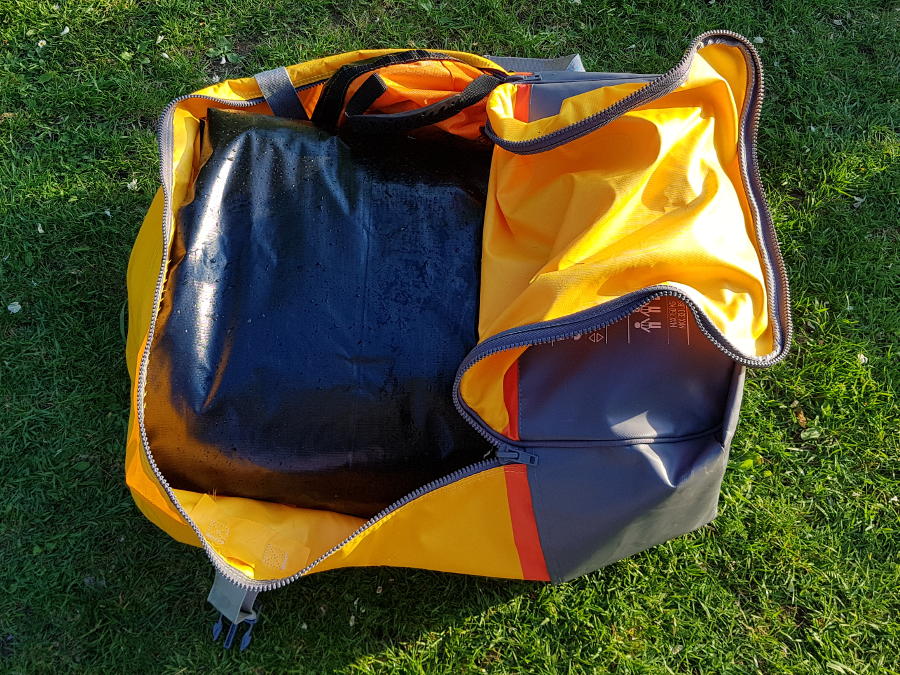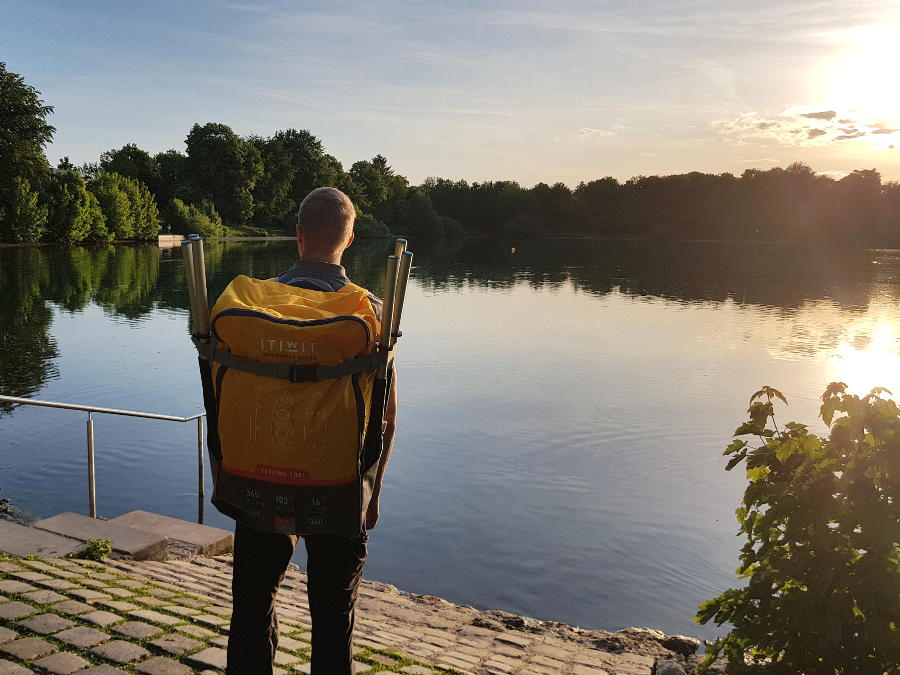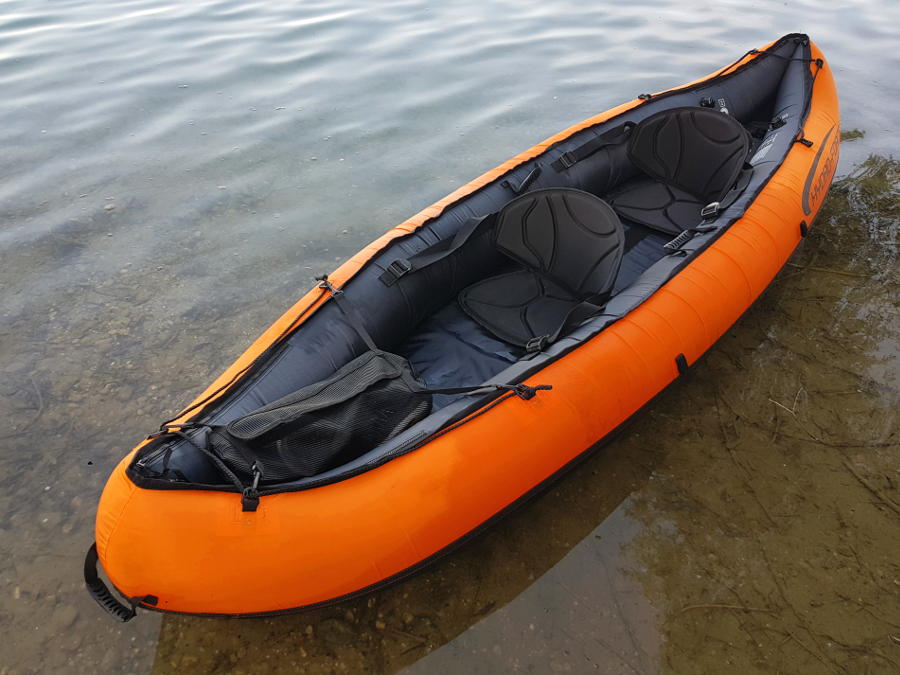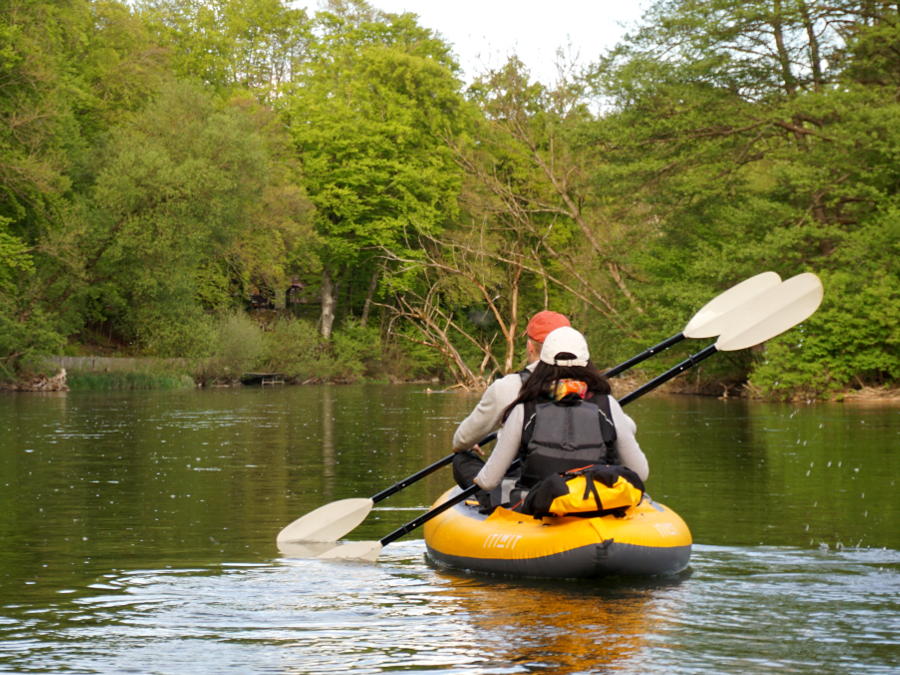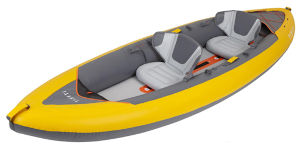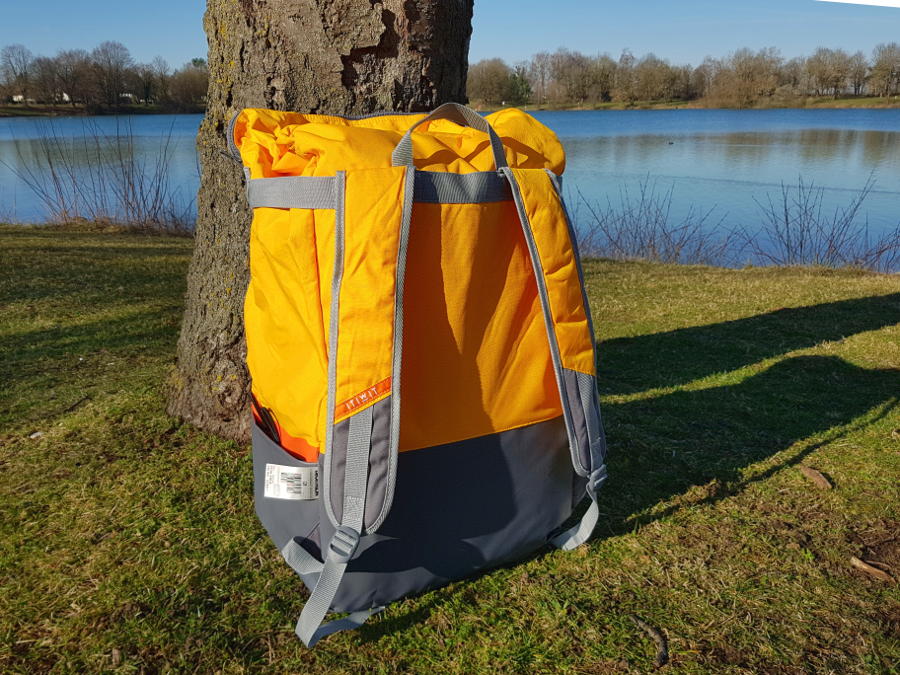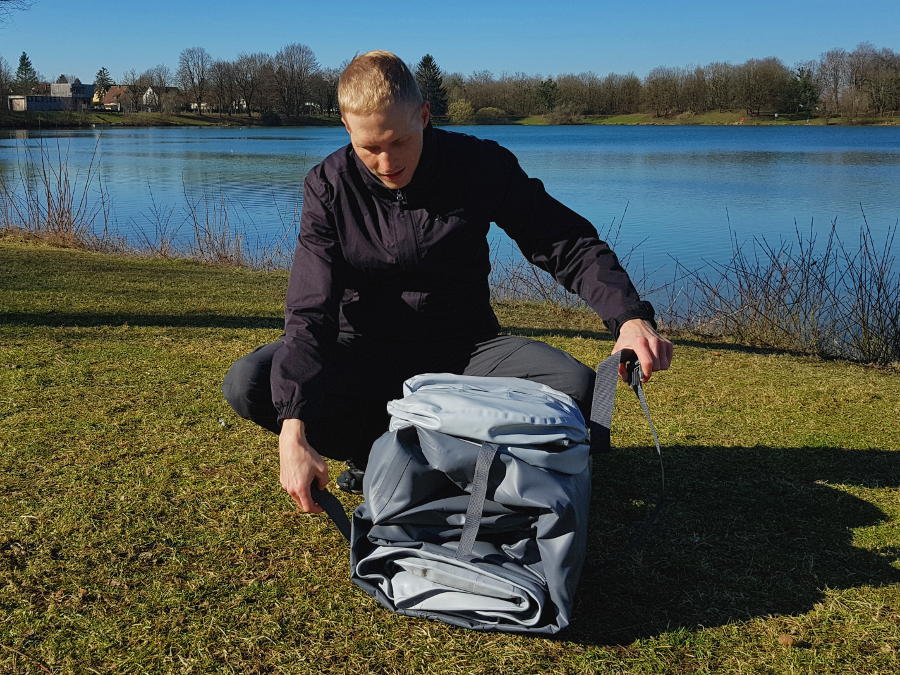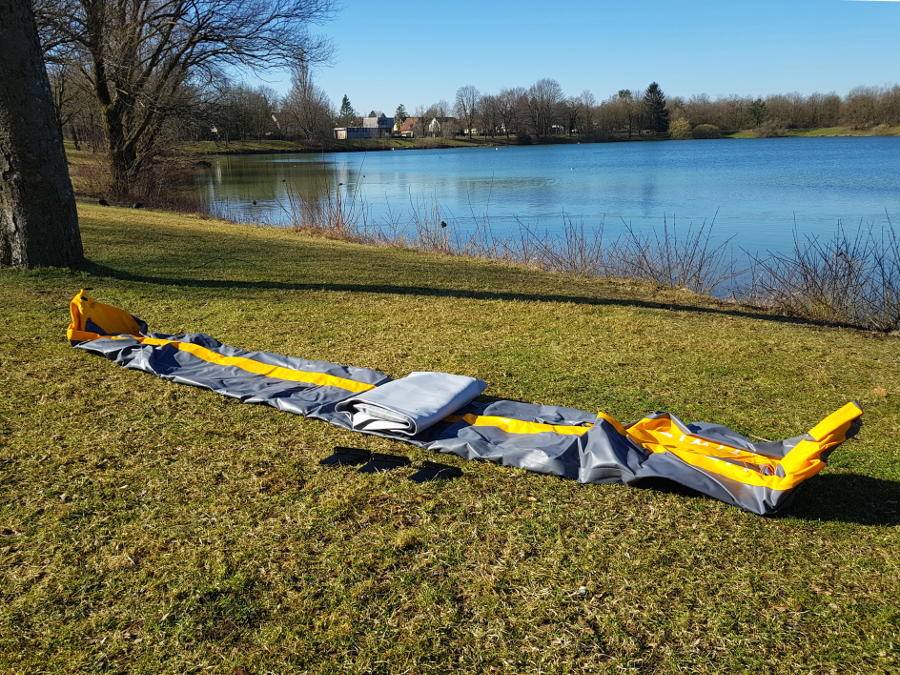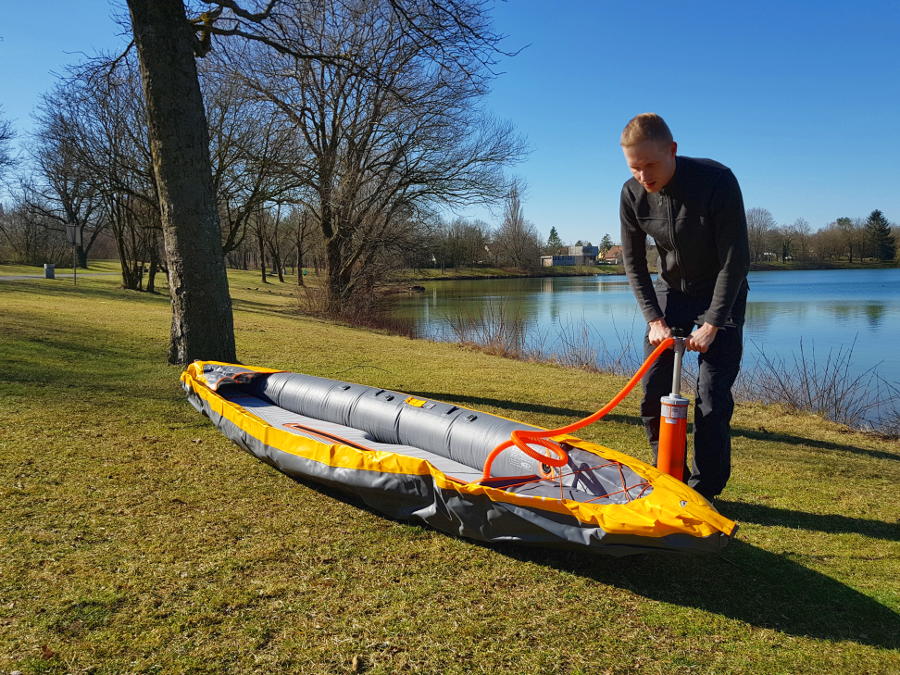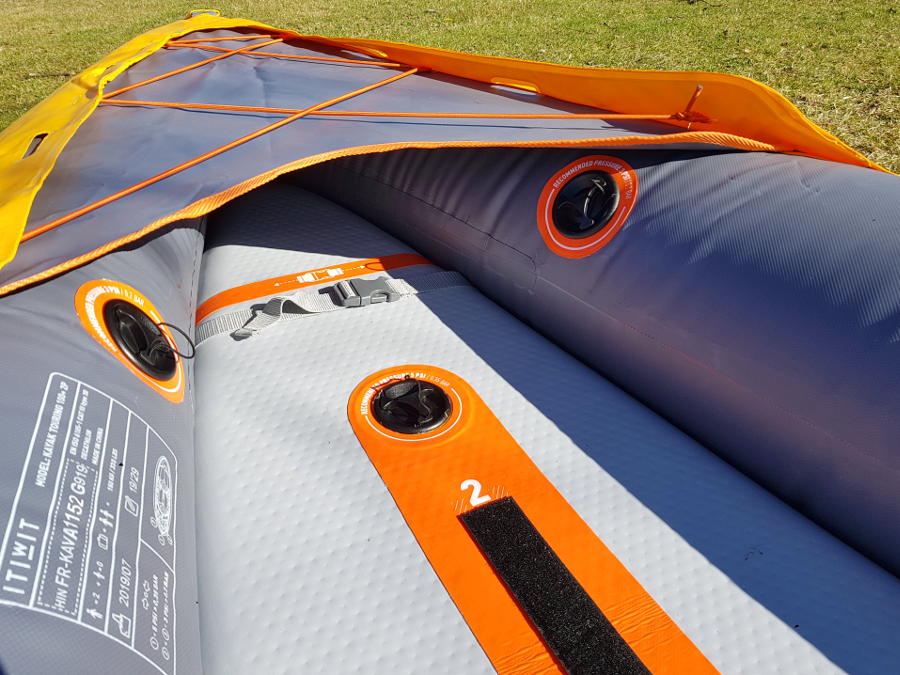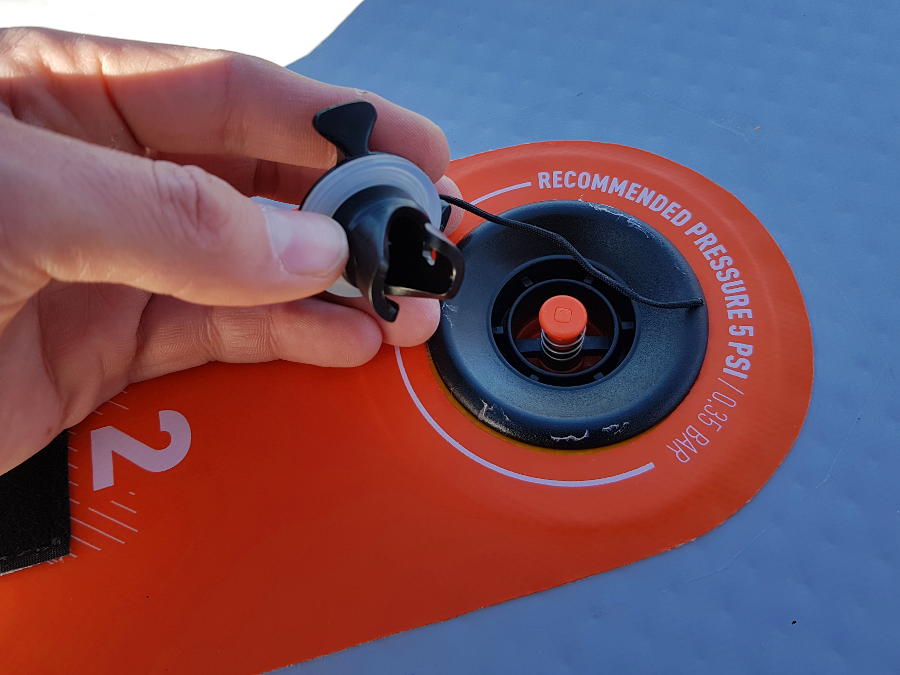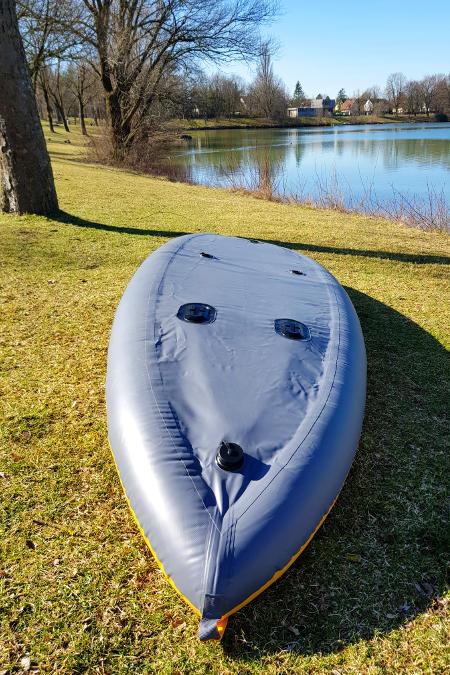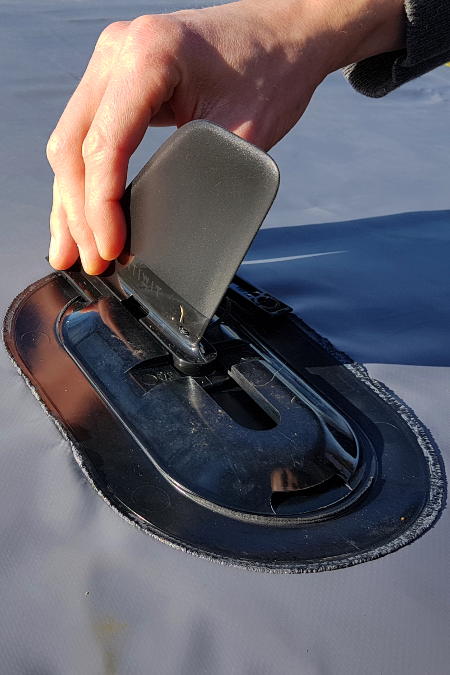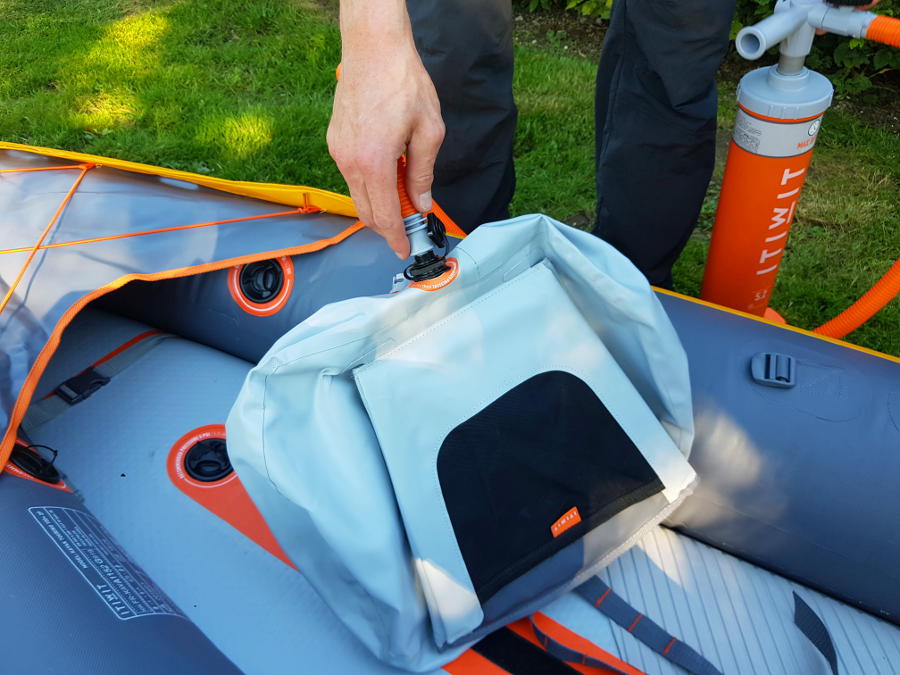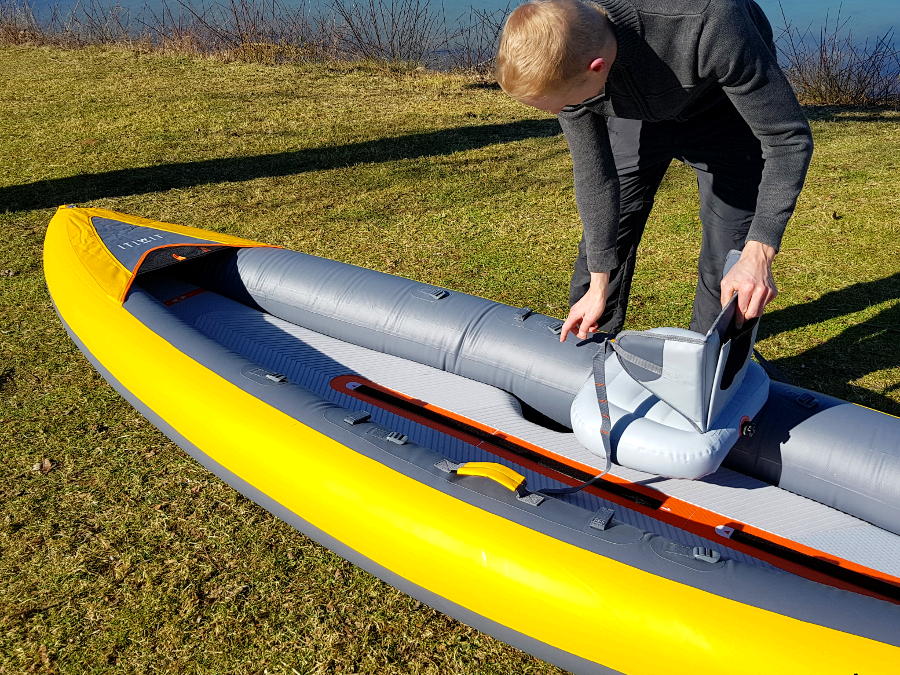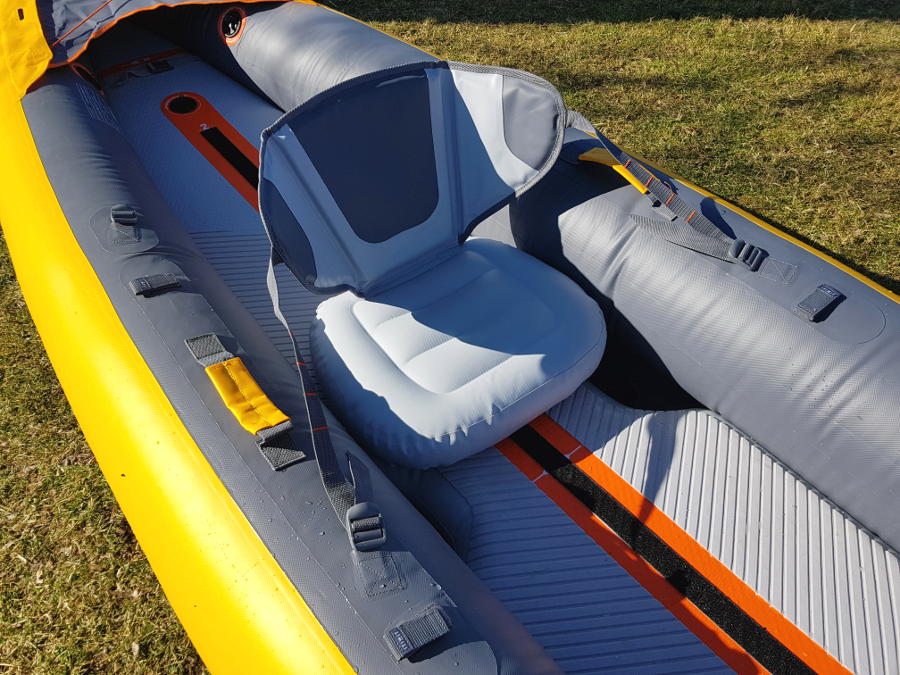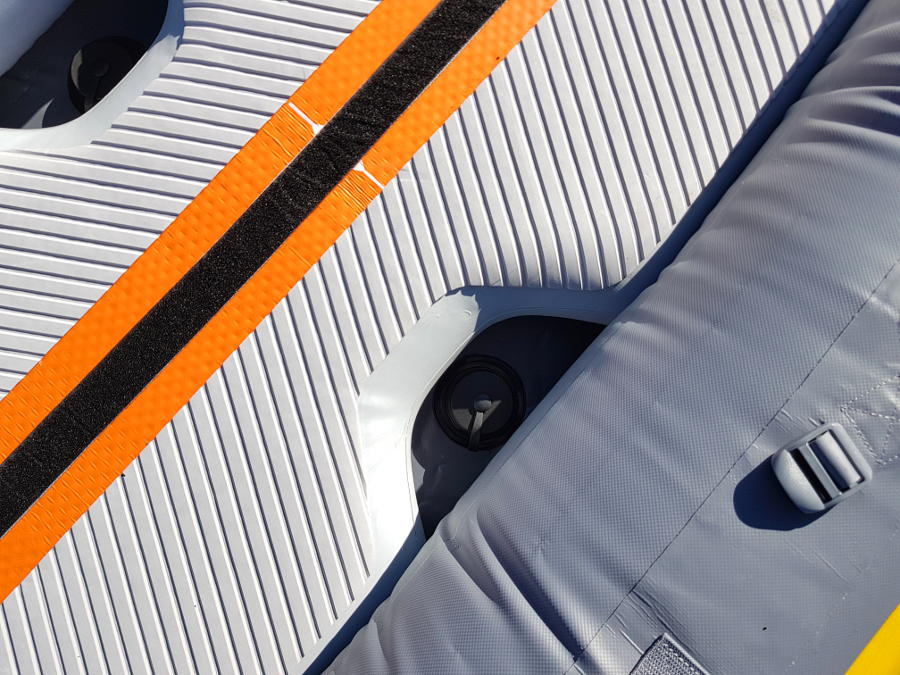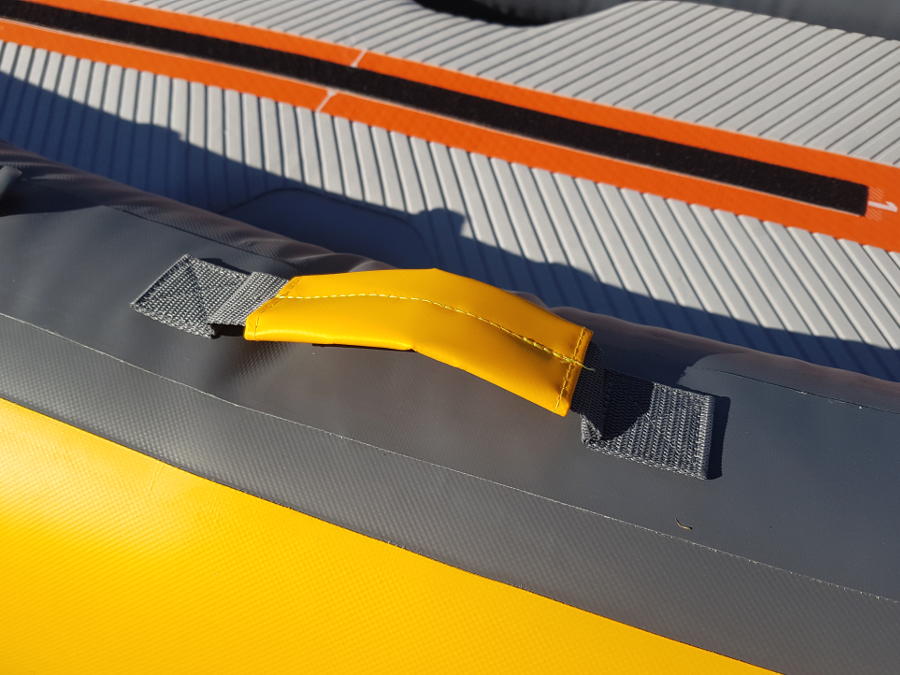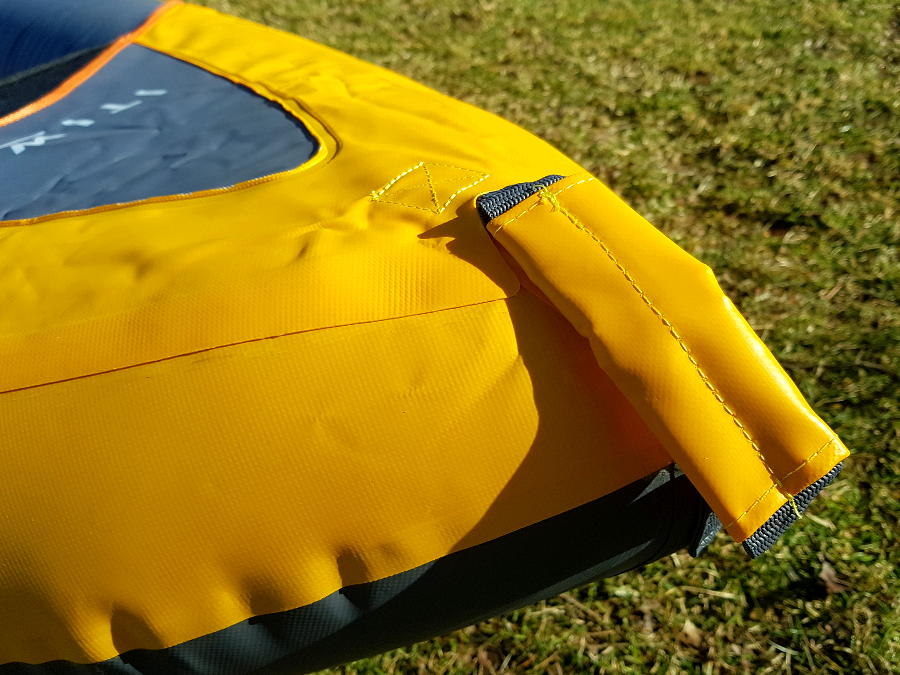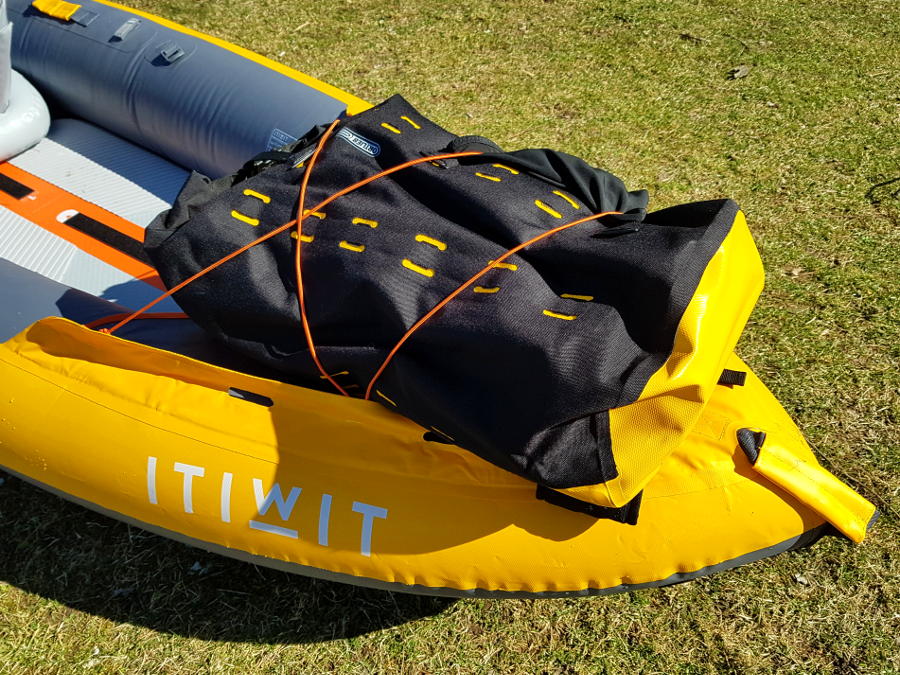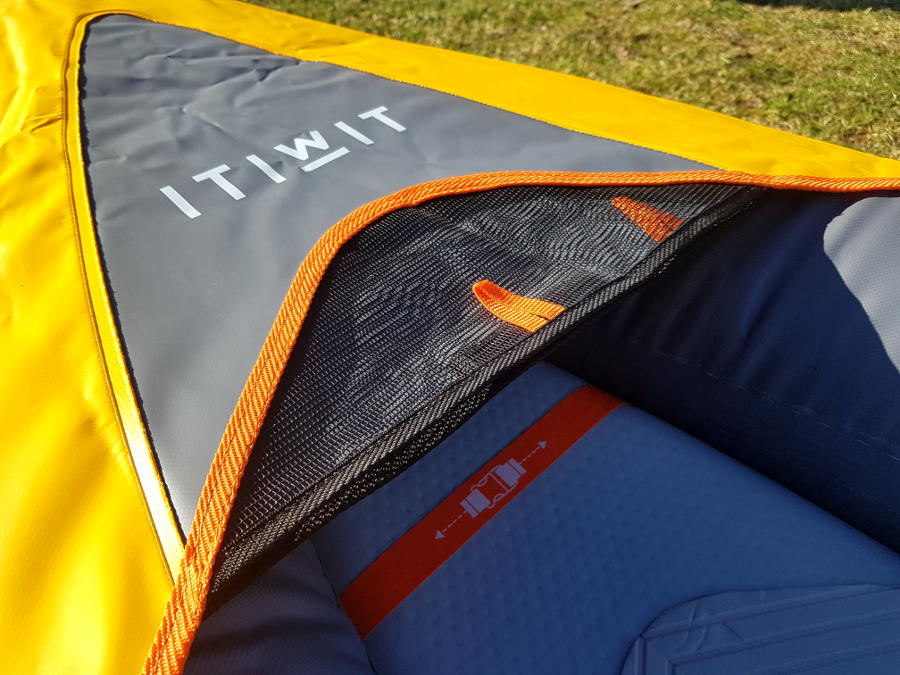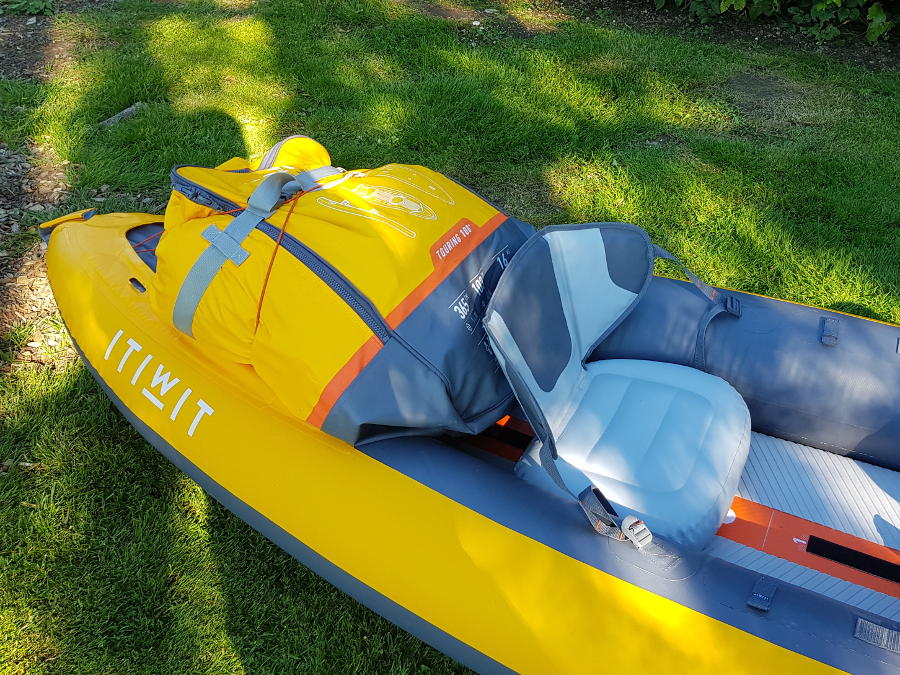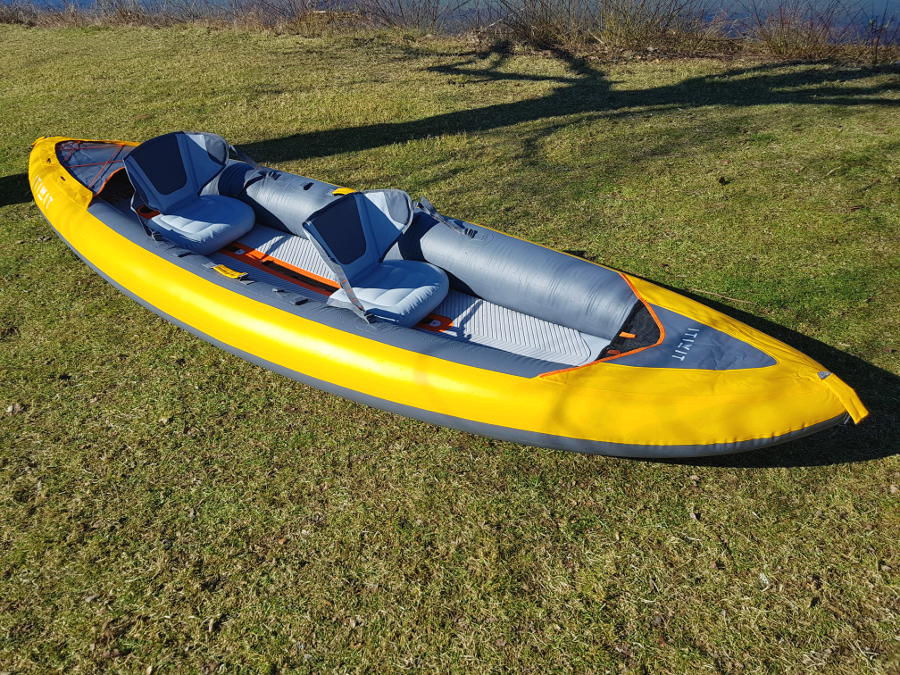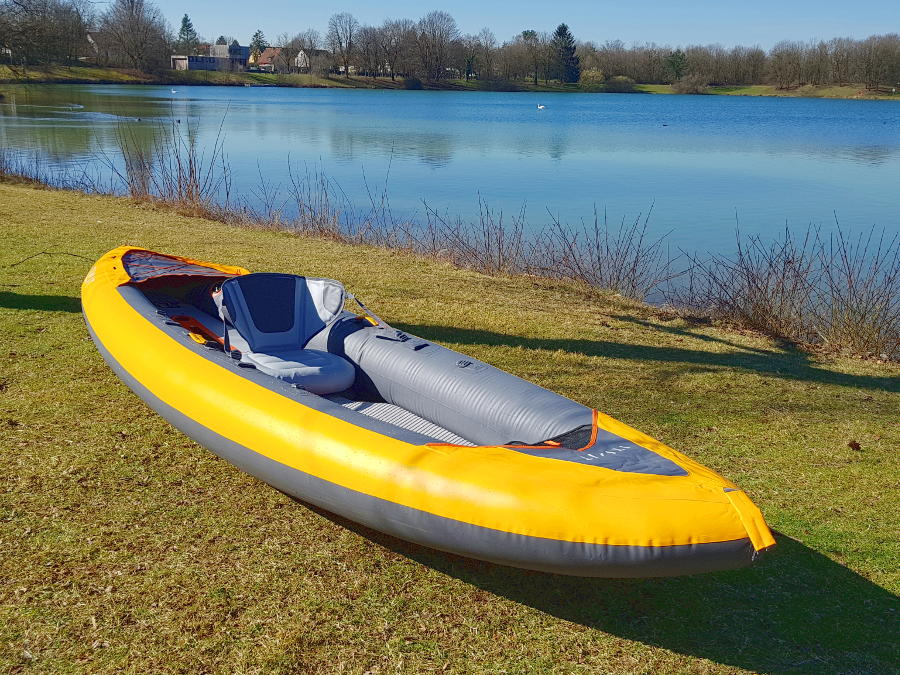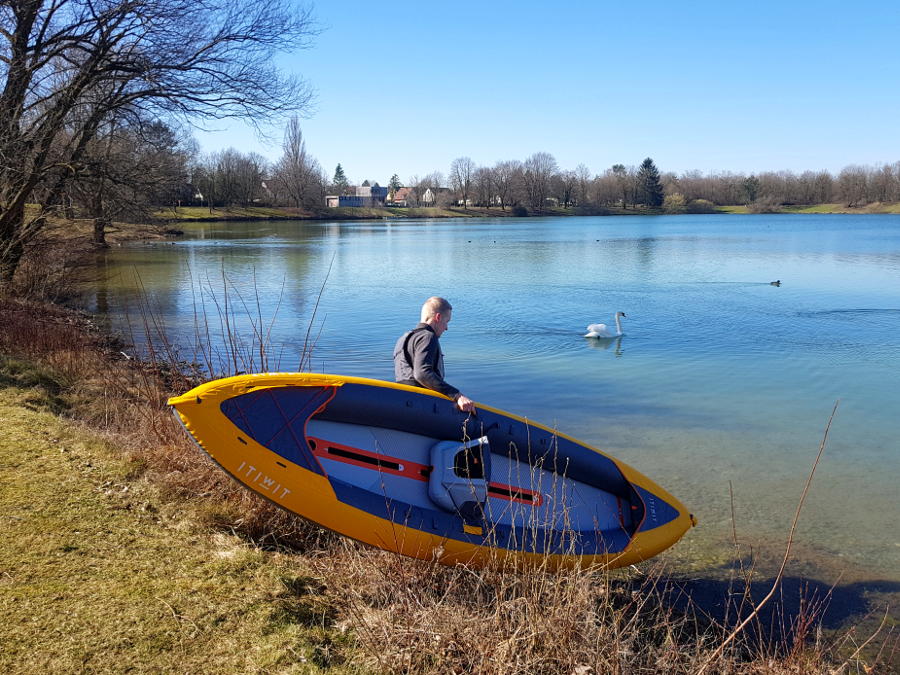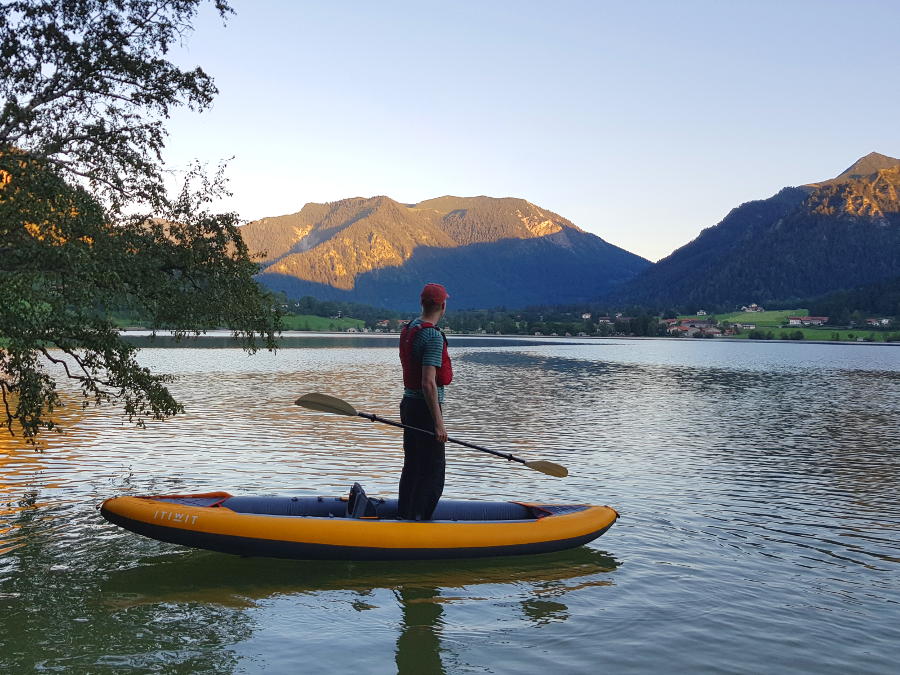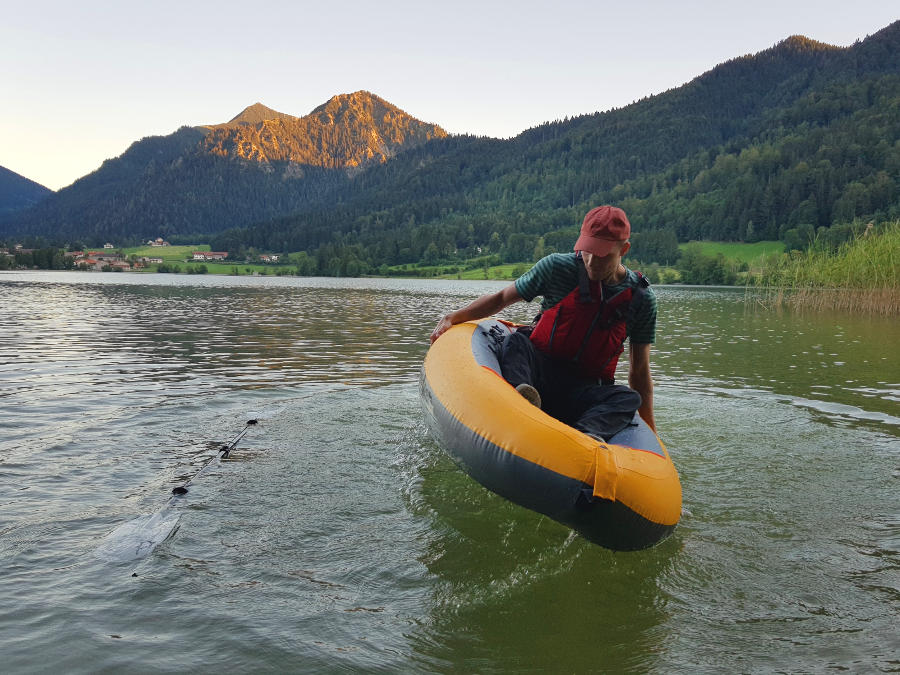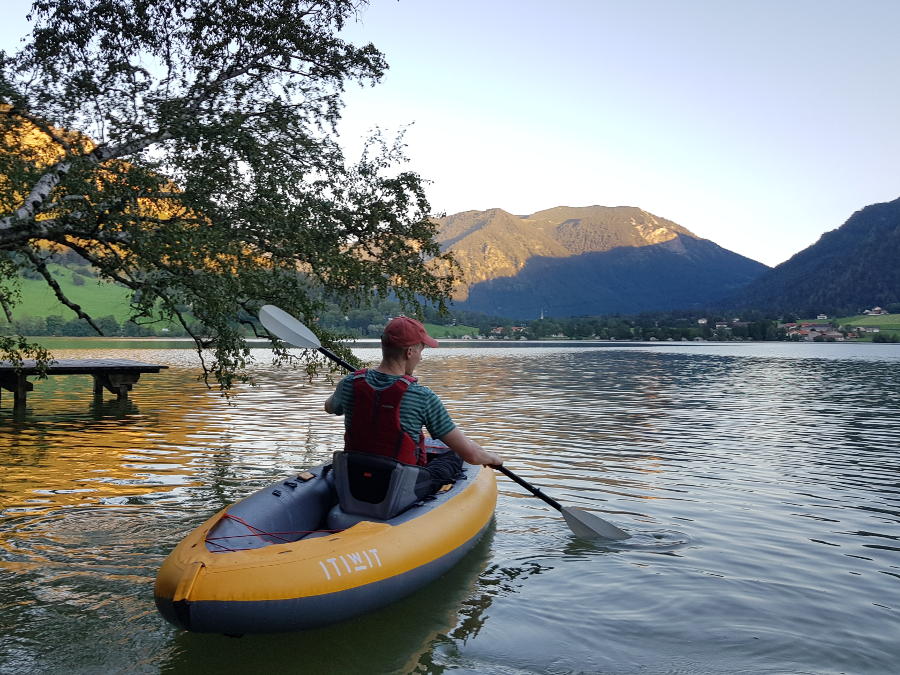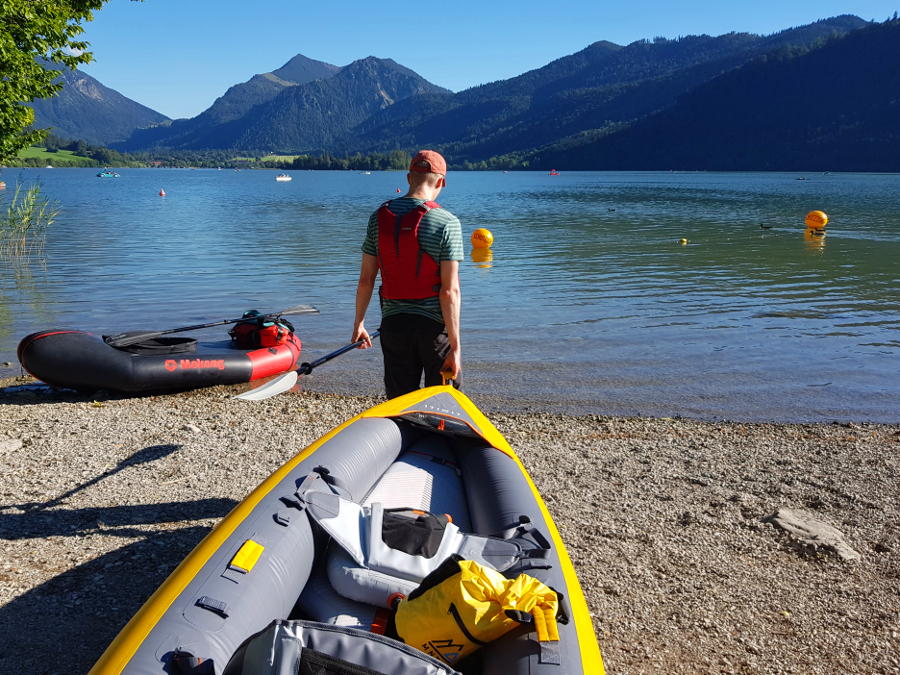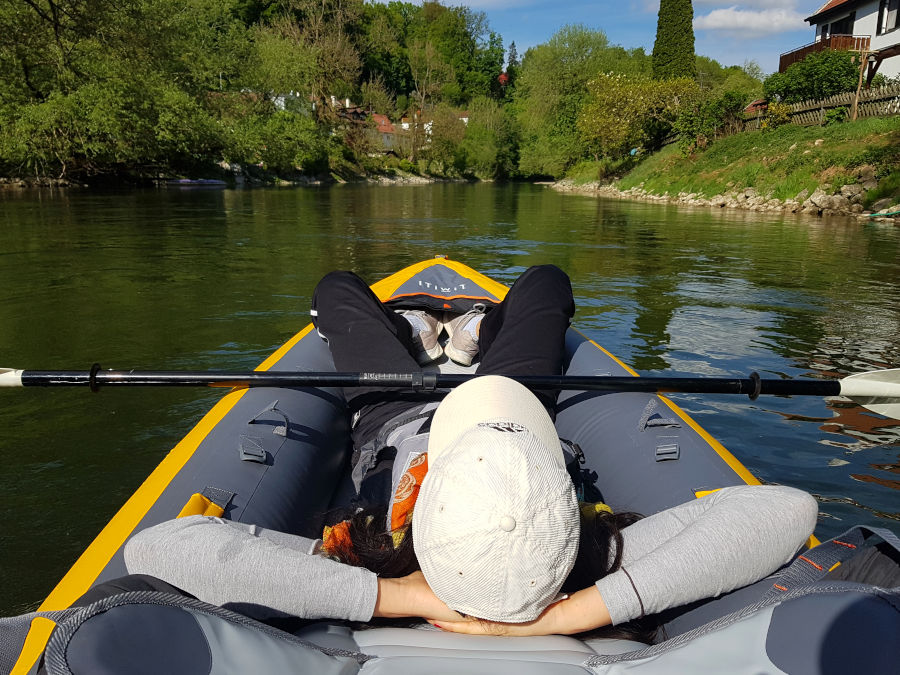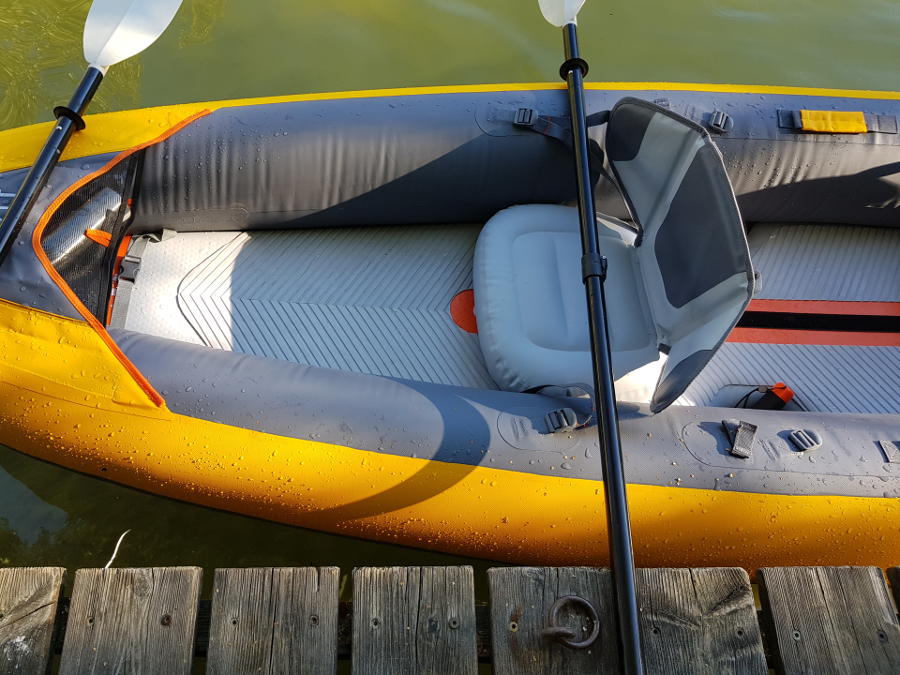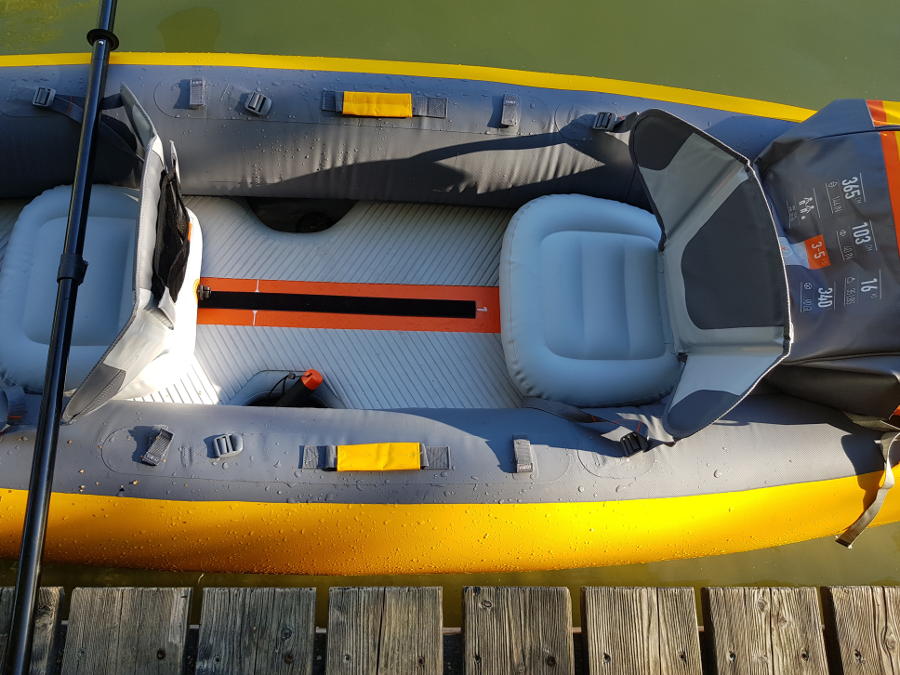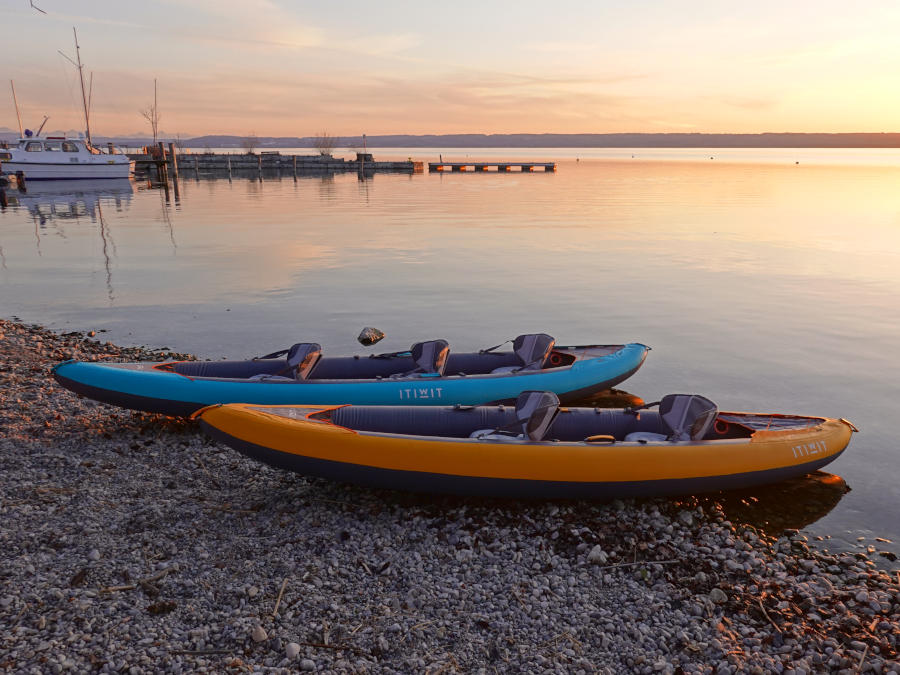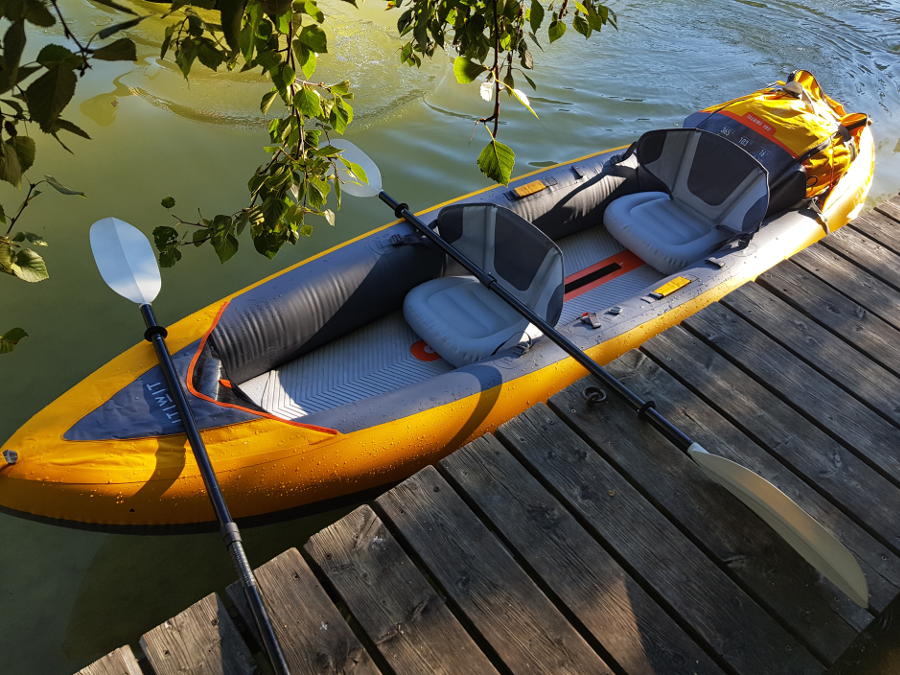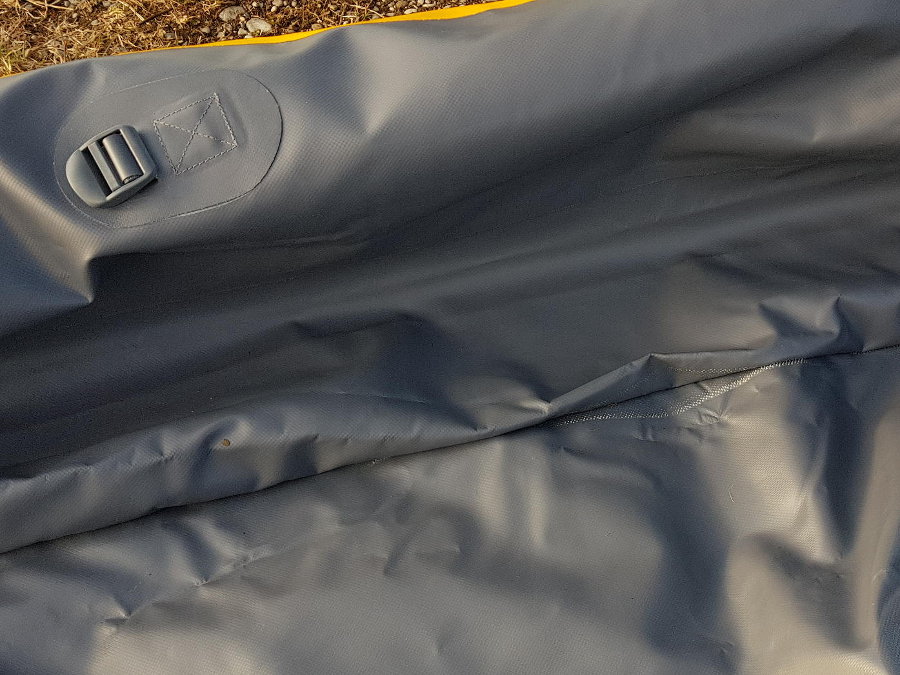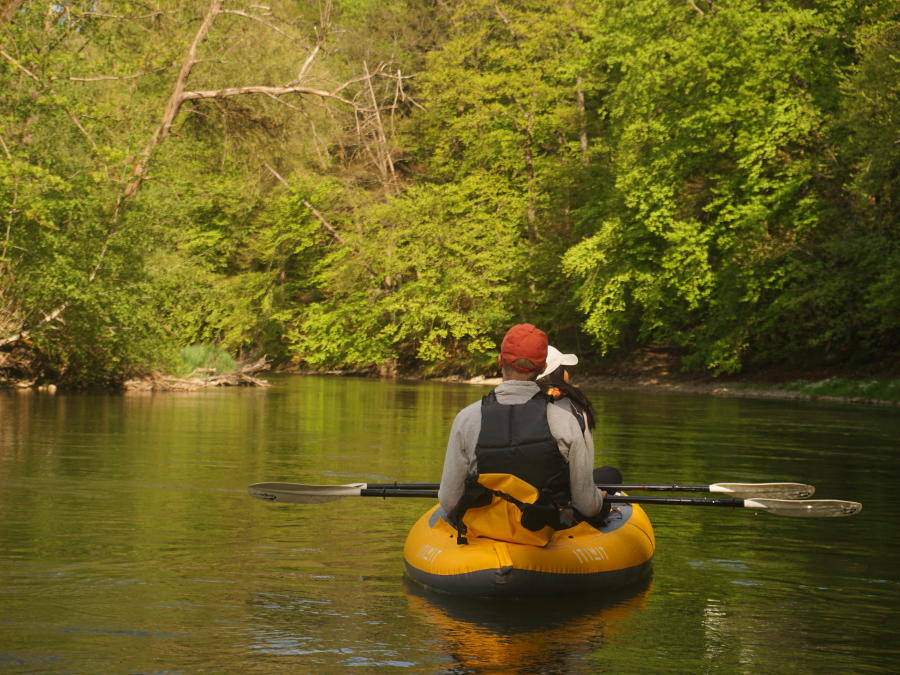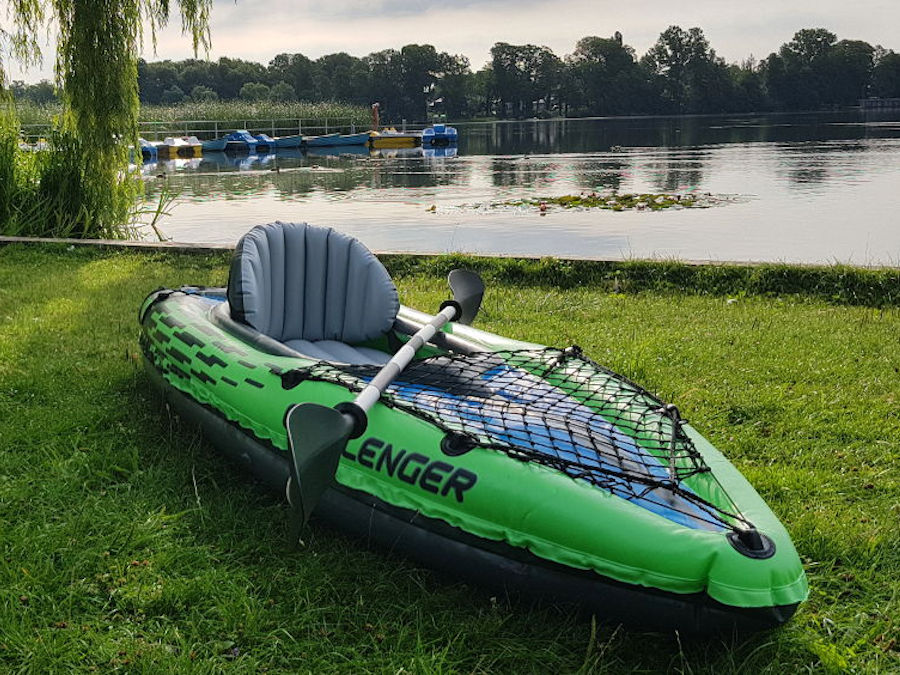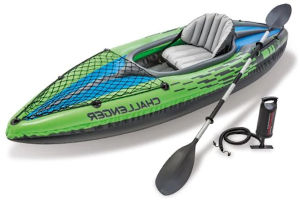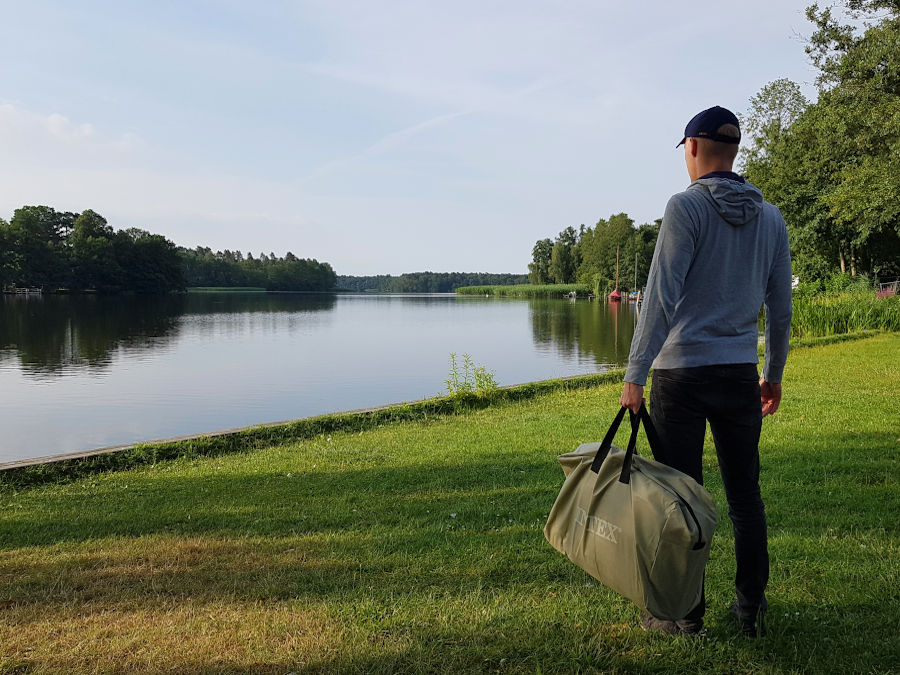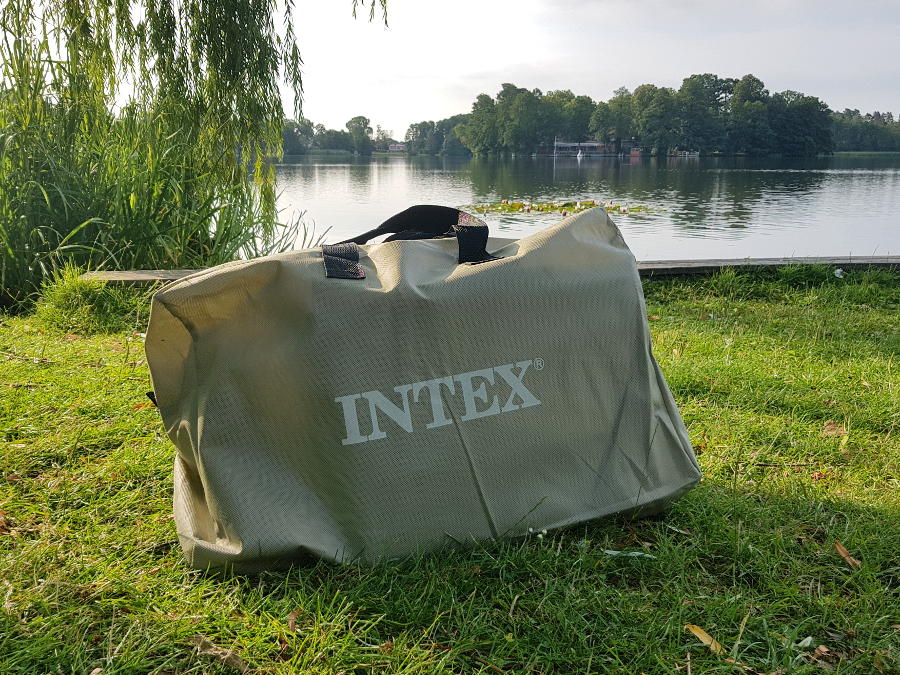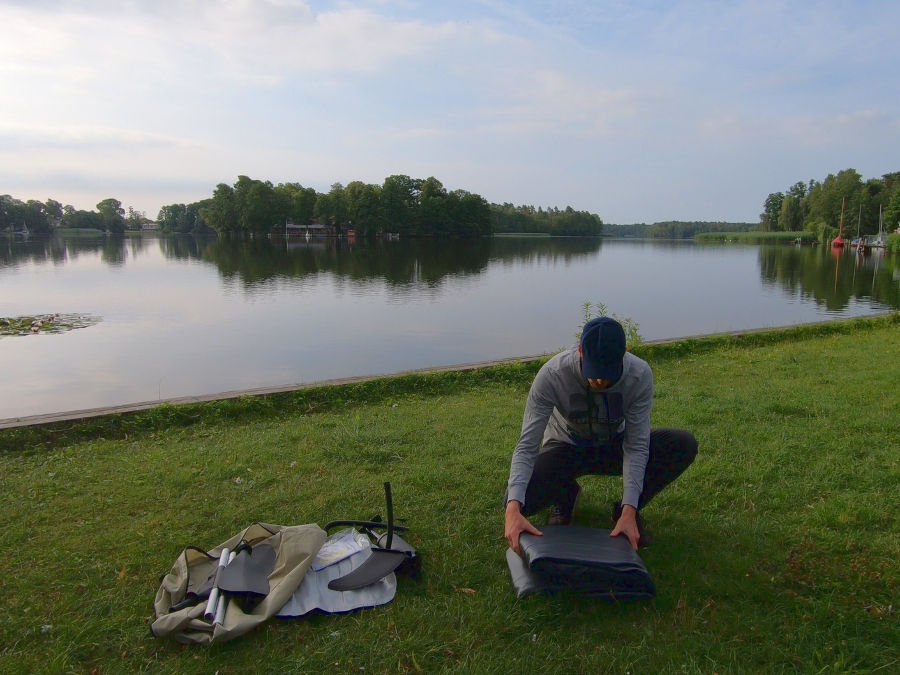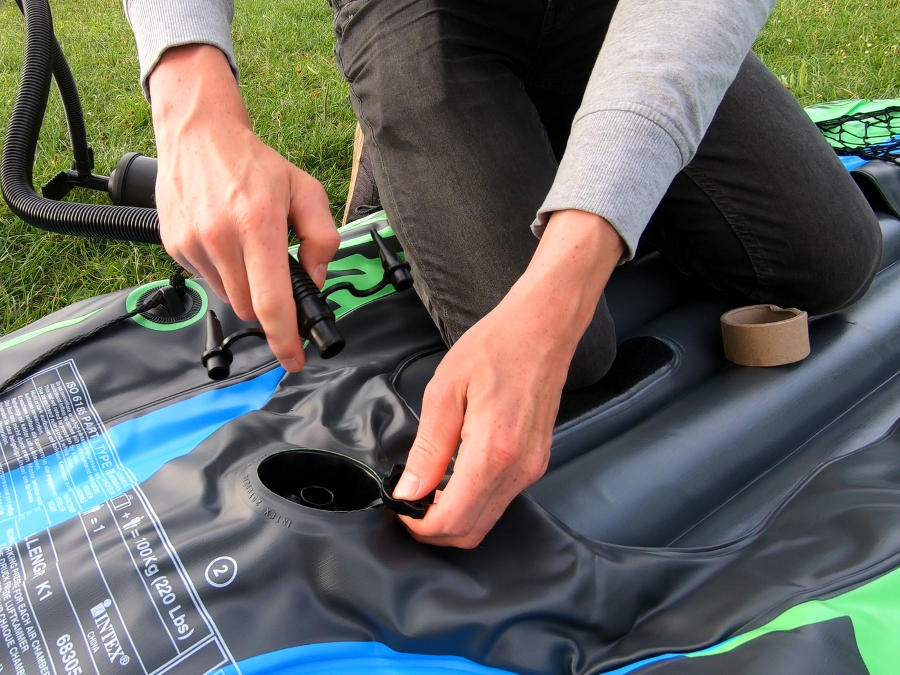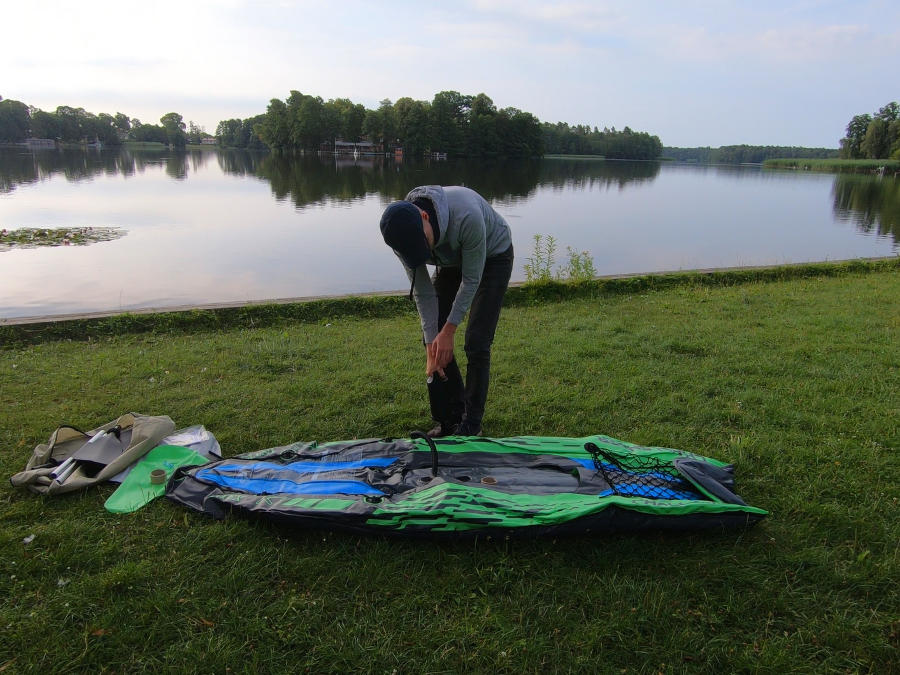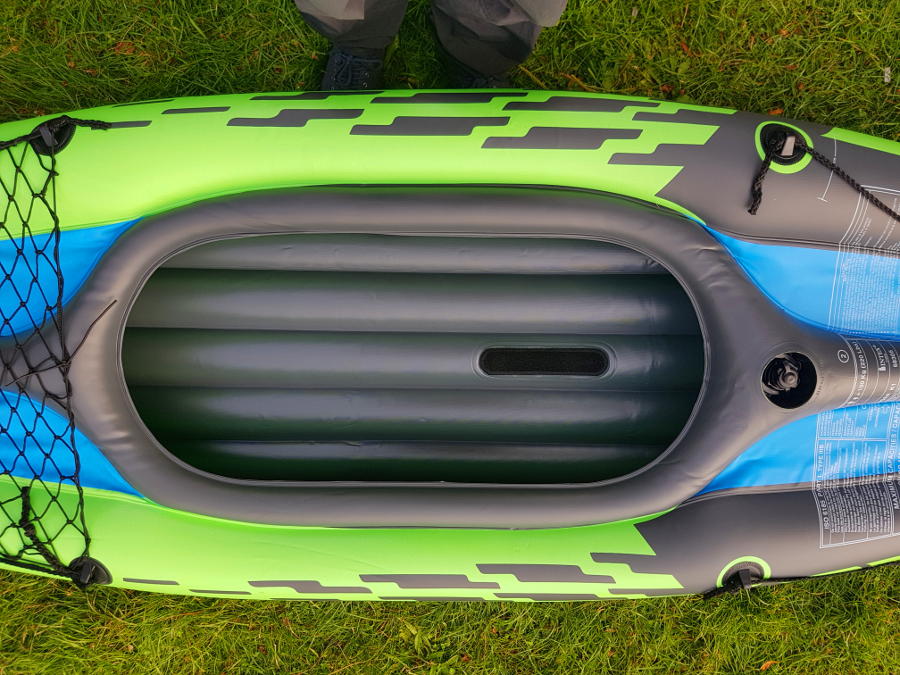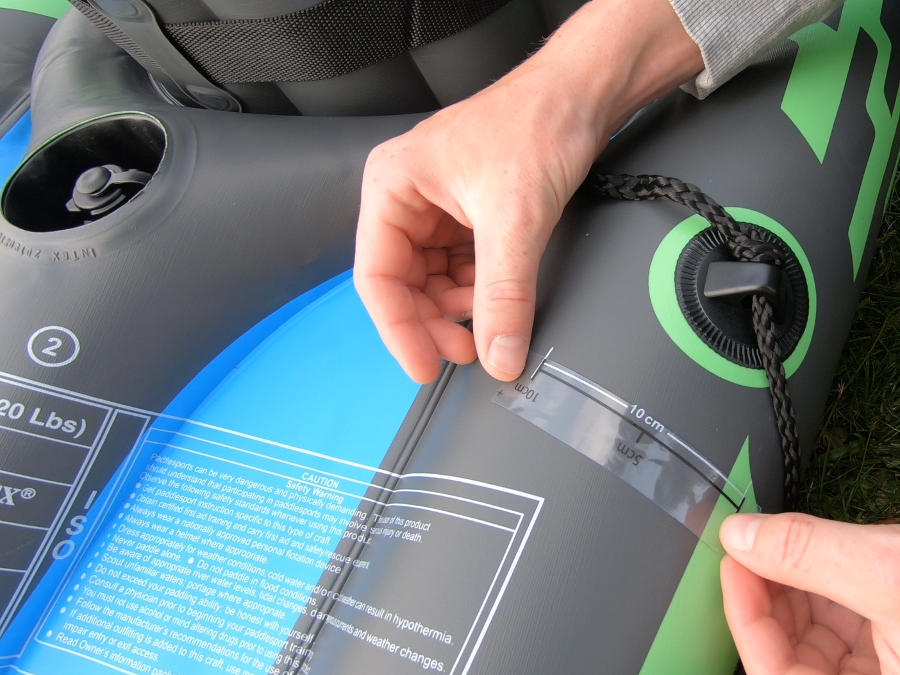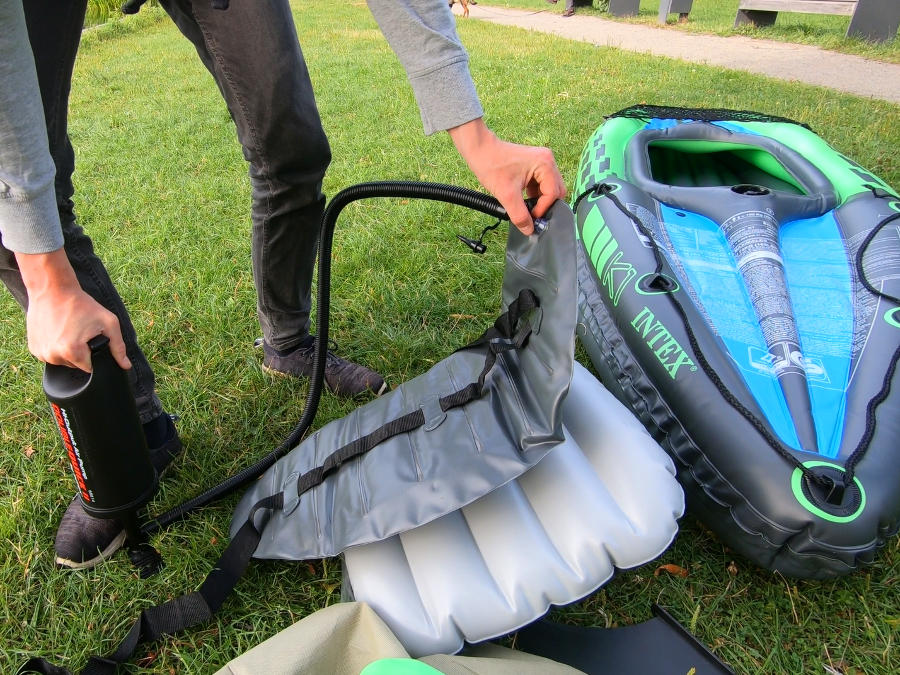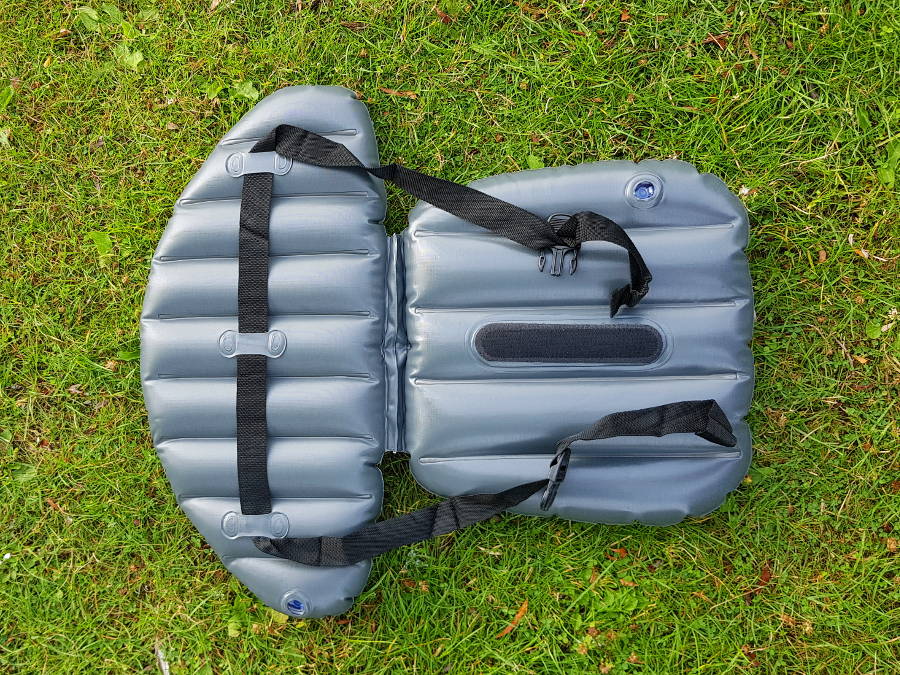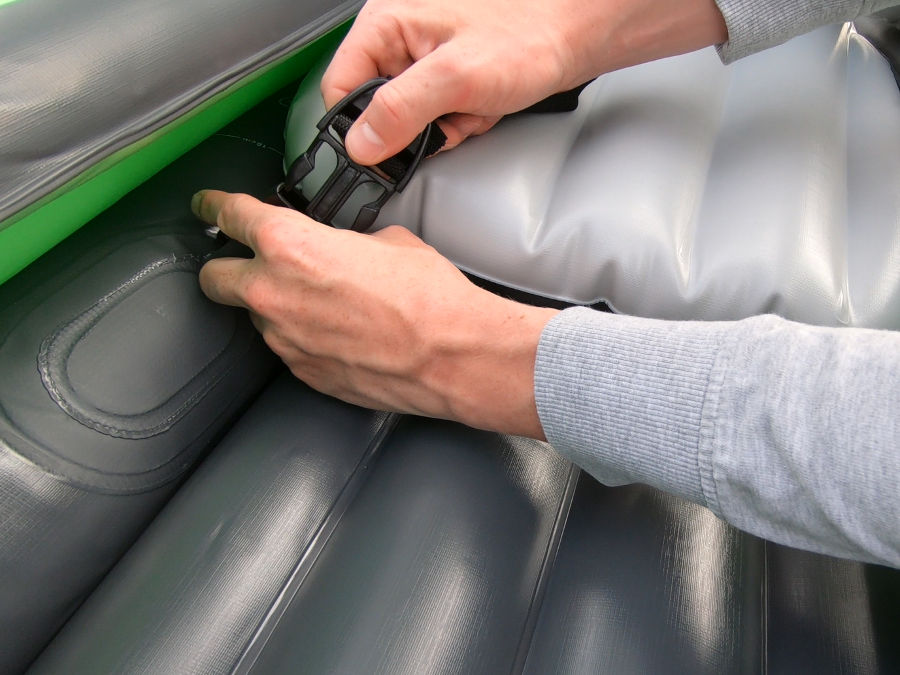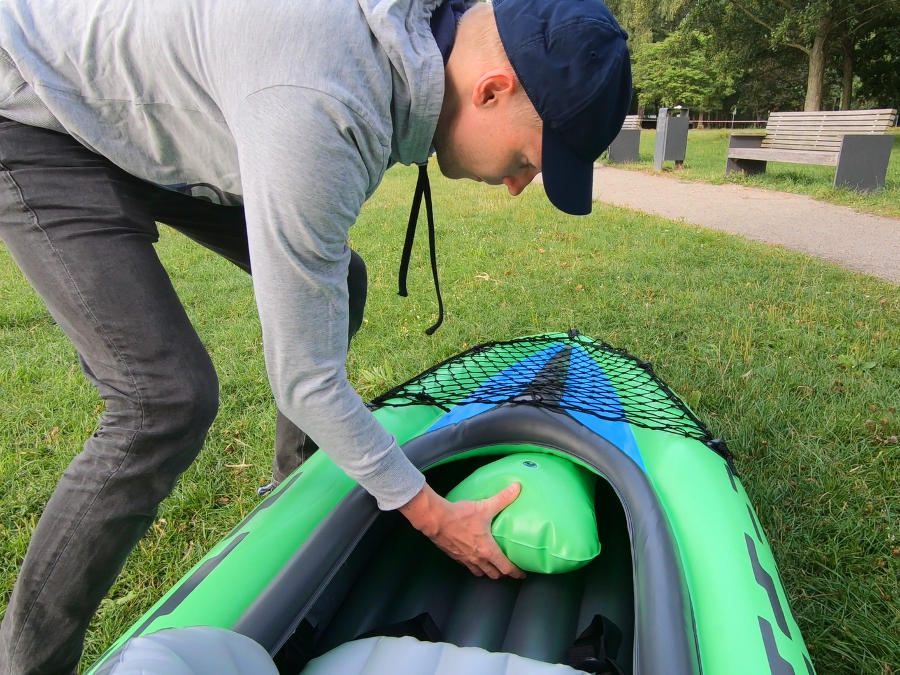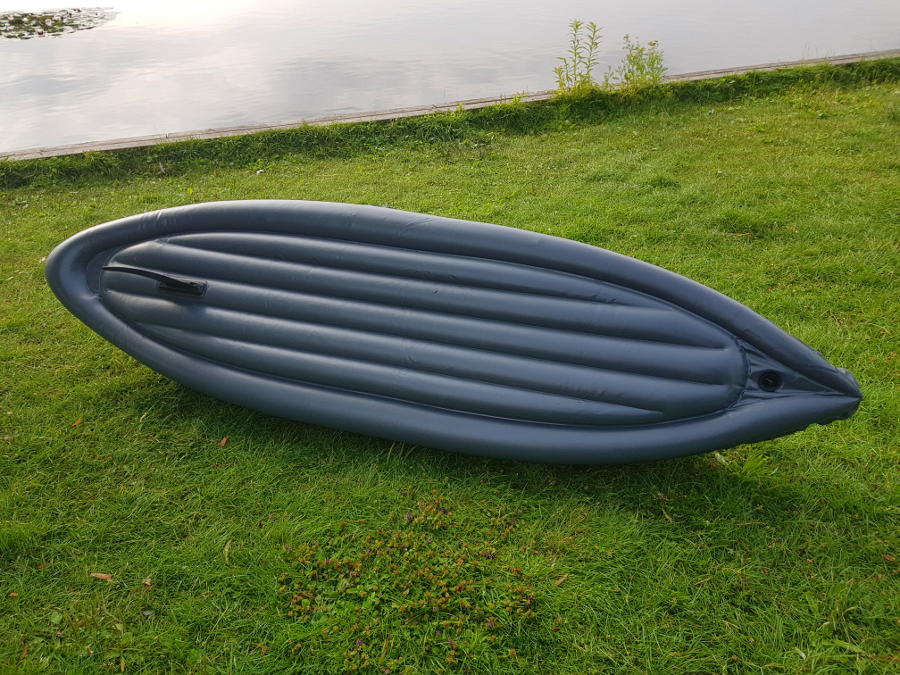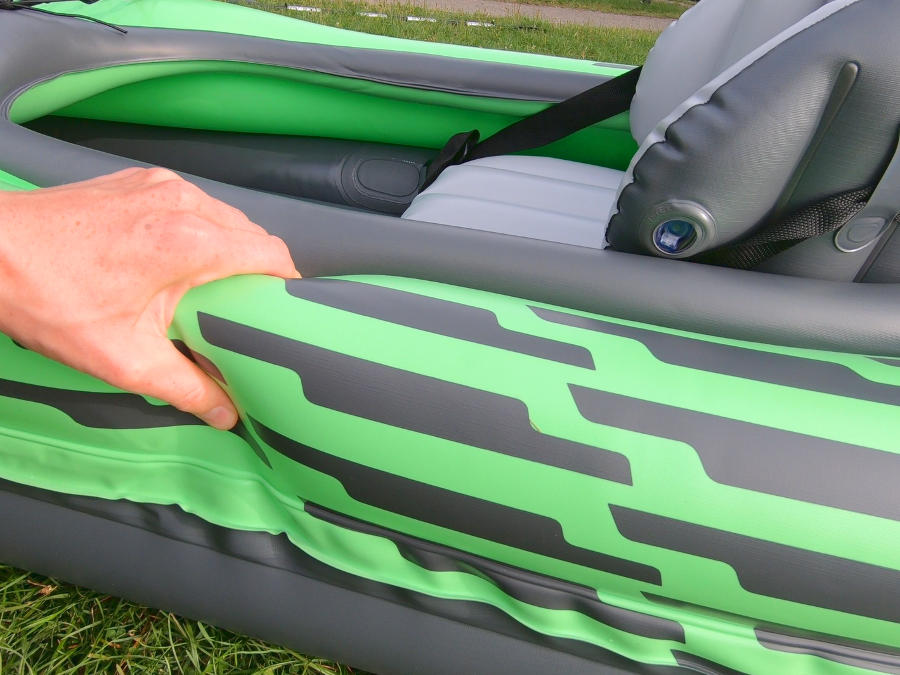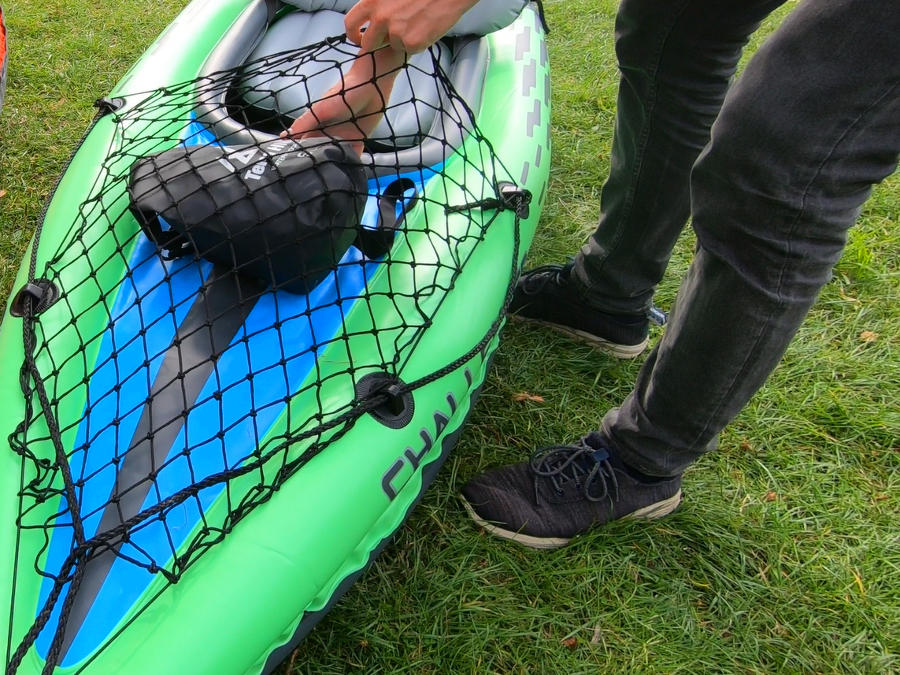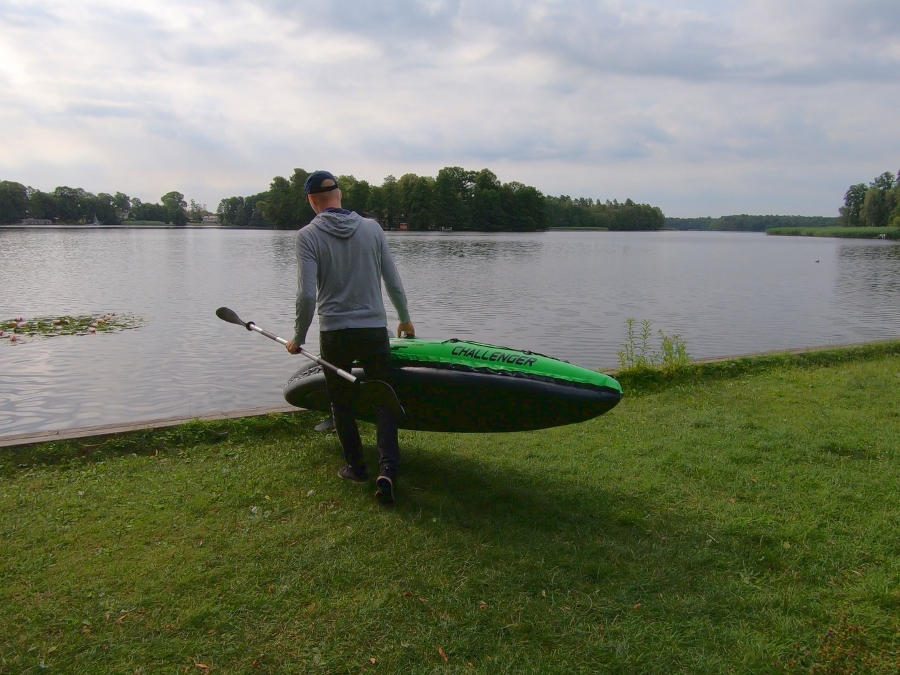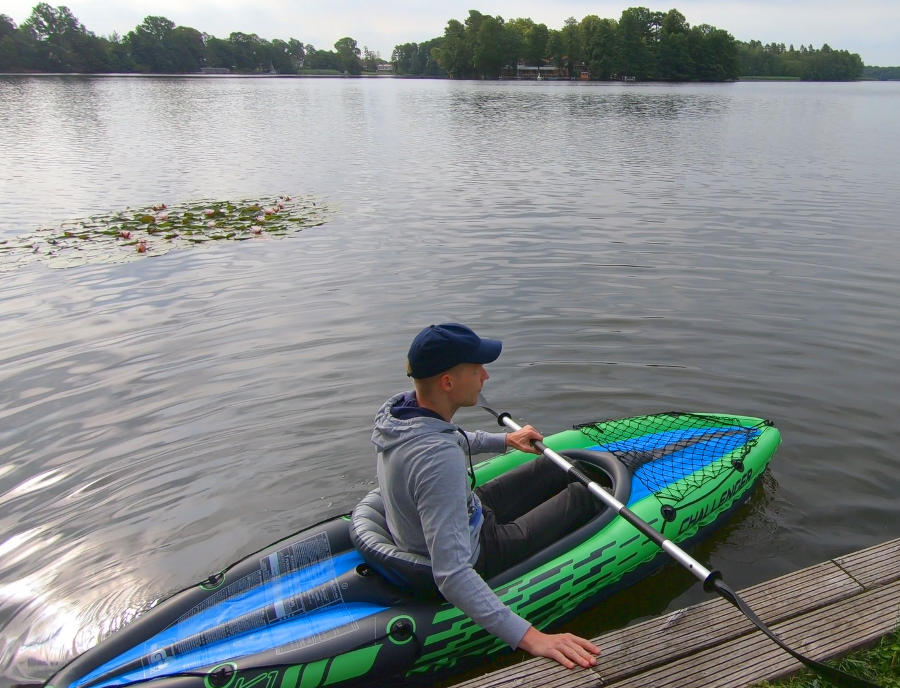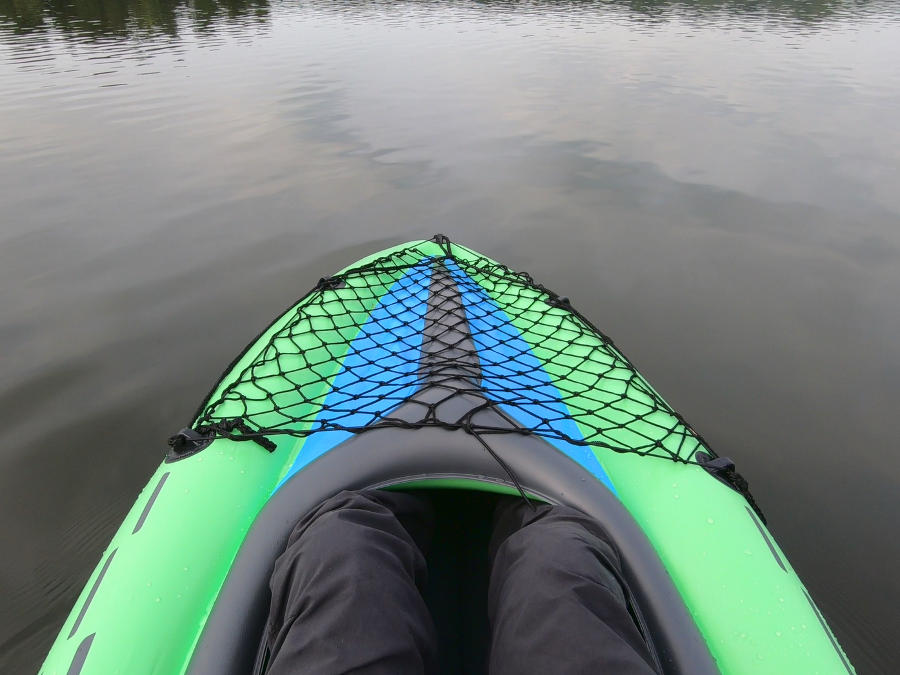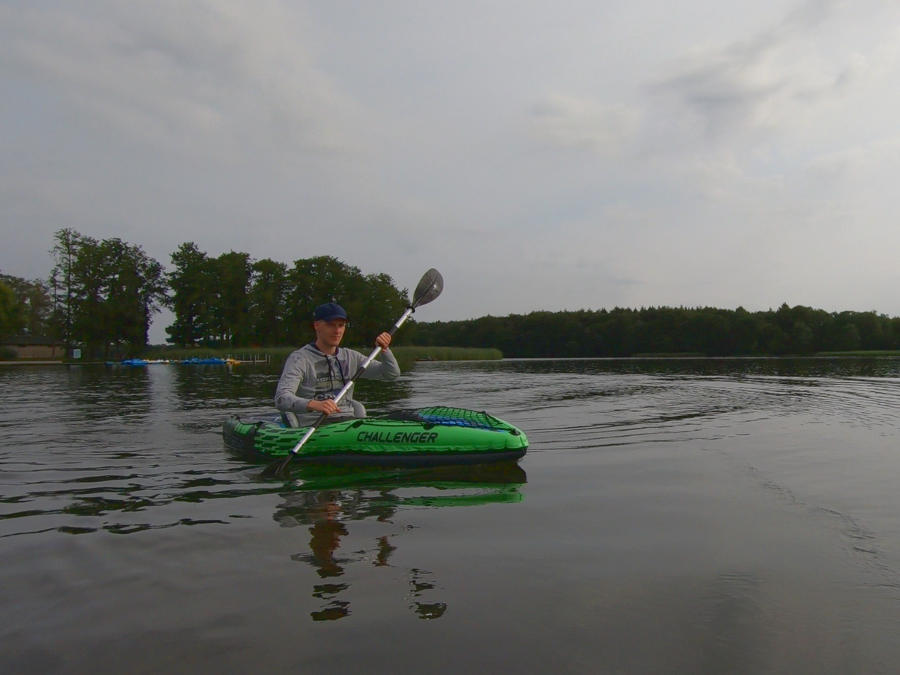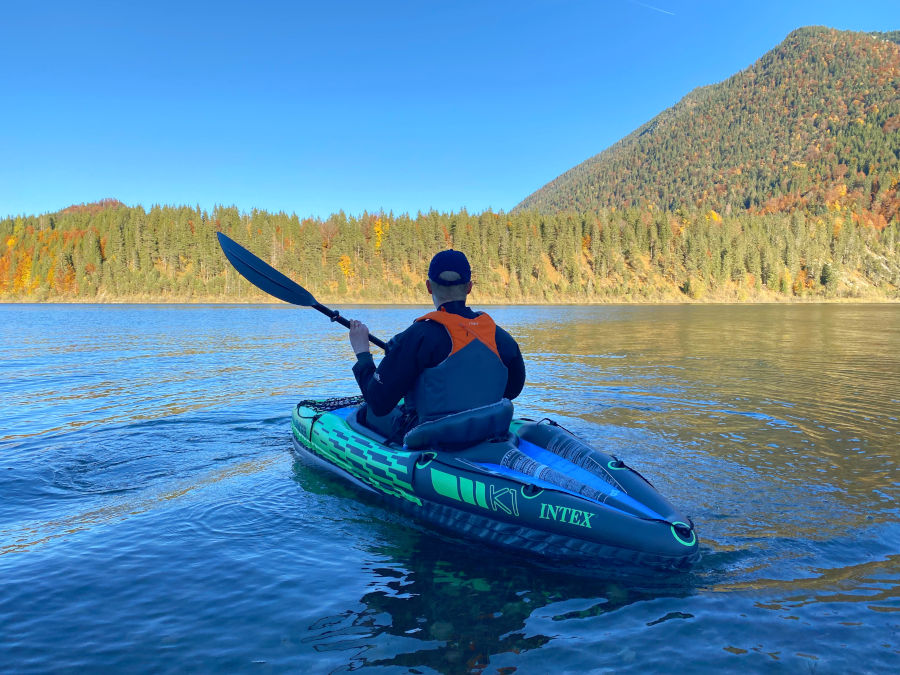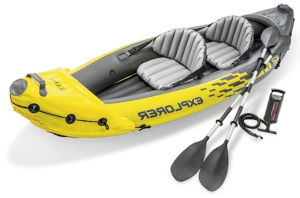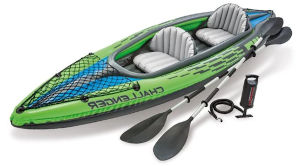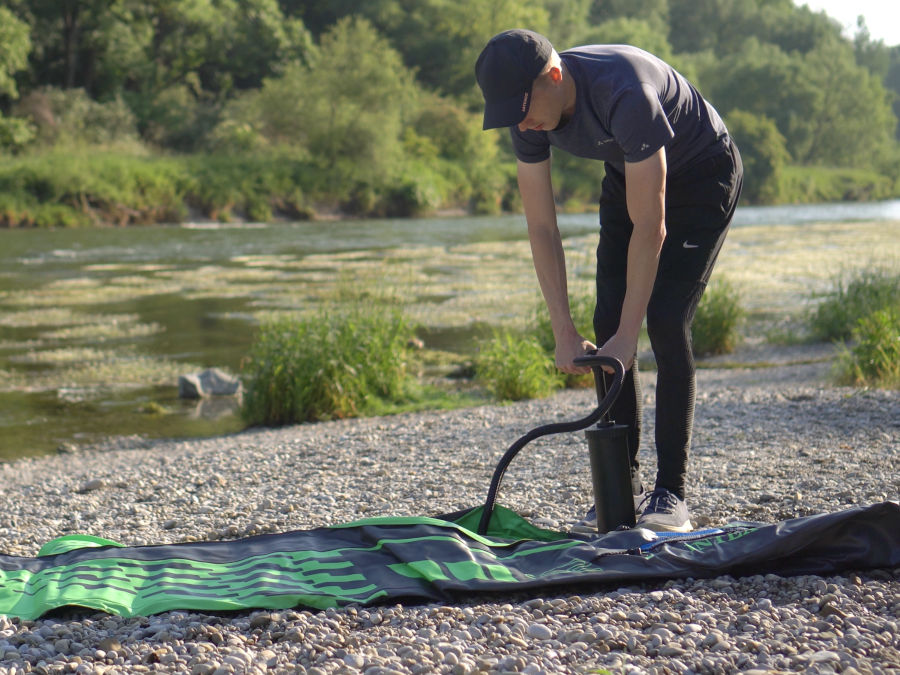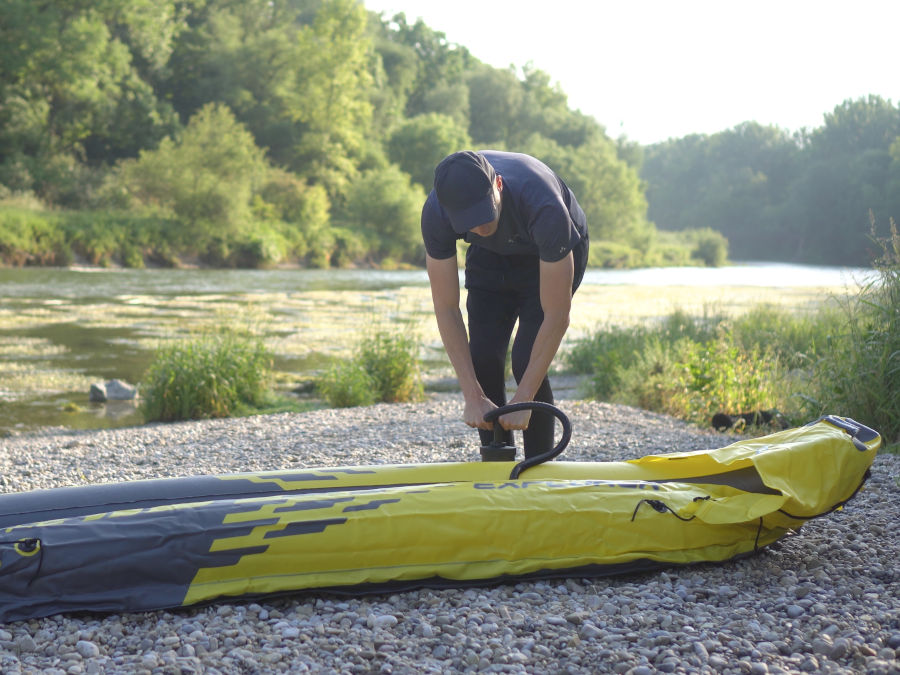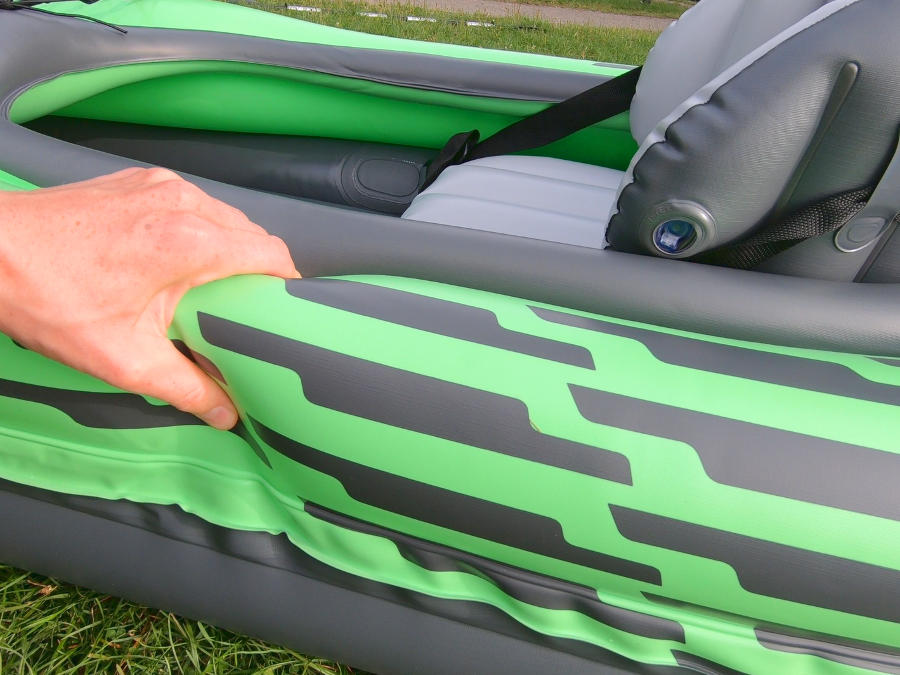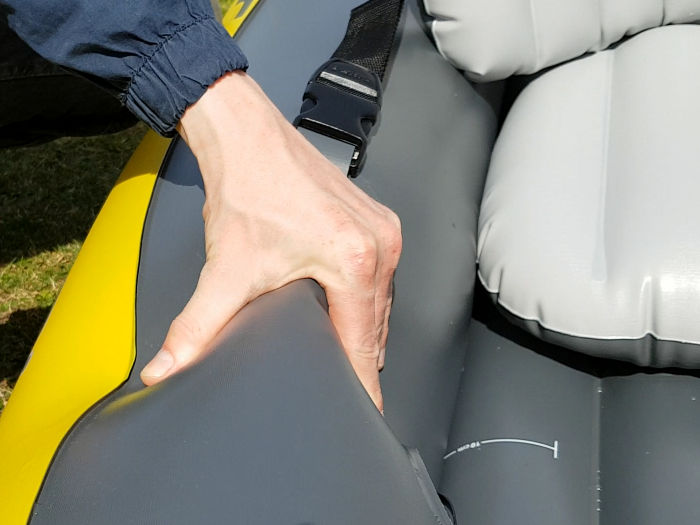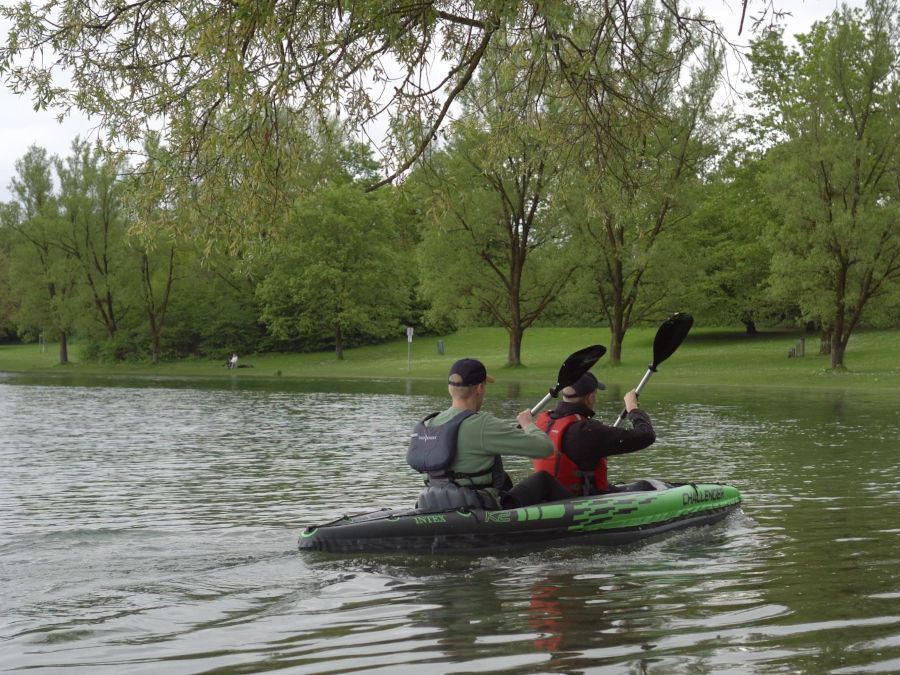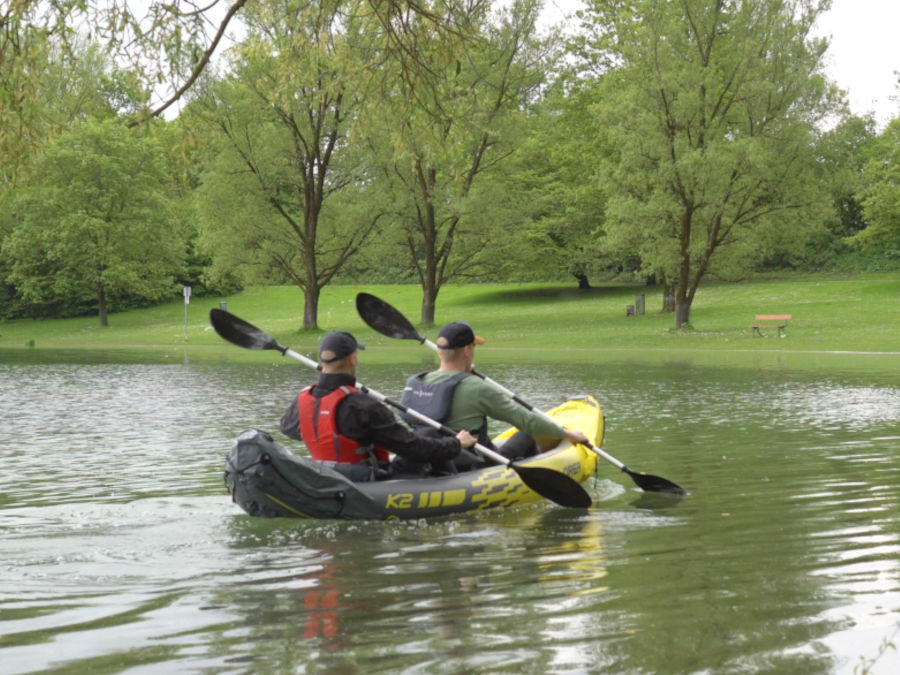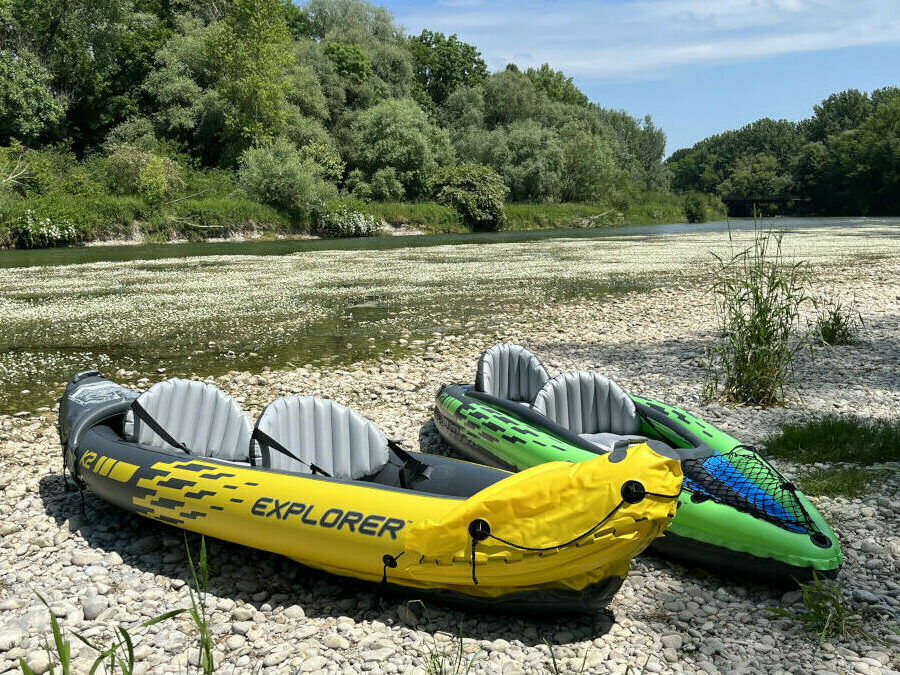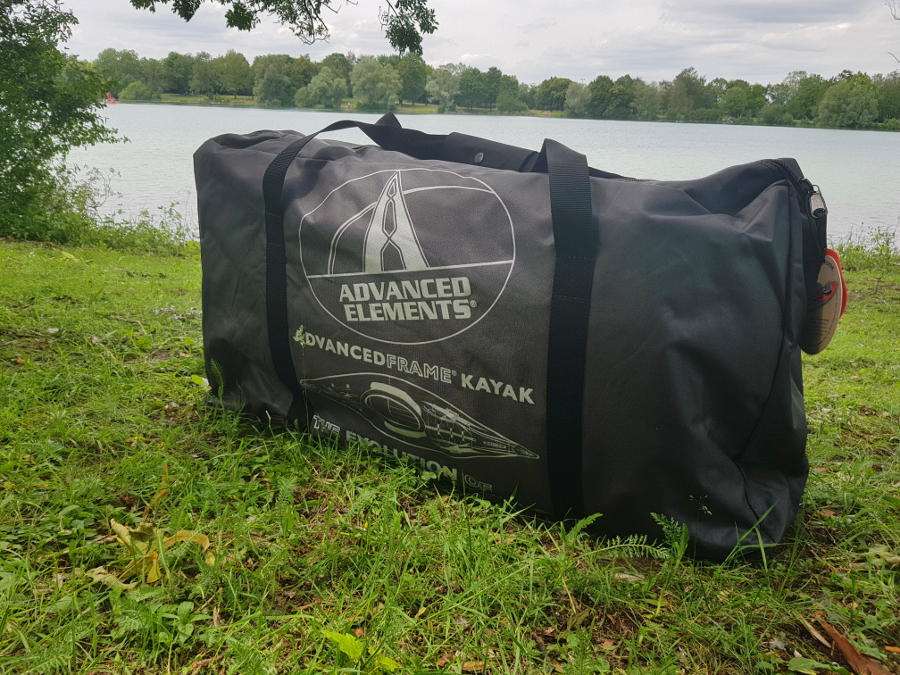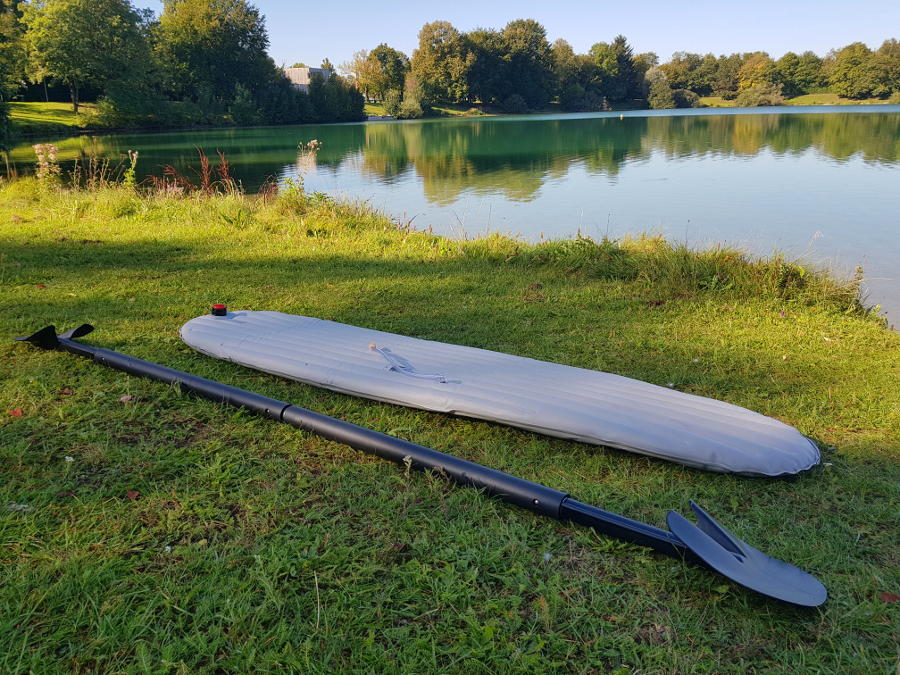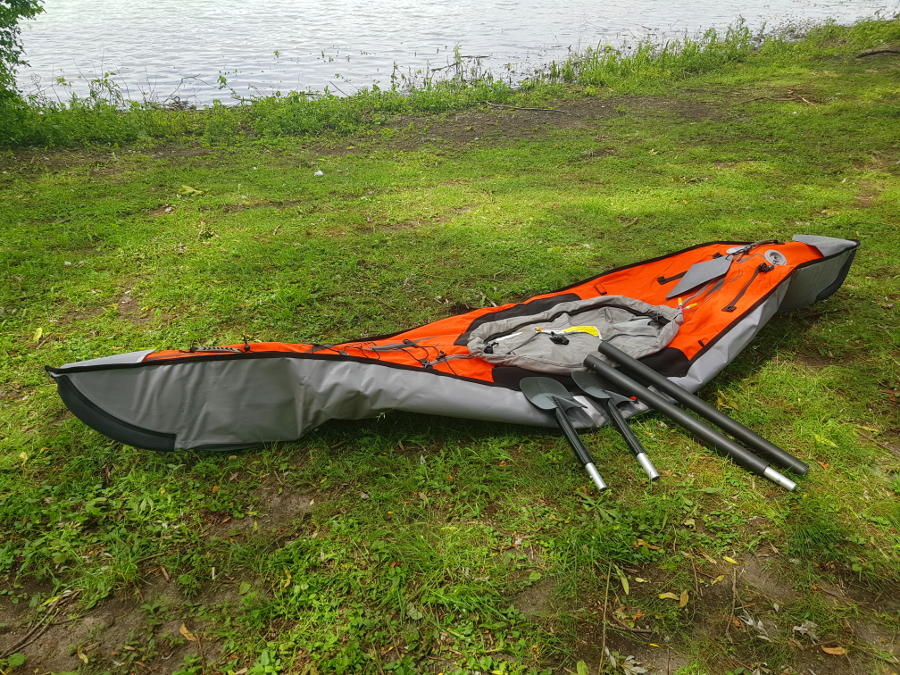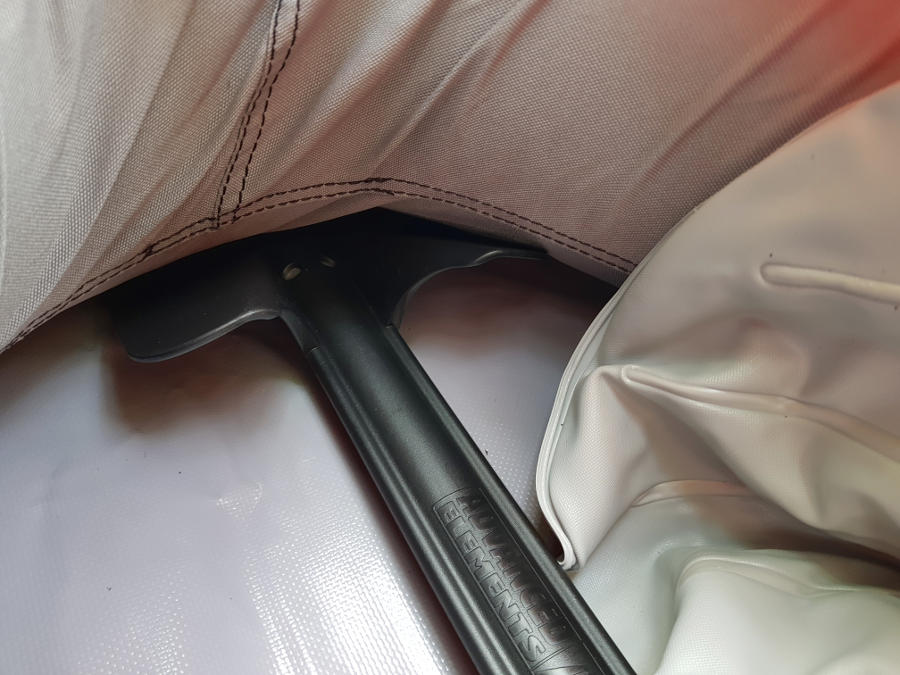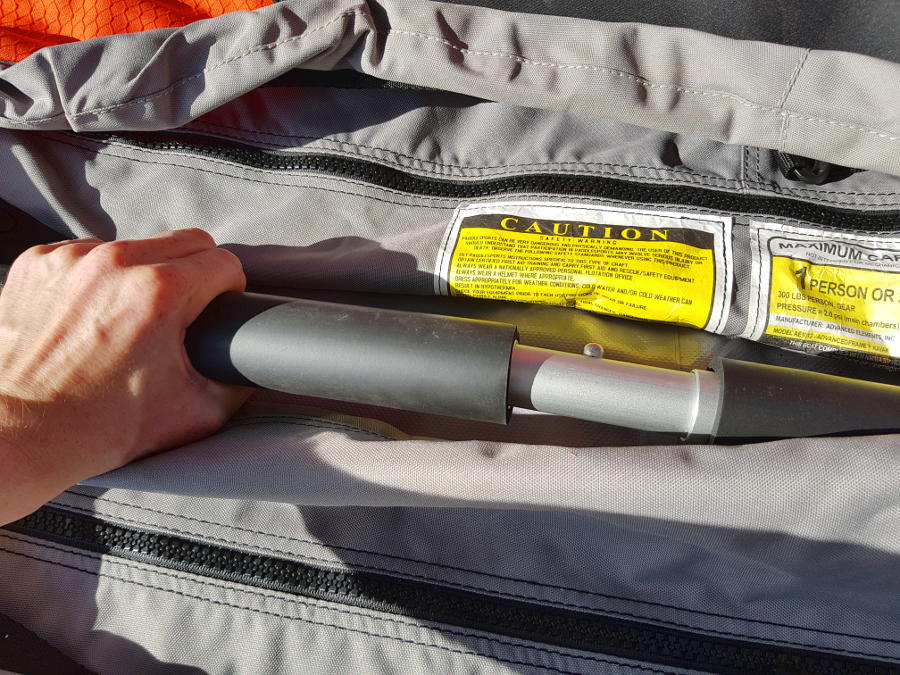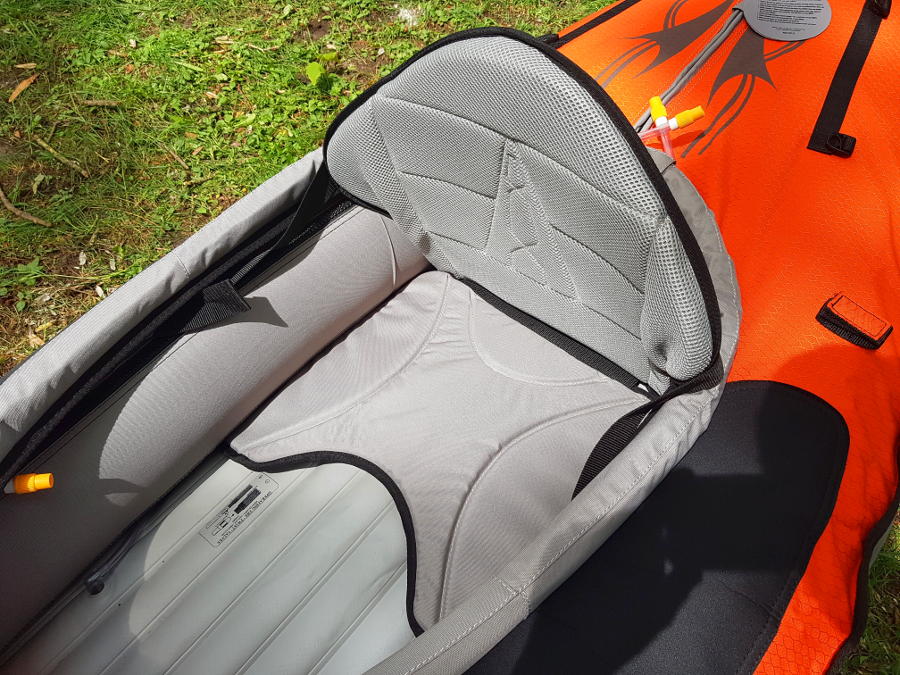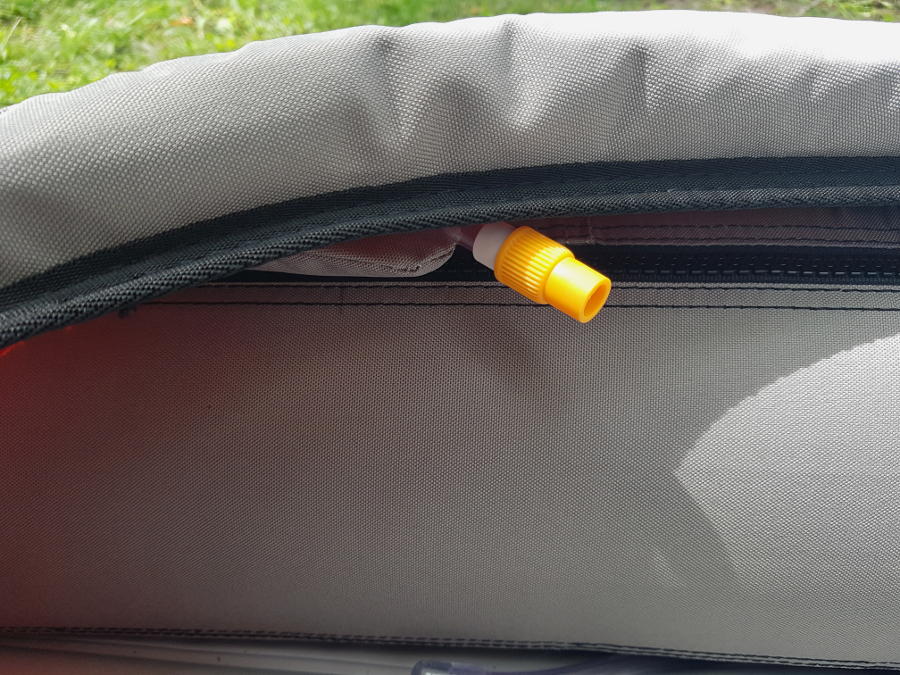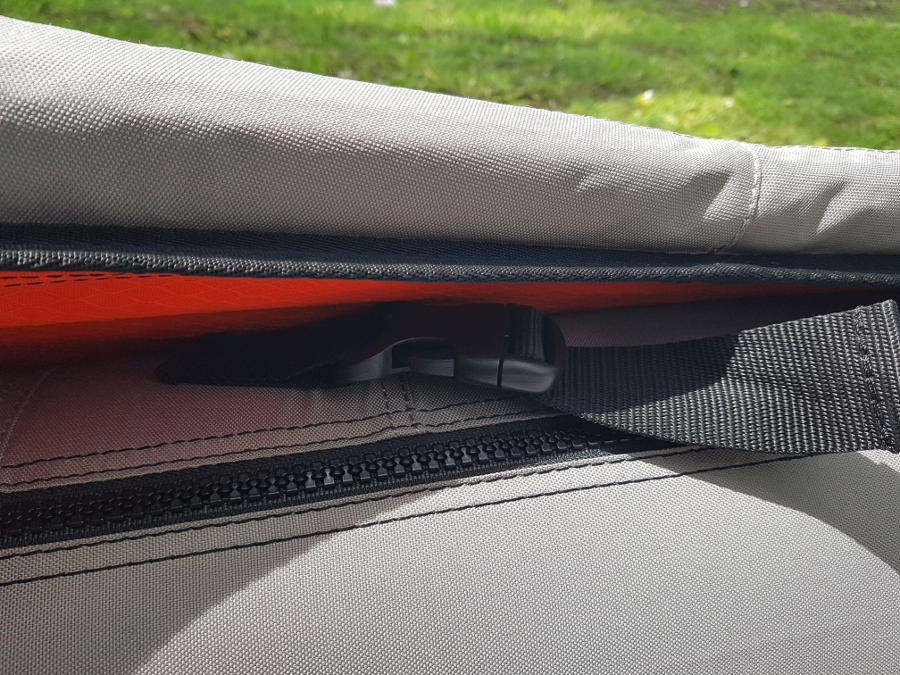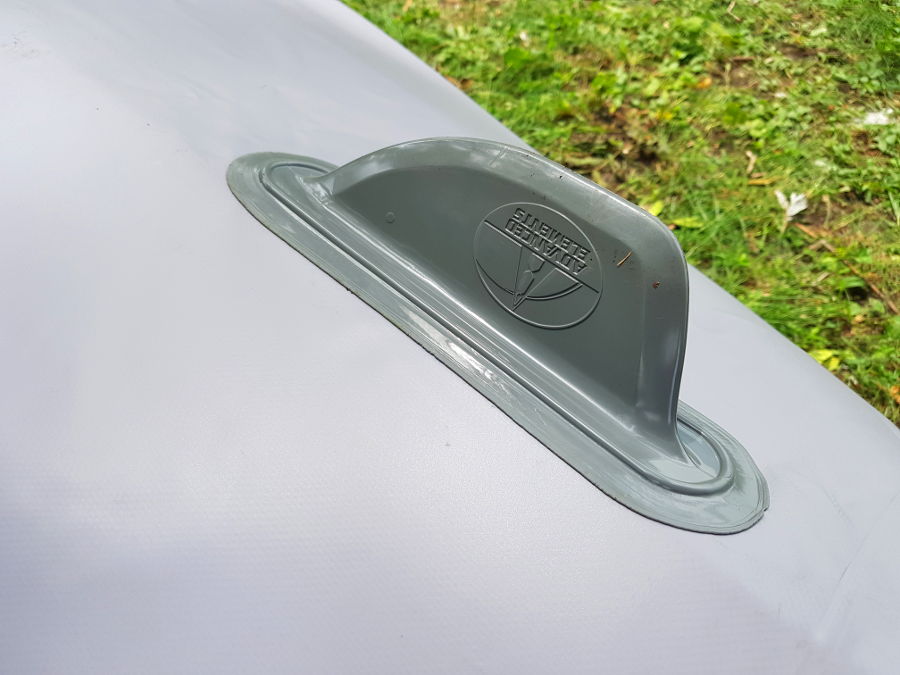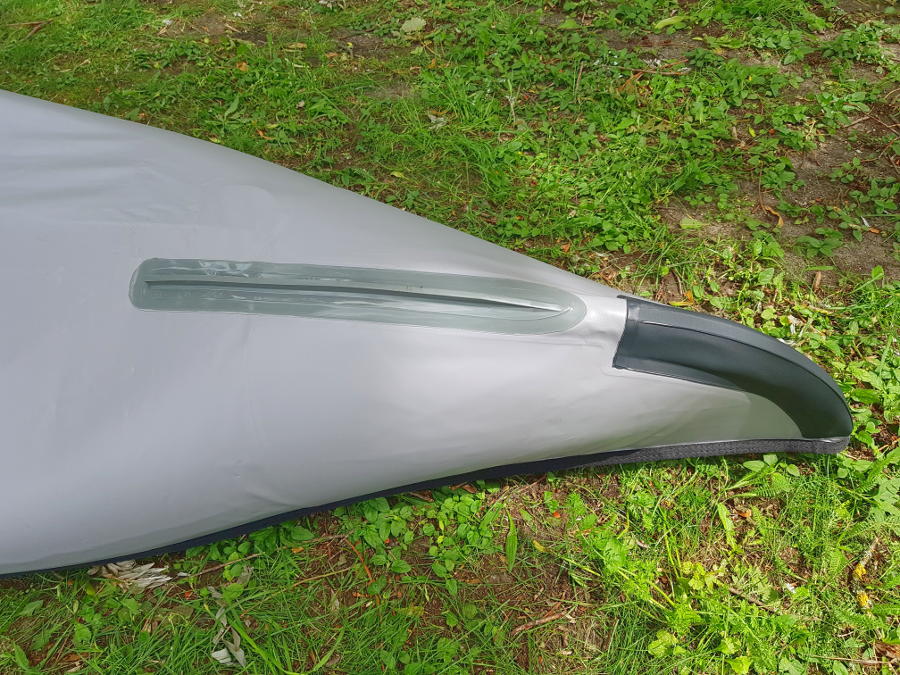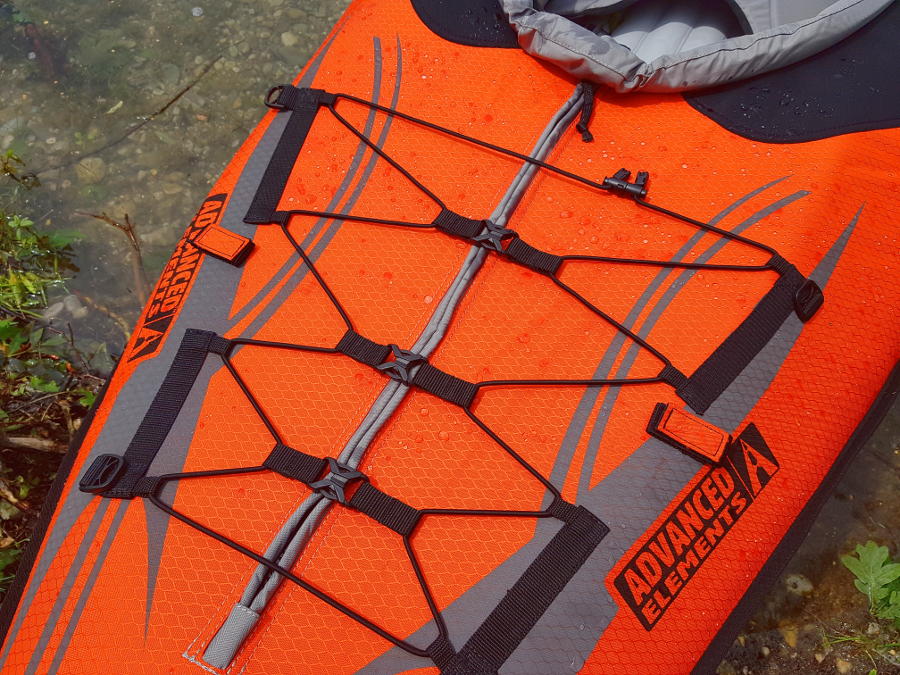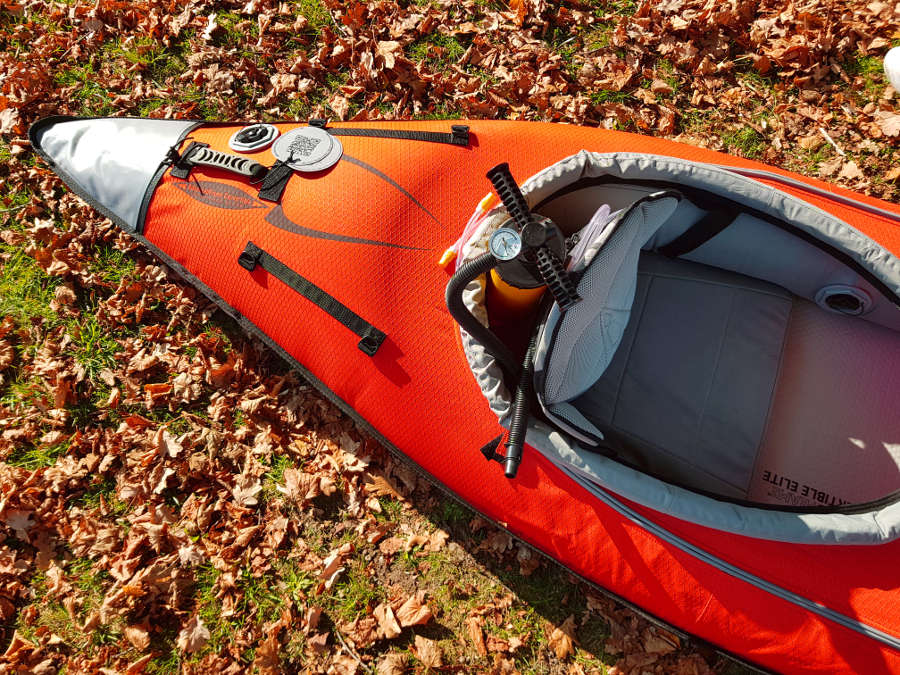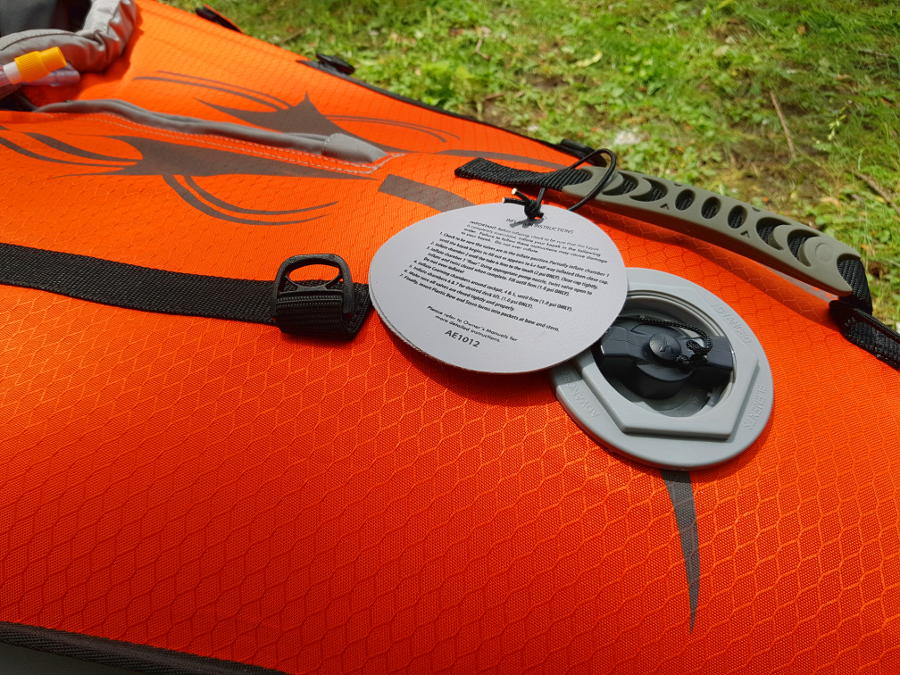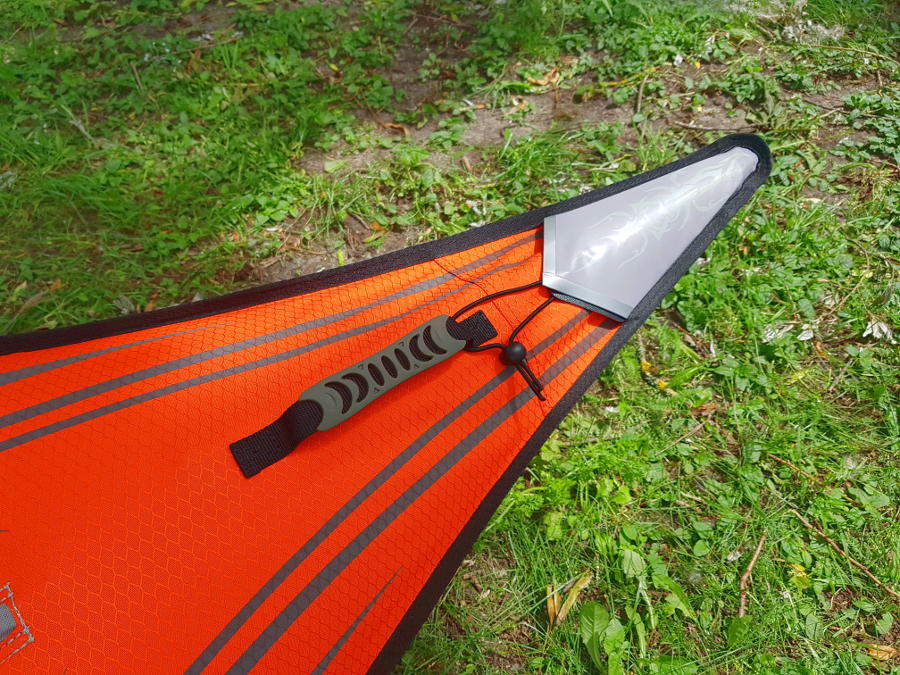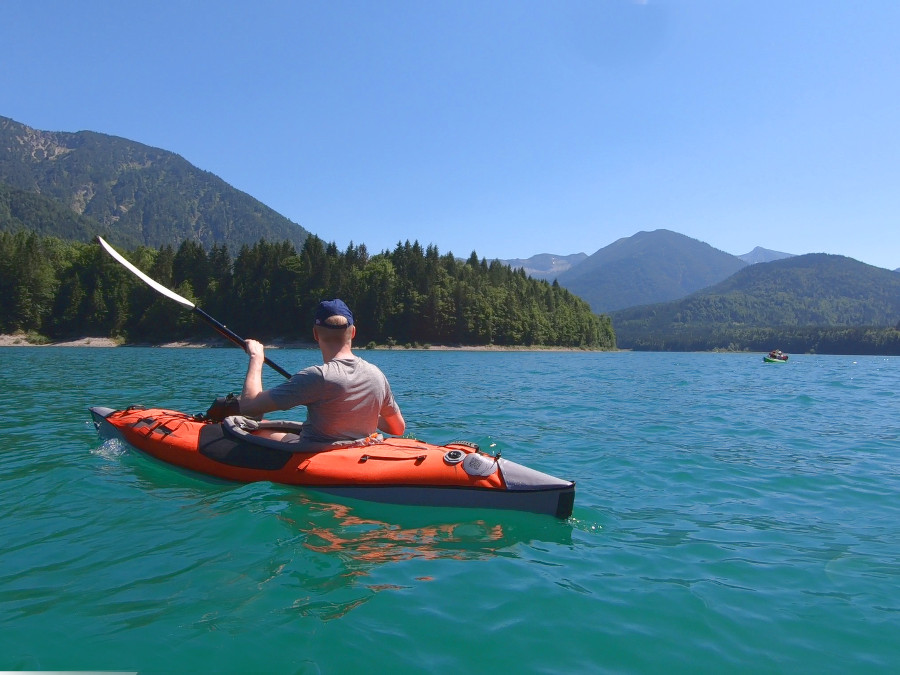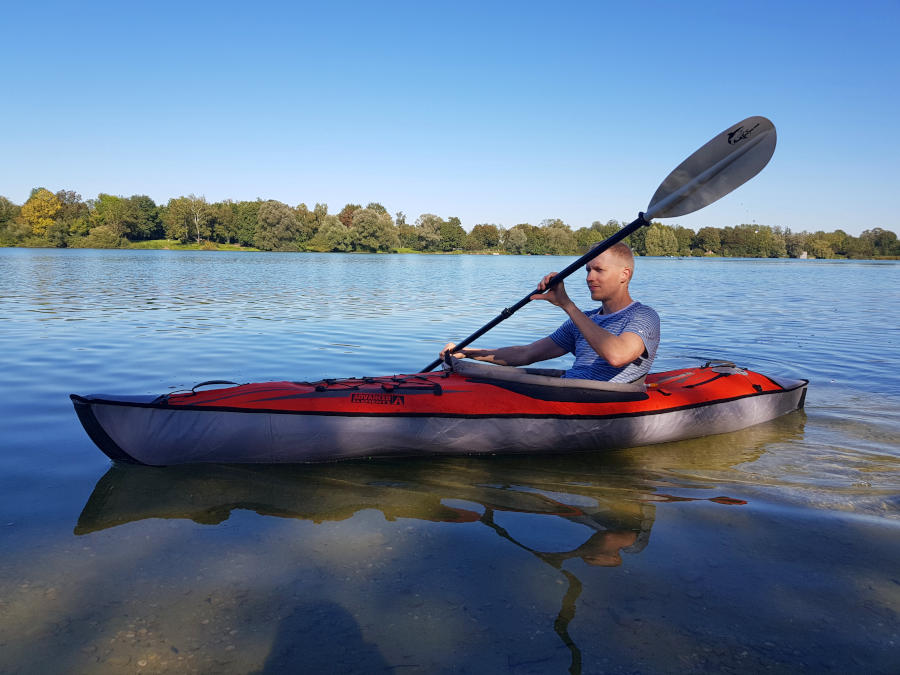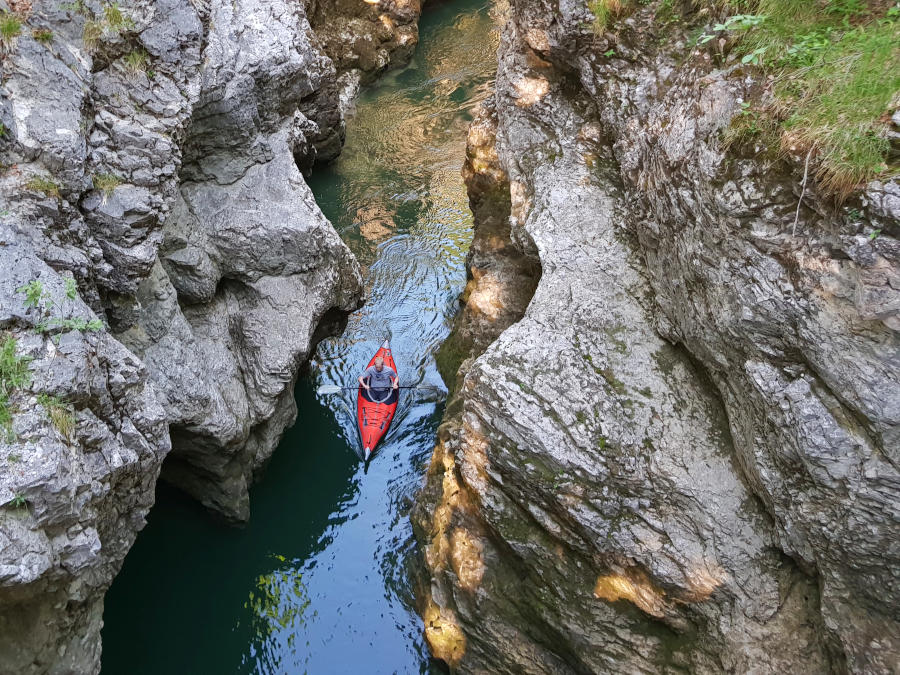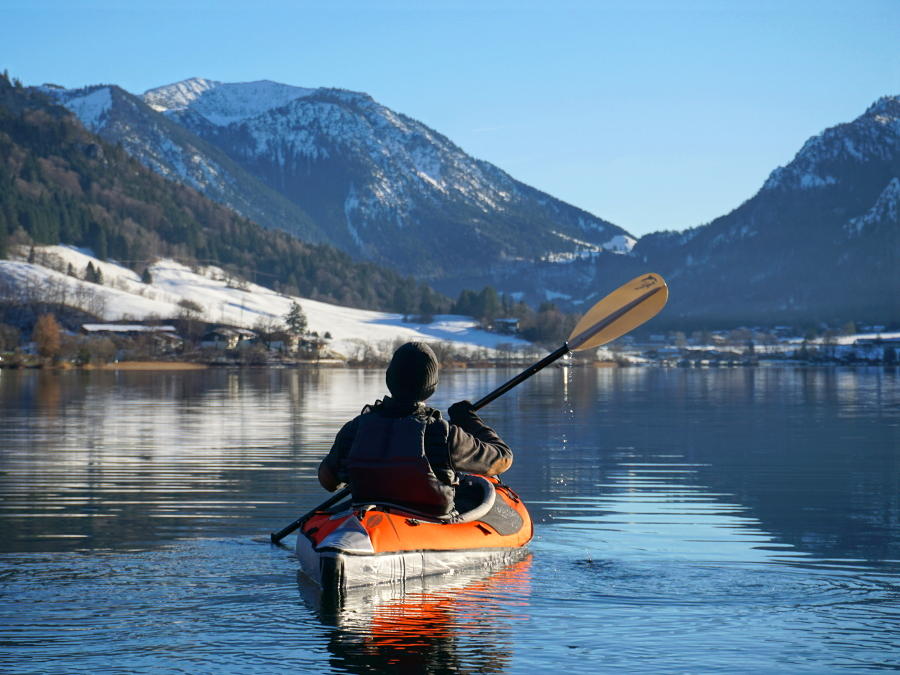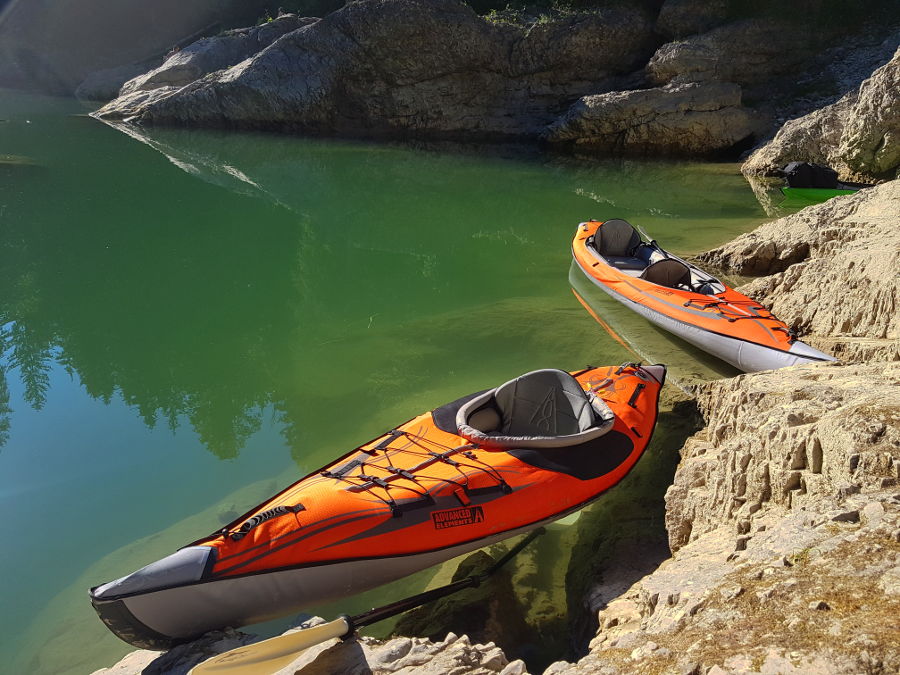Decathlon promises with the Itiwit x500 a hardshell-like kayak at an attractive price, which is still easy to transport. It should not only be light and robust but also quickly assembled. The Itiwit x500 is a full drop-stitch kayak that is inflated to 0.7 bar. Drop-stitch kayaks are a big trend among inflatable kayaks in recent years. A special feature of this kayak is that it has an integrated cockpit and the boat is only 64 cm wide. This speaks on the one hand for good running characteristics and on the other hand for a use of the kayak over the whole year, because the cockpit can be closed completely with a spray cover. In this review, we would like to take a closer look at the kayak, report on our first experiences on the water and give an assessment of who the kayak is suitable for.
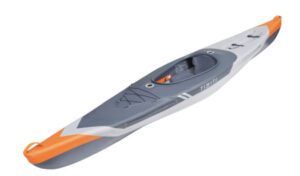
Technical Specs
Max. paddlers:
Length:
Width:
Capacity:
Packed size:
Material:
1
380 cm | 12’5”
64 cm | 2’1”
159 kg | 200.4 lbs
43 x 20 cm | 1’4” x 7”
PVC coated Drop-Stitch
Weight:
Pressure:
Produced in:
16 kg | 35.3 lbs
0.7 bar | 10 PSI
China
Which model has been reviewed?
Itiwit x500 from 2021
How did we organize the review?
The Itiwit x500 was provided to us by Decathlon, a French manufacturer and distributor of sports equipment and clothing. Itiwit is a brand for the paddle sport of Decathlon. Our review is independent of the manufacturer or shop and reflects our own opinion of the boat.
How intensively has the product been tested?
low
2 bars = min. 1 day/ 2 half-day tours
3 bars = min. 4 tours
4 bars = min. 8 tours
5 bars = min. 12 tours (very intense)
Where have we tested the product?
Whitewater
Calm rivers
Lakes
Table of Contents
First impressions and assembly
The Itiwit x500 comes with a large backpack, which makes a rather bulky impression. 16 kg (incl. backpack 18 kg) is not little for a 1-person inflatable kayak. However, here you must not forget that it is a full drop stitch kayak with an integrated cockpit.
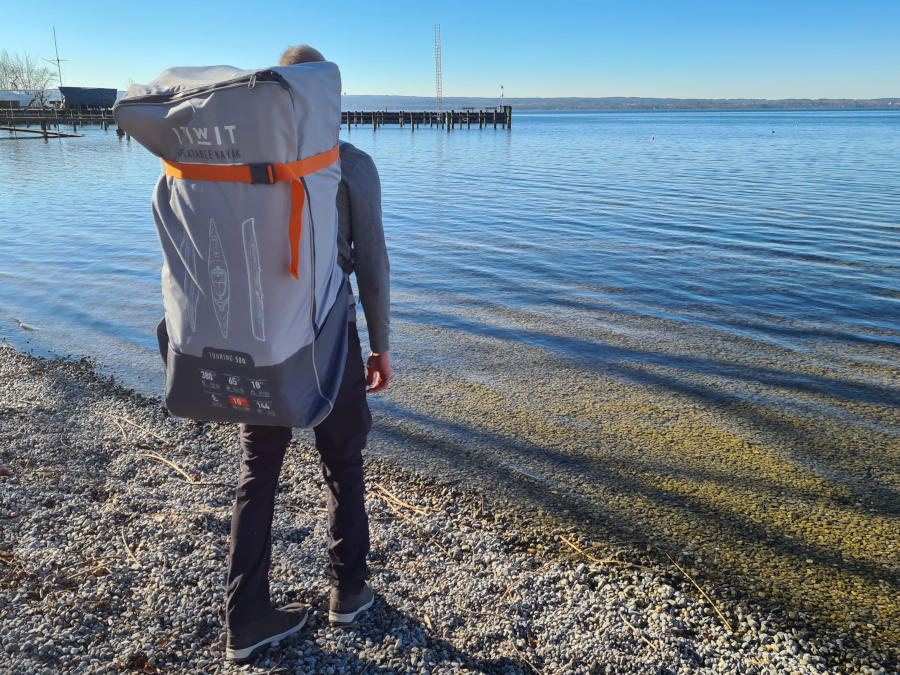
Although the backpack is kept simple, it is very functional and completely sufficient for transporting the kayak to the water. Compared to the included backpacks of many other inflatable boats, the backpack even has a waist and chest strap that make transporting the kayak to the water much more comfortable.
The shoulder straps even have load straps so you can adjust the position of the backpack on your back. So you can decide for yourself whether you want the backpack close to your back and tighten the straps for full control (for example, if the launch site is on the rocky shore), or loosen the straps for more freedom of movement and air at the back.
There is also a side pocket on each side to put your double paddle in. The orange strap not only compresses the backpack from the outside, but also holds the paddle extra tight.
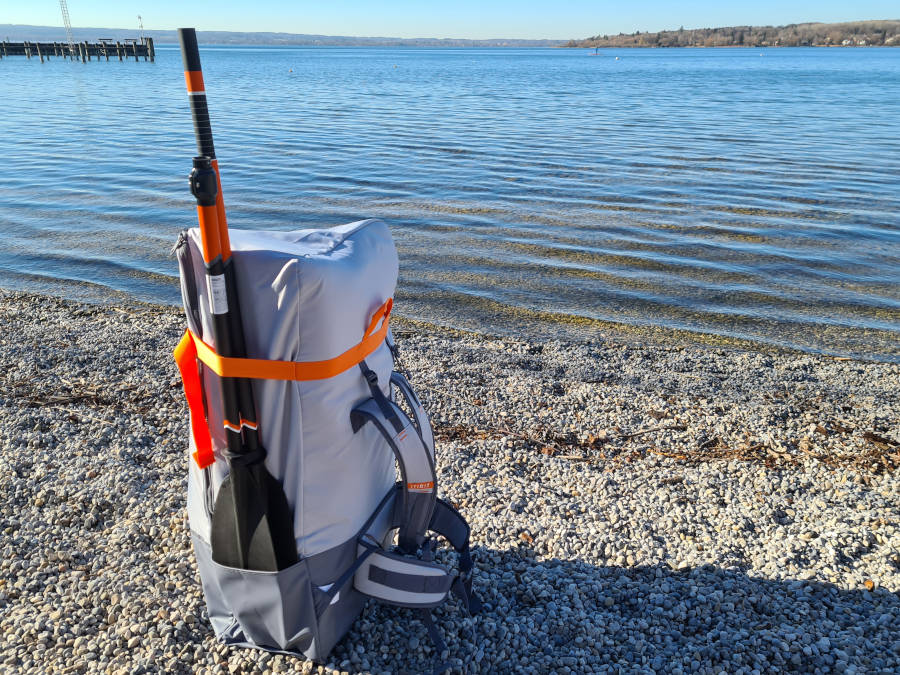
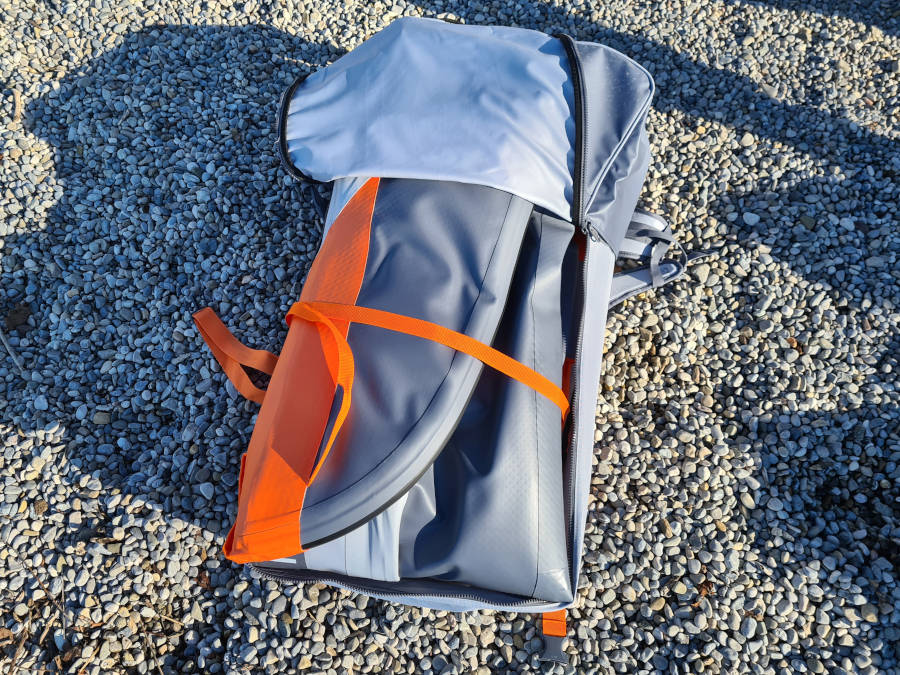
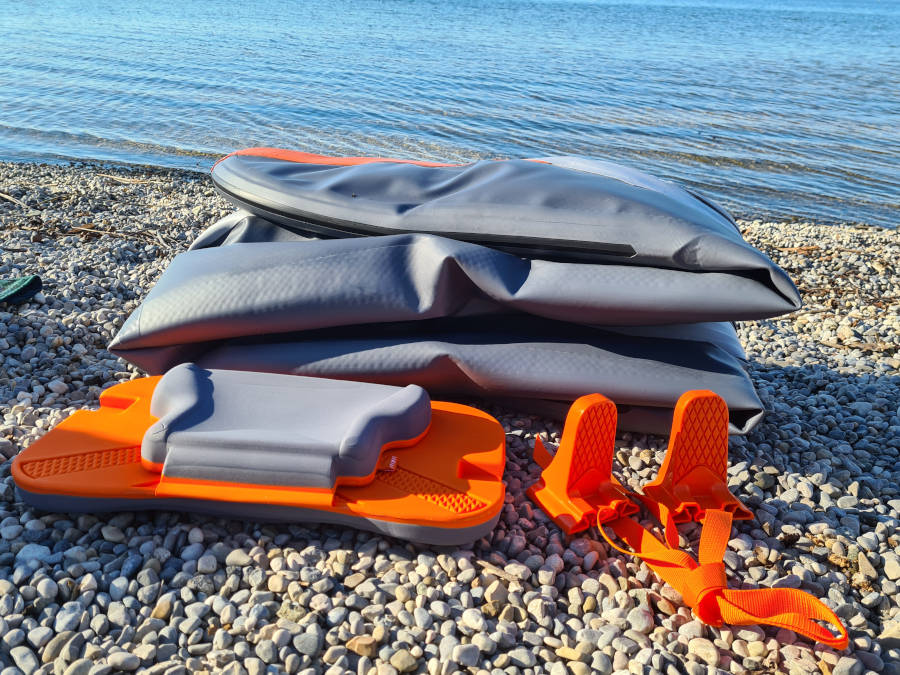
The opening of the backpack is pretty large. The kayak is compressed inside the backpack with another strap. In addition, the backpack contains the seat and footrests.
The Itiwit x500 has a total of five air chambers. Three of them form the kayak hull and the other two form the cockpit. The air chambers are inflated via spring valves that are easy to operate. They are similar to the valves on other high-quality inflatable kayaks (e.g. Advanced Elements).
What is Drop-Stitch?
With the Drop-Stitch technology, the upper and lower inner walls of the air chamber are additionally woven with nylon threads. This is the only way to achieve a significantly higher air pressure than with air chambers without the tangled nylon threads. The air chamber thus achieves very good dimensional stability and rigidity. The Drop-Stitch technology is very common for SUP boards (Stand Paddling Boards) and is used more and more for inflatable kayaks. Learn more about this type of inflatable boats, in our buyer’s guide for Drop-Stitch kayaks.
To pump air into the air chamber, you push out the orange pin. Then turn the cap of your air pump. The valves for the air chambers of the kayak hull are located at the back of the stern, which you can reach through the roll-up closure of the luggage hatch. First, inflate the bottom chamber and then the side chamber up to 10 PSI (0.7 bar), which is a common value for the operating pressure of a full drop-stitch kayak.
We used the Itiwit high pressure pump for inflation, which is a double action pump. You pump up the first 0.35 bar in double action mode (i.e. double stroke). This way you pump a lot of air into the chamber in a very short time. The last 0.35 bar you pump up in single mode. In this mode, you generate the necessary pressure of 0.7 bar. Inflation was very fast with the pump, without really having to use force. Not every air pump creates this necessary pressure of 0.7 bar, which should be considered when buying the air pump.
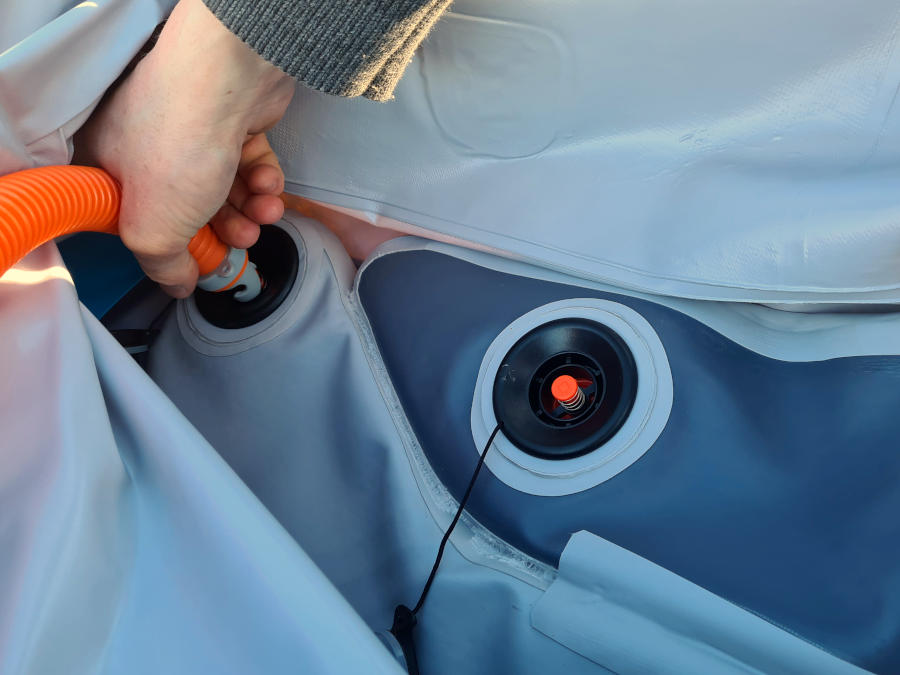
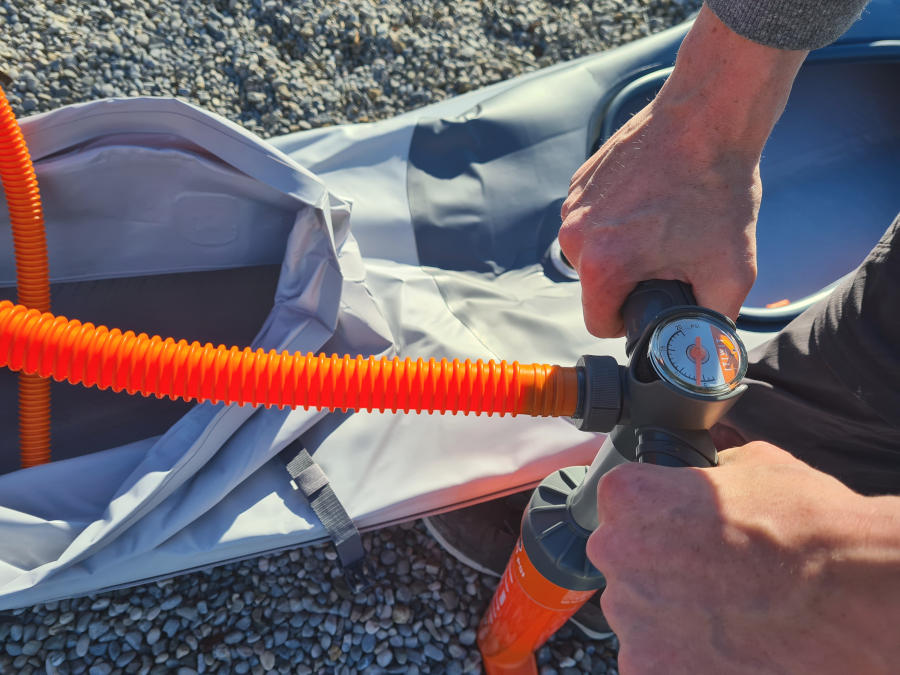
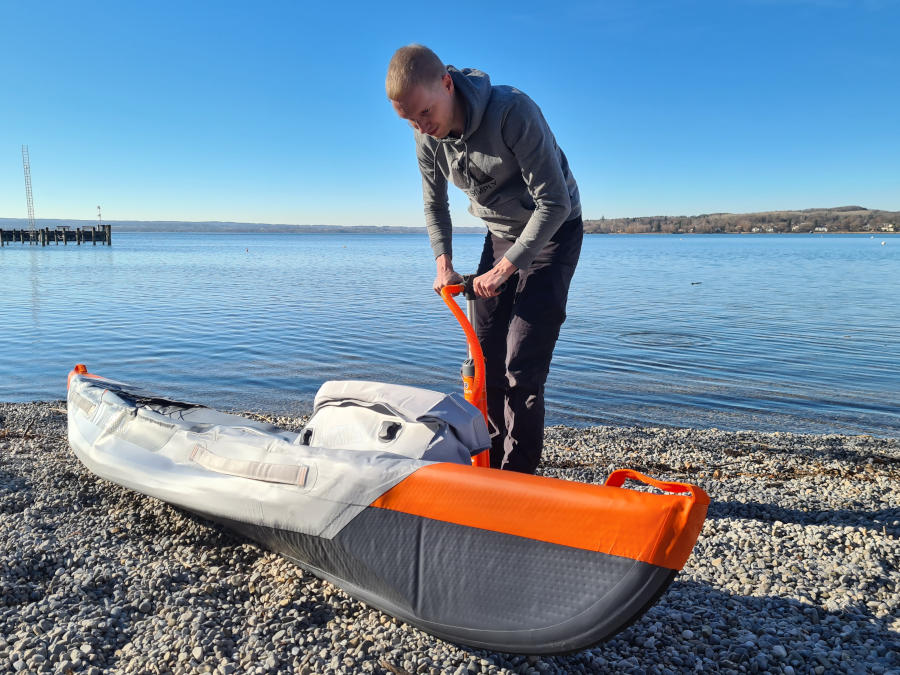
Side and bottom chambers of the kayak are glued together and additionally taped. In the area of the valves, where the tape ends, the chambers are glued together uncleanly or at least too much glue was used (see photo above). According to initial assessment, it is not a detriment, but nevertheless, excessive glue residue testifies to careless processing.
Next, there are two small air chambers in the cockpit in front of and behind the seat hatch that also need to be inflated. These air chambers shape the cockpit and create a slight upward bulge.
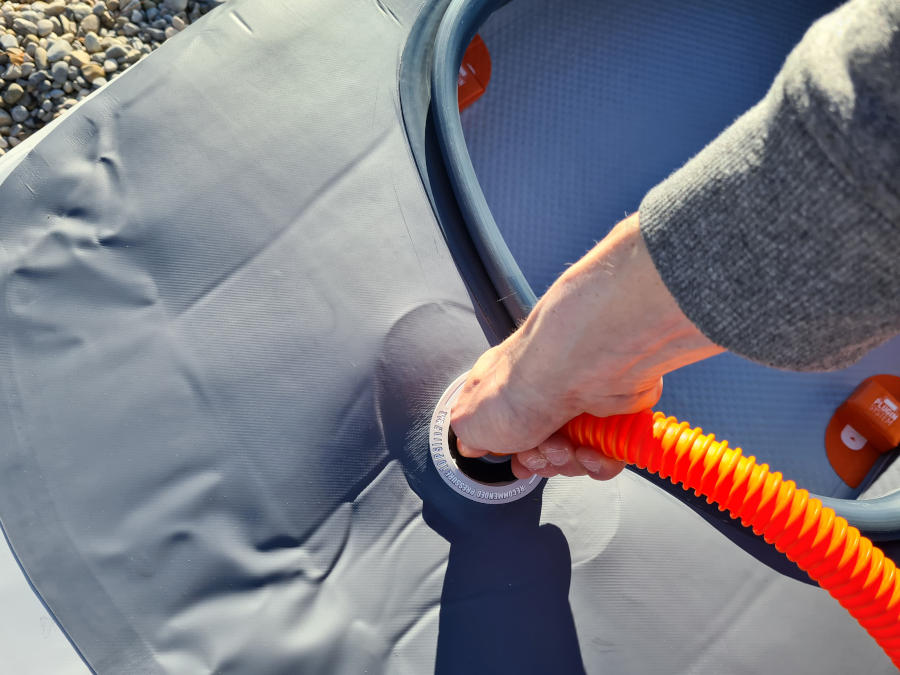
Compared to other inflatable kayaks, the x500 does not require a single strap to secure the seat. The kayak seat is made of a firm foam. The seat surface is 50 x 25 cm. On the bottom of the seat there is a recess on the left and right respectively, which are placed on two wedges in the interior. The backrest, which has a height of 25 cm, is pressed under the coaming and held in position by the air chamber under the cockpit. The backrest closes with the coaming in such a way that the cushion of the backrest still protrudes slightly.
Neither the seat nor the backrest can slip. Especially with the backrest, you have to tighten the straps from time to time with other inflatable kayaks on longer tours. This is not necessary with the Itiwit x500. However, this also eliminates the possibility for individual adjustment of the backrest. The position of the seat and the angle of the backrest is therefore fixed.
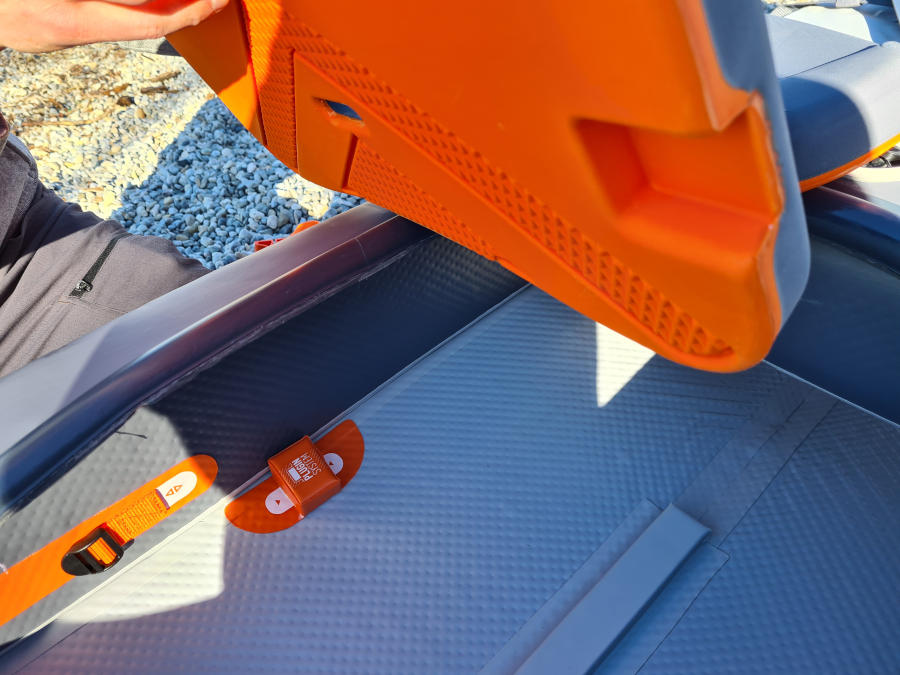
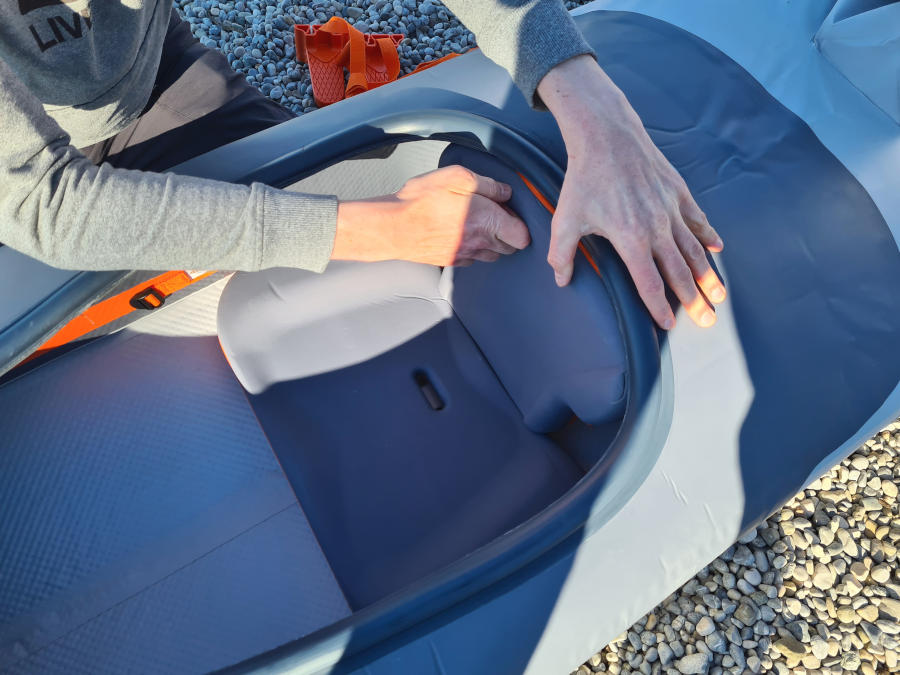
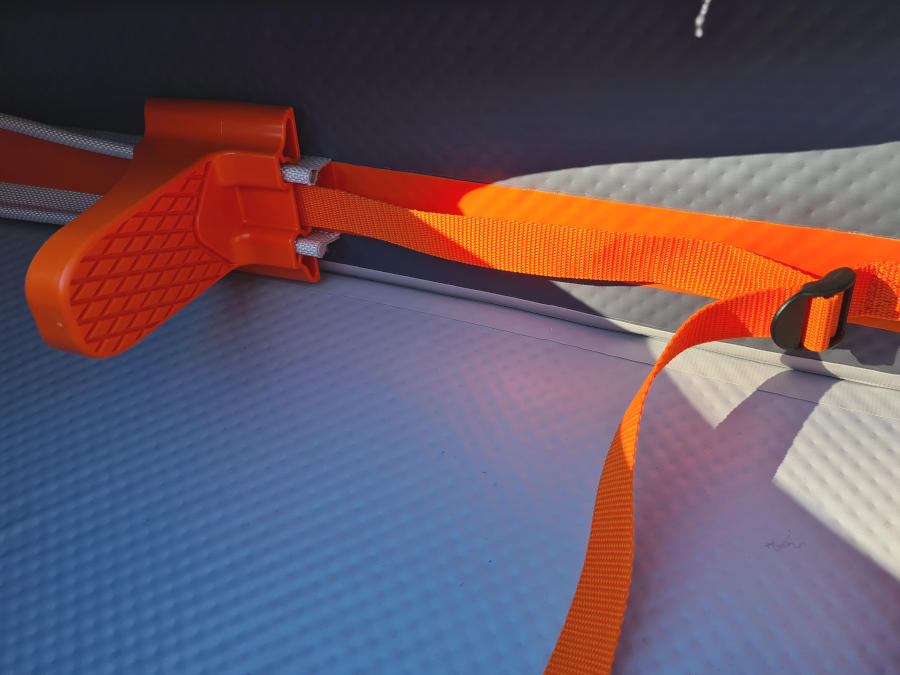
In the footwell, there is a rail on each side for sliding in the footrest. In addition, the footrest is attached to the side wall via a strap and buckle, via which the footrest can be adjusted on each side. We (186 and 189 cm) do not use the full length of the rail and strap by far. The assembly of the footrests worked very easily.
Due to the thin drop-stitch side walls, there is still enough space in the rear for the large air pump or a 40-liter dry bag. The opening of the luggage hatch is large enough to easily place luggage inside. Although the roll-up closure of the luggage hatch closes like a dry bag, it is unfortunately not waterproof according to the manufacturer.
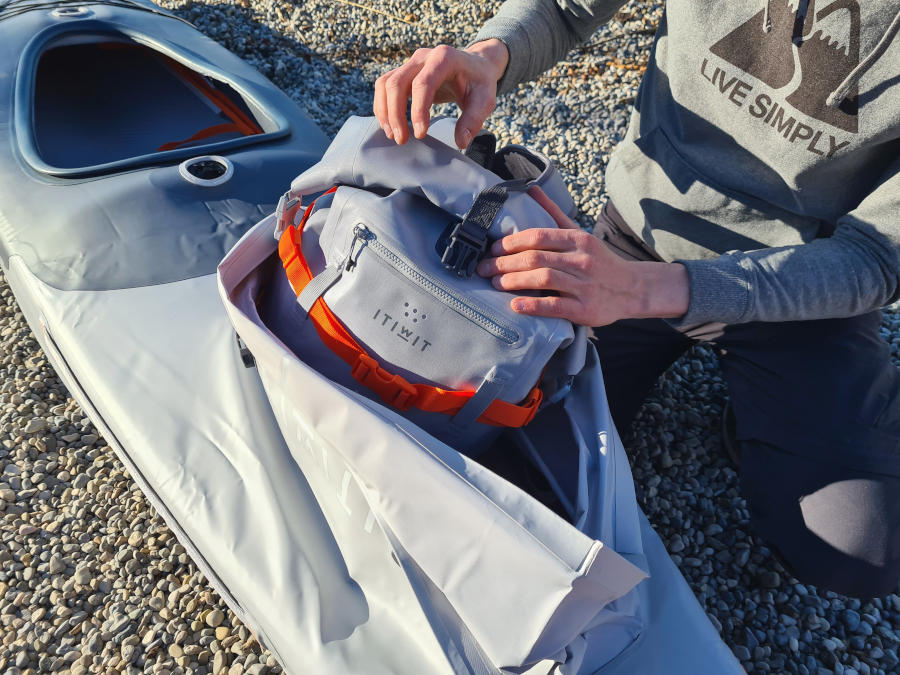
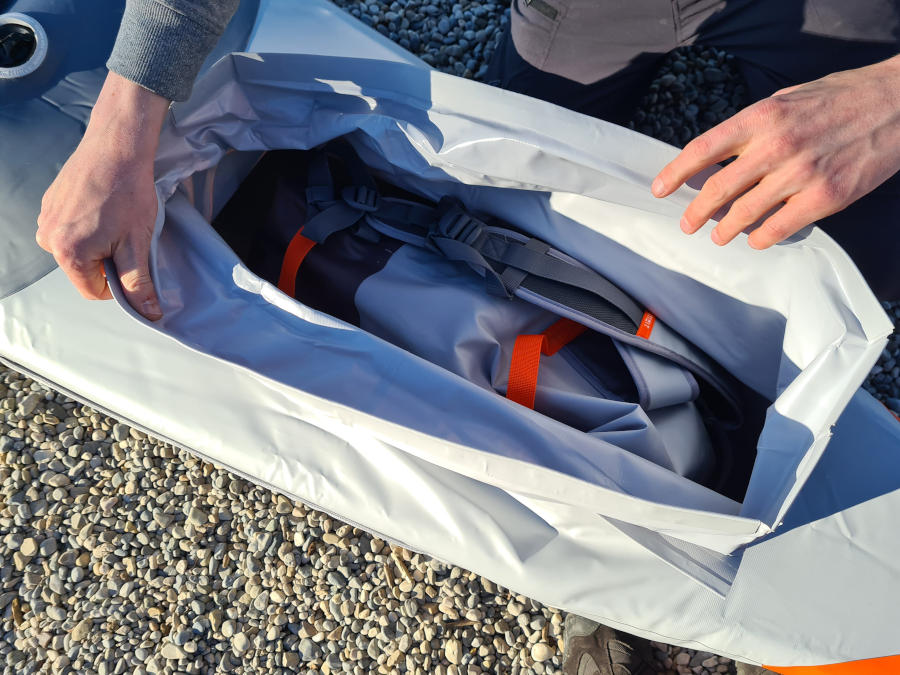
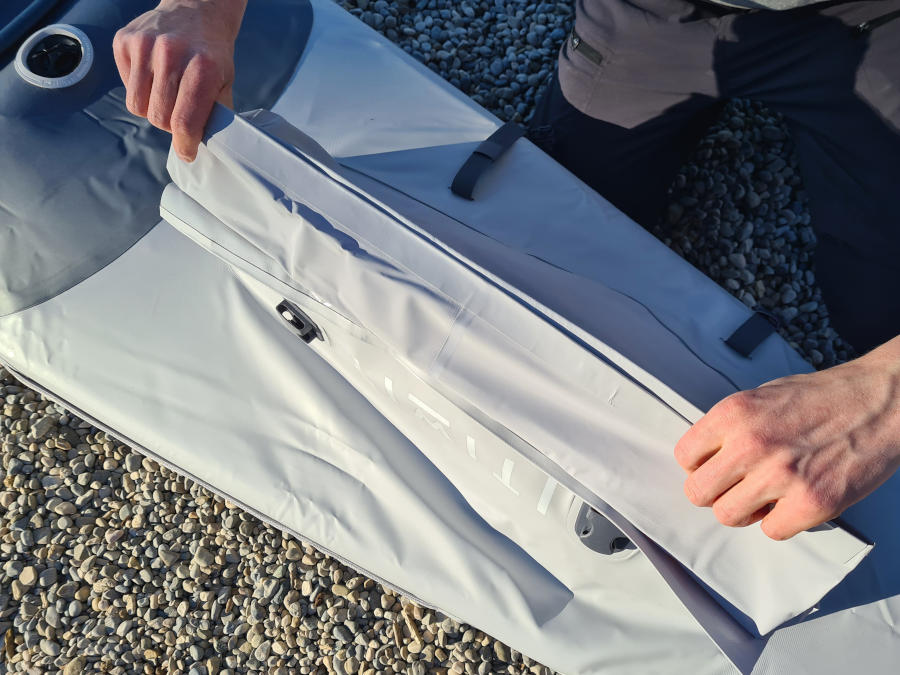
Unfortunately, our brand new model has two small holes in the roll closure of the luggage hatch. Although it is very easy to repair, holes in the material of a new product are very annoying. That’s a pity!
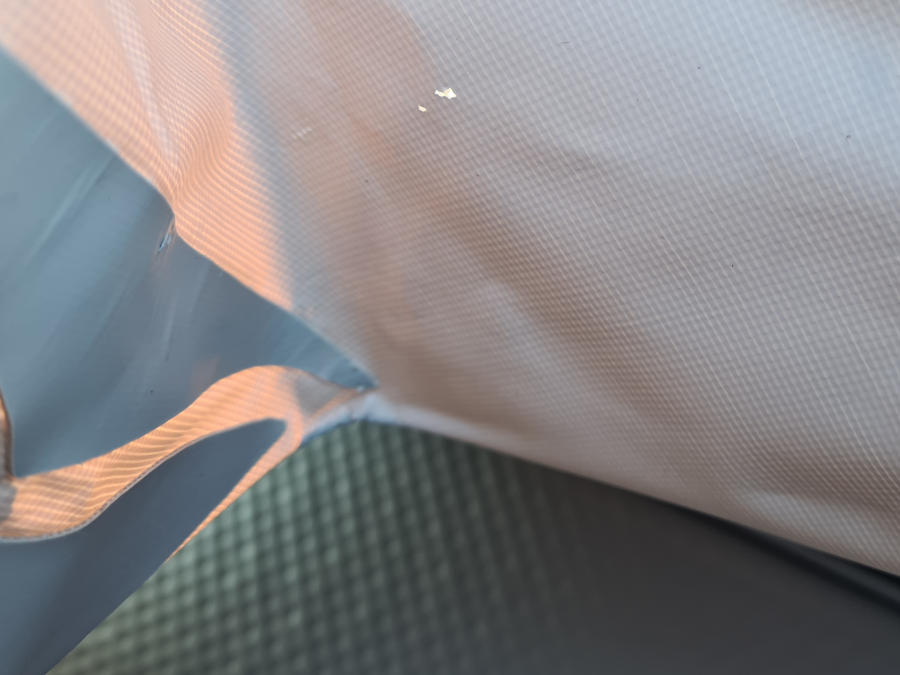
The lower hull of the Drop-Stitch kayak is very well shaped. There is a clear keel line between the bow and stern, forming a V-shape. This promises a good straight-line stability on the water.
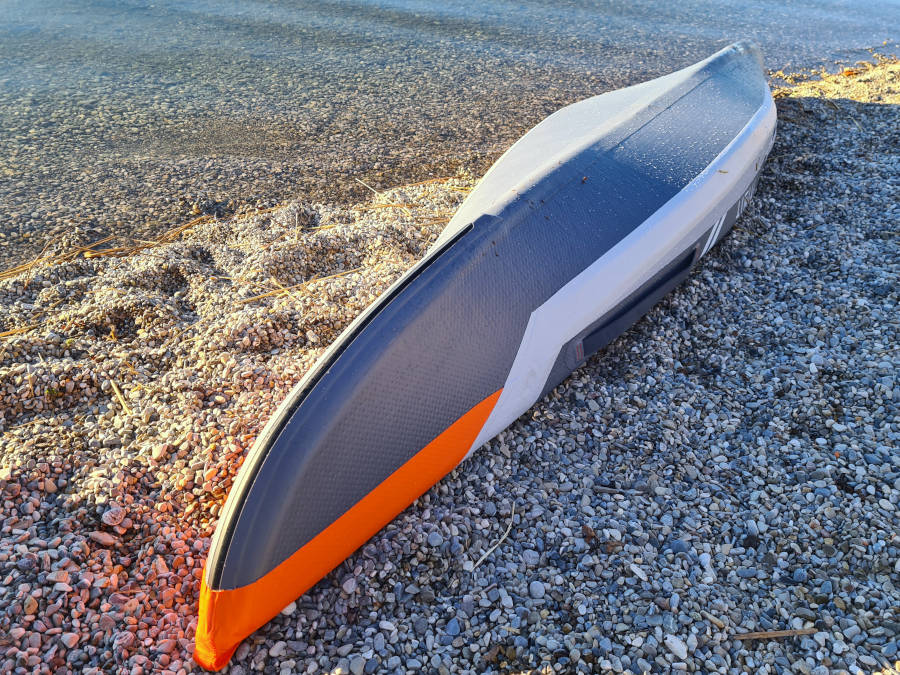
The keel line is additionally reinforced with PVC material. In the bow and stern area, the reinforcement is even more pronounced by a black rubber-like strip. Thus, the most stressed areas of the kayak are well protected when touching the ground and when landing on the shore. Here you can see that the manufacturer has not saved on material and wants to focus on durability.
In addition, under the black keel stripes are an integrated plastic strip, which protrudes slightly along the entire keel line and thus forms a kind of track profile.
In addition, the bow is nice and sleek, so water resistance is minimal. Other manufacturers of full drop-stitch kayaks also use similar designs, such as hard shell elements (e.g. BIC YakkAir) or aluminum rails inside the boat (e.g. Advanced Elements AdvancedFrame), to create a pointed bow so that the kayak cuts the water better.
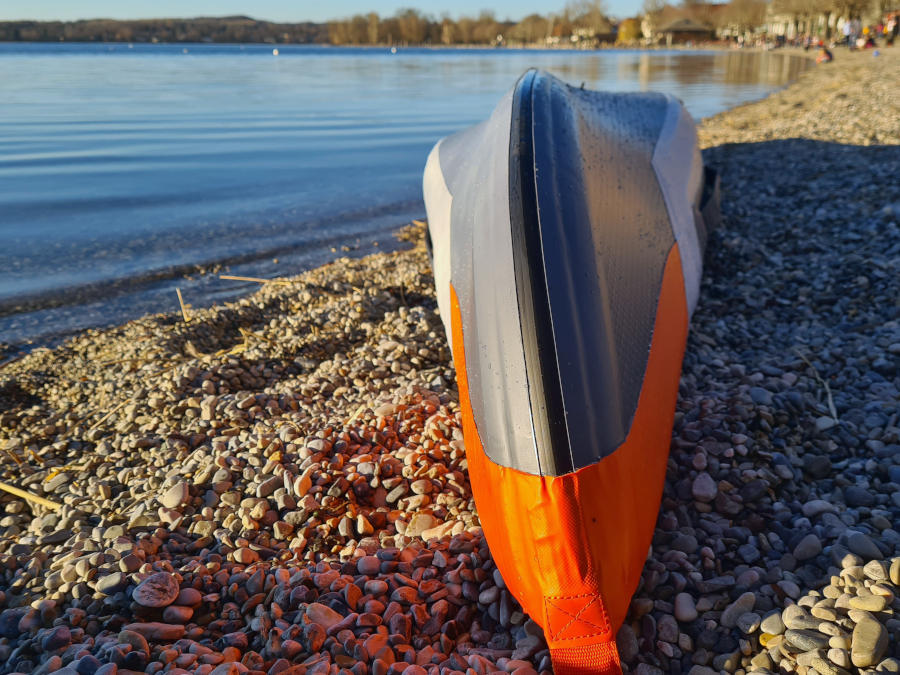
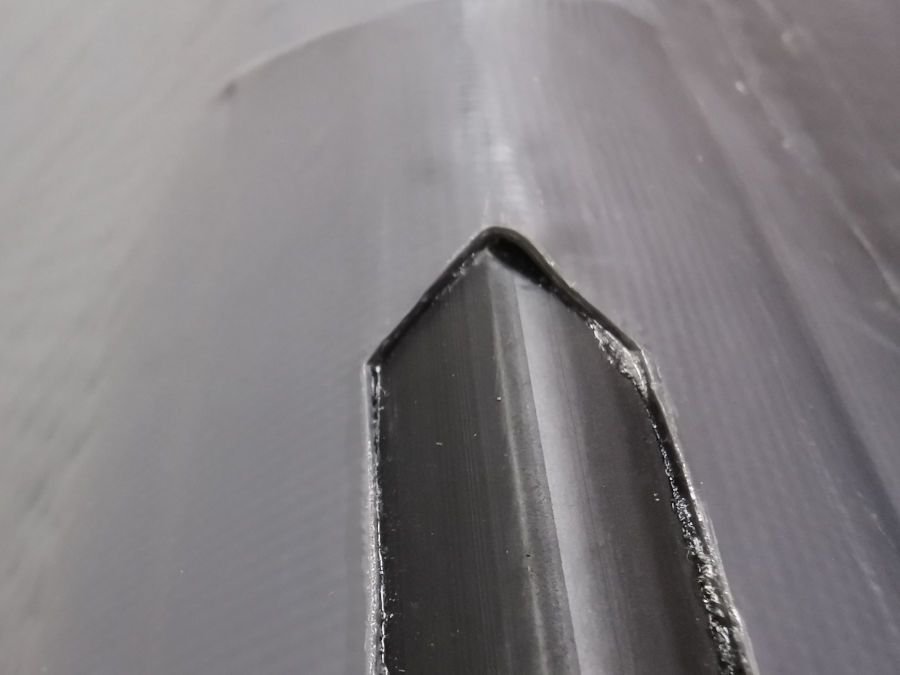
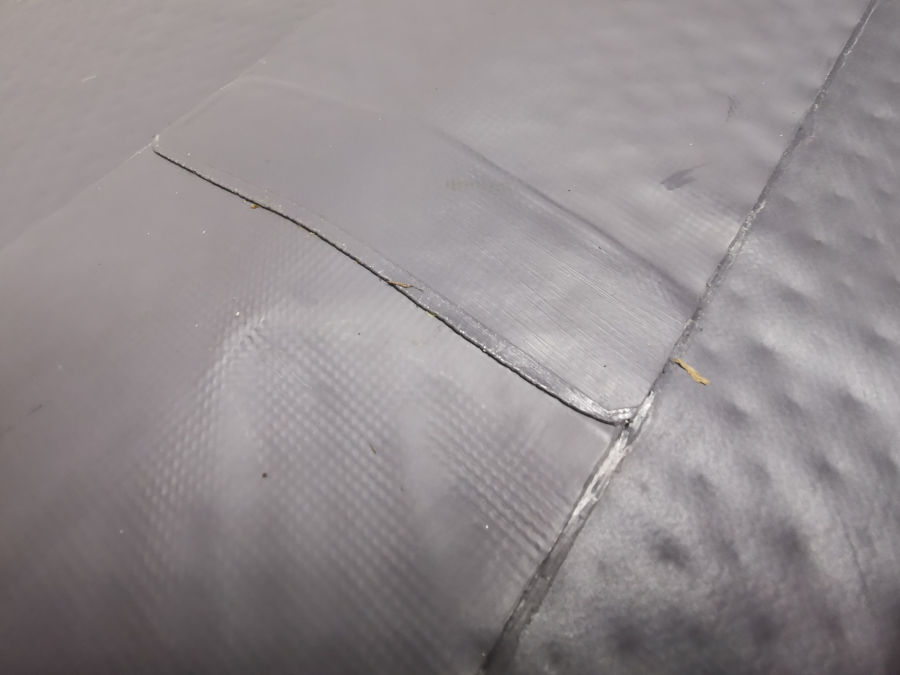
Overall, the kayak is cleanly finished from the outside at the many glued joints. The material makes a robust impression. Nevertheless, we noticed a few small details. On the one hand, the black keel strip disappears under the boat skin. However, the material and boat skin do not seal 100% at the closure point. This does not lead to water ingress, but in the long run to unnecessary dirt accumulation. Secondly, the additional PVC material on the keel line consists of two parts that are glued overlapping in the middle. The overlap should have been glued in reverse (i.e. correctly from bow to stern). So there are two uneven spots on the lower hull in the direction of the current, which can be a weak point especially in shallow flowing water with unfavorable grounding, unless they are 100% glued.
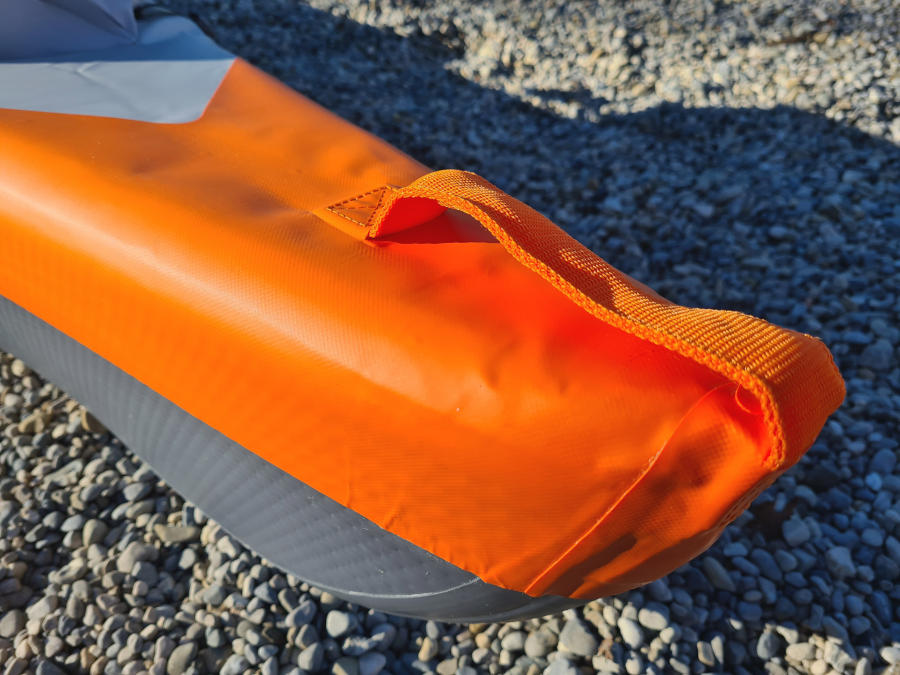
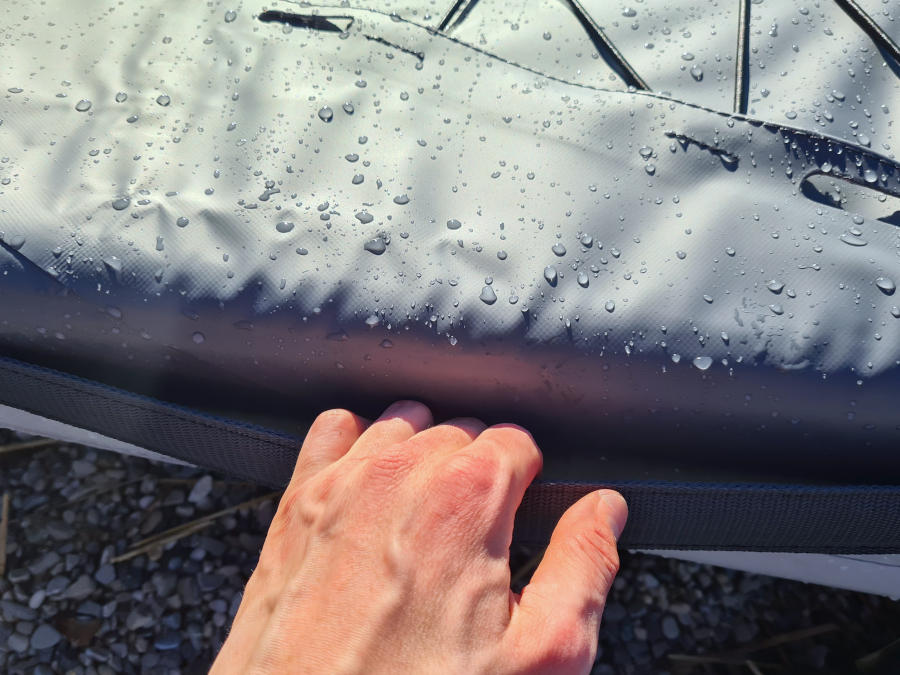
Both the bow and stern of the kayak has a carrying handle, so that the kayak can be carried by two or alone with the help of a boat trolley over some longer distances. For short transport or putting the kayak into the water, we use the coaming as a carrying handle.
In addition, there are two safety lines on each of the two outer walls to hold on to the boat in case of capsize. This is especially important on open water. These are also very handy for pulling the kayak to shore. For carrying the kayak to the water on these safety lines alone, we find the position of the handles too far apart. In that case, you carry the boat to the water with your arms stretched wide. Therefore, the safety lines are less suitable as carrying handles.
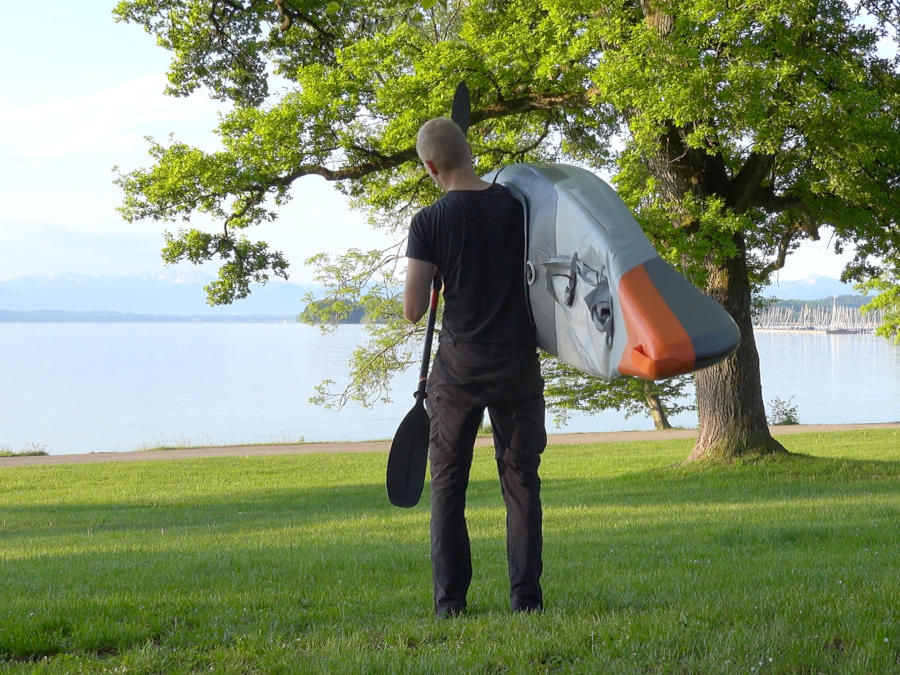
Review of the Itiwit x500 on the water
Stability of the Itiwit x500 kayak
The Itiwit x500 is clearly more tippy than most inflatable kayaks (e.g. Advanced Elements Advanced Frame, Gumotex Rush, nortik scubi 1 XL, …) but from our point of view not more tippy than e.g. the Gumotex Framura or BIC YakkAir.
Due to numerous reviews in the Decathlon store, we were prepared to capsize with the kayak. However, this didn’t happen. On the one hand, there is a revised version of the kayak since mid-2020, in which the tipping stability was increased. The V-shape has been flattened in the seat area.
On the other hand, you can significantly increase the tipping stability by sitting correctly in the kayak. To do this, adjust the footrests so that you have a total of five points of contact with the kayak with your feet on the footrests, your knees on the cockpit, and the lumbar region of your back with the seat, all under slight pressure. Then the tipping stability is really good for such a narrow inflatable kayak with a pointed keel, so that even rapids in rivers are no problem.
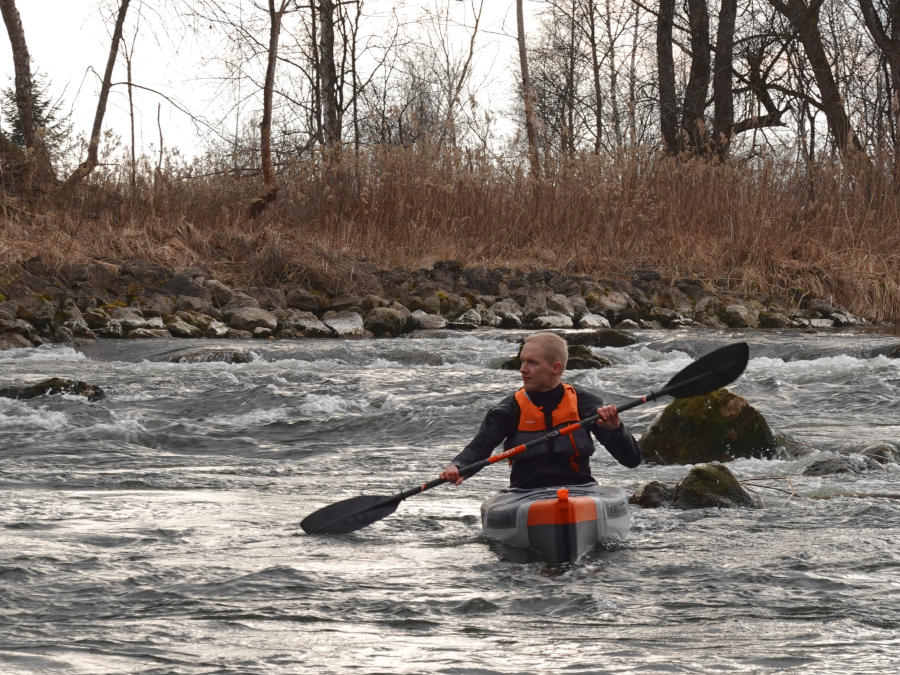
Nevertheless, you can also adjust the footrests on the water, e.g. loosen them on calm waters to stretch out the legs. In this case, the kayak will feel more tippy and hasty movements should be avoided.
Space and comfort
Thanks to the drop-stitch sidewalls, the kayak has a spacious interior despite its small external width of 64 cm. For a day trip, the luggage volume of the kayak is very good. For multi-day trips, however, it will be tight if you don’t have compact camping gear. There is enough space in the stern for the large air pump, the kayak’s transport backpack and small dry bags. If the air pump is not in the rear, a larger dry bag (40 liters) also fits in the rear.
Alternatively, a backpack or dry bag can be attached to the luggage net at the front of the bow. There is no way to attach luggage on the rear cockpit. However, you can use several tension straps to attach luggage to the rear side safety lines. D-rings or loops on the cockpit would have been a better solution though.
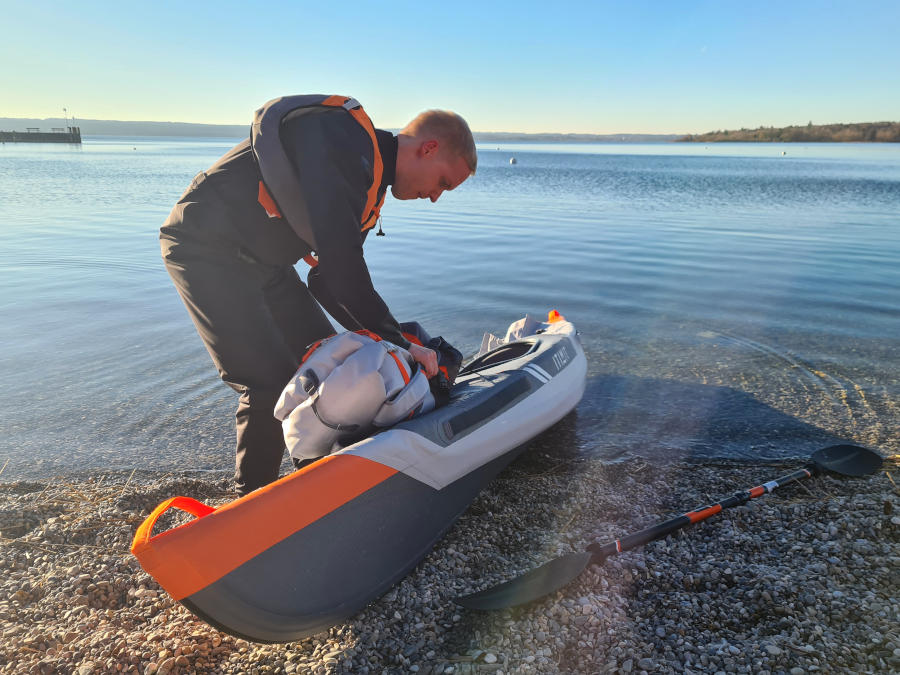
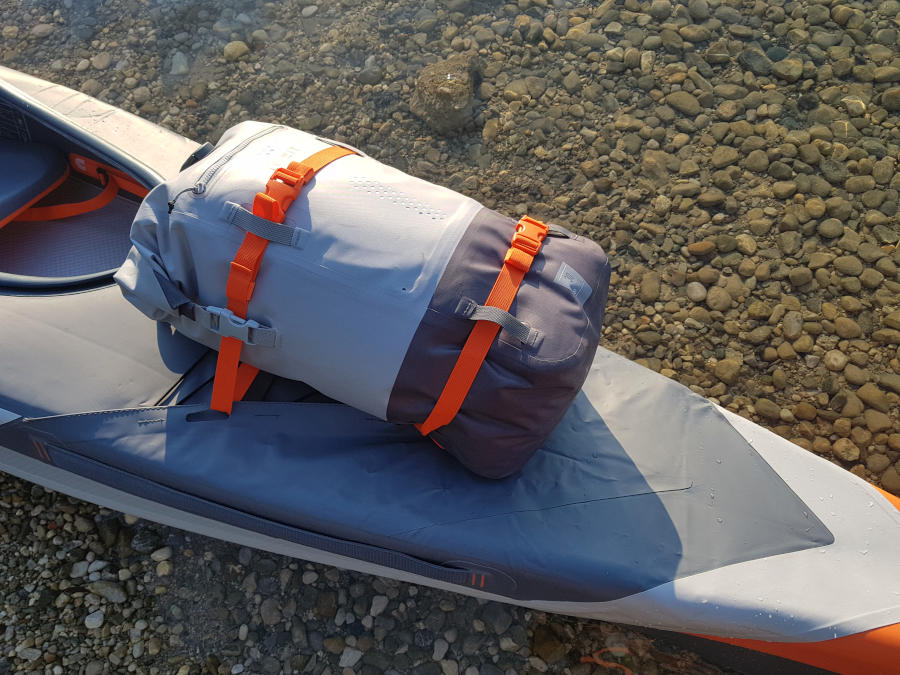
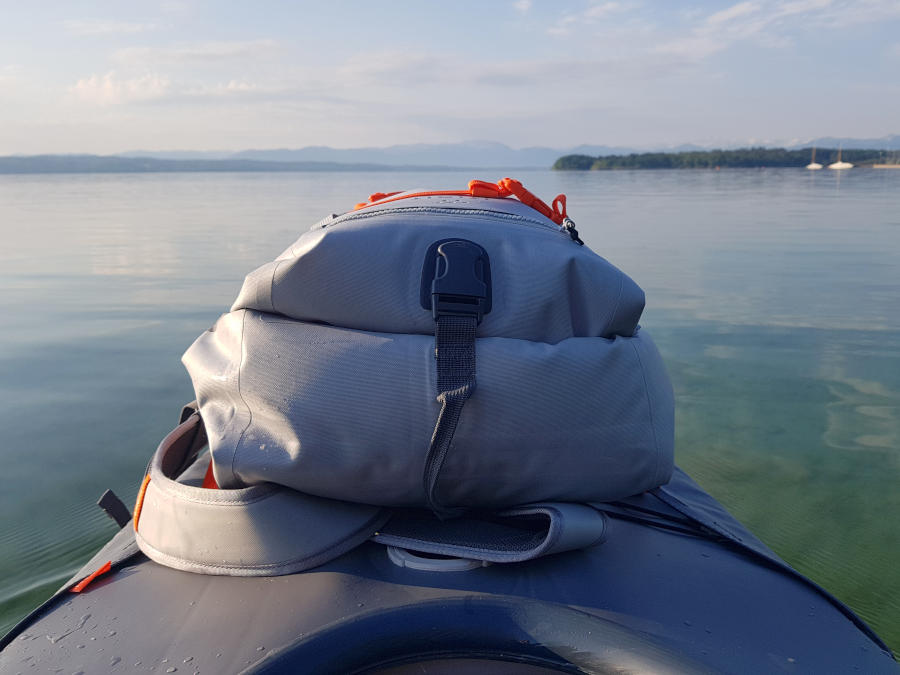
The footwell is sufficiently long so that even tall paddlers have enough space. However, the cockpit limits the height of the footwell. Paddlers who have at least a shoe size 45 and also go paddling with sneakers should test sit in the store beforehand, or alternatively, when ordering online, before the first use in the water at home, to see if the height in the footwell is actually sufficient.
Compared to most inflatable boats (e.g. Gumotex, Advanced Elements, …), the seating comfort is lower due to the harder seat and lower backrest, but higher than hard shell kayaks. Those who mainly want to paddle comfortably reclined in the kayak will quickly complain of back pain and have little pleasure with the x500. Since the backrest is only 25 cm high, most life jackets usually do not provide additional padding either, so that this does not result in increased comfort.
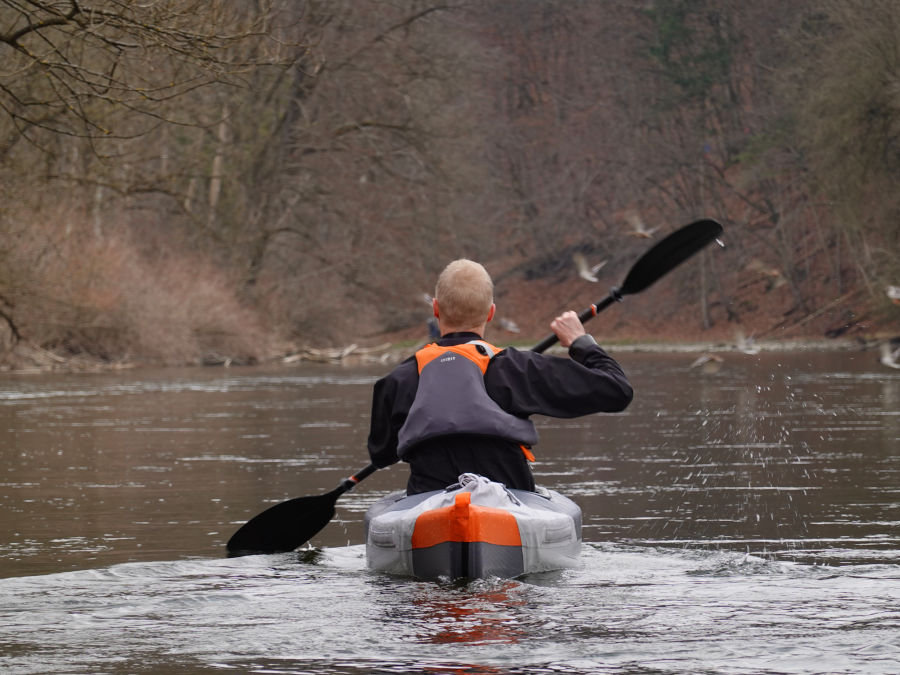
A backrest rising above the coaming would conflict with the concept of a sea kayak (e.g. because of simplified re-boarding in the event of a capsize). However, if you take care of a straight upper body and sit properly on the seat (i.e. with the bottom up to the backrest), you do not need a high backrest. The backrest does not serve to lean in (nevertheless possible for a short time or breaks, but uncomfortable in the long run) but as a relief for sitting upright and as a further fixed point between paddler and kayak. Considering a correct paddling position, we find the seating comfort of the x500 good.
Seat hatch, coaming and spray skirt
The cockpit has a sufficiently large and oval-shaped seat hatch to get in and out of the kayak without much effort. Even without a splash skirt, the cockpit provides good splash protection. Due to the two air chambers under the cockpit in front of and behind the coaming, the cockpit is slightly curved so that splash water immediately flows away from the cockpit and does not accumulate or flow into the seat hatch.
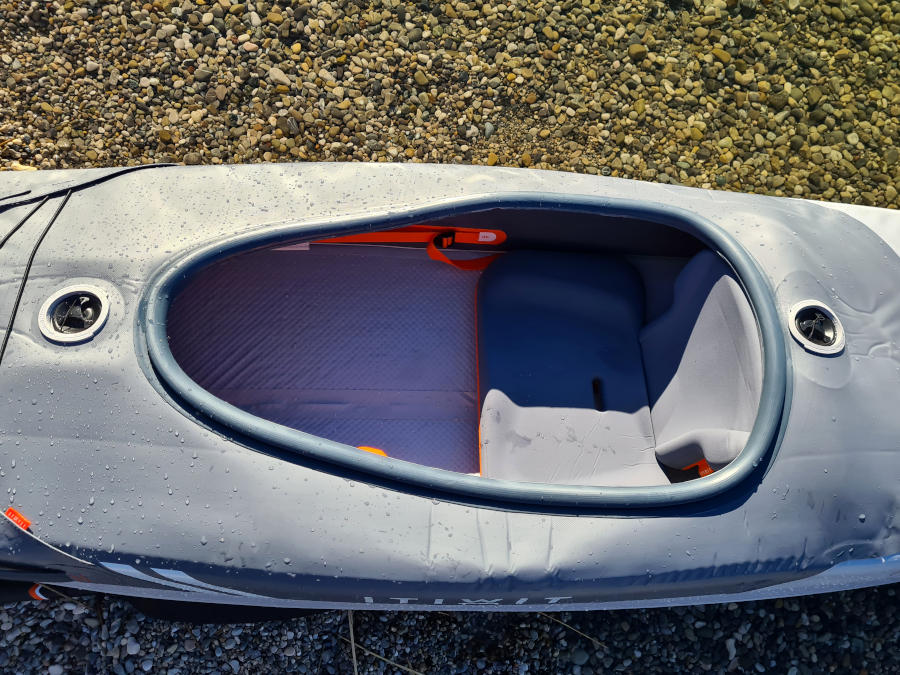
The seat hatch can be closed waterproof with a spray skirt. This allows you to use the kayak in the cold season and in coastal waters. Attaching the spray skirt is not fun at first and takes a lot of getting used to. Compared to the fixed coaming of a PE kayak, the flexible coaming of the Itiwit x500 requires some technique and a little patience to attach a spray skirt.
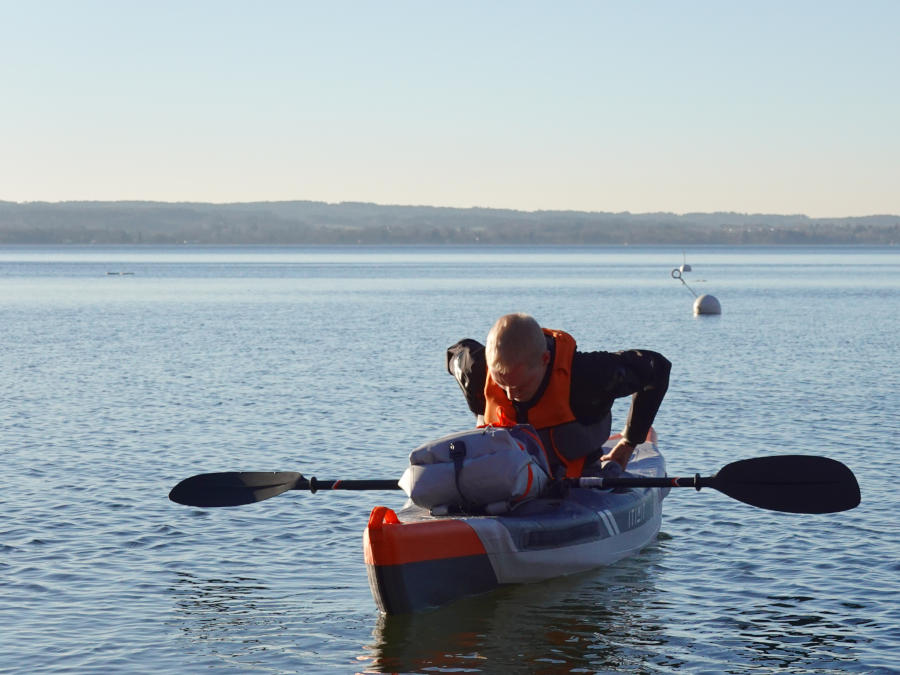
We used the Itiwit neoprene spray skirt. The edge of the spray skirt is sewn so that the rear part can be pushed under the coaming. It is important to put the back part of the spraydeck in first. The remaining edge of the spraydeck must be pushed under the coaming. To do this, you need to bend the coaming up a bit. After several failed attempts, the fingers hurt and it becomes a real fumbling. In winter, with cold hands, we imagine that this is even more difficult. With a little practice, however, the attachment of the spray skirt works better and better. Instructions for attaching the spray skirt are available on YouTube from the manufacturer.
If the spray skirt is attached, it sits very well and does not come off by itself. Nevertheless, the spray skirt can be easily detached from the coaming with a handle (at the loop). Therefore, we find the spray skirt a useful addition to the kayak to be able to close it completely.
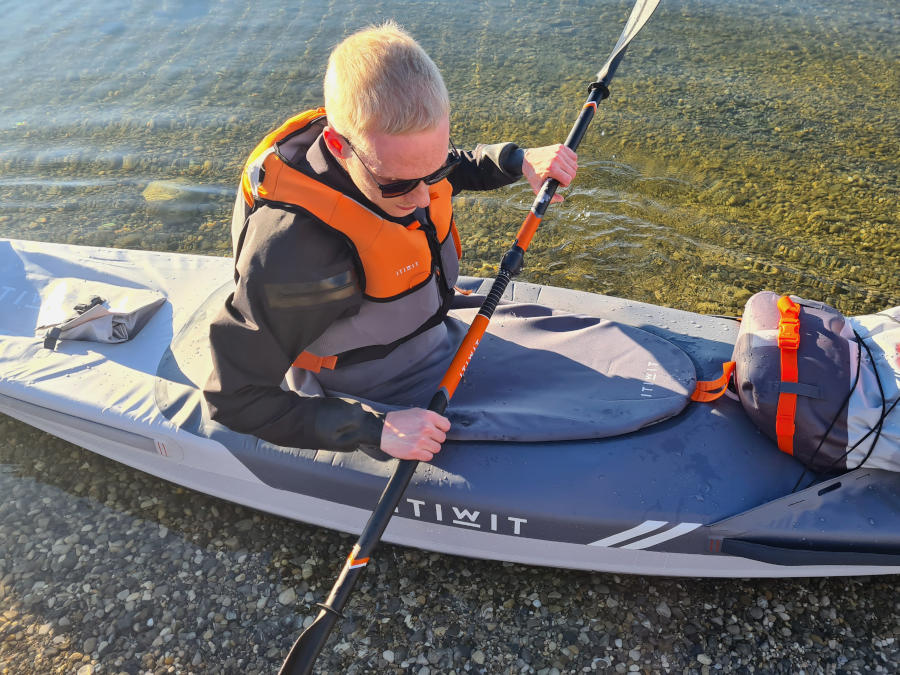
Paddling performance
We paddled the kayak with the Itiwit Carbon double paddle (210 cm long), which worked very well for us. A 230 – 240 cm long double paddle, which we usually use with our inflatable kayaks, would be significantly too long with the narrow Itiwit x500.
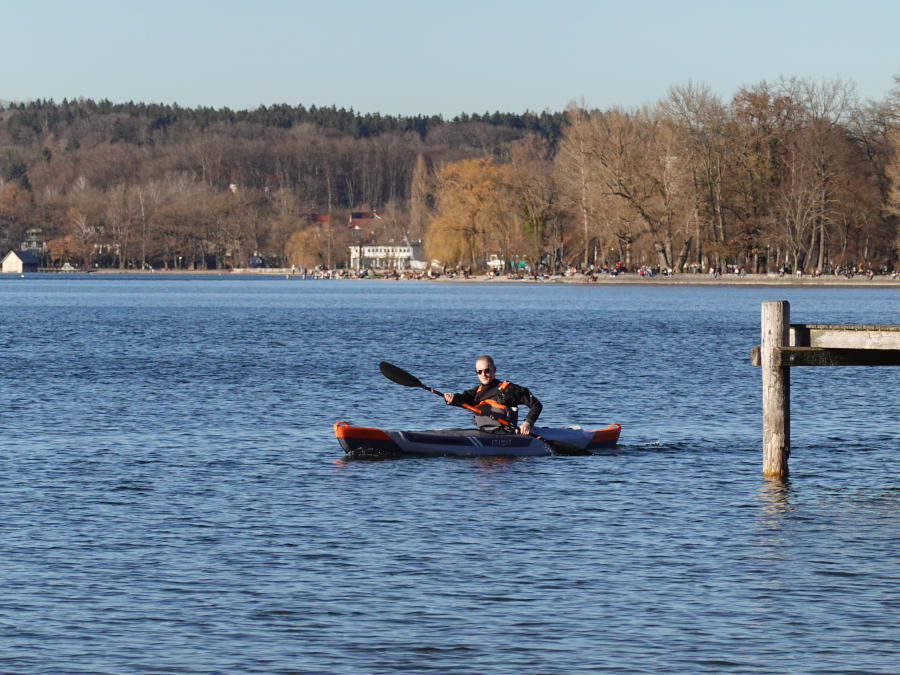
For an inflatable kayak, it has really good dimensions thanks to the drop-stitch side chambers. We have never paddled a narrower air kayak. The positive effect of the narrow hull width in combination with the pointed keel can be felt immediately when paddling.The kayak runs well through the water. The kayak accelerates quickly. Speeds of 3.7 – 4 mph are possible without effort with a light paddle stroke over longer distances. We paddled the Itiwit x500 at a maximum of 5.4 mph, at which point a bow wave forms and paddling is no longer efficient. Note that these are approximate values.
The kayak has very good trim on the water and forms a high effective waterline with its short rocker. For a 380 cm long inflatable boat without fin, the straight-line stability during paddling is very good. If you stop paddling and drift, the kayak will drift just slightly in either direction instead of keeping track. However, this is completely normal for inflatable boats. We only know similar good paddling characteristics the AdvancedFrame Convertible Elite.
The Itiwit x500 is noticeably less maneuverable due to its V-shaped lower hull. For small blocked and winding rivers, the x500 is clearly at a disadvantage due to its design.
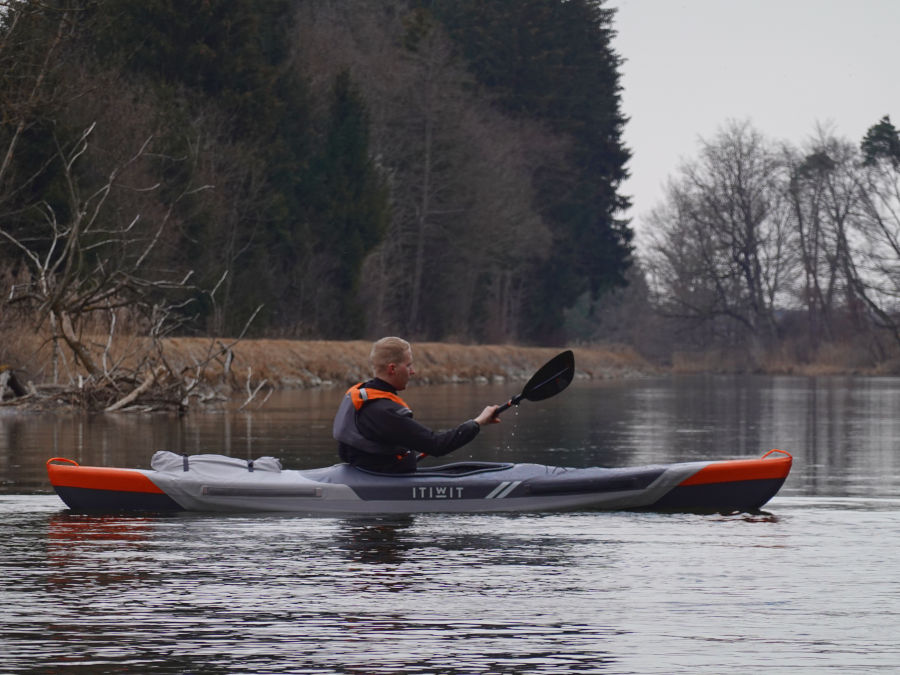
Compared to the inflatable kayaks tested so far, a significantly better upper body rotation is possible because the fixed footrests on the side chambers support the rotation of the upper body during the forward stroke. The stroke force when paddling is thus higher, without the boat constantly pulling to the left or right at the same time (which is normally the case with inflatable boats). With the Itiwit x500, overall significantly more paddling technique (e.g. weight shifting to make turns, …) is possible than with a conventional inflatable boat (e.g. Advanced Elements AdvancedFrame).
A skeg for the x500 is not necessary from our point of view. The straight-line stability is already good enough. If you are a fan of a steering system, you will miss it on the x500. Steering systems are mainly practical to countersteer in wind and current without having to paddle against it all the time. However, we have to say that we would not prefer a steering system, especially on this model. If the steering system could be operated via the footrests, they would be movable and lose the necessary resistance when paddling.
Steering pedals in the middle on a rail, on the other hand, would unnecessarily increase the weight and price of the boat. However, an optionally available steering system from Itiwit would be an attractive option.
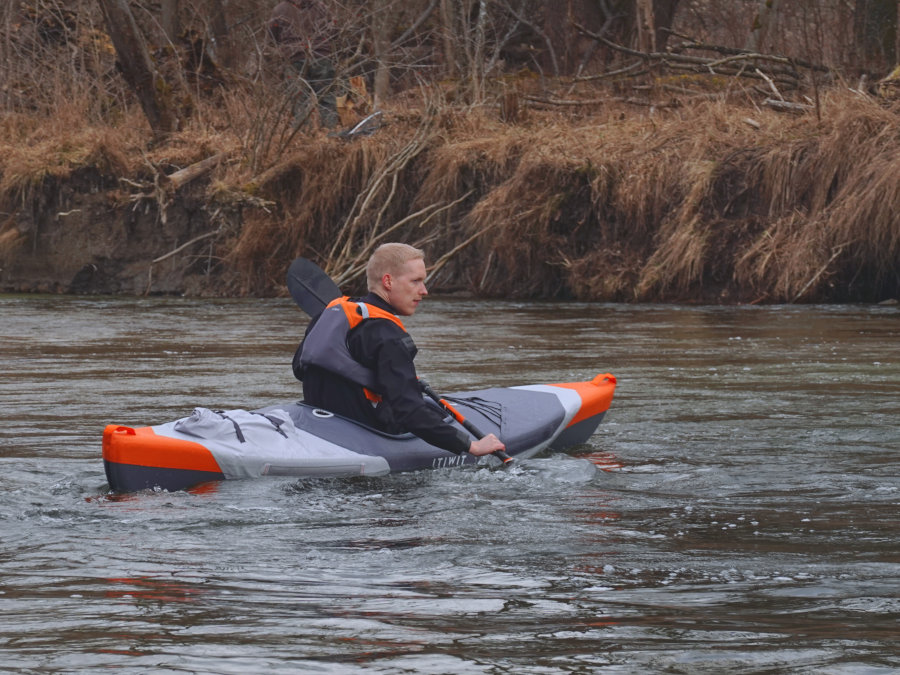
Dismantling the Itiwit x500
After paddling, the footrests and the seat can be easily removed from the boat. There is a recess in the seat. You reach in there and lift the seat. This way the backrest comes off the coaming without any problems.
You usually have to reassemble the kayak at home (at least inflate it slightly) and let it dry. The boat skin is quick-drying, so it is easy to wipe it dry with a towel. However, we do not consider the entire boat to be quick-drying for two reasons. First, the two carrying handles and four safety lines soak up water due to the material (especially the side safety lines). Second, you can’t wipe the footwell dry through the cockpit because you simply can’t reach it (unless you don’t make the interior footwell wet).
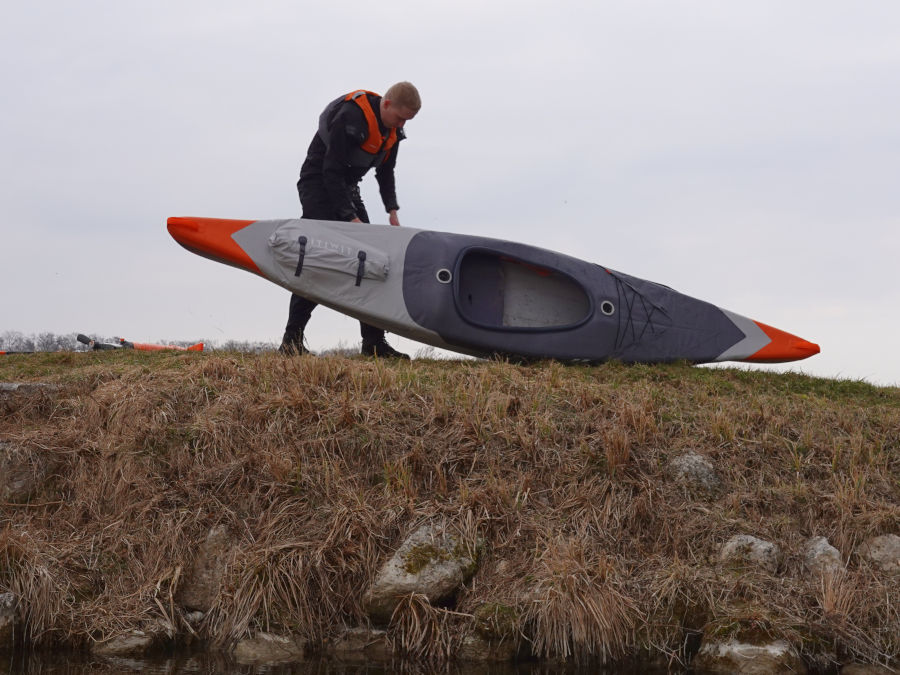
Due to the integrated cockpit with coaming, the PVC coating of the boat skin and the drop-stitch material, the kayak is not only bulkier but also stiffer when folded. This is especially noticeable in the off-season when the waters are still very cold.
The kayak should be folded in 4 equal parts so that it fits back in the backpack. The lower part of the backpack is coated so that the bottom of the backpack does not get soaked. So you only need to roughly wipe the folded kayak and pack it in the backpack.
Strengths and weaknesses of the Itiwit x500 kayak
The biggest strengths of the Itiwiti x500 are the very good paddling characteristics and the very simple and fast assembly. The kayak can be assembled within 5 min and you get a kayak that glides really well through the water. It comes closest to the paddling characteristics of a hard shell kayak among the inflatable and drop stitch kayaks.
The workmanship of the kayak makes a solid impression, but it doesn’t seem as high quality as more expensive inflatable kayaks. There are details (small holes in the luggage hatch, partially unclean gluing) where we would have wished for a cleaner finish. However, these do not indicate any functional impairments at first glance.
Advantages
innovative inflatable kayak (many things rethought) + very simple and fast assembly + very good and flexibly adjustable footrests + extremely good paddling characteristics for an inflatable kayak (ideal for experienced paddlers and sporty paddling beginners) + very good price-performance ratio + good transport backpack included (without problem 30 minutes transport on the back) + good stowage of luggage in the stern and bow + plenty of legroom for large people + robust boat skin ratio + good transport backpack included (can be transported on the back for 30 minutes without any problem) + good stowage of luggage in the stern and on the bow + plenty of space and legroom for tall people + robust boat skin + finally a full drop-stitch kayak with a cockpit (thus usable throughout the year, also for paddling near the coast)
Disadvantages
– kayak can not be wiped completely dry after the tour, but footwell and safety lines must dry – for small and fast flowing rivers too long and too little maneuverable – no kayak for absolute paddling beginners, who are also less agile and less sporty – more tippy than conventional inflatable kayaks (due to construction) – workmanship could be better in some places – no optional steering system available – little space and attachment points for luggage on multi-day trips (here D-rings on the canopy would have been handy) – only repair material but no repair kit (incl. glue) in the scope of delivery – luggage hatch not waterproof
Conclusion on the Decathlon Itiwit x500
We enjoy paddling the Itiwit x500 a lot because it runs really well on the water without much effort.
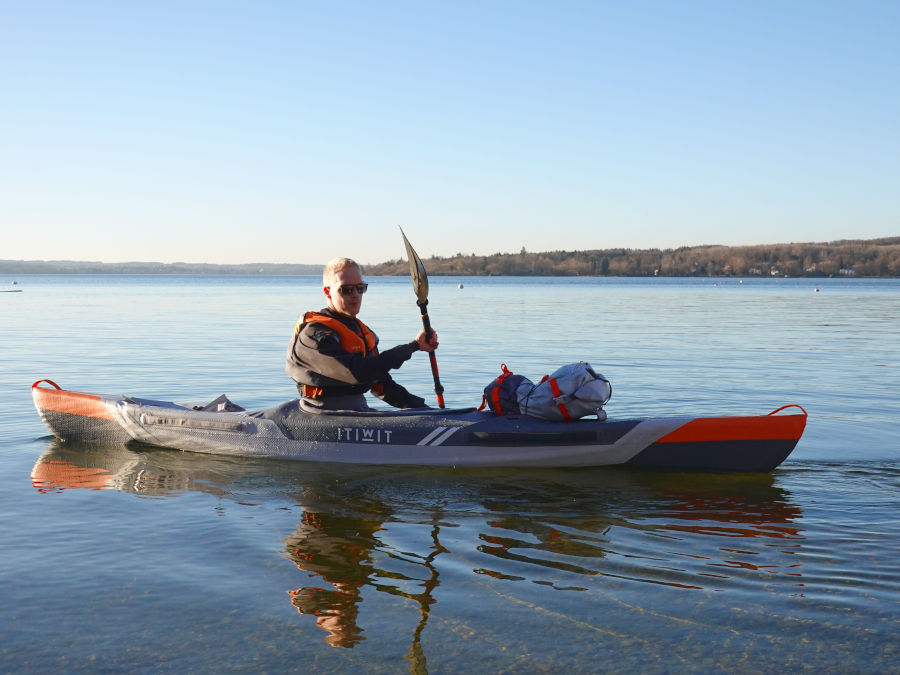
With the Itiwit x500, Decathlon addresses a very specific target group: Athletes who see kayaking as a sporting activity, and experienced paddlers who want to make only minor sacrifices in terms of paddling characteristics in an inflatable kayak. Both people are united by the need for easy transportability and storage. In addition, the x500 is very quick and easy to set up, so spontaneous and short paddling trips are always justified.
Recreational paddlers or leisurely touring paddlers are, in our view, better off with another inflatable boat. The Itiwit x500 is not a kayak to lean into and paddle along. It is also not a kayak to chill out on the water, but a sports equipment. You can take it on leisurely tours, but with the appropriate posture.
The Itiwit x500 will definitely still take on numerous tours and expand or update the test article with long-term experiences at the latest at the end of the season.
The lower hull of the drop-stitch kayak is very well shaped. There is a clear keel line between the bow and stern, forming a V-shape. This promises a good paddling characteristics on the water.
